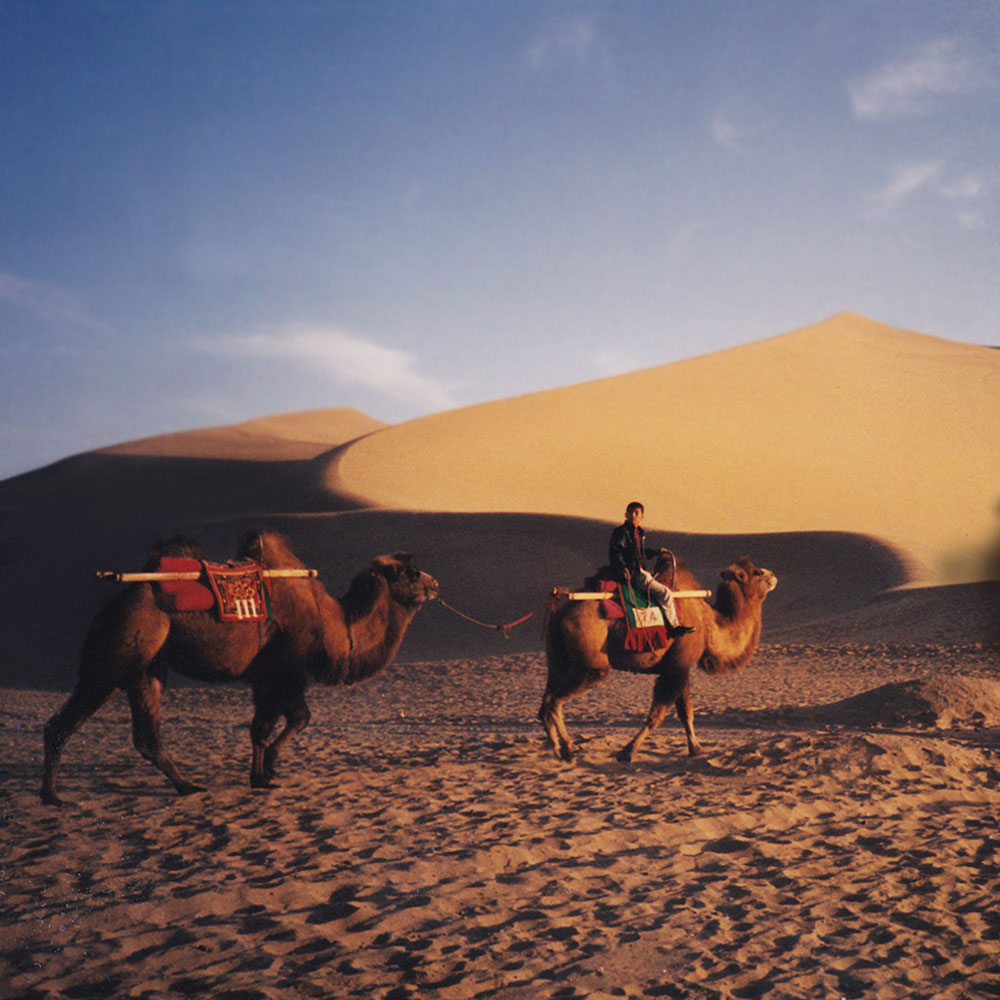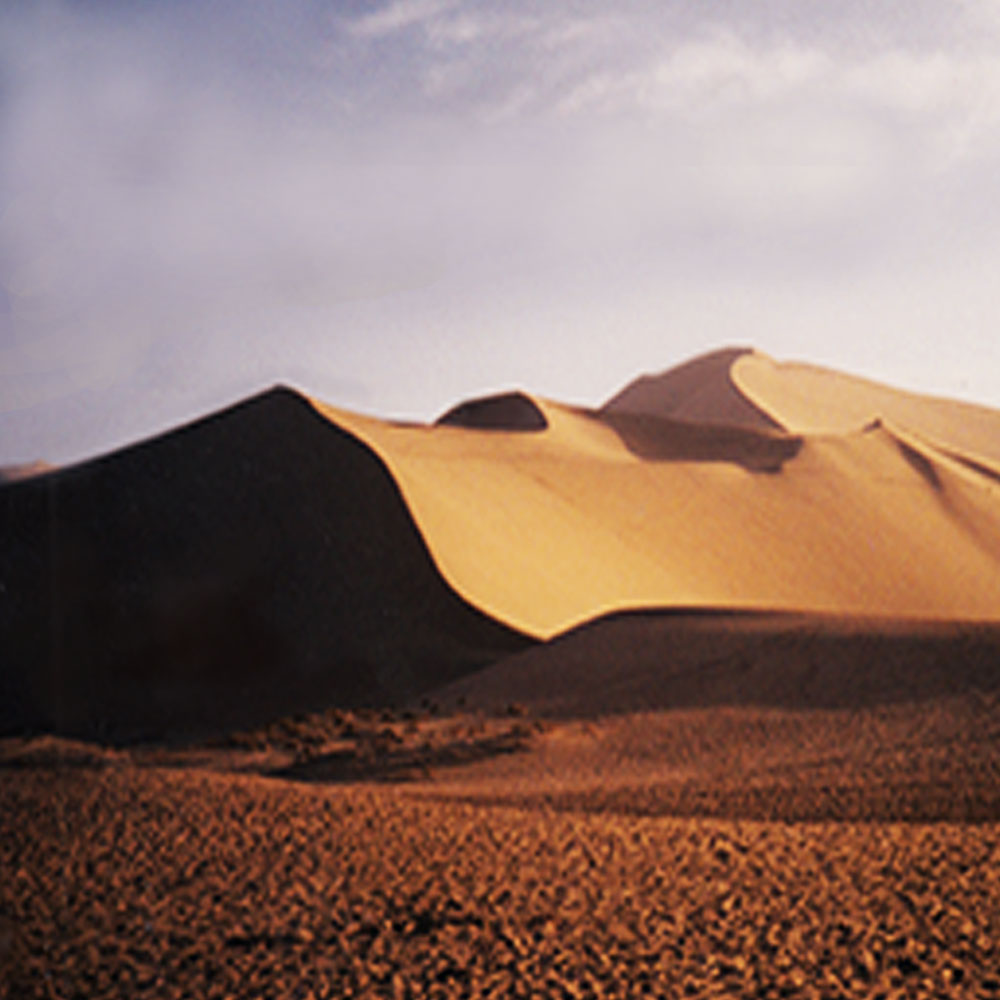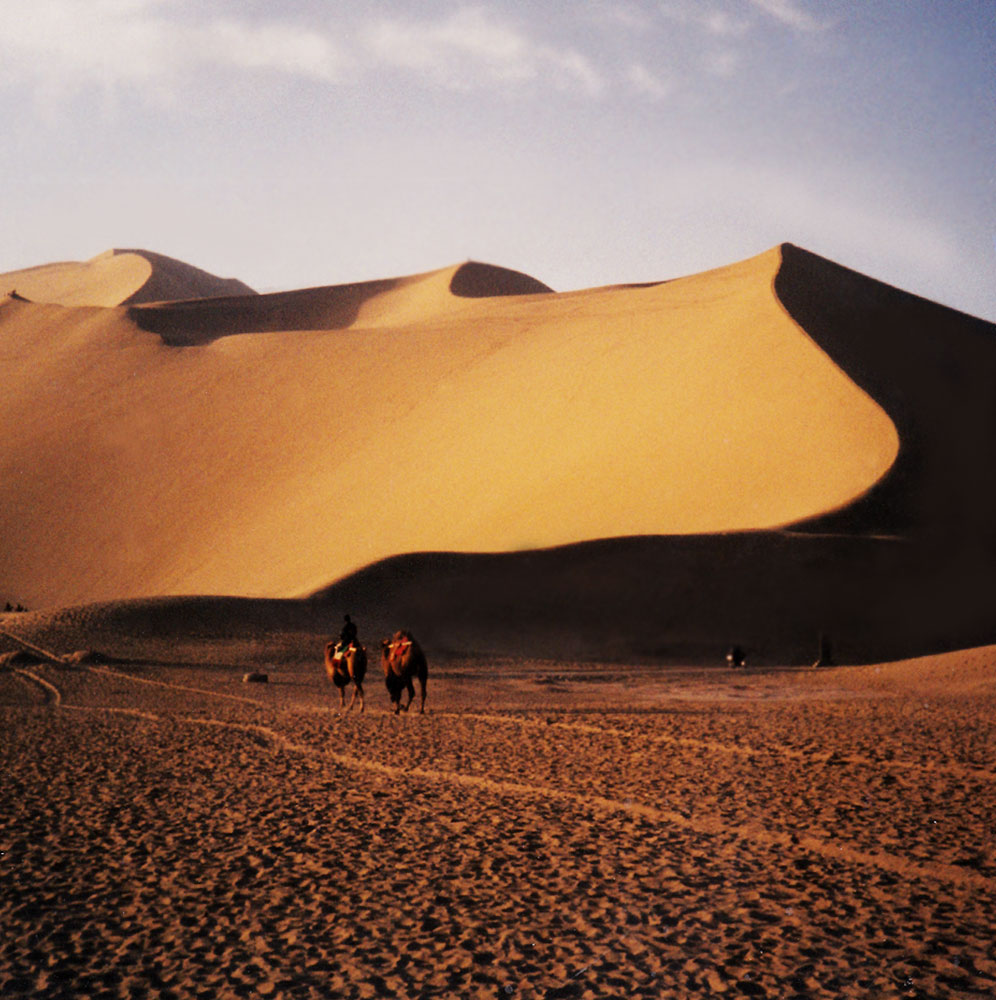People's Republic of China
China, officially known as the People's
Republic of China (PRC), is the largest country in East Asia.
With a population exceeding 1.4 billion, it is the second-most
populous country in the world, following India. China spans the
equivalent of five time zones and shares land borders with
fourteen countries. Following the Chinese Civil War, Mao
Zedong's Communist forces achieved victory over the Kuomintang
forces led by Generalissimo Chiang Kai-shek, who subsequently
fled to Taiwan. Mao Zedong proclaimed the founding of the
People's Republic of China on October 1, 1949.
Xi'an became the cultural and political
center of China during the Zhou Dynasty, which lasted from 1046
to 256 BC. As China’s first ancient capital, Xi'an is the
starting point of the Silk Road and is famously home to the
Terracotta Army and the tomb of Emperor Qin Shi Huang. China was
unified for the first time under the Qin Dynasty, which lasted
from 221 to 206 BC. The first emperor of China, Qin Shi Huang,
commissioned the construction of the Terracotta Army and his
mausoleum just east of Xi'an almost immediately after ascending
to the throne. The original city wall of Xi'an began
construction in 194 BC and took four years to complete.
Furthermore, the Giant Wild Goose Pagoda was built starting in
652 AD. This pagoda, which stands at 64 meters (approximately
209.97 feet) tall, was constructed to store translations of
Buddhist sutras that Xuanzang brought back from India. During
the Ming Dynasty, a new city wall was built in 1370, and it
still remains intact today.
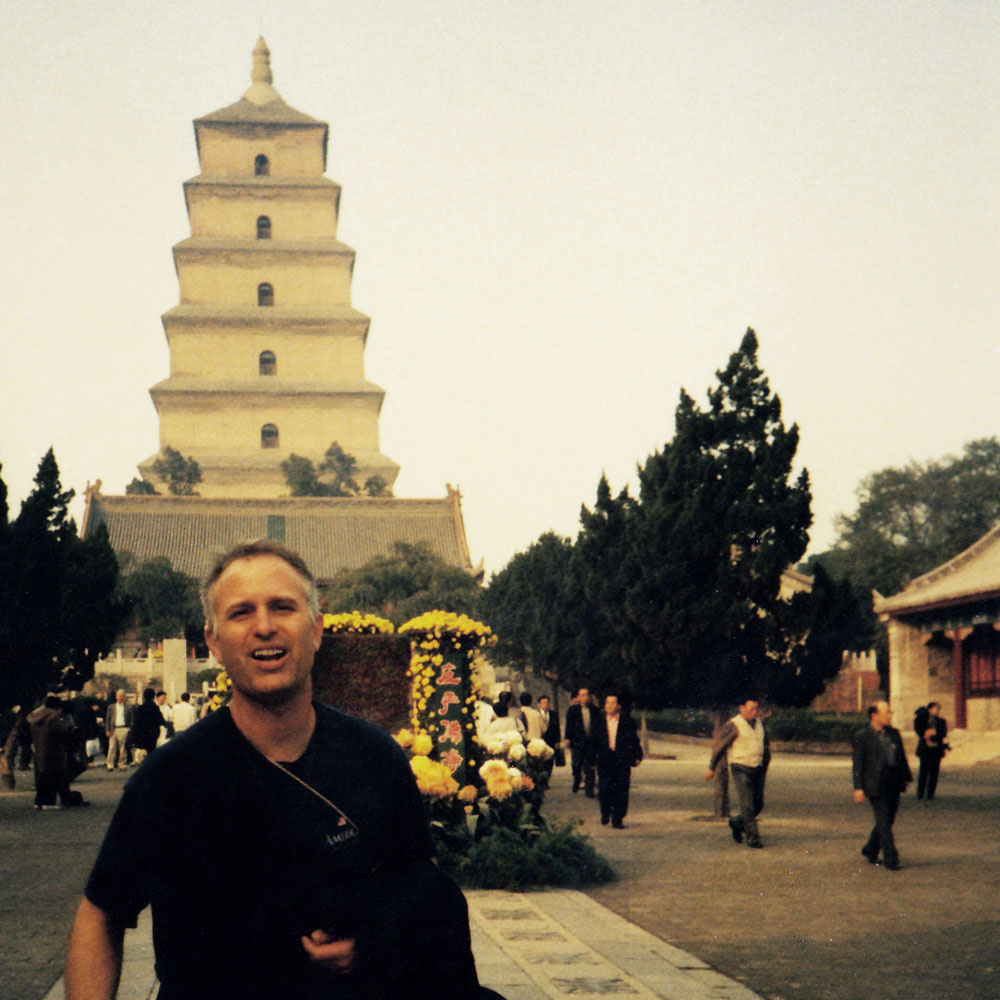 Wild Goose Pagoda, Tang dynasty, built in 648 AD,
64 m (209.97 ft) in height, built to store the translations of
Buddhist sutras obtained from India by Xuanzang, Xi'an, Shaanxi
Province, China
Wild Goose Pagoda, Tang dynasty, built in 648 AD,
64 m (209.97 ft) in height, built to store the translations of
Buddhist sutras obtained from India by Xuanzang, Xi'an, Shaanxi
Province, China
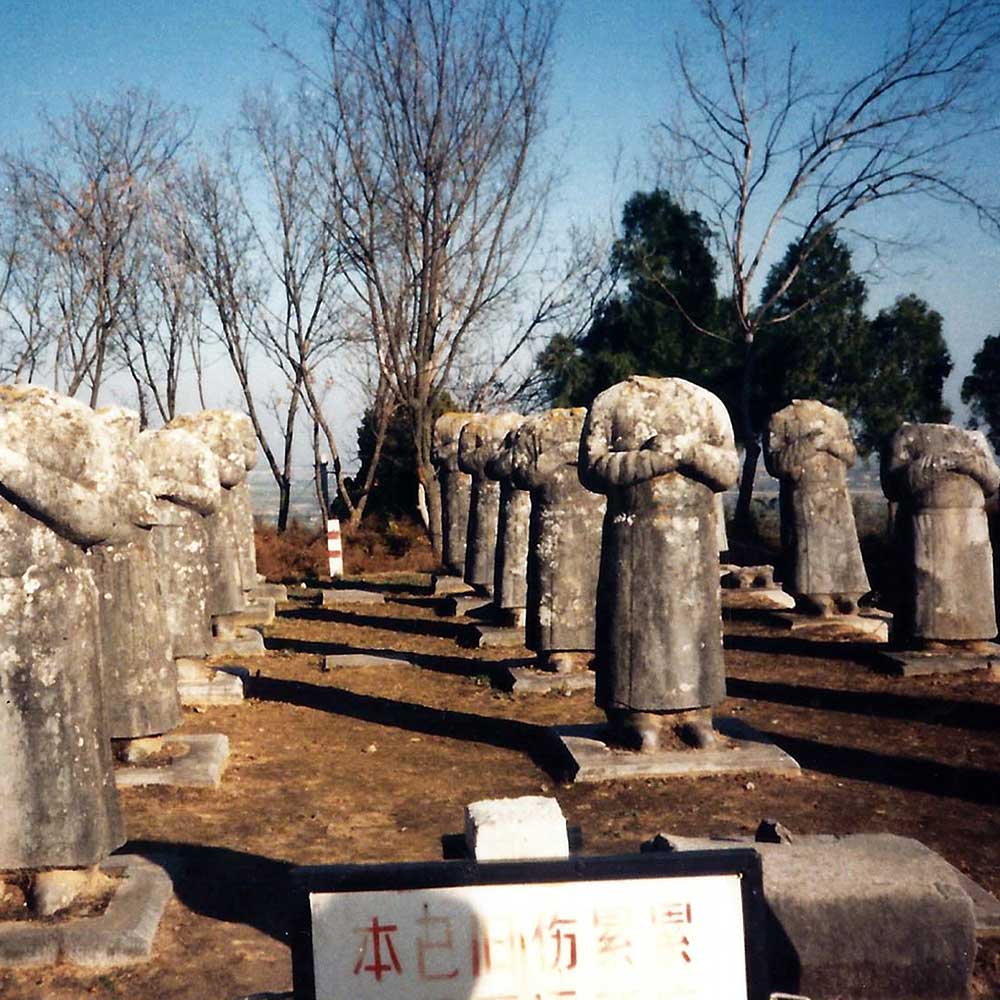 Qian Mausoleum, Tomb of Kao Tsung, (53 miles)
northwest from Xi'an, Sixty-one Headless Vassals Figures
sculpted in the 680s represents the "far-reaching power and
international standing" of The Tang dynasty (618–907 AD),
Shaanxi Province, China
Qian Mausoleum, Tomb of Kao Tsung, (53 miles)
northwest from Xi'an, Sixty-one Headless Vassals Figures
sculpted in the 680s represents the "far-reaching power and
international standing" of The Tang dynasty (618–907 AD),
Shaanxi Province, China
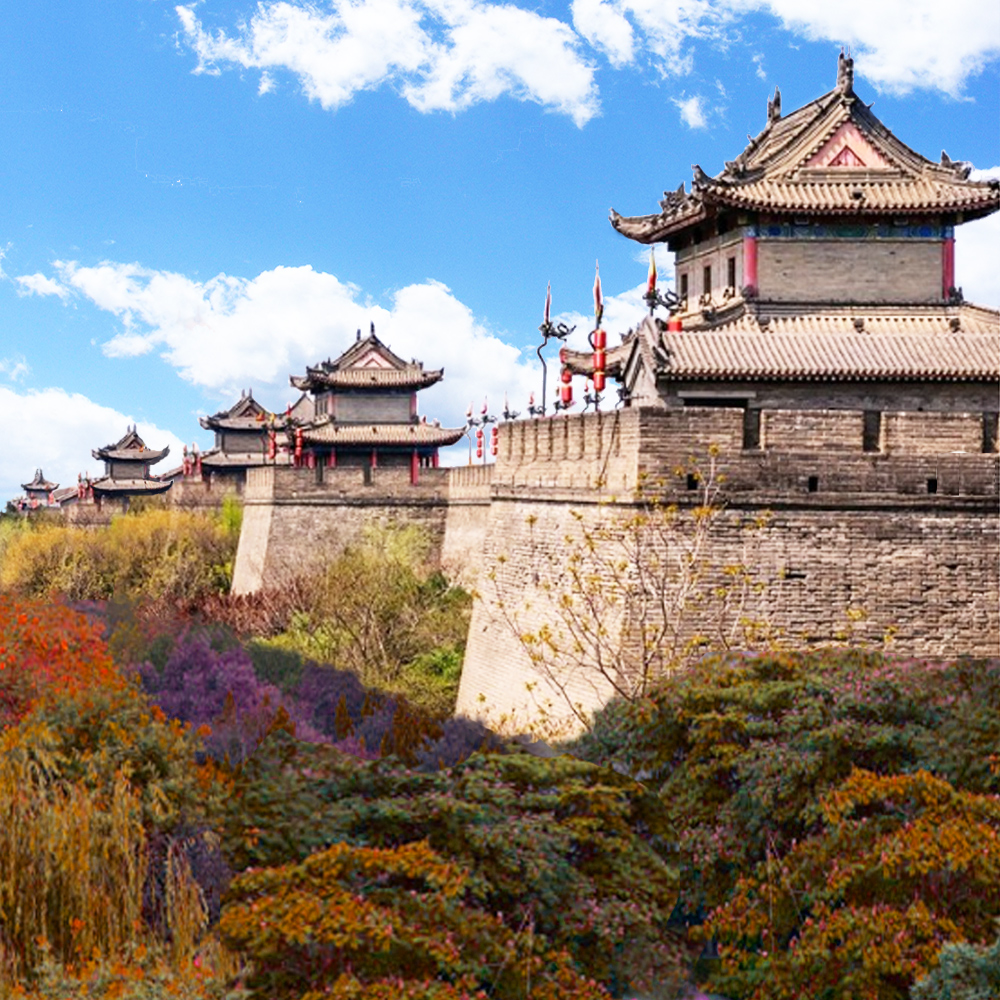 Xi'an City Wall built in 1368 AD by the Emperor of
the Ming Dynasty (1368-1644 AD), the largest fortified ancient
military defensive systems in the world. Xi'an, Shaanxi
Province, China
Xi'an City Wall built in 1368 AD by the Emperor of
the Ming Dynasty (1368-1644 AD), the largest fortified ancient
military defensive systems in the world. Xi'an, Shaanxi
Province, China
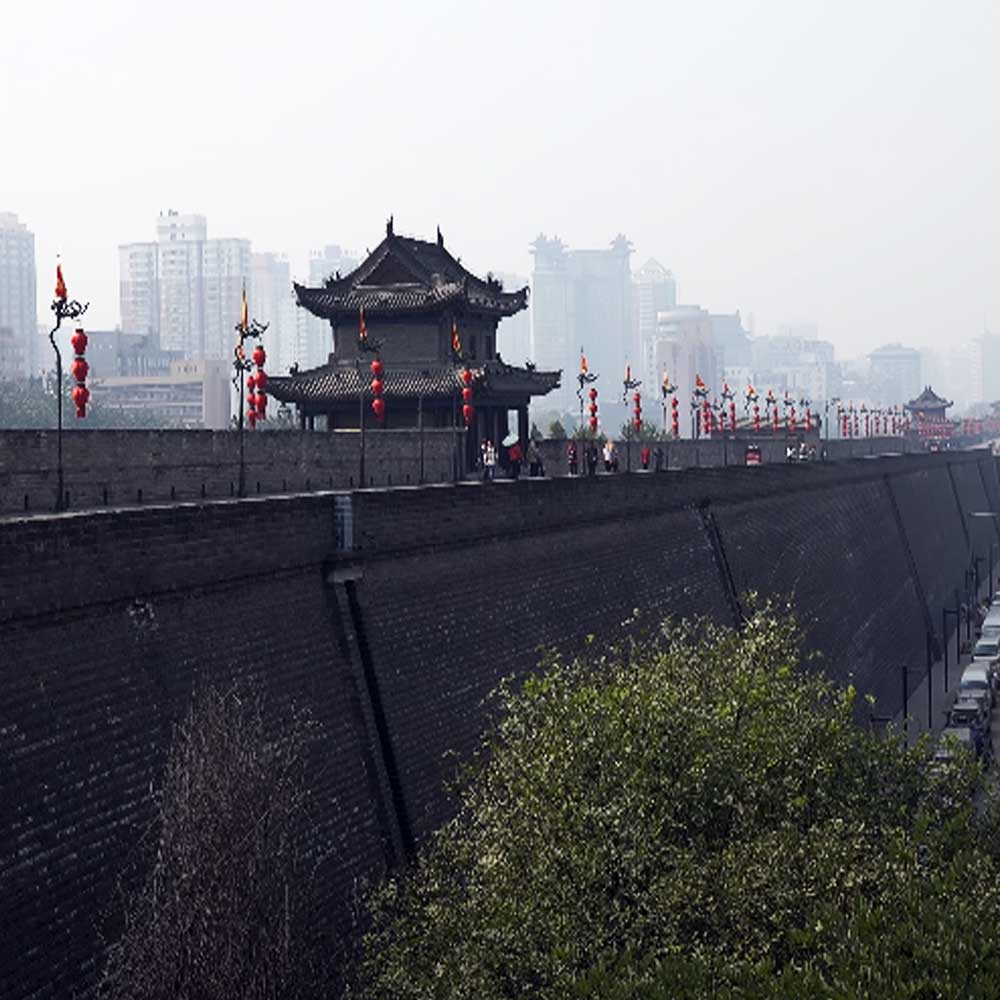 Xi'an City Wall is on the tentative list of UNESCO's
World Heritage Site, Xi'an, Shaanxi Province, China
Xi'an City Wall is on the tentative list of UNESCO's
World Heritage Site, Xi'an, Shaanxi Province, China
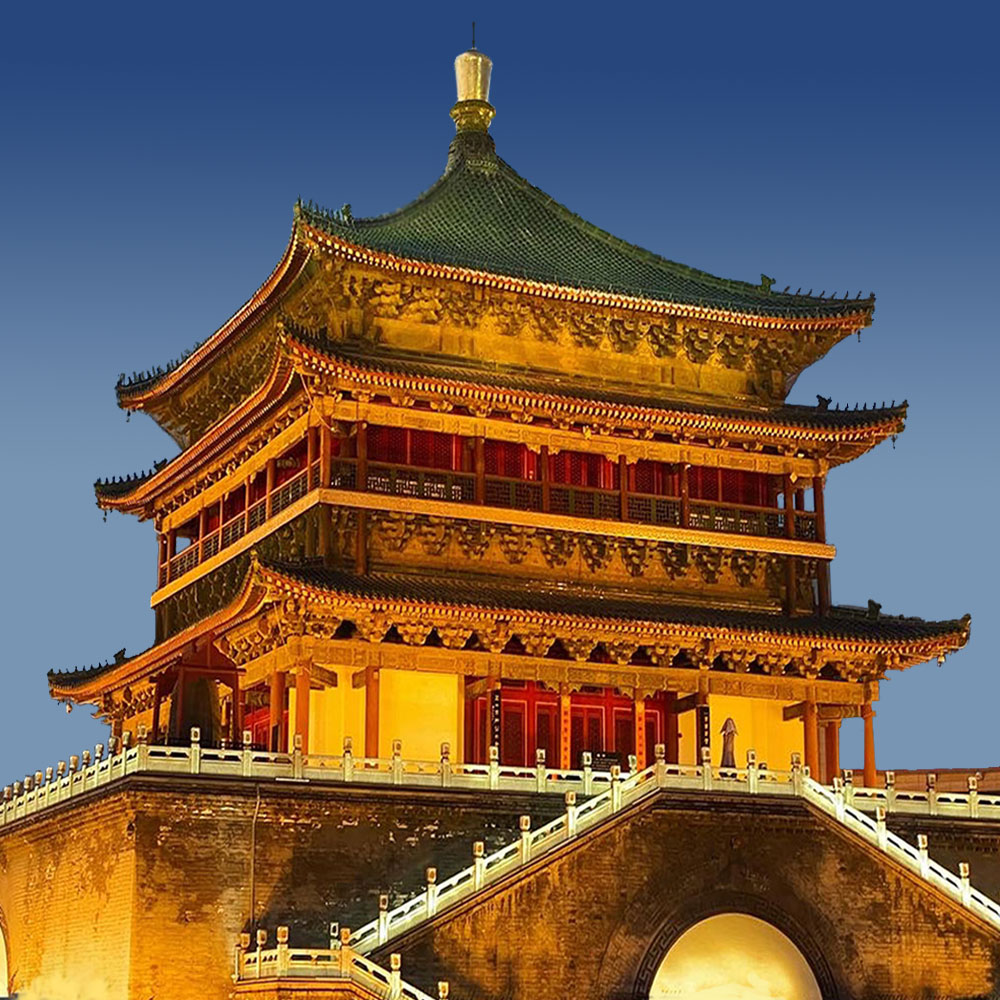 The Bell Tower of Xi'an, located at the city center
of downtown Xi'an, height: 36 meters (118 feet), built in 1384
during the early Ming Dynasty (1368-1644 AD), Xi'an, Shaanxi
Province, China
The Bell Tower of Xi'an, located at the city center
of downtown Xi'an, height: 36 meters (118 feet), built in 1384
during the early Ming Dynasty (1368-1644 AD), Xi'an, Shaanxi
Province, China
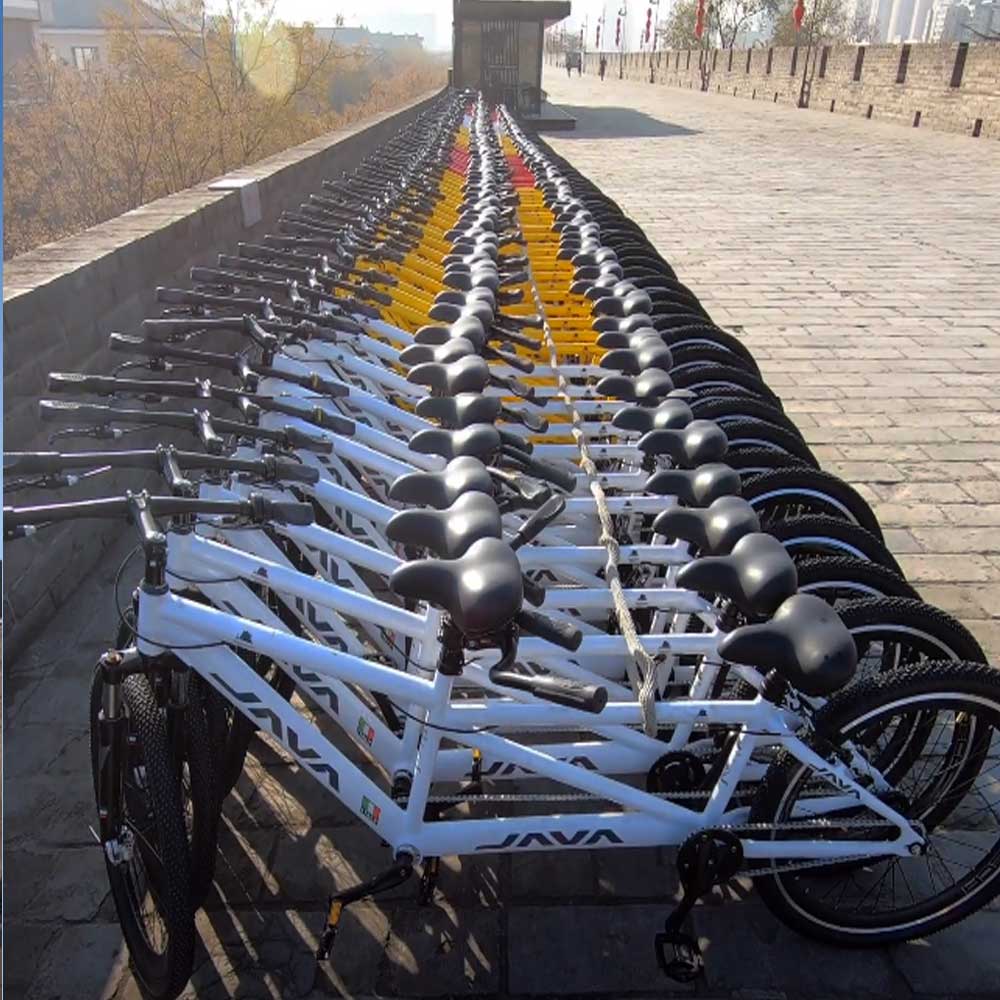 Bicycles to ride the City Wall for a incredible view
of the city, Xi'an, Shaanxi Province, China
Bicycles to ride the City Wall for a incredible view
of the city, Xi'an, Shaanxi Province, China
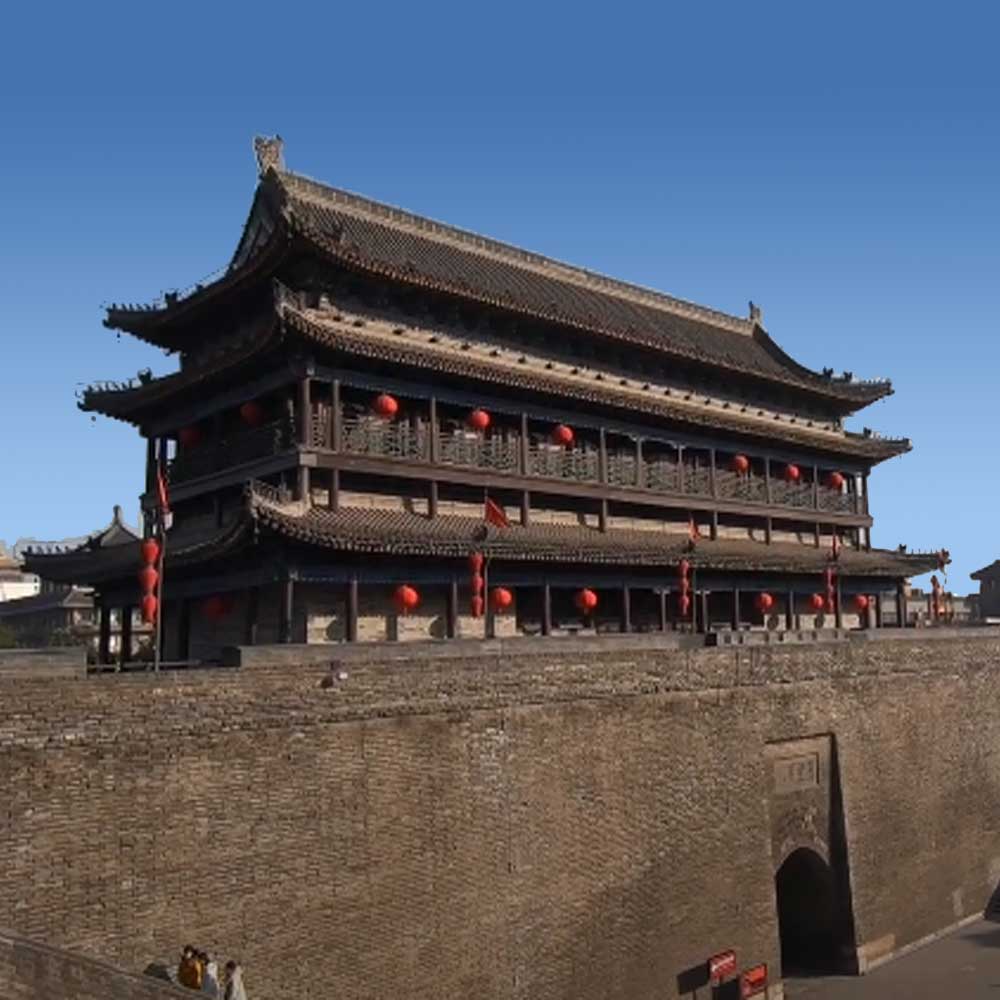 South Gate barbican entrance of Xi'an built by the
Emperor of the Ming Dynasty (1368-1644 AD), Xi'an, Shaanxi
Province, China
South Gate barbican entrance of Xi'an built by the
Emperor of the Ming Dynasty (1368-1644 AD), Xi'an, Shaanxi
Province, China
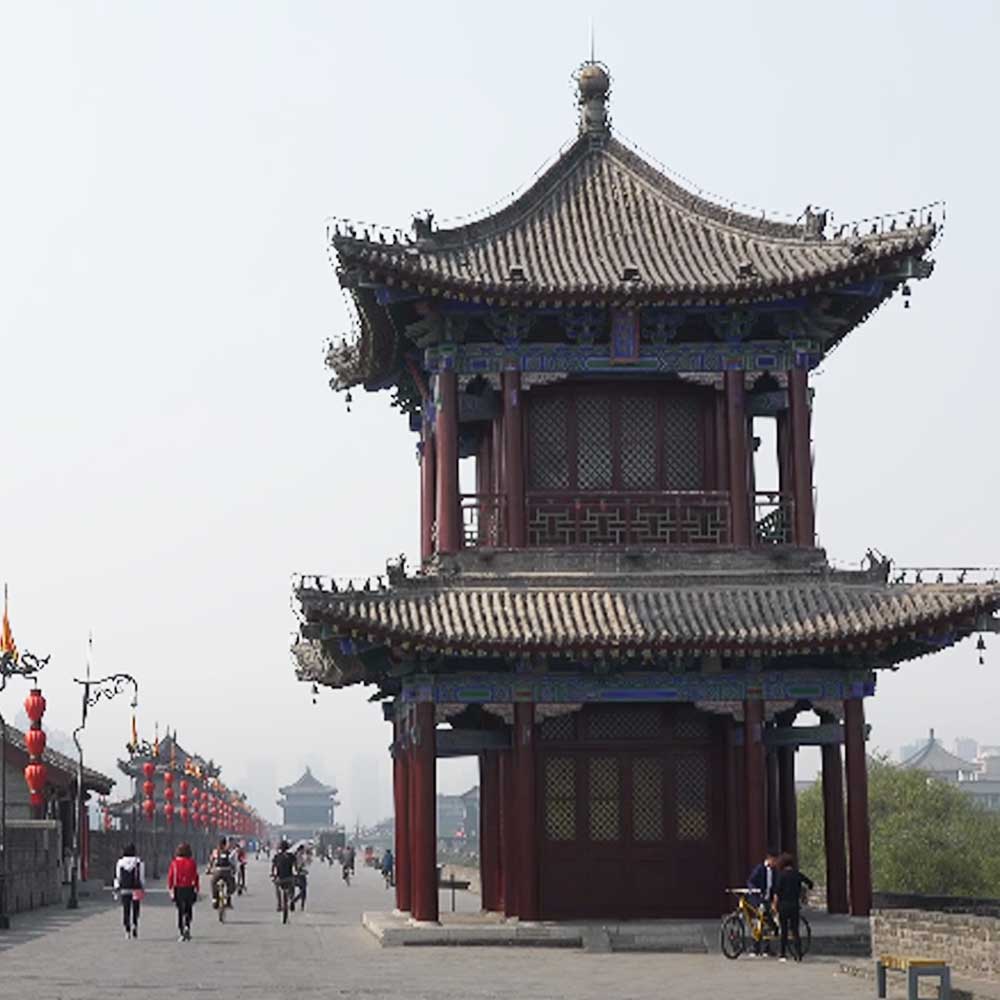 One of many fortified Xian city wall pagoda watch
towers, built during the early Ming Dynasty (1368-1644 AD),
Xi'an, Shaanxi Province, China
One of many fortified Xian city wall pagoda watch
towers, built during the early Ming Dynasty (1368-1644 AD),
Xi'an, Shaanxi Province, China
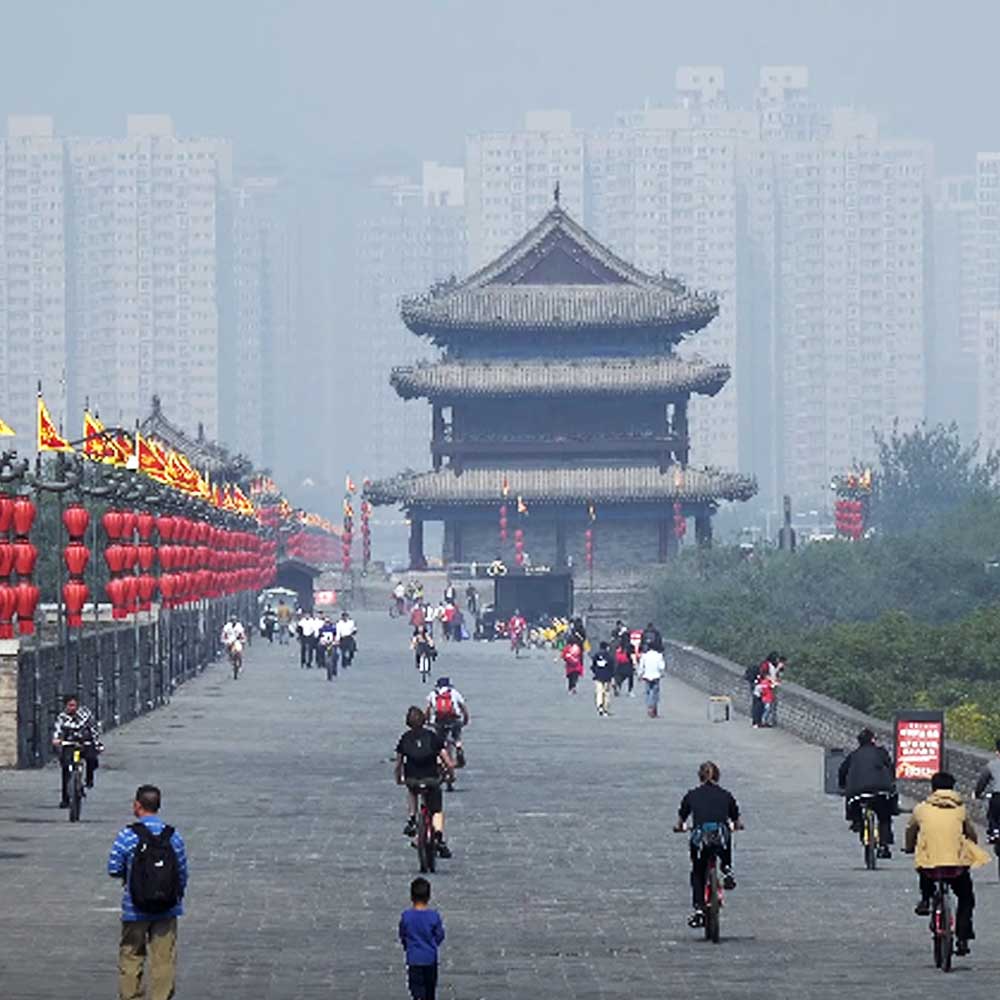 Either on foot or bicycle the city wall has an
incredible view of Xi'an, Shaanxi Province, China
Either on foot or bicycle the city wall has an
incredible view of Xi'an, Shaanxi Province, China
THE TERRACOTTA ARMY
One of the most significant archaeological
excavations since the discovery of King Tut's tomb in 1922, this
site dates back to the Qin Dynasty (259–210 BC). It was
specifically designed to protect the tomb of China’s first
emperor. Around 700,000 workers dedicated nearly thirty years to
this monumental project near the city of Xi'an. Since the
excavation began in 1974, over 8,000 figures have been
uncovered, showcasing the extraordinary craftsmanship of an era
more than two thousand years ago. Remarkably, no two figures are
exactly alike; each one varies in expression, clothing, and
hairstyle. The Mausoleum of Qin Shi Huang is located next to
this site and remains unopened due to concerns about preserving
the valuable artifacts inside the tomb, particularly the
potential damage from exposure to air and moisture.
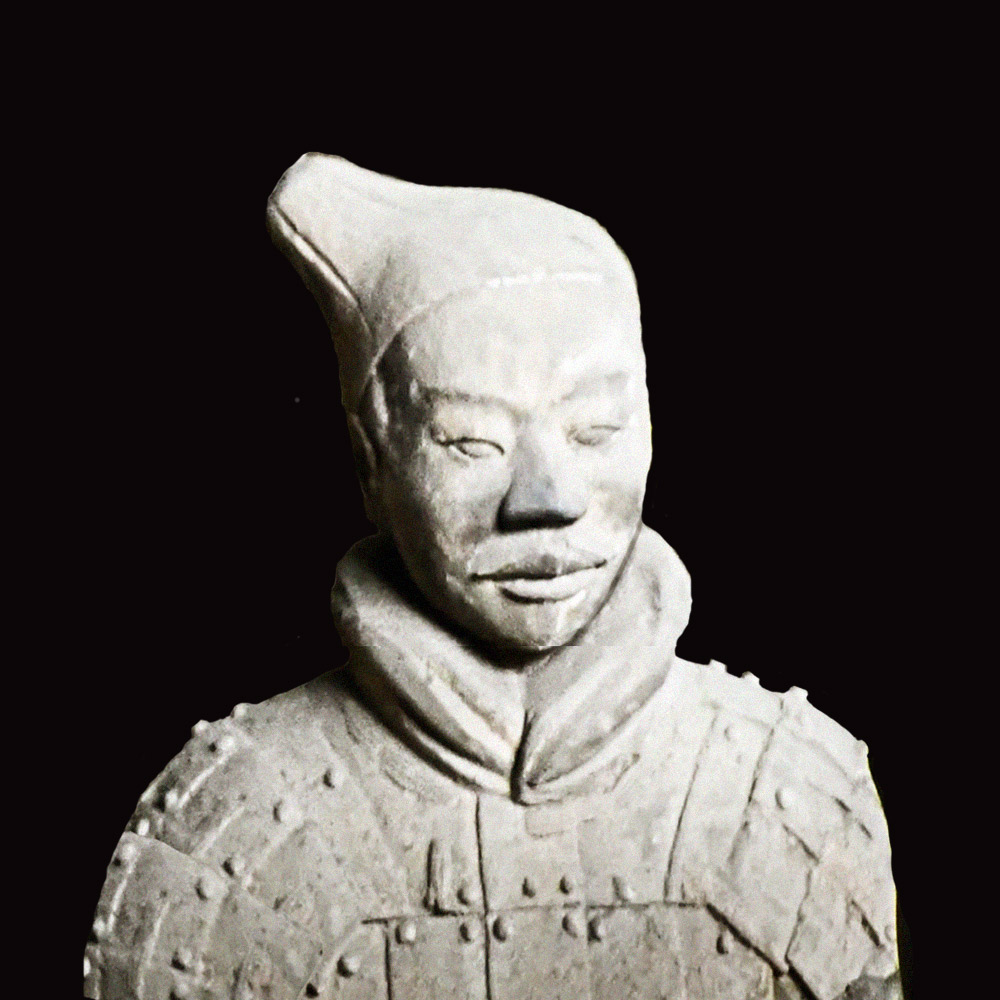 The Terracotta Army is a collection of terracotta
sculptures depicting the armies of Qin Shi Huang (259–210 BC),
the first emperor of China. All the figures, date from
approximately (210–209 BCE), Lintong District, Xi'an, Shaanxi
Province, China
The Terracotta Army is a collection of terracotta
sculptures depicting the armies of Qin Shi Huang (259–210 BC),
the first emperor of China. All the figures, date from
approximately (210–209 BCE), Lintong District, Xi'an, Shaanxi
Province, China
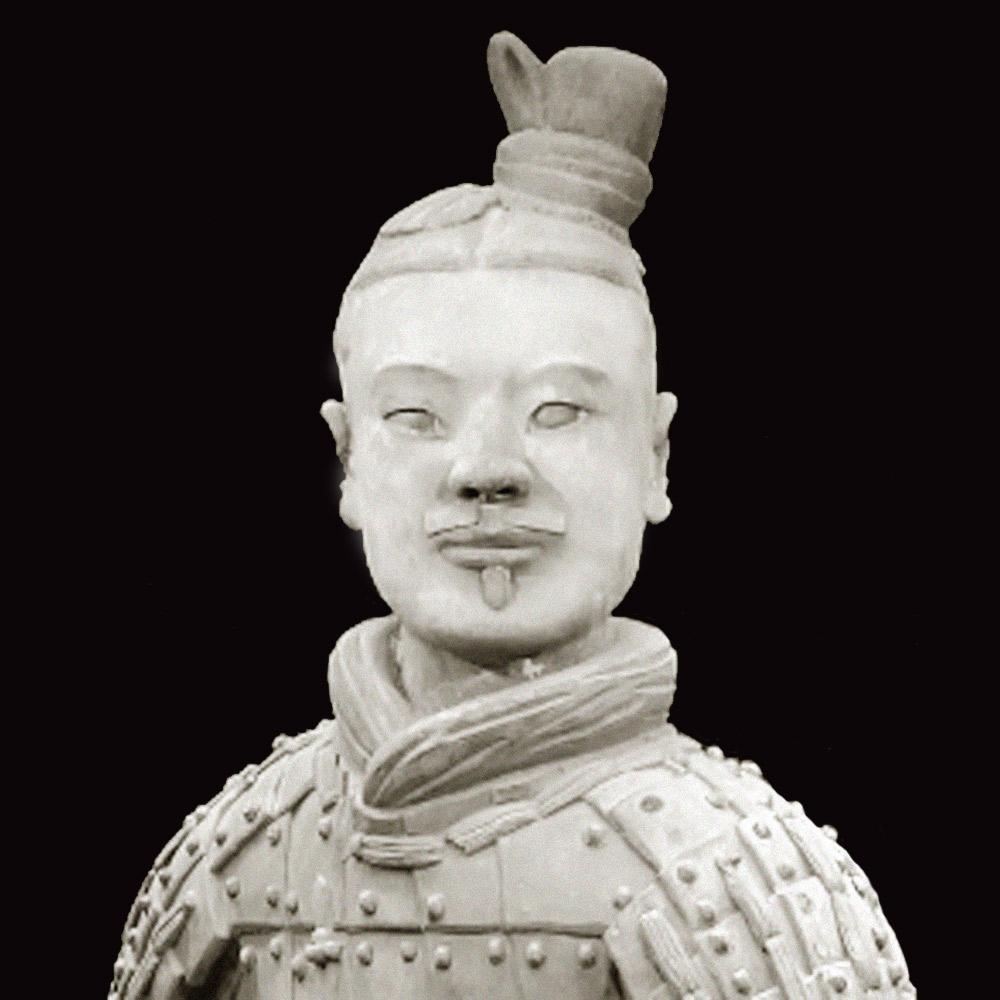 There are three pits containing the Terracotta Army
of more than 8,000 soldiers, 130 chariots with 520 horses, and
150 cavalry horses, Not one figure is the same.
There are three pits containing the Terracotta Army
of more than 8,000 soldiers, 130 chariots with 520 horses, and
150 cavalry horses, Not one figure is the same.
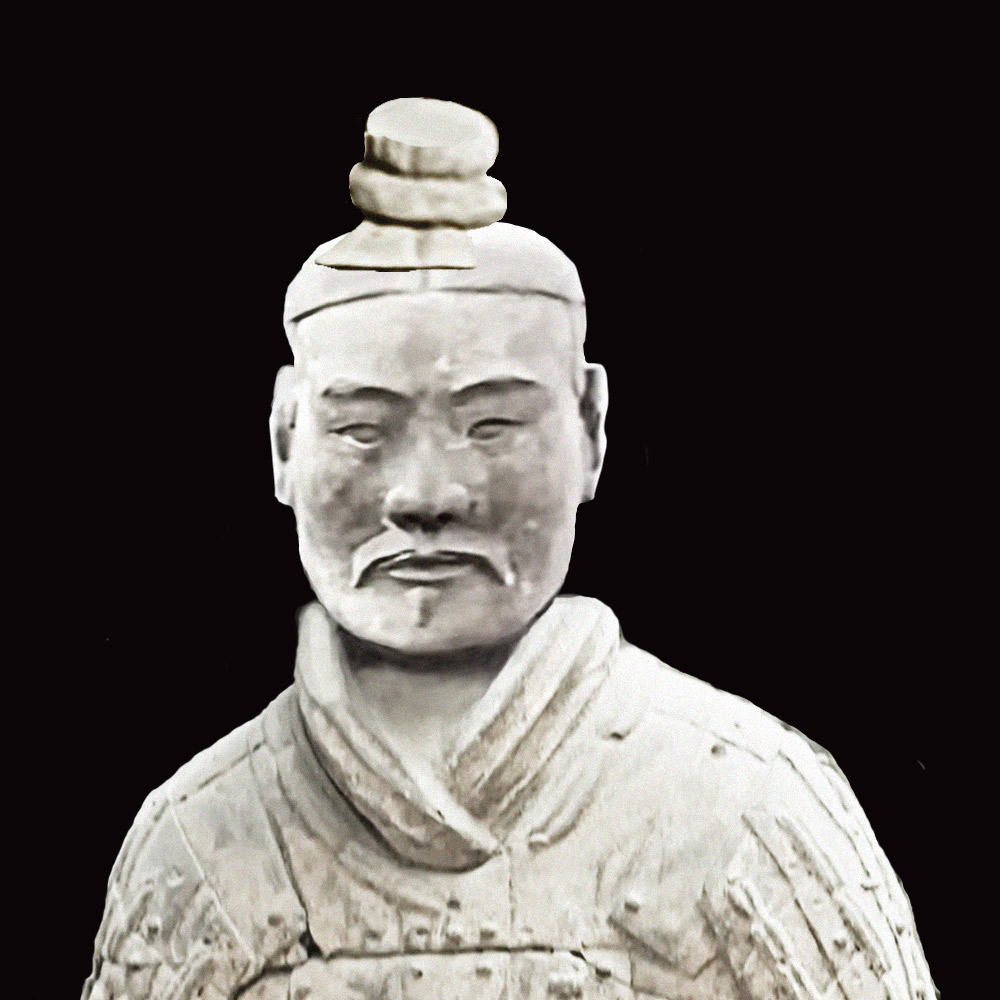 The Terracotta Army were discovered in 1974 by local
farmers. It is funerary art buried with the emperor in (210–209
BCE) with the purpose of protecting him in his afterlife.
The Terracotta Army were discovered in 1974 by local
farmers. It is funerary art buried with the emperor in (210–209
BCE) with the purpose of protecting him in his afterlife.
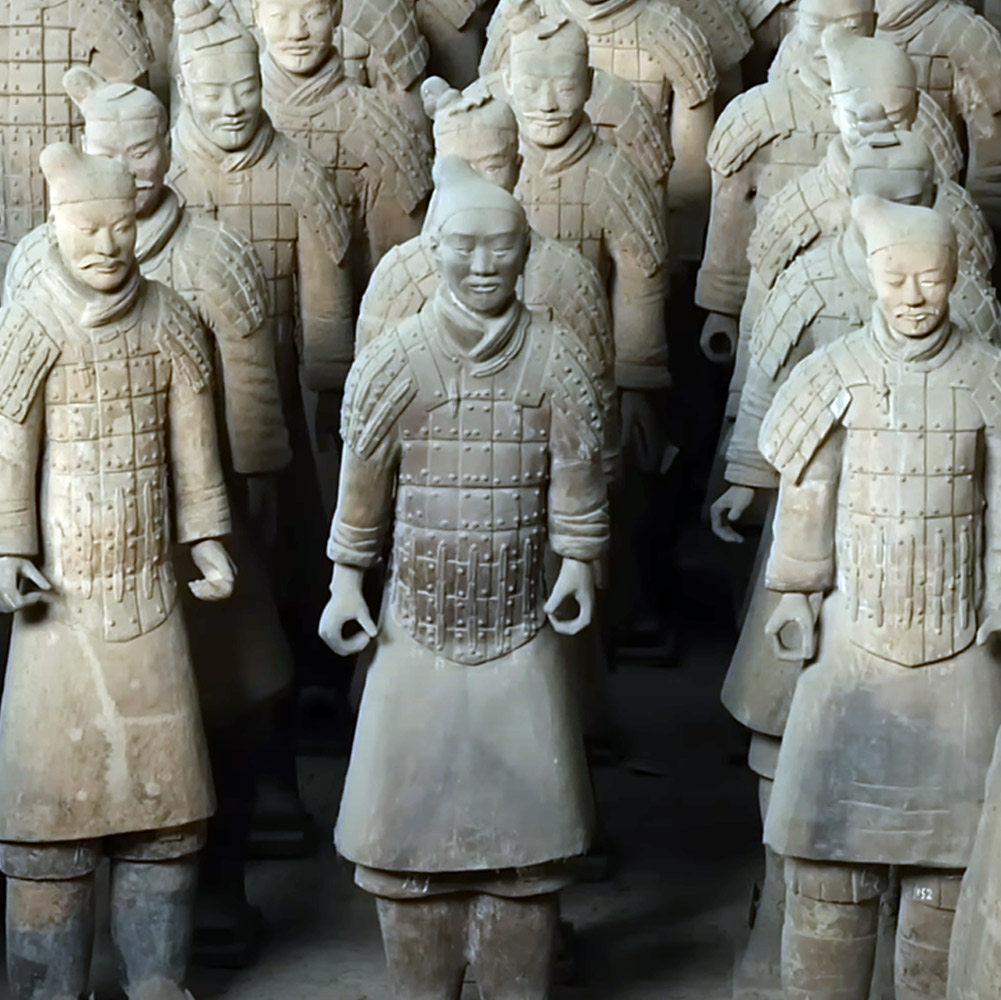 The Terracotta Army also includes warriors,
infantrymen, chariots, and other non-military figures, also held
real weapons such as crossbows, daggers, maces, spears, and
swords.
The Terracotta Army also includes warriors,
infantrymen, chariots, and other non-military figures, also held
real weapons such as crossbows, daggers, maces, spears, and
swords.
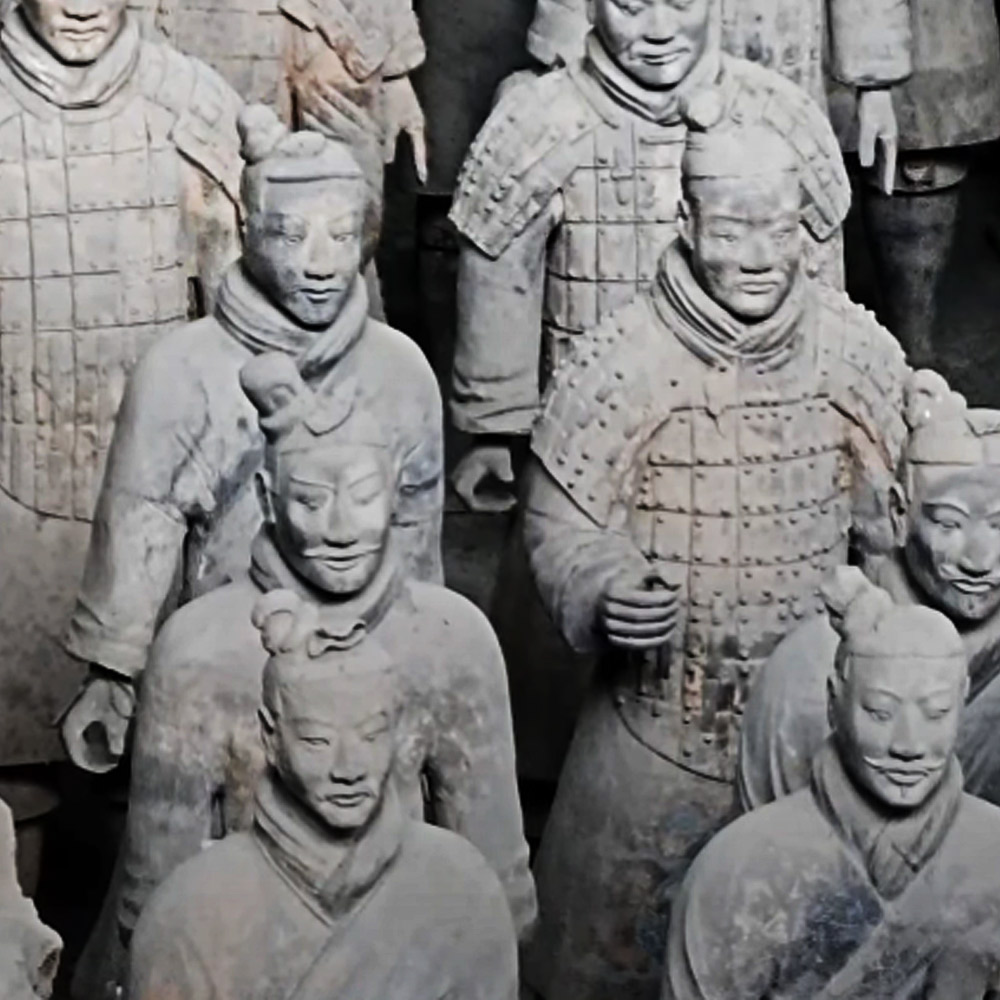 The Terracotta Army was added to the United Nations
Educational, Scientific and Cultural Organization World Heritage
list in 1987.
The Terracotta Army was added to the United Nations
Educational, Scientific and Cultural Organization World Heritage
list in 1987.
 The Terracotta Army is also displayed in a museum
called the Museum of Qin Terra-cotta Warriors and Horses,
Lintong District, Xi'an, Shaanxi Province, China
The Terracotta Army is also displayed in a museum
called the Museum of Qin Terra-cotta Warriors and Horses,
Lintong District, Xi'an, Shaanxi Province, China
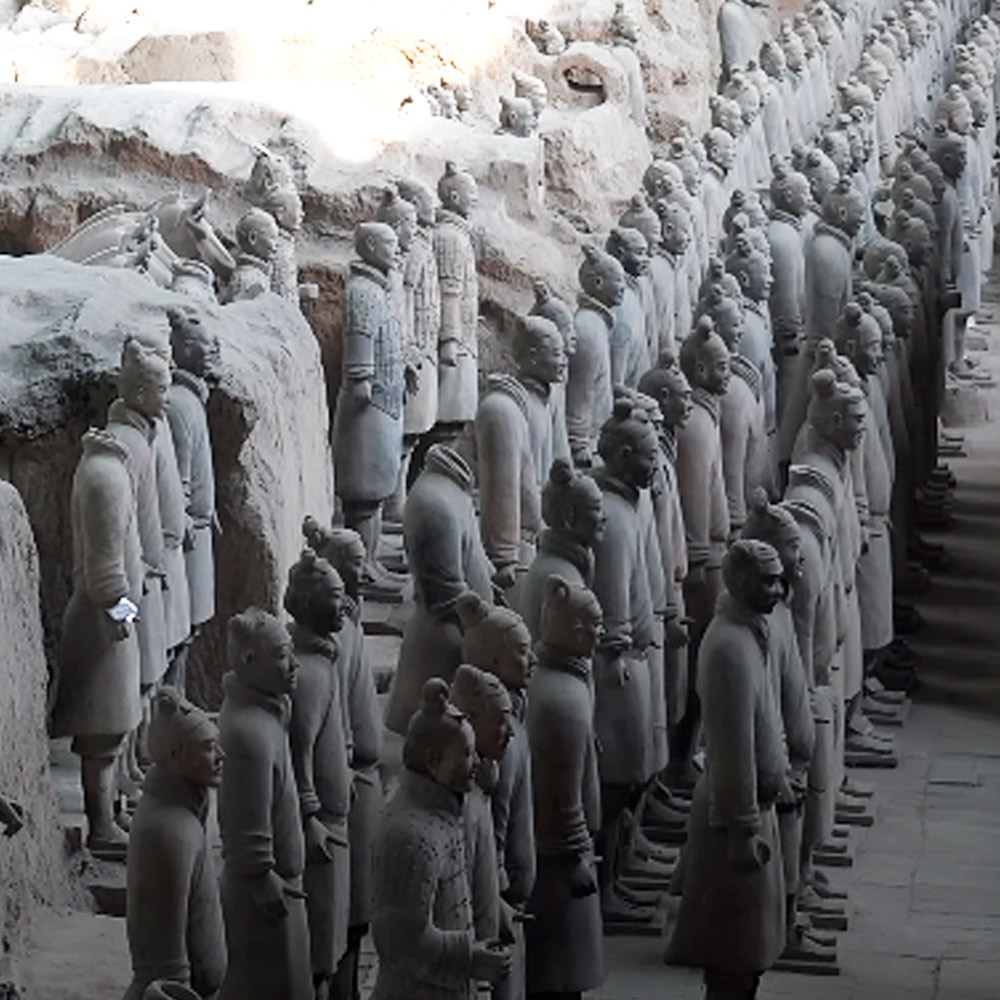 Other, non-military terracotta figures have since
been found in other pits, including those of officials,
acrobats, strongmen, and musicians, the figures like all the
rest date from approximately (210–209 BCE)
Other, non-military terracotta figures have since
been found in other pits, including those of officials,
acrobats, strongmen, and musicians, the figures like all the
rest date from approximately (210–209 BCE)
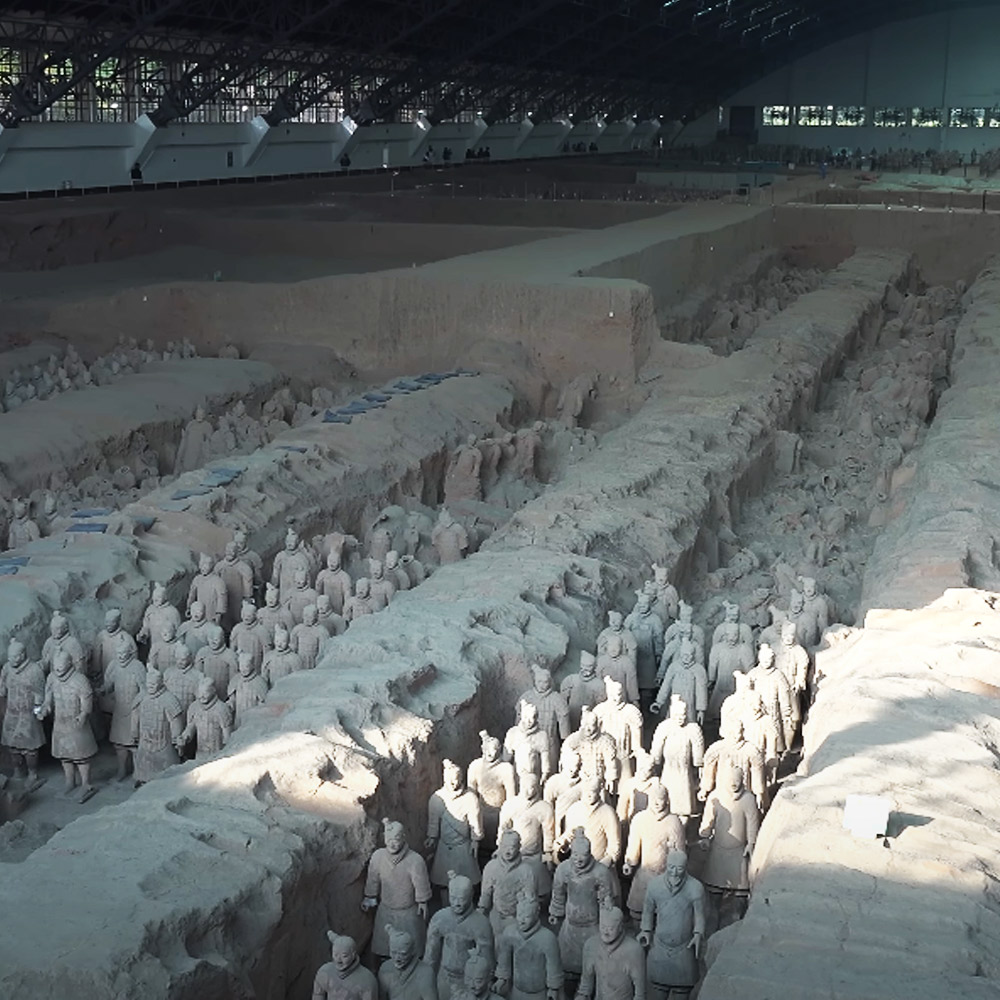 The Terracotta Army necropolis was constructed as a
microcosm of the emperor's imperial palace.
The Terracotta Army necropolis was constructed as a
microcosm of the emperor's imperial palace.
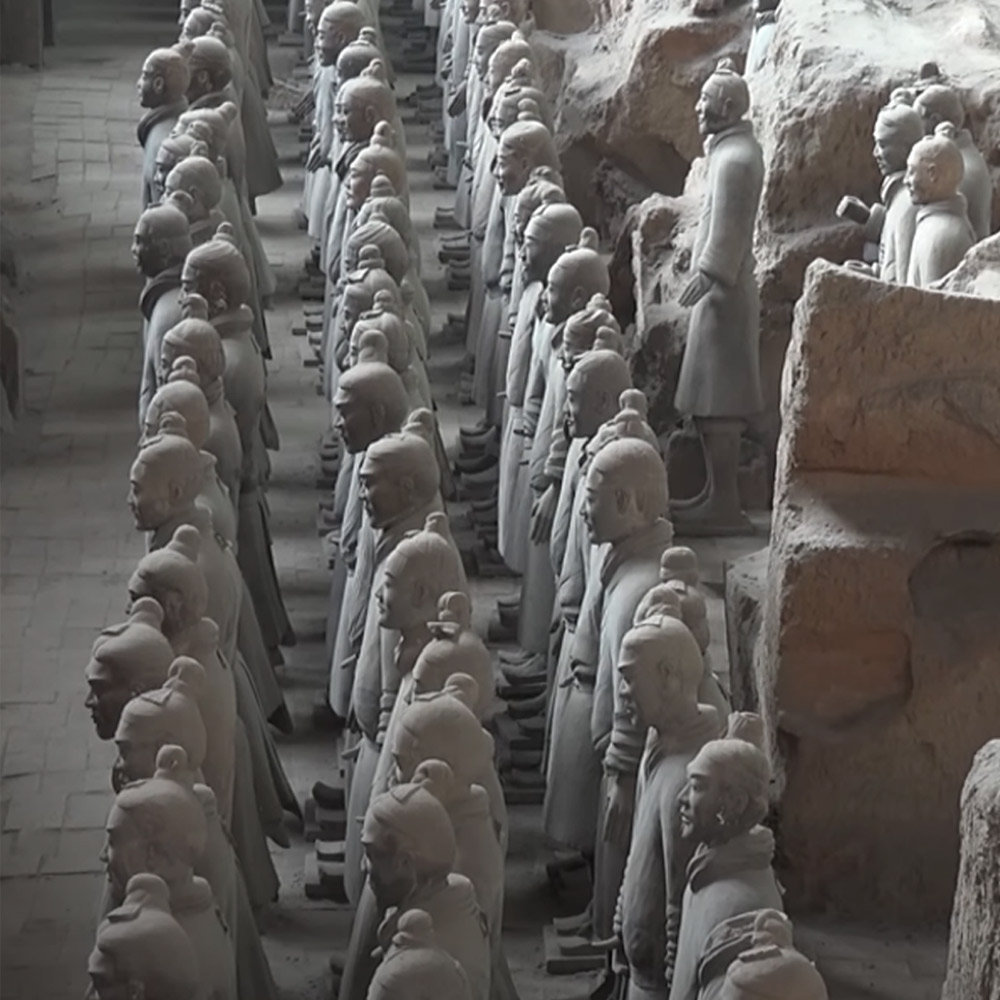 Originally, the figures were painted with a colored
lacquer finish using red, green, blue, purple, brown, pink,
white and black.
Originally, the figures were painted with a colored
lacquer finish using red, green, blue, purple, brown, pink,
white and black.
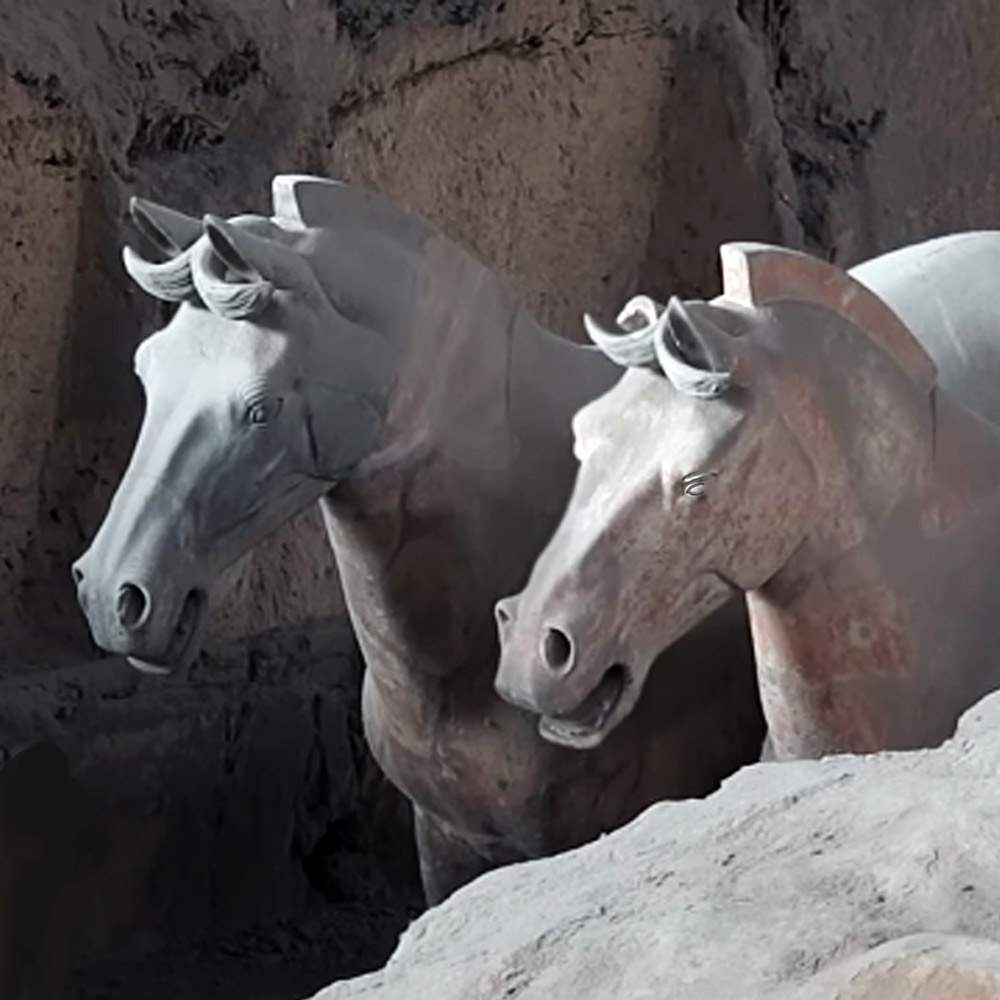 Terracotta Warriors museum includes hundreds of
horses that were buried with Qin Shi Huang. The horse figures,
date from approximately (210–209 BCE).
Terracotta Warriors museum includes hundreds of
horses that were buried with Qin Shi Huang. The horse figures,
date from approximately (210–209 BCE).
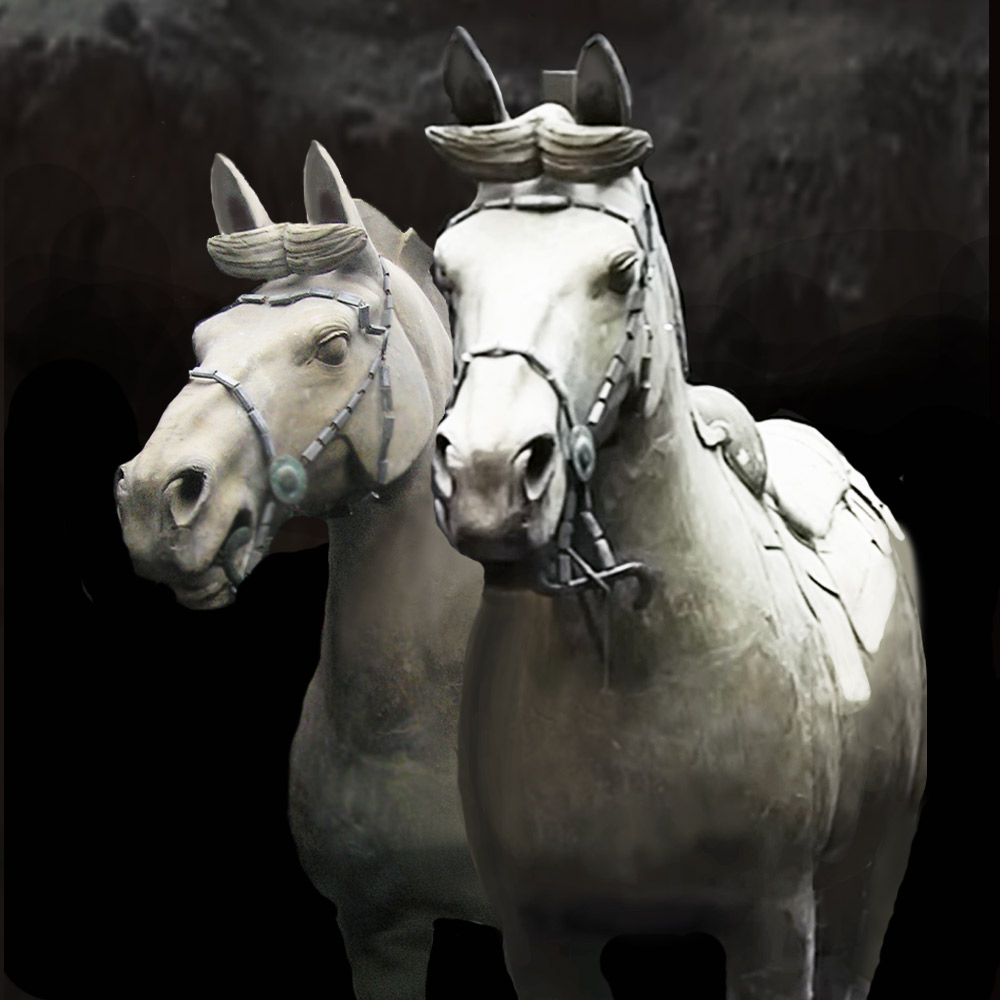 Terracotta cavalry horses at the Museum of Qin
Terra-cotta Warriors and Horses.
Terracotta cavalry horses at the Museum of Qin
Terra-cotta Warriors and Horses.
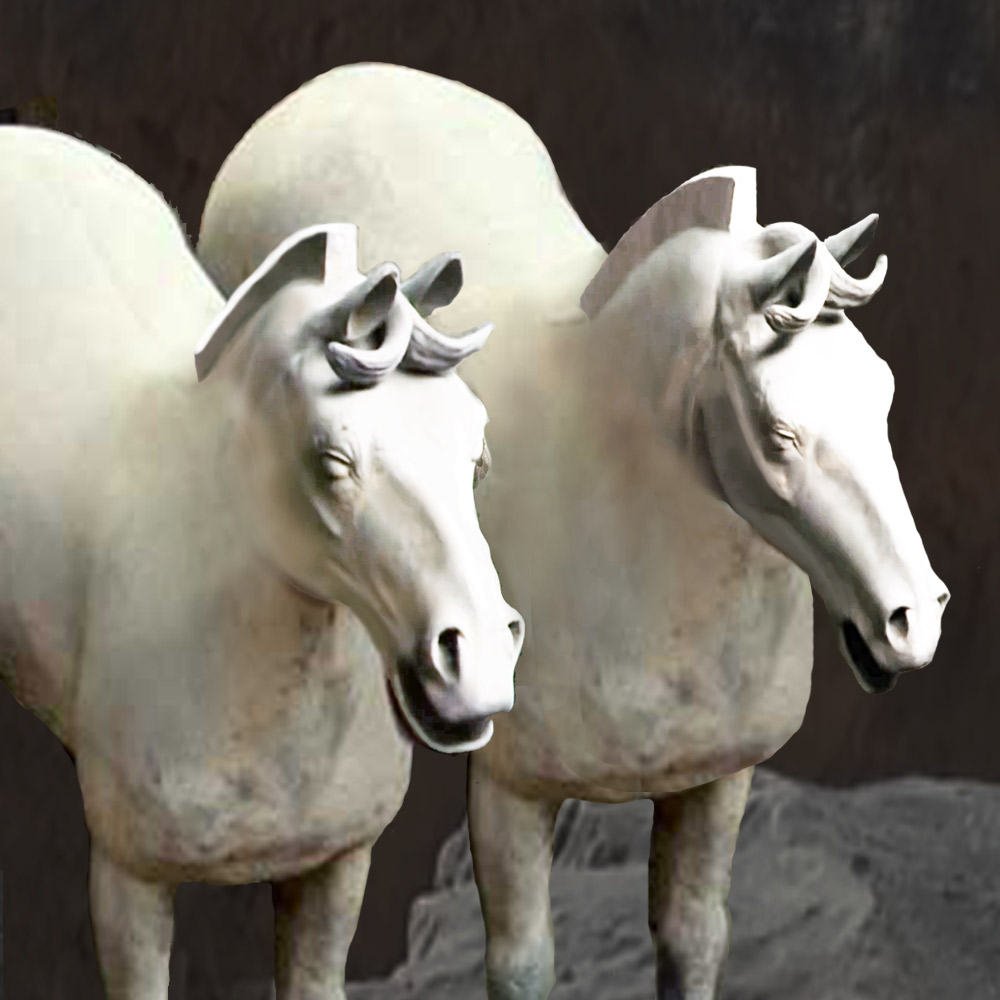 Estimates suggest that there were over 520 life-size
and individually made horses in the Terracotta Army.
Estimates suggest that there were over 520 life-size
and individually made horses in the Terracotta Army.
THE GREAT MOSQUE OF XI'AN
The Great Mosque of Xi'an is a grand mosque
located in the city of Chang'an which is now better known as the
city of Xi'an, and became the first mosque to stand in China,
The mosque was founded in the 8th century AD. Although the
mosque was first built in the year 742 AD during the Tang
dynasty, its current form was largely constructed in 1384 AD
during Emperor Hongwu's reign of the Ming dynasty, the Mosque of
Xi'an is the largest and one of the most important Islamic
places of worship in China, The Mosque was last reconstructed in
the 18th century AD, and follows Chinese Islamic architecture,
Xi'an, Shaanxi Province, China
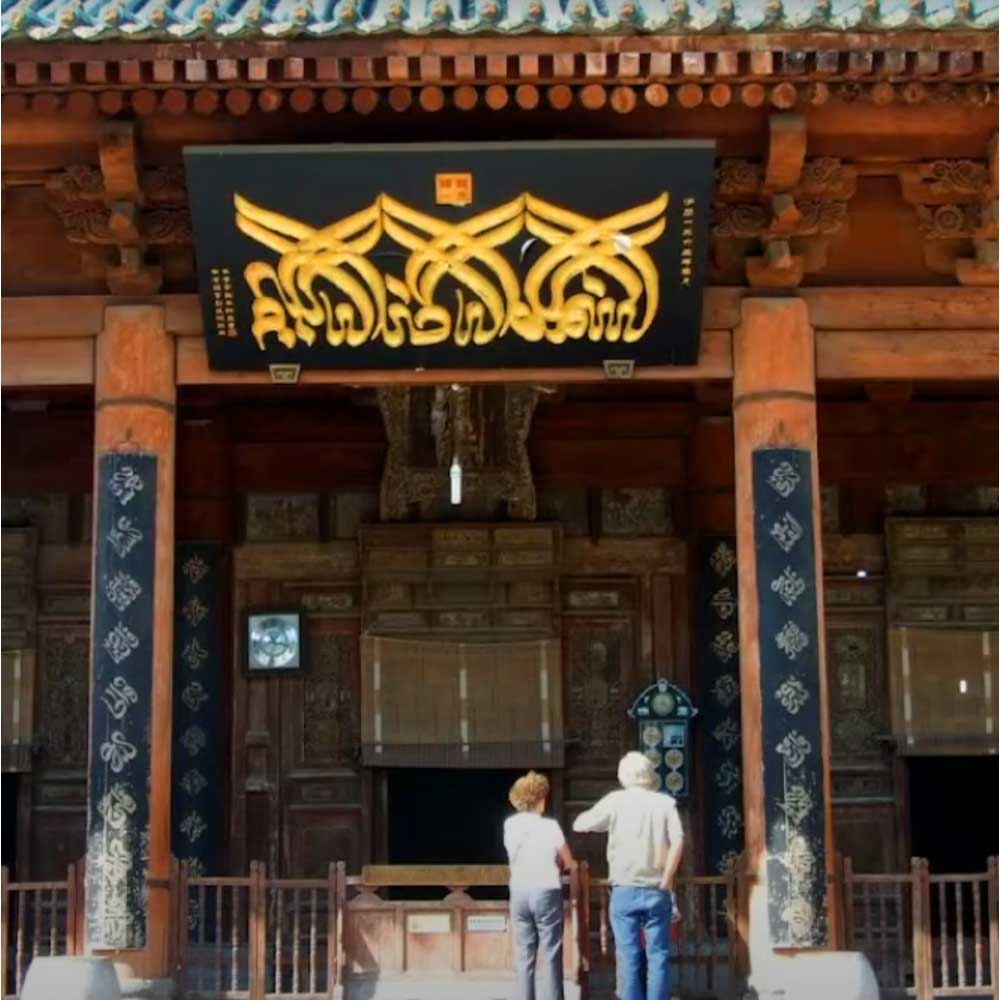 The Great Mosque of Xi'an is the first mosque in
China, Xi'an, Shaanxi Province, China
The Great Mosque of Xi'an is the first mosque in
China, Xi'an, Shaanxi Province, China
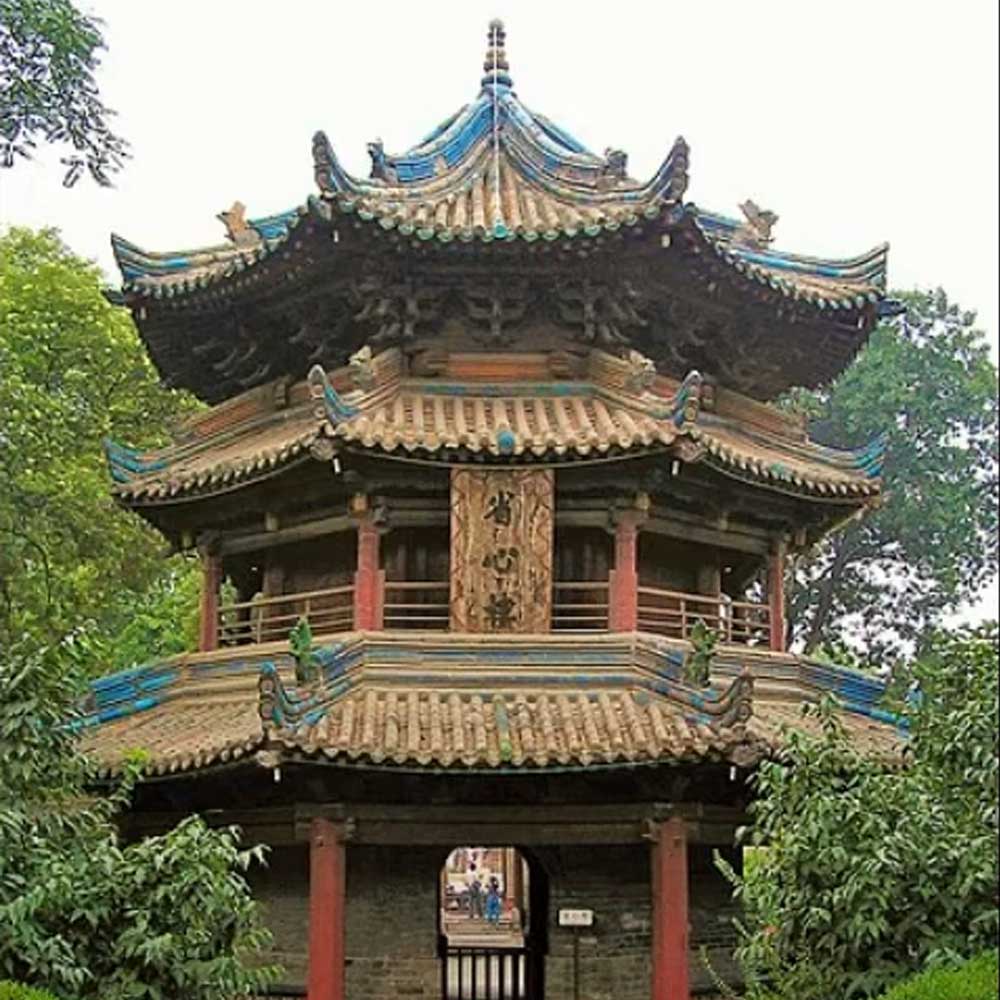 The mosque was founded in the 8th century AD. and it
still follows traditional Chinese Islamic architecture,
Xi'an,
The mosque was founded in the 8th century AD. and it
still follows traditional Chinese Islamic architecture,
Xi'an,
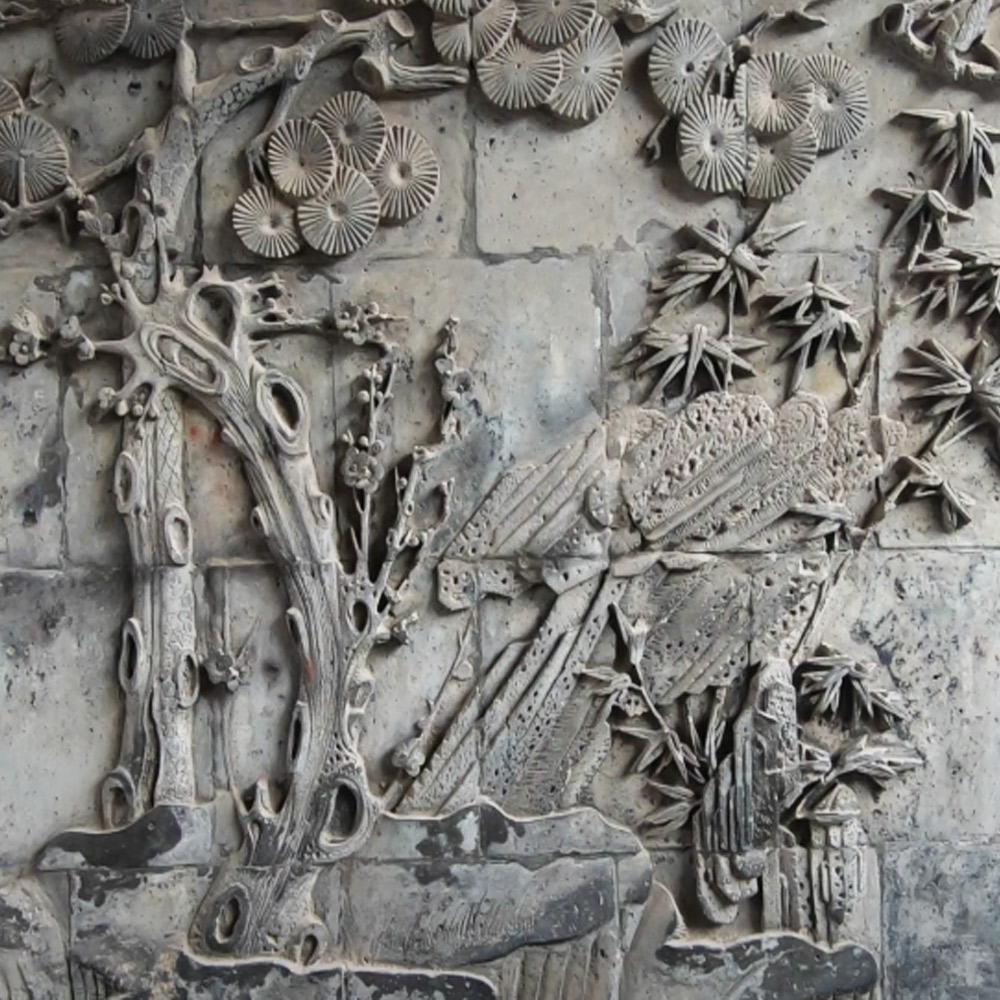 Relief sculpture depecting a garden dating to the 8th
century AD, Xi'an, Shaanxi Province, China
Relief sculpture depecting a garden dating to the 8th
century AD, Xi'an, Shaanxi Province, China
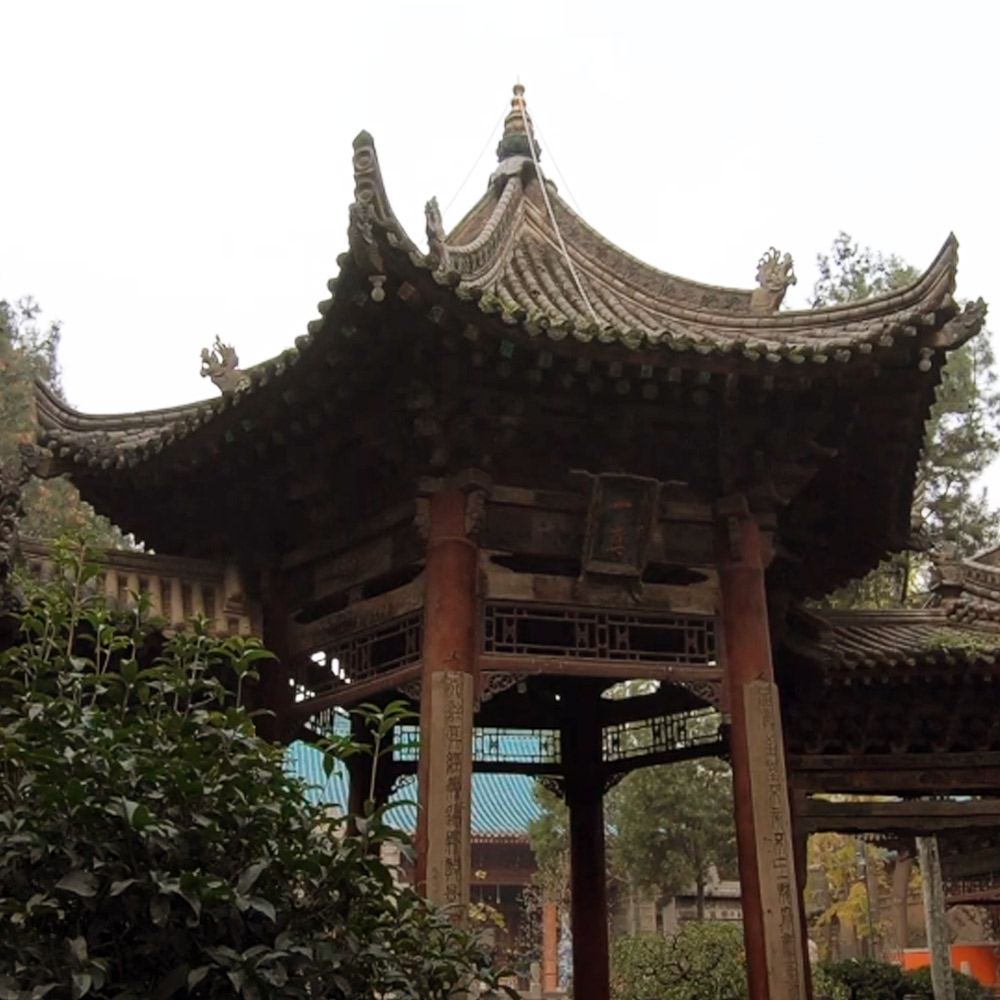 Construction began in AD 742, the first year of the
Tianbao Era of Emperor Xuanrong's reign in the Tang Dynasty,
Xi'an, Shaanxi Province, China
Construction began in AD 742, the first year of the
Tianbao Era of Emperor Xuanrong's reign in the Tang Dynasty,
Xi'an, Shaanxi Province, China
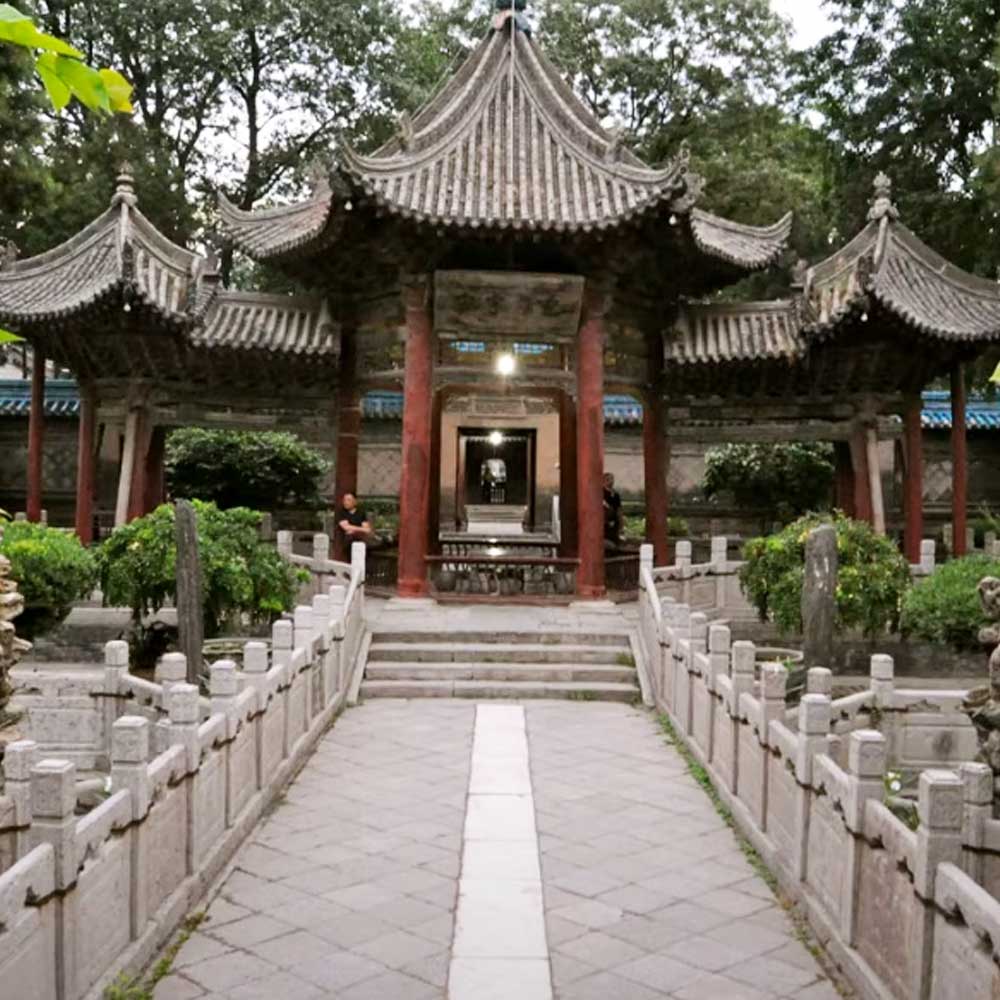 The Great Mosque was added to the UNESCO Islamic
Heritage List in 1985, Xi'an, Shaanxi Province, China
The Great Mosque was added to the UNESCO Islamic
Heritage List in 1985, Xi'an, Shaanxi Province, China
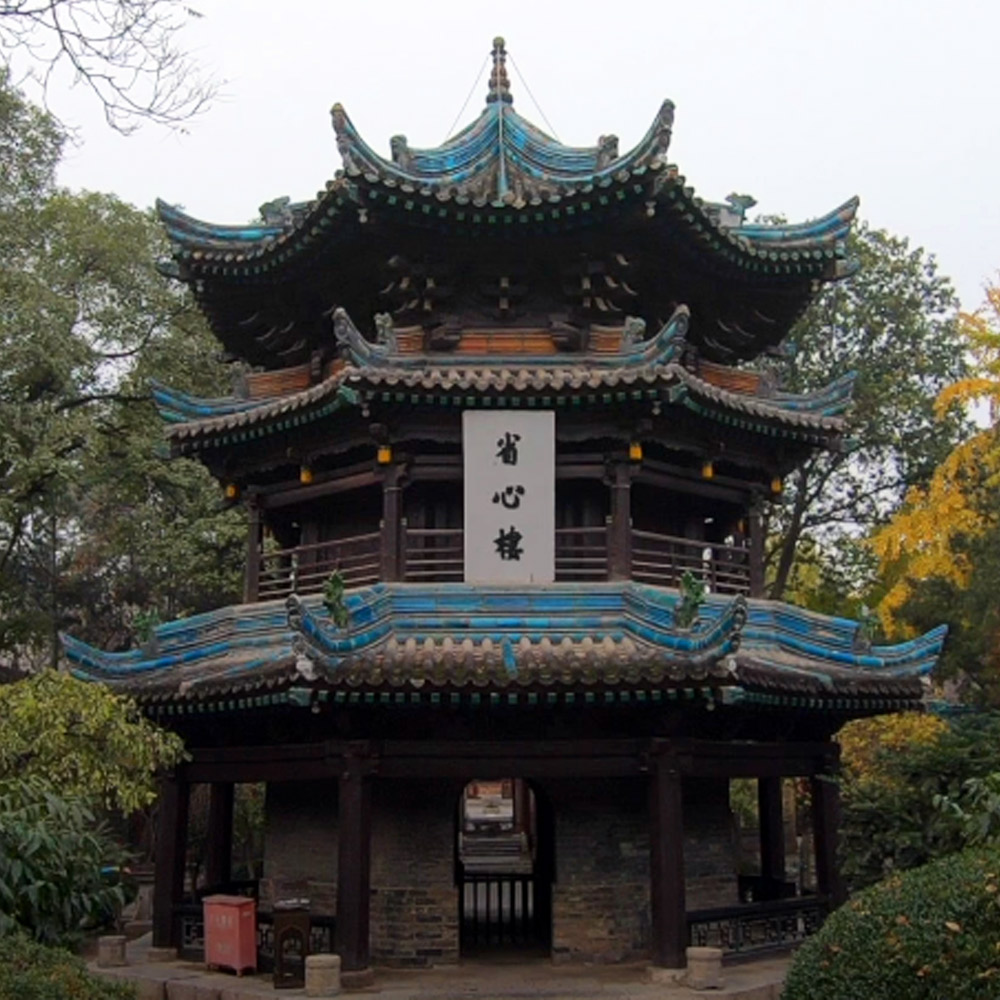 Additions were made during the Song (960-1279), Yuan
(1271-1638), Ming (1368-1644), and Qing (1644-1911) dynasties,
which makes it a complex representation of ancient architecture
from many time periods, Xi'an, Shaanxi Province, China
Additions were made during the Song (960-1279), Yuan
(1271-1638), Ming (1368-1644), and Qing (1644-1911) dynasties,
which makes it a complex representation of ancient architecture
from many time periods, Xi'an, Shaanxi Province, China
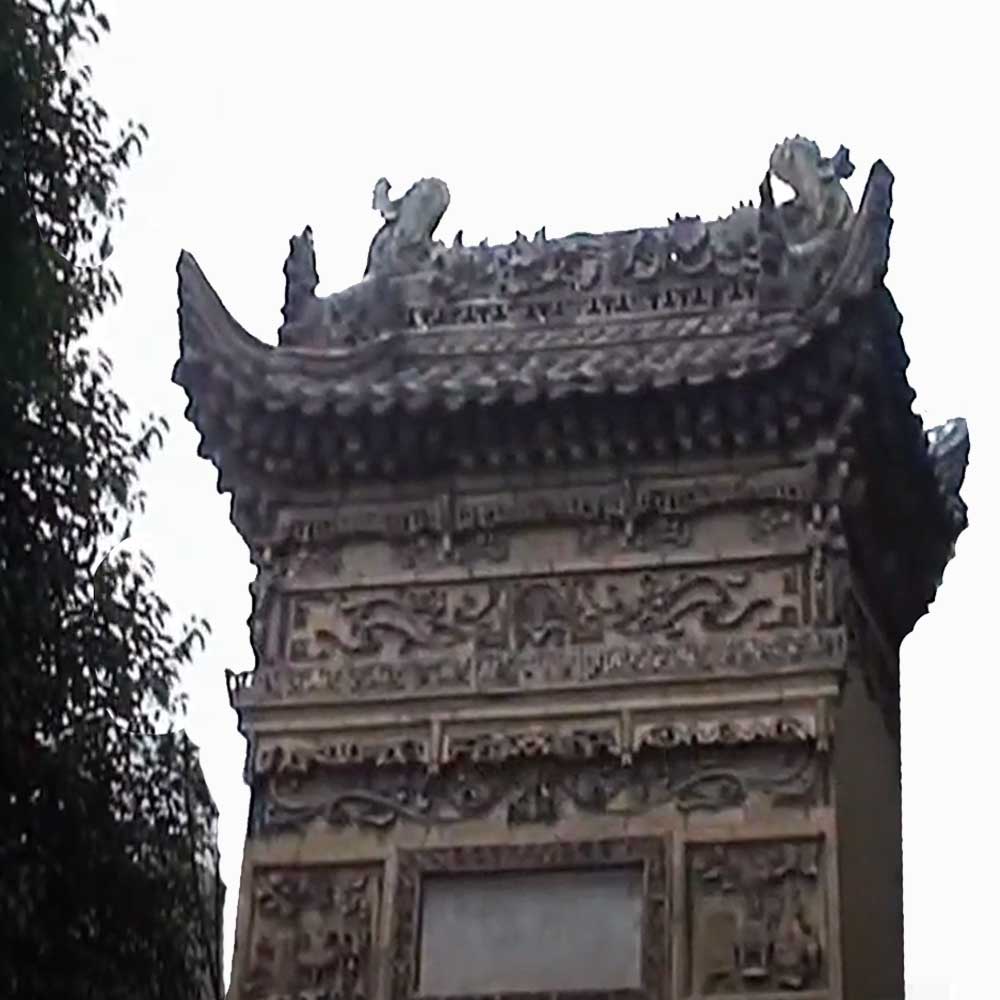 In the Tang Dynasty, Islam was introduced to China by
Arab traders. Many Muslims settled in China and married Han
people, Xi'an, Shaanxi Province, China
In the Tang Dynasty, Islam was introduced to China by
Arab traders. Many Muslims settled in China and married Han
people, Xi'an, Shaanxi Province, China
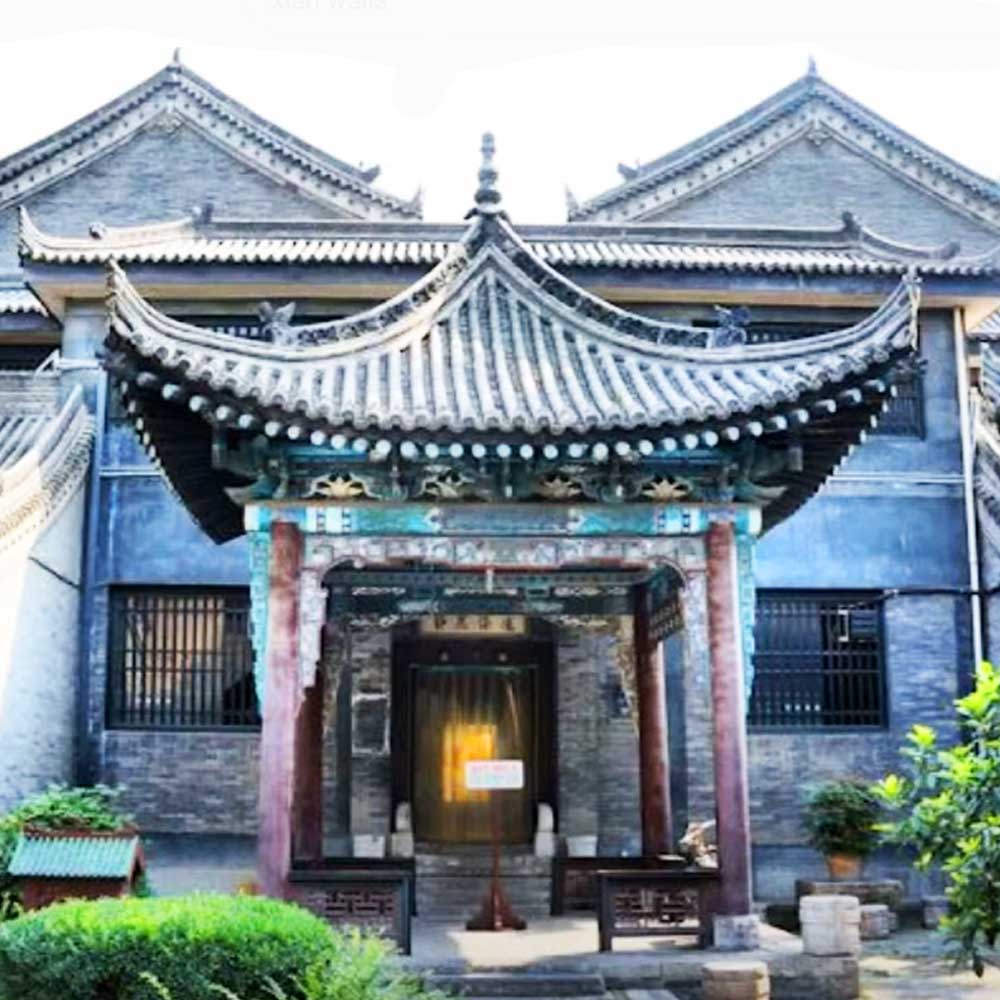 The Great Mosque was built at that time to honor the
founders of Islam in China. Since then many other mosques have
been established throughout the region, Xi'an,
The Great Mosque was built at that time to honor the
founders of Islam in China. Since then many other mosques have
been established throughout the region, Xi'an,
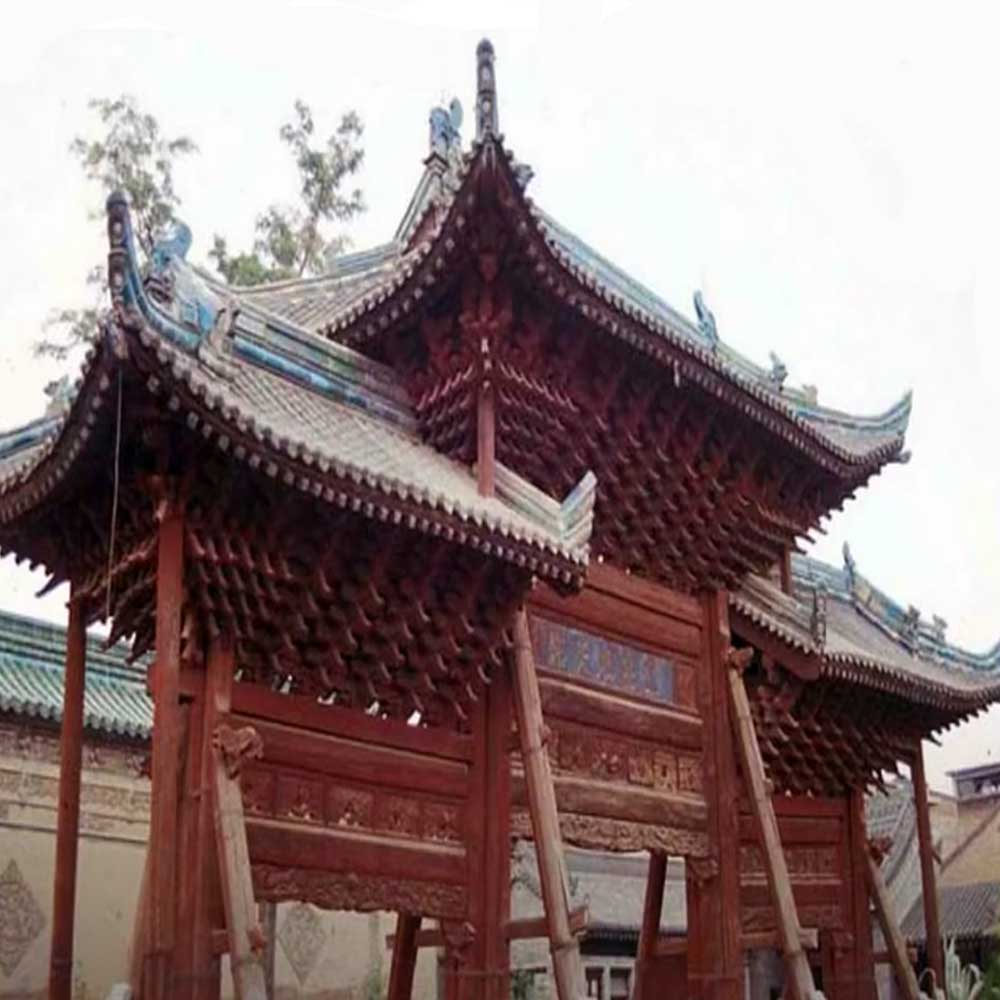 The Great Mosque, Xi'an, Shaanxi Province, China
The Great Mosque, Xi'an, Shaanxi Province, China
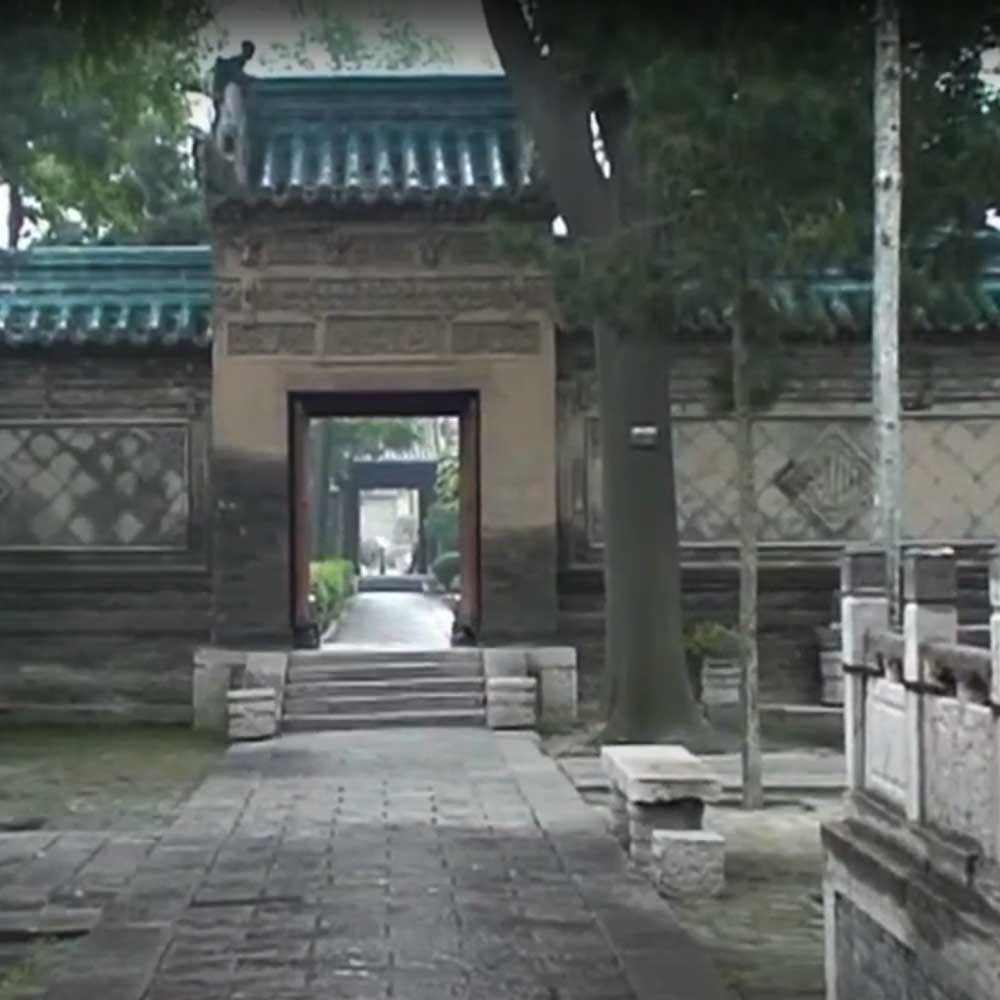 The Great Mosque, Xi'an, Shaanxi Province, China
The Great Mosque, Xi'an, Shaanxi Province, China
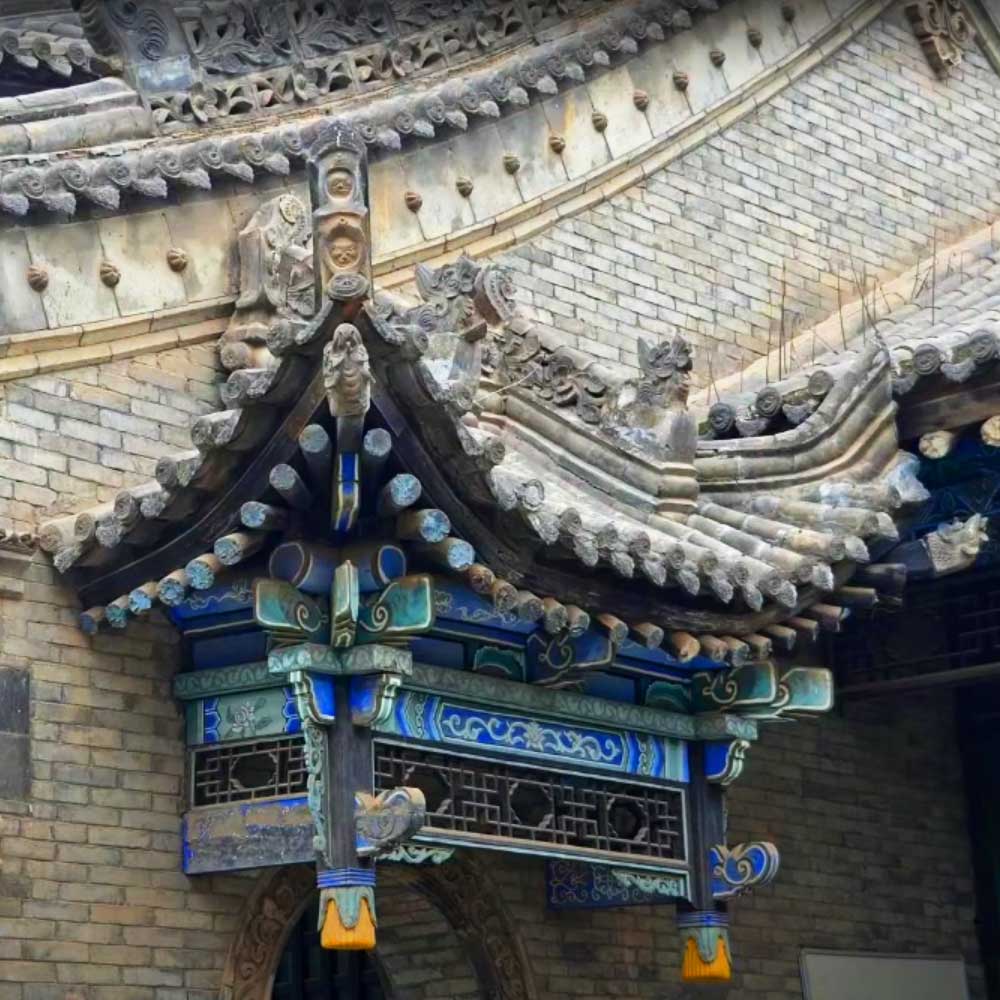 The Great Mosque, Xi'an, Shaanxi Province, China
The Great Mosque, Xi'an, Shaanxi Province, China
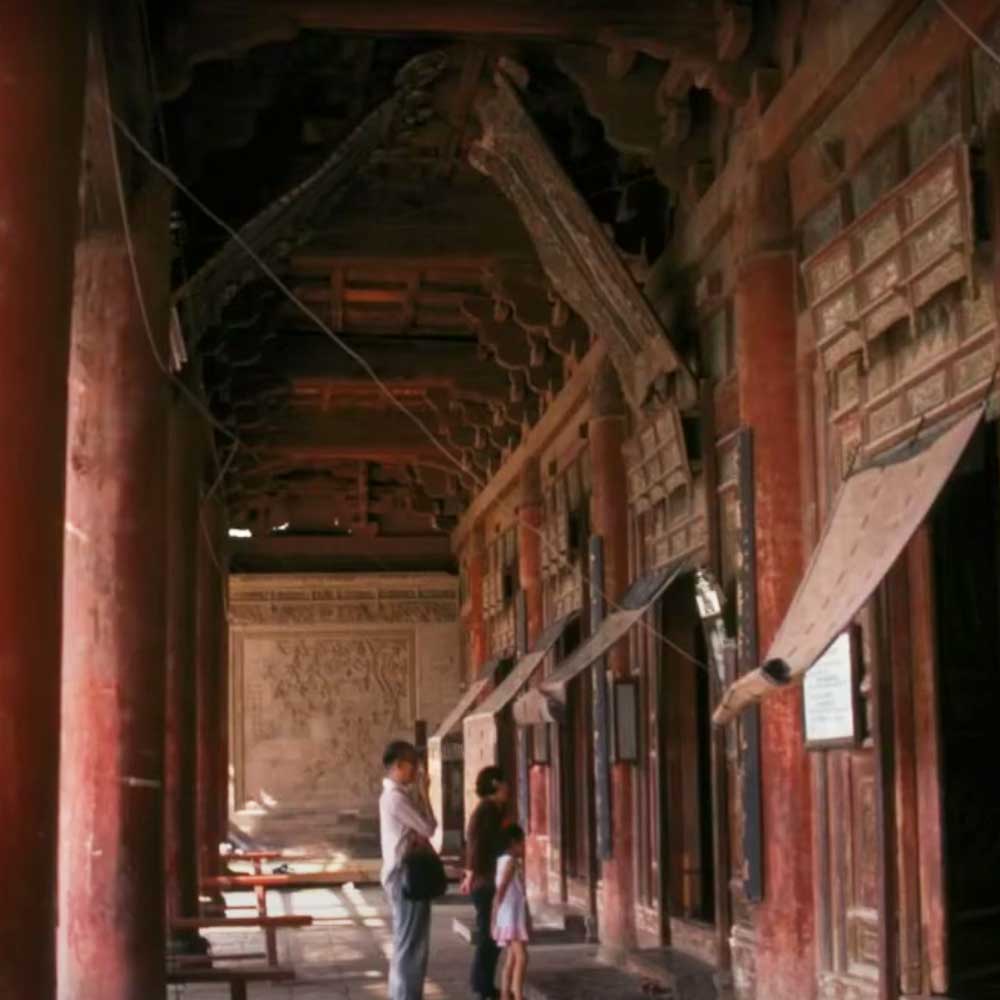 The Great Mosque, Xi'an, Shaanxi Province, China
The Great Mosque, Xi'an, Shaanxi Province, China
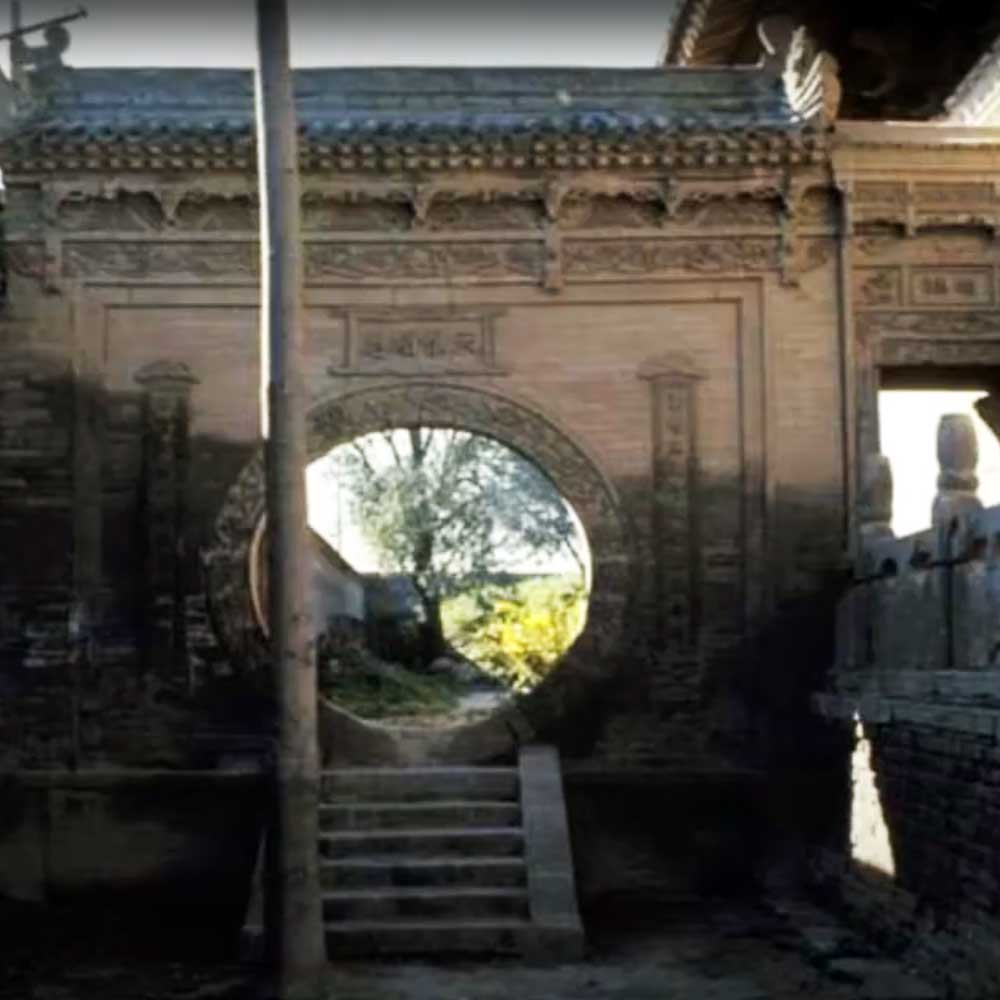 The Great Mosque, Xi'an, Shaanxi Province, China
The Great Mosque, Xi'an, Shaanxi Province, China
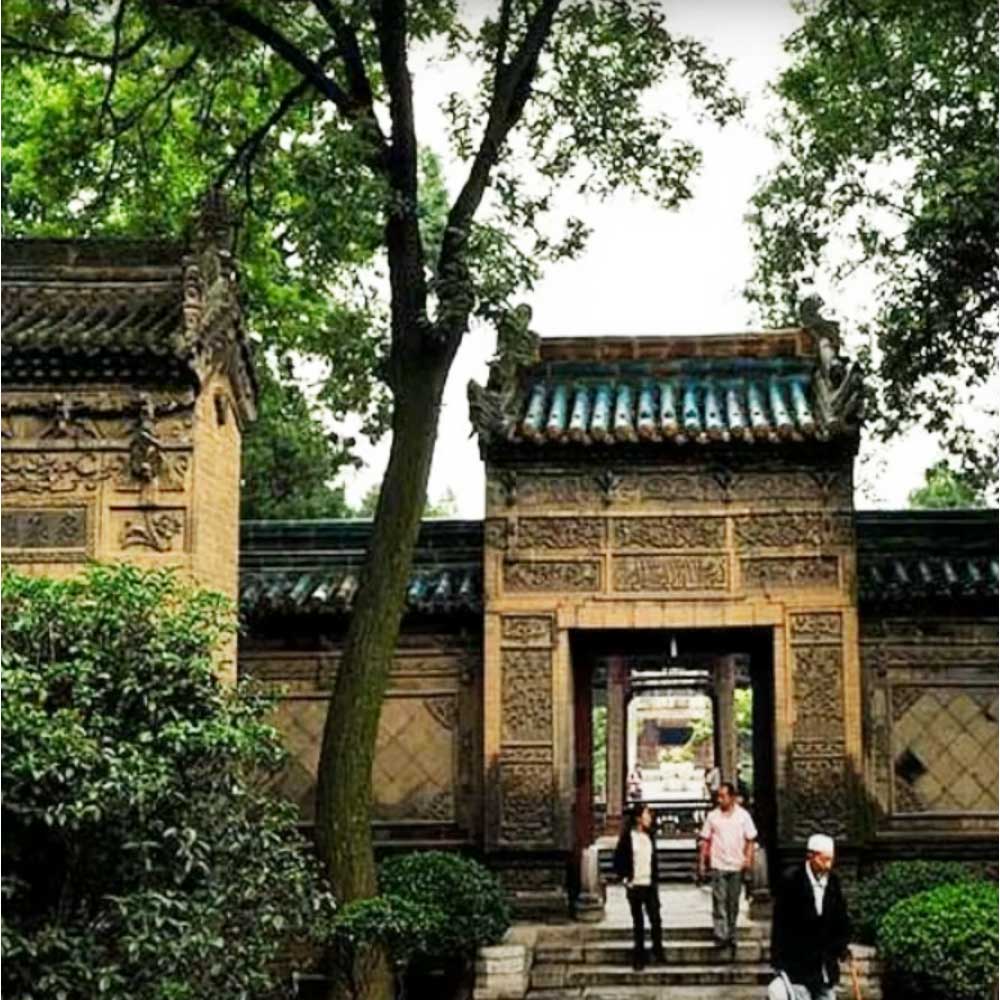 The Great Mosque, Xi'an, Shaanxi Province, China
The Great Mosque, Xi'an, Shaanxi Province, China
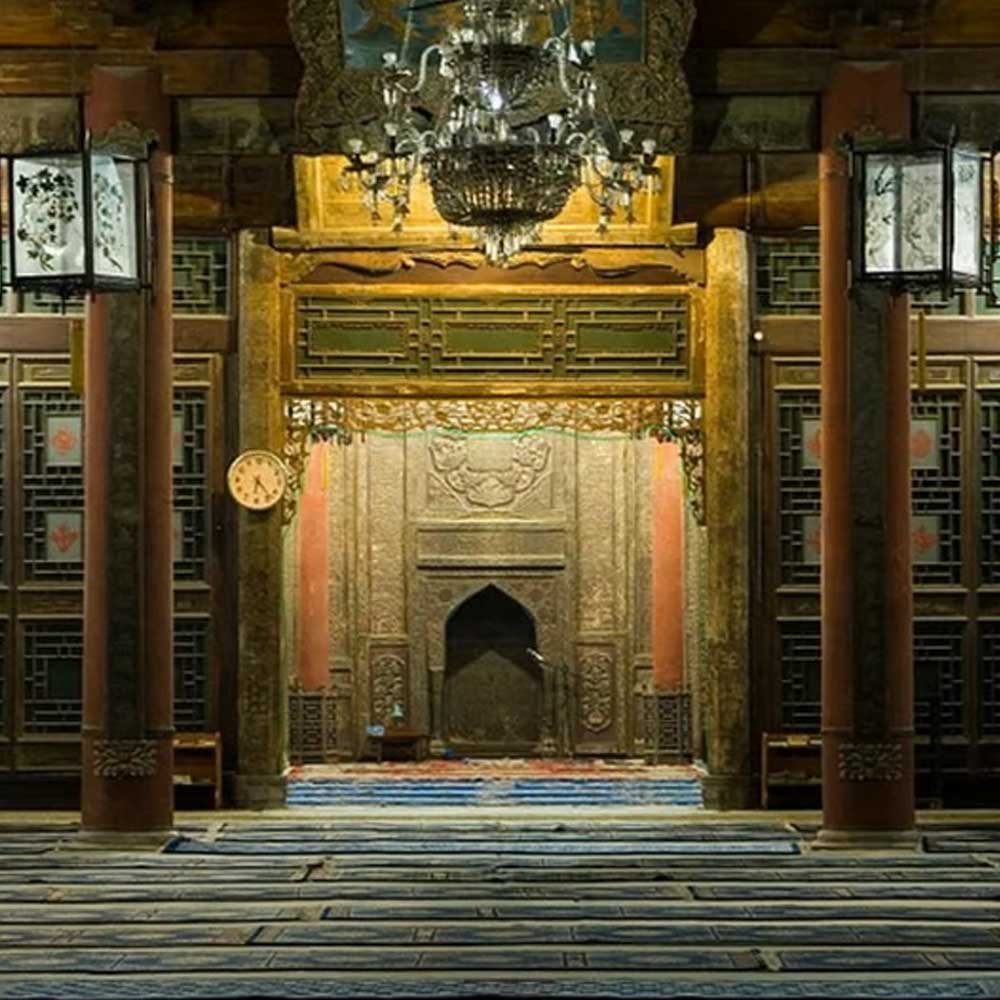 The Great Mosque of Xi'an, mihrab and prayer rugs,
Shaanxi Province, China
The Great Mosque of Xi'an, mihrab and prayer rugs,
Shaanxi Province, China
BEIJING, CHINA
The Forbidden City, located in the heart of
Beijing, China, is a stunning testament to imperial power and
rich cultural heritage. Commissioned in 1406 by the Yongle
Emperor of the Ming Dynasty (1368-1644 AD), this remarkable
complex was first occupied by the court in 1420. The name
"Forbidden City" conveys an air of intrigue, as access was
deliberately restricted for most of the realm’s subjects. A
captivating myth surrounds this iconic site, suggesting that it
contains 9,999 rooms—a figure that originates from oral
tradition, although it lacks support from survey evidence.
Designed to serve as the grand center of the ancient, walled
city of Beijing, the Forbidden City not only showcases
extraordinary architectural achievement but is also enveloped by
the larger Imperial City. This breathtaking site invites
visitors to delve into its rich history and immerse themselves
in the lasting legacy of China’s imperial era.
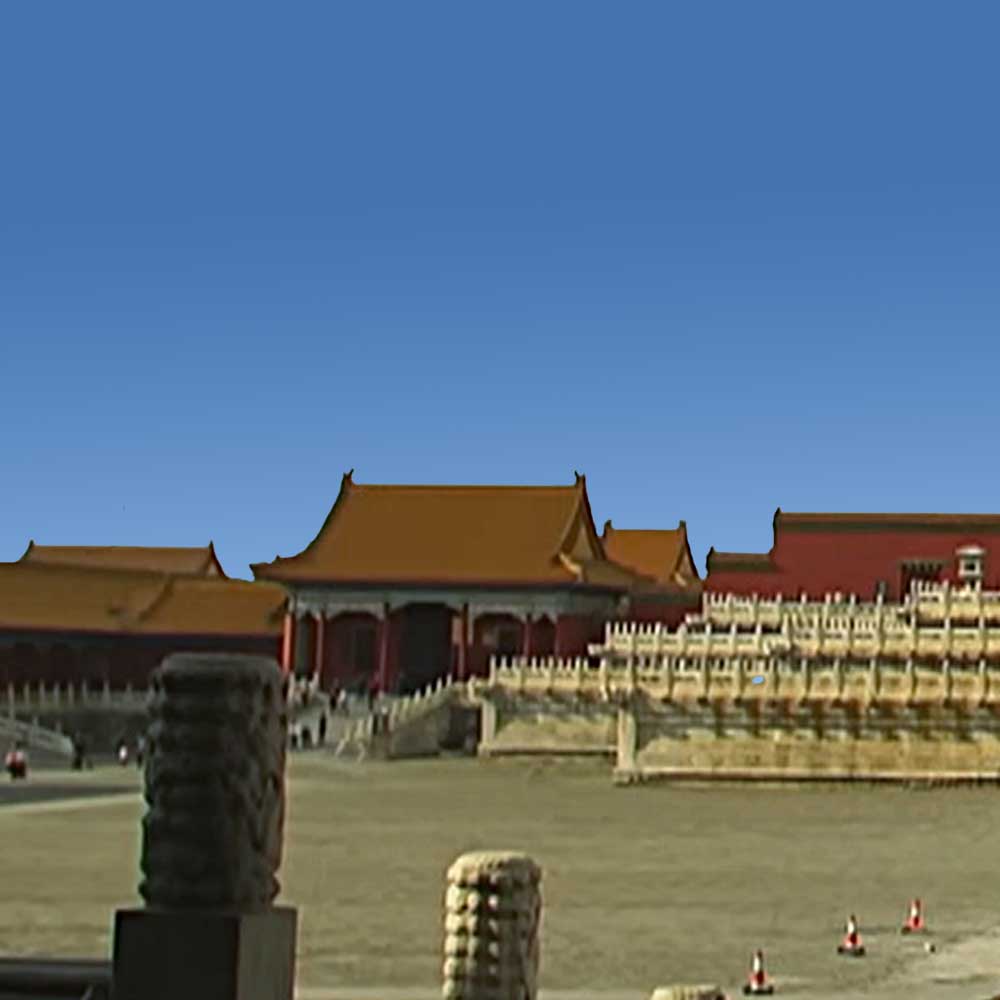 1.) Hall of Supreme Harmony,
1.) Hall of Supreme Harmony,
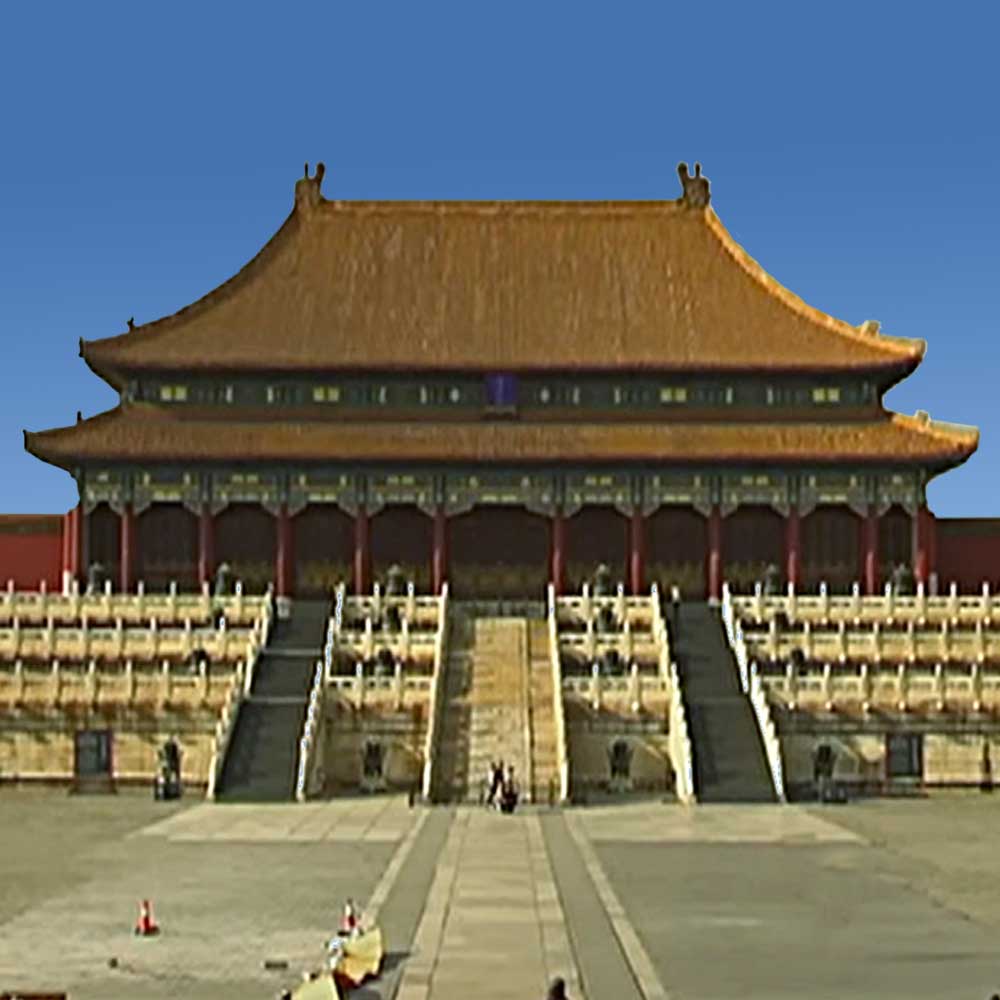 2.) of the Emperor of China from the Ming dynasty to
the end of the Qing dynasty,
2.) of the Emperor of China from the Ming dynasty to
the end of the Qing dynasty,
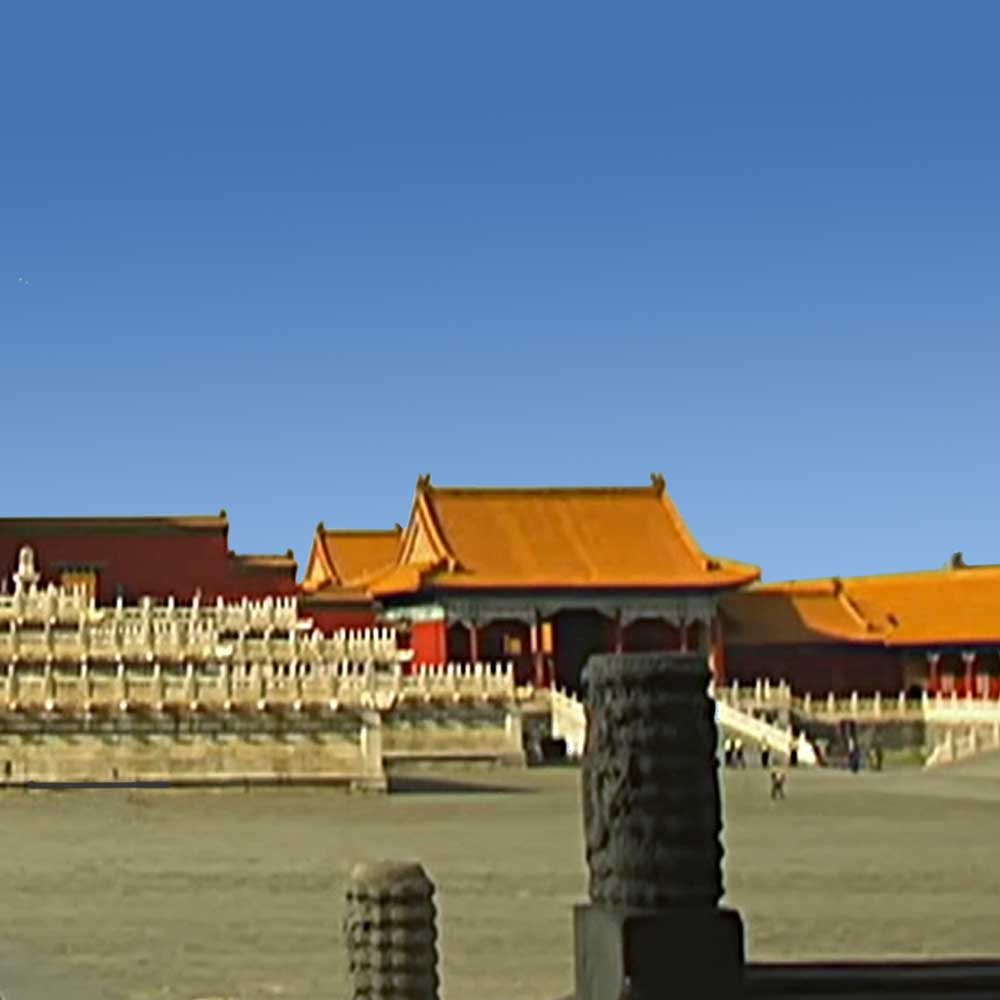 3.) between 1420 and 1924, The Forbidden City and
Imperial Palace complex, Beijing, China.
3.) between 1420 and 1924, The Forbidden City and
Imperial Palace complex, Beijing, China.
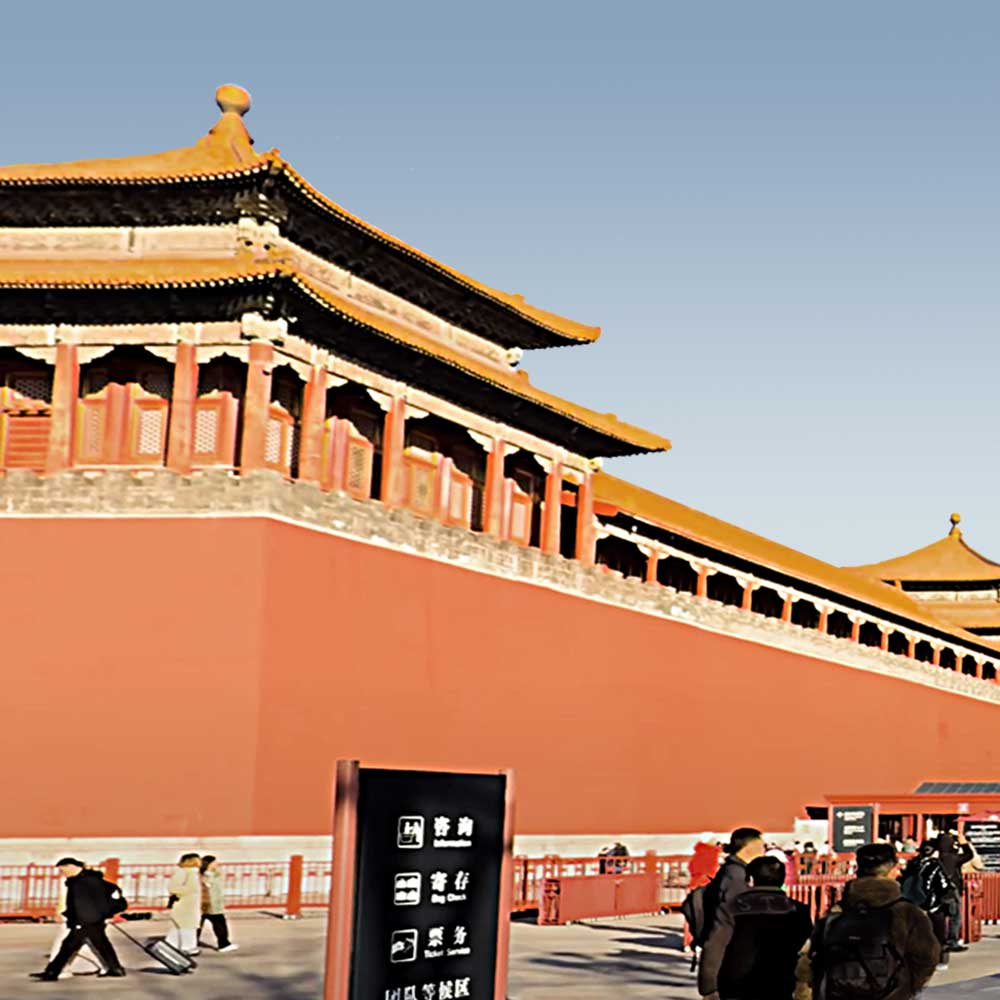 1.) Entering The Forbidden City,
1.) Entering The Forbidden City,
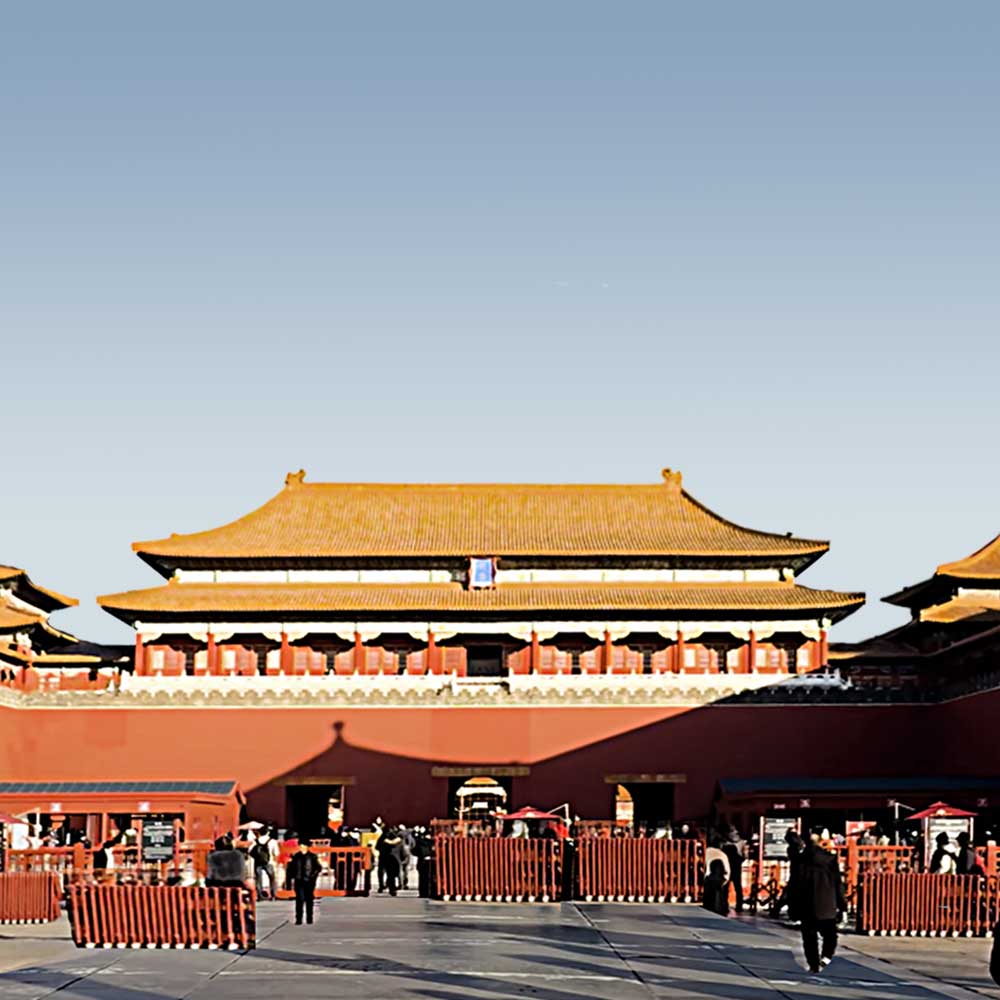 2.) and Imperial Palace complex,
2.) and Imperial Palace complex,
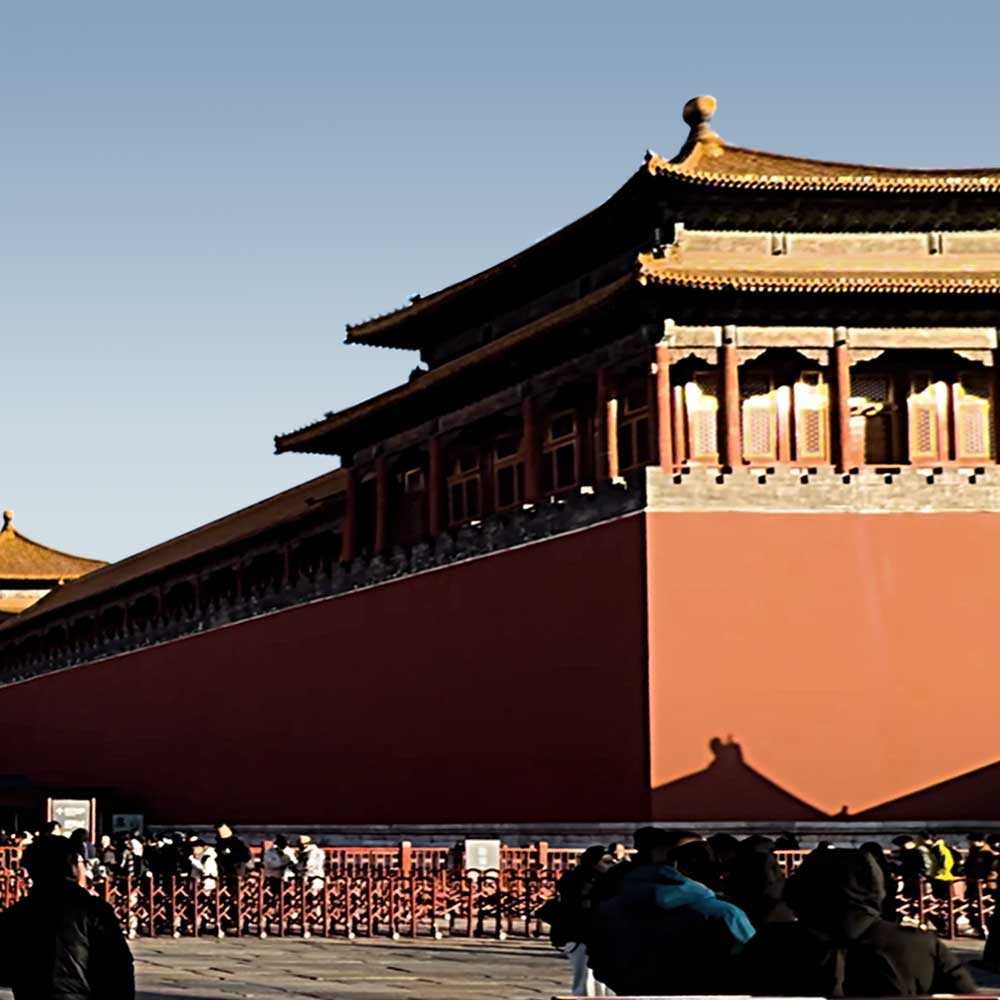 3.) at the heart of Beijing right off Tiananmen
Square, Beijing, China.
3.) at the heart of Beijing right off Tiananmen
Square, Beijing, China.
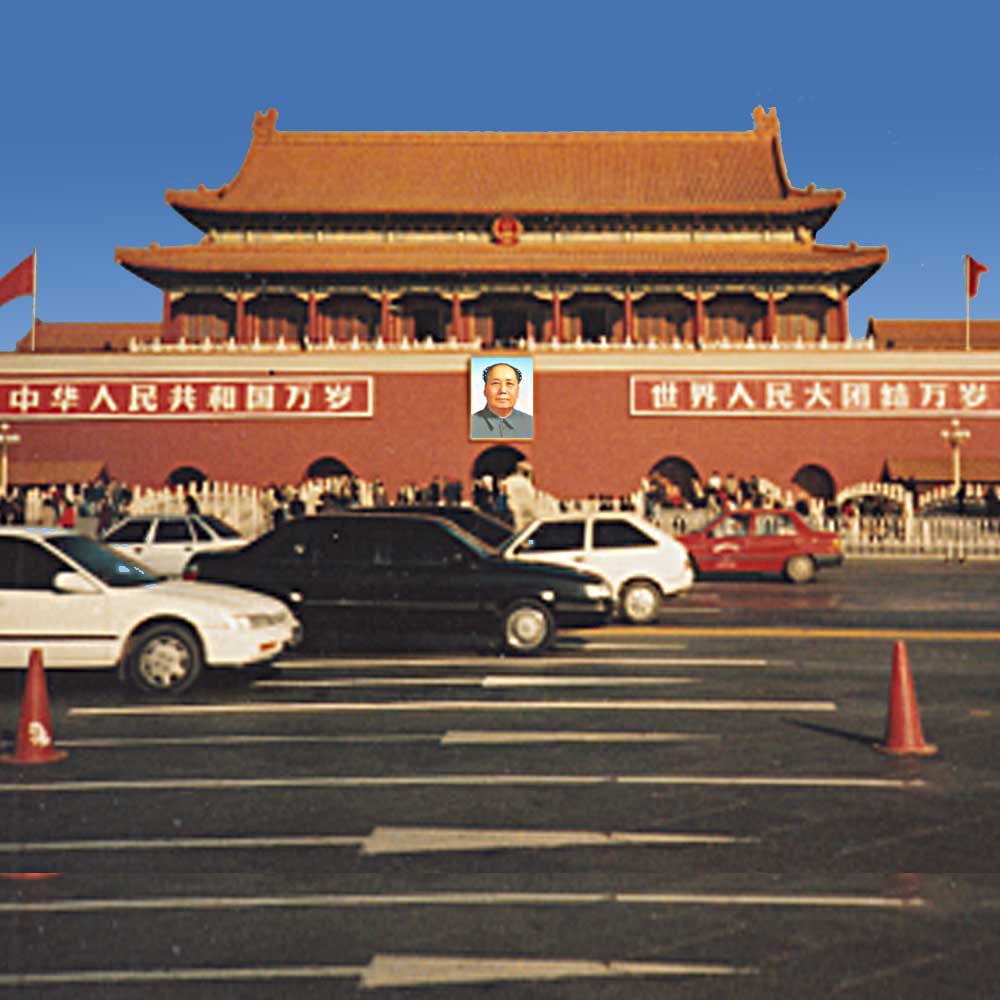 Tiananmen Gate with the picture of Mao, at Tiananmen
Square, Beijing, China.
Tiananmen Gate with the picture of Mao, at Tiananmen
Square, Beijing, China.
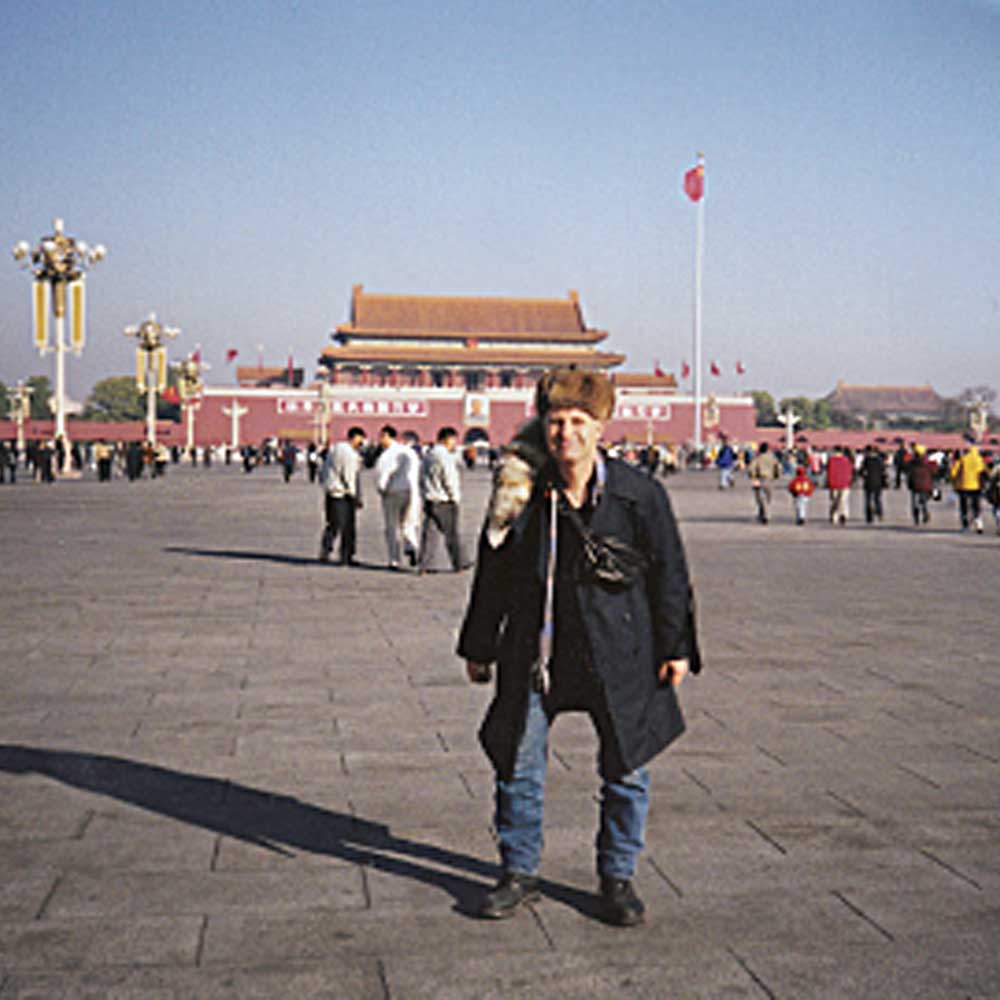 Tiananmen Square, the square is best known for the
1989 protests and massacre that ended with a military crackdown
due to international media coverage.
Tiananmen Square, the square is best known for the
1989 protests and massacre that ended with a military crackdown
due to international media coverage.
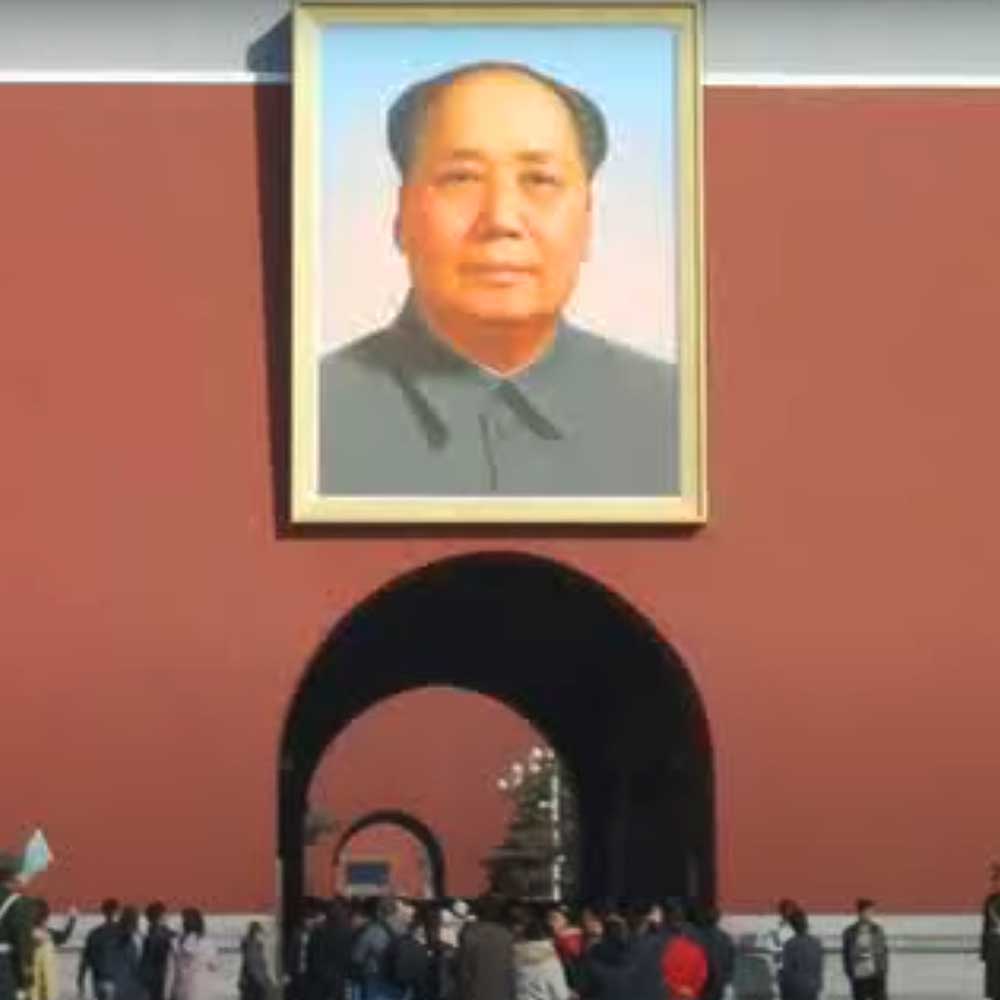 Tiananmen Gate with the picture of Mao, at Tiananmen
Square, Beijing, China.
Tiananmen Gate with the picture of Mao, at Tiananmen
Square, Beijing, China.
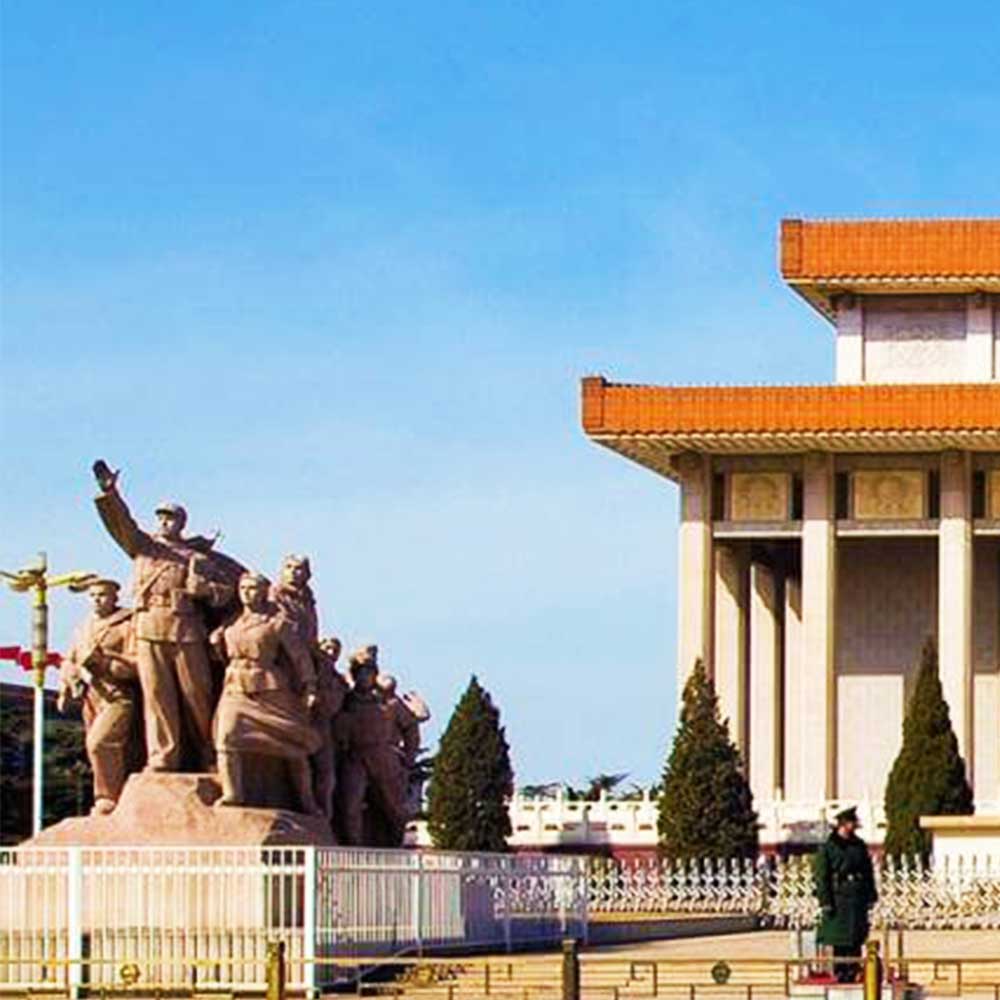 1.) Mausoleum of Mao Zedong west sculpture,
1.) Mausoleum of Mao Zedong west sculpture,
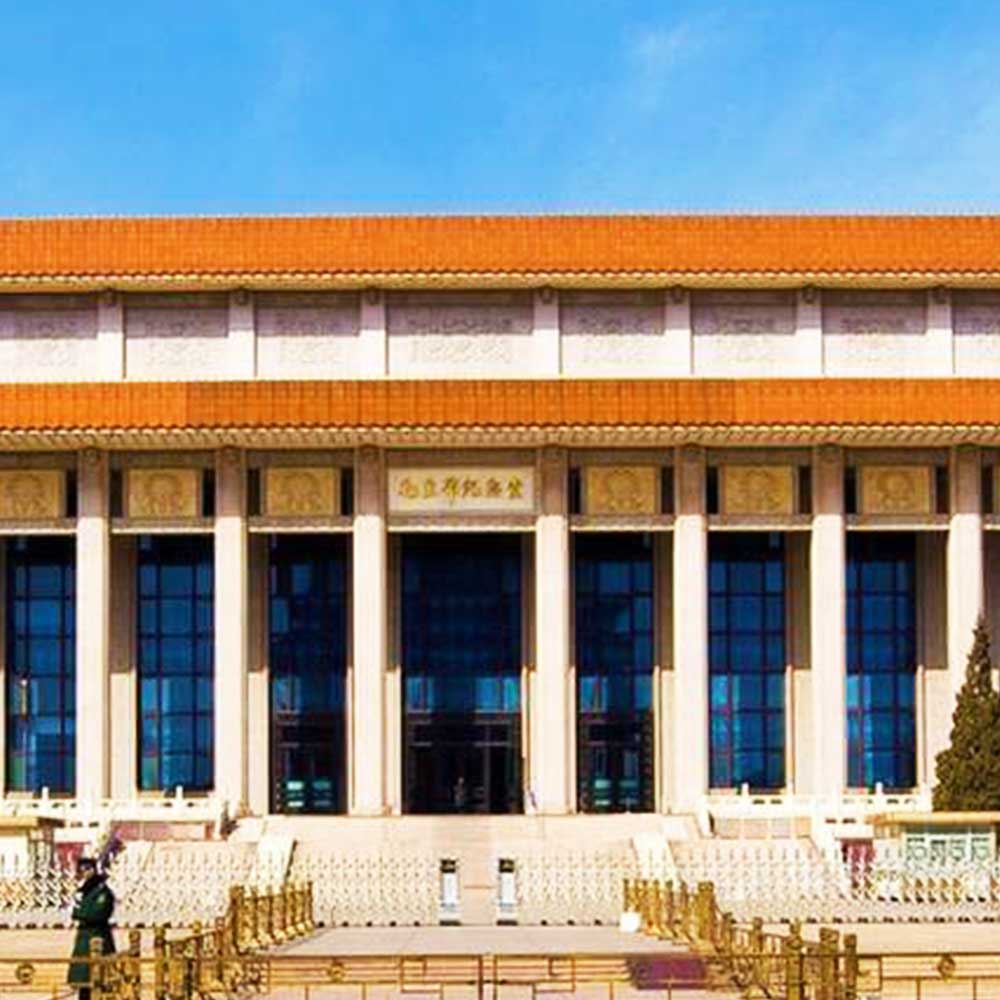 2.) The Mausoleum of Mao Zedong, is one of Beijing's
most gruesome spectacles, it is the sight of Mao Zedong's
embalmed corpse on public display behind glass
2.) The Mausoleum of Mao Zedong, is one of Beijing's
most gruesome spectacles, it is the sight of Mao Zedong's
embalmed corpse on public display behind glass
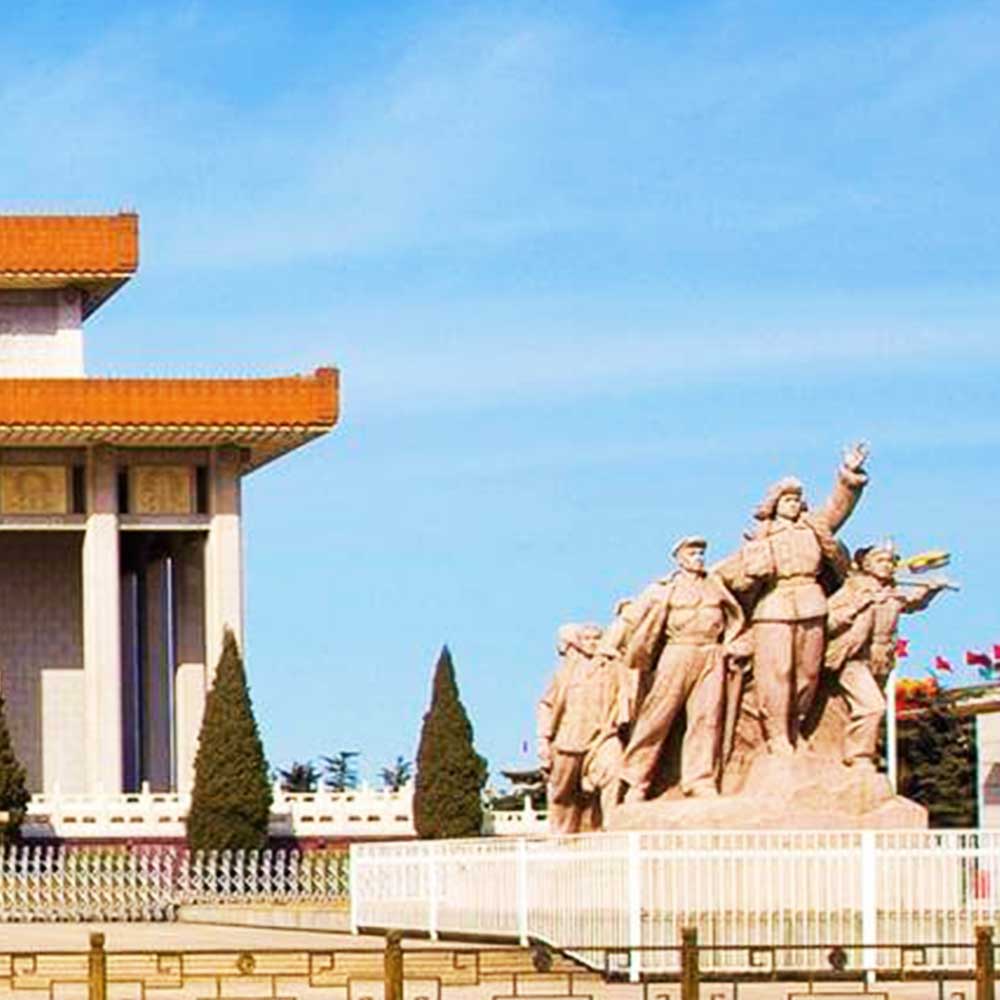 3.) Mausoleum of Mao Zedong Revolutionary Soldiers
Monument, Tiananmen Square, Beijing, China.
3.) Mausoleum of Mao Zedong Revolutionary Soldiers
Monument, Tiananmen Square, Beijing, China.
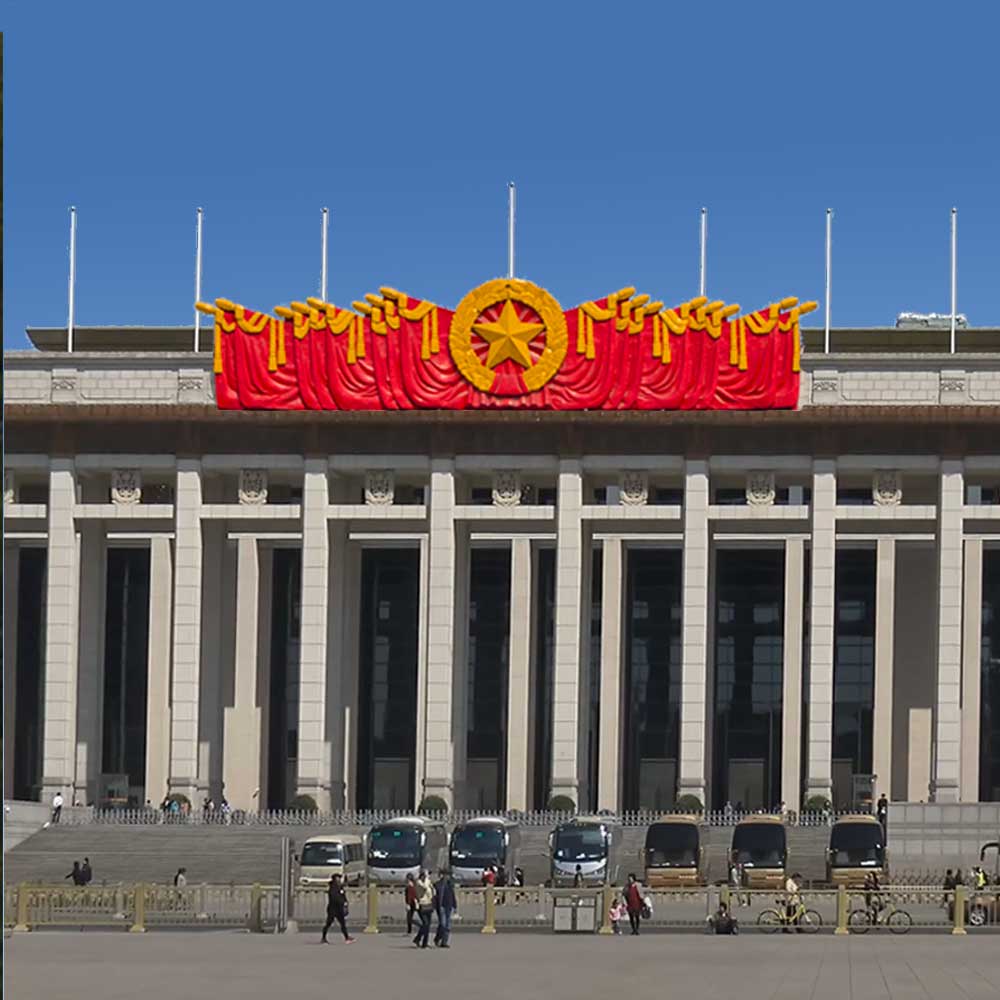 The National Museum of China, is an art and history
museum, with 200,000 square meters or 1.3 million square ft.,
built in 1959, Tiananmen Square, Beijing, China.
The National Museum of China, is an art and history
museum, with 200,000 square meters or 1.3 million square ft.,
built in 1959, Tiananmen Square, Beijing, China.
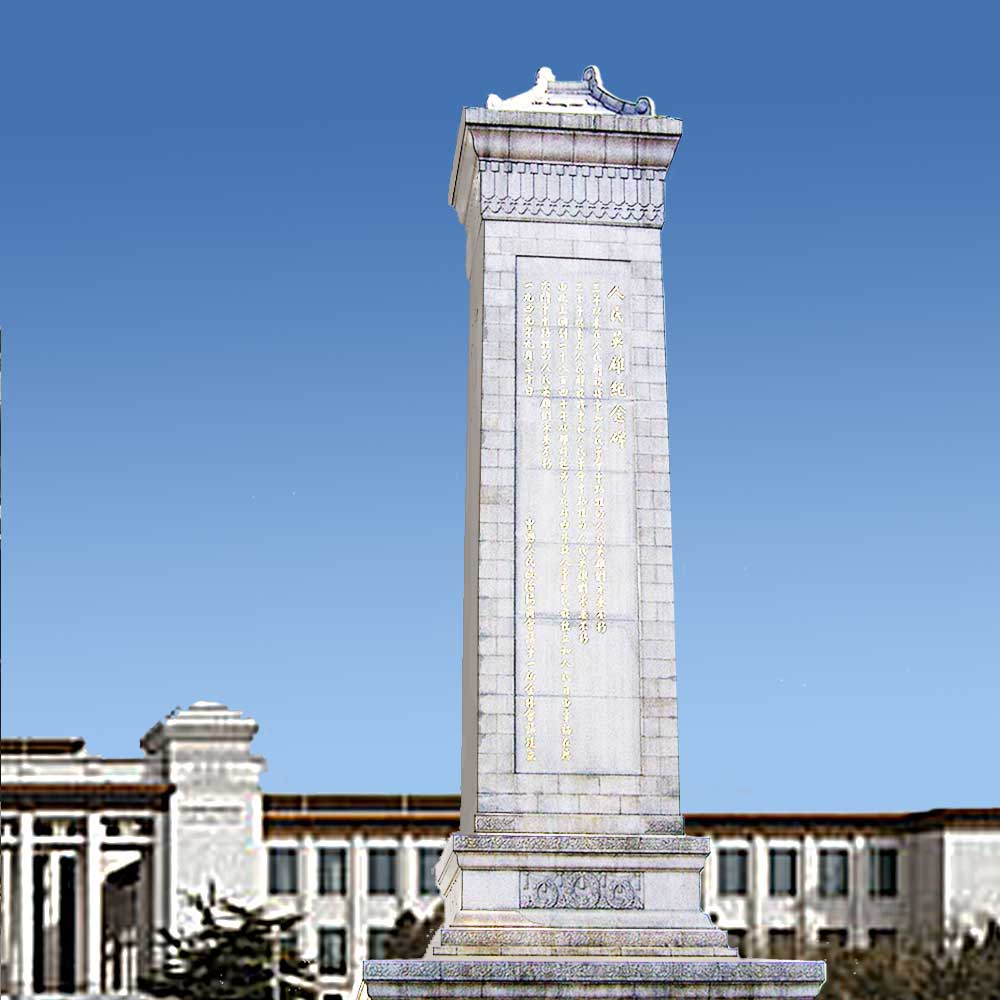 Monument to the People's Heroes, cut marble &
granite, Height: 38 metres (125 ft), completed: 1958, Tiananmen
Square, Beijing, China.
Monument to the People's Heroes, cut marble &
granite, Height: 38 metres (125 ft), completed: 1958, Tiananmen
Square, Beijing, China.
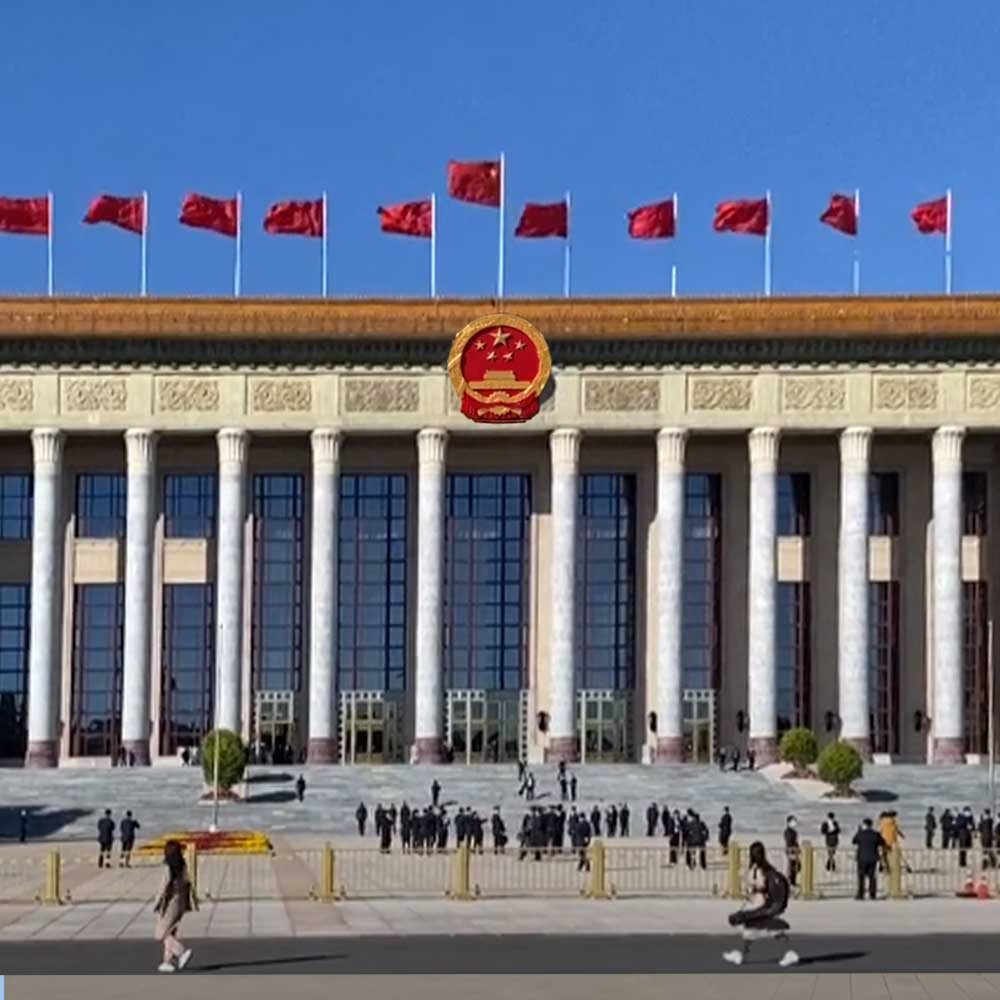 The Great Hall of the People, completed in 1956, is
used for legislative activities for the government of the
People's Republic of China. The People's Tiananmen Square,
Beijing, China.
The Great Hall of the People, completed in 1956, is
used for legislative activities for the government of the
People's Republic of China. The People's Tiananmen Square,
Beijing, China.
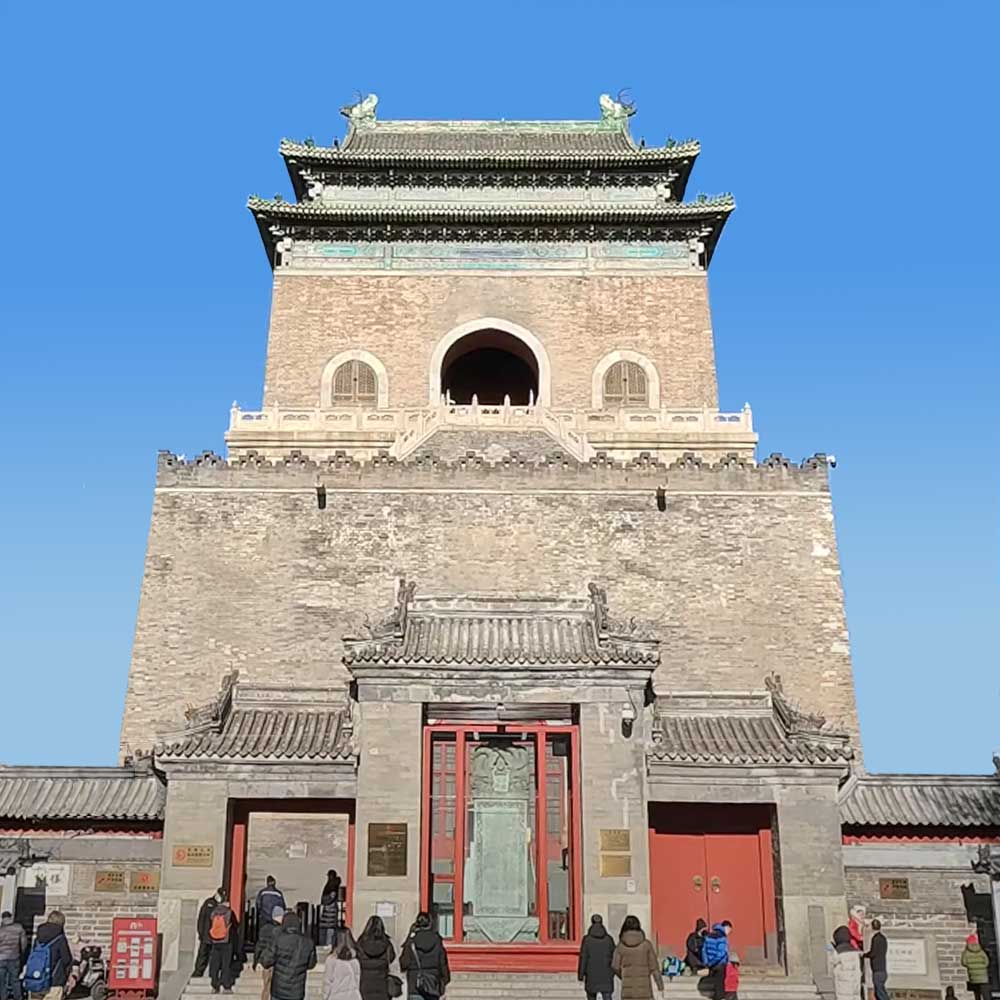 The Bell Tower of Beijing, built in the 13th century
during the Yuan dynasty, Beijing, China.
The Bell Tower of Beijing, built in the 13th century
during the Yuan dynasty, Beijing, China.
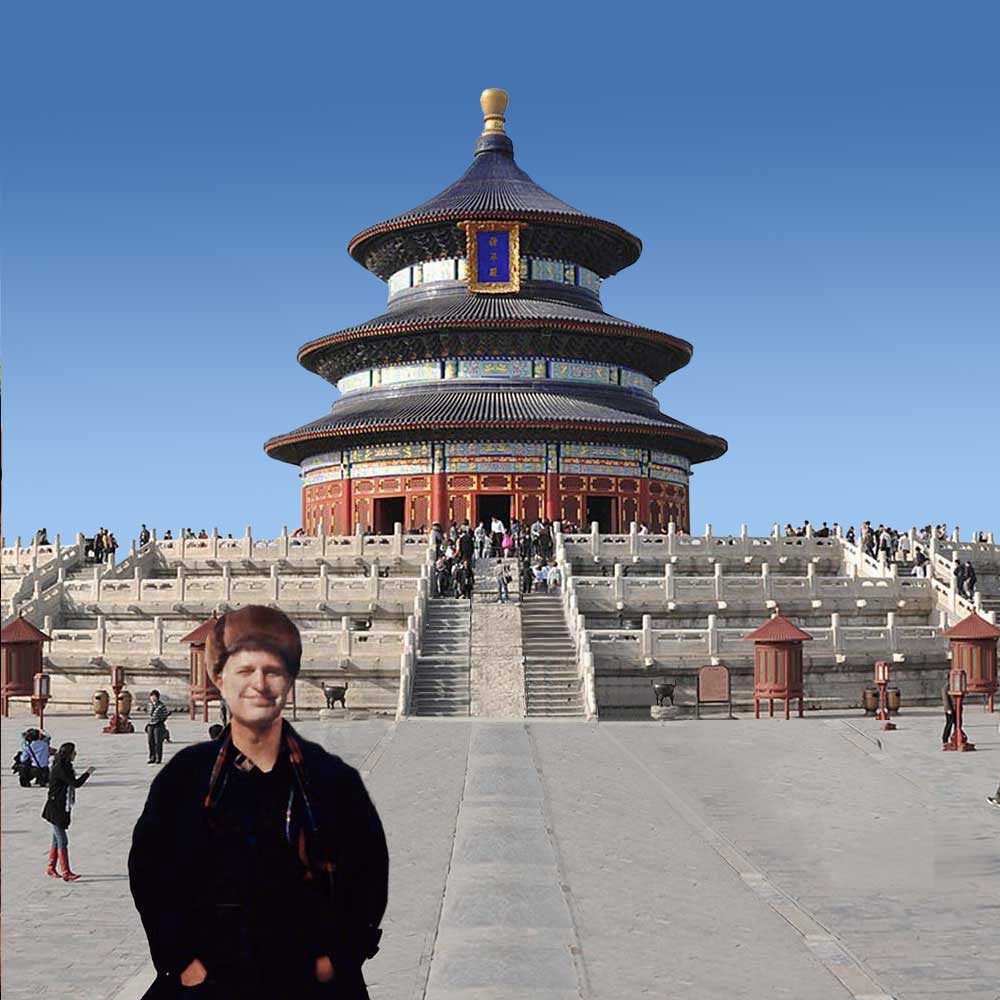 The Temple of Heaven, Beijing, China, The Temple was
visited by the Emperors of the Ming and Qing dynasties for
annual ceremonies of prayer to Heaven for a good harvest,
Beijing, China.
The Temple of Heaven, Beijing, China, The Temple was
visited by the Emperors of the Ming and Qing dynasties for
annual ceremonies of prayer to Heaven for a good harvest,
Beijing, China.
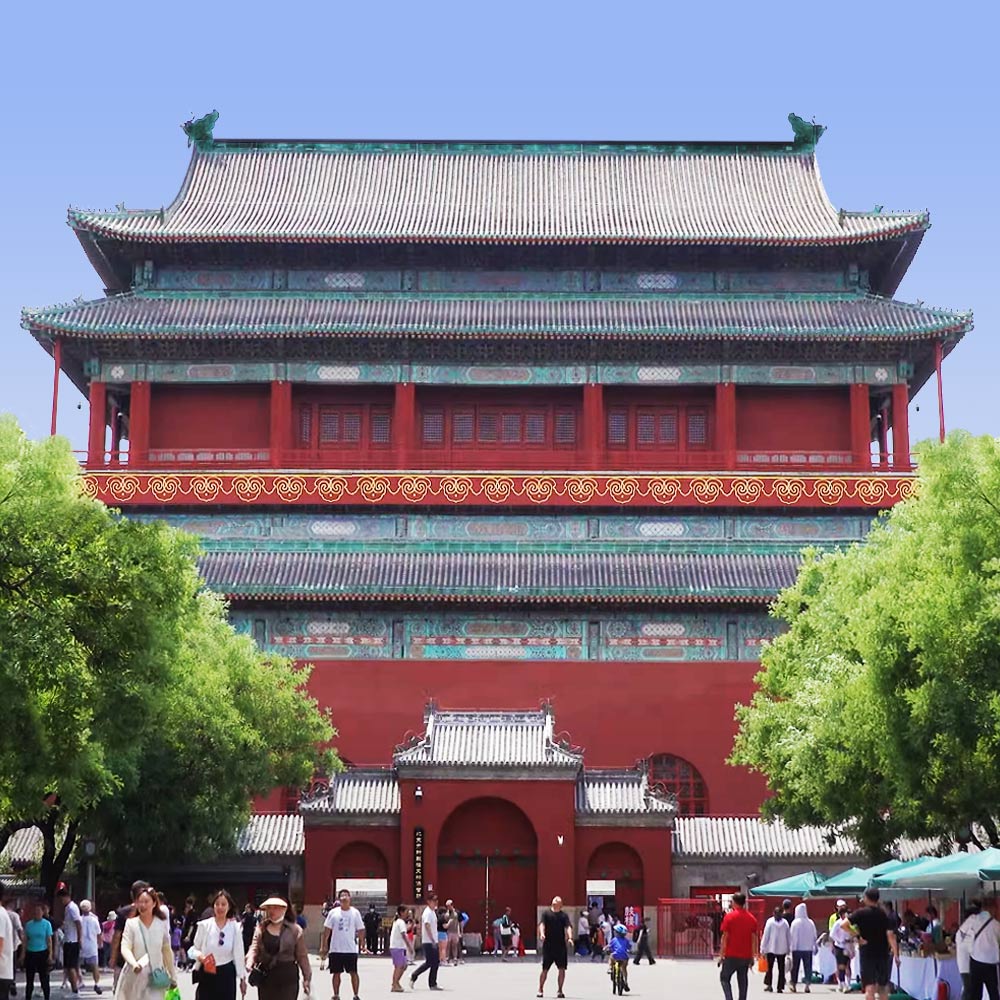 The Drum Tower of Beijing, built in the 13th century
during the Yuan dynasty, Beijing, China.
The Drum Tower of Beijing, built in the 13th century
during the Yuan dynasty, Beijing, China.
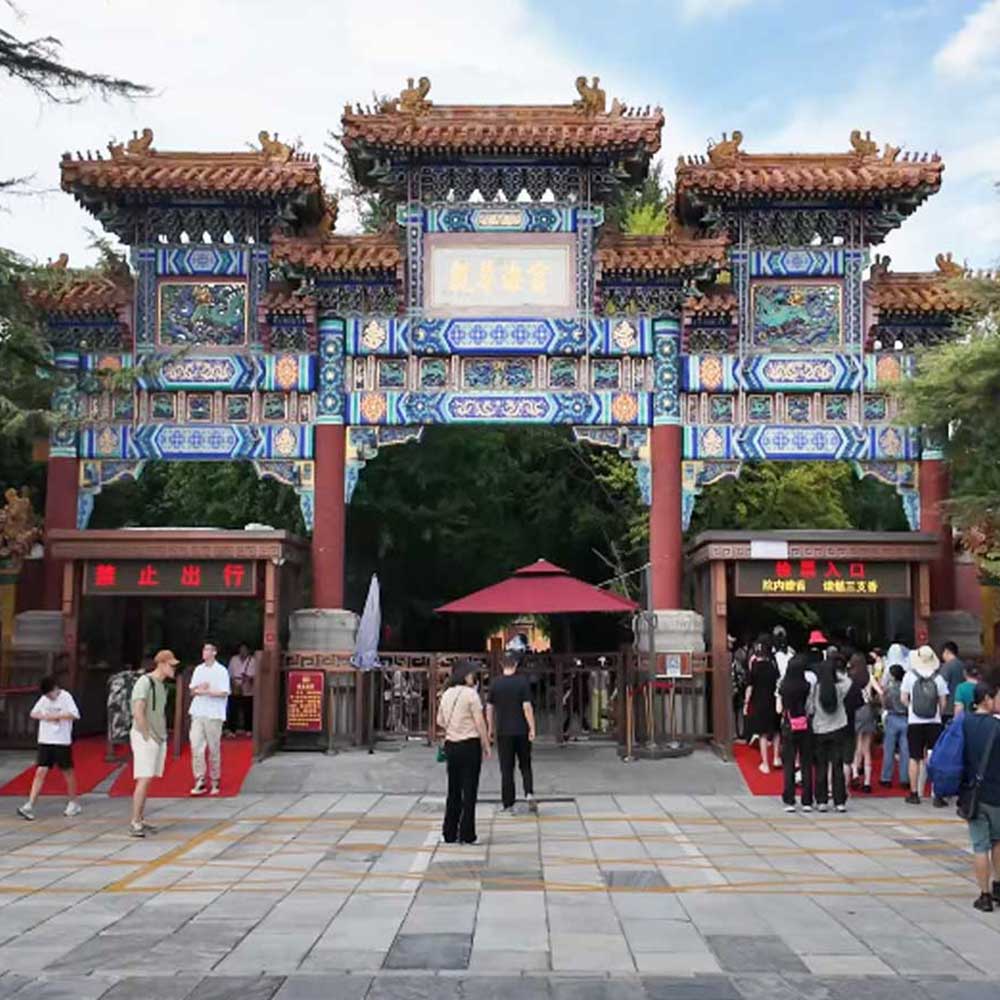 Entrance to The Yonghe Temple, or Lama Temple, Sect:
Tibetan Buddhism, built in 1694, located on 12 Yonghegong
Street, Dongcheng District, Beijing, China.
Entrance to The Yonghe Temple, or Lama Temple, Sect:
Tibetan Buddhism, built in 1694, located on 12 Yonghegong
Street, Dongcheng District, Beijing, China.
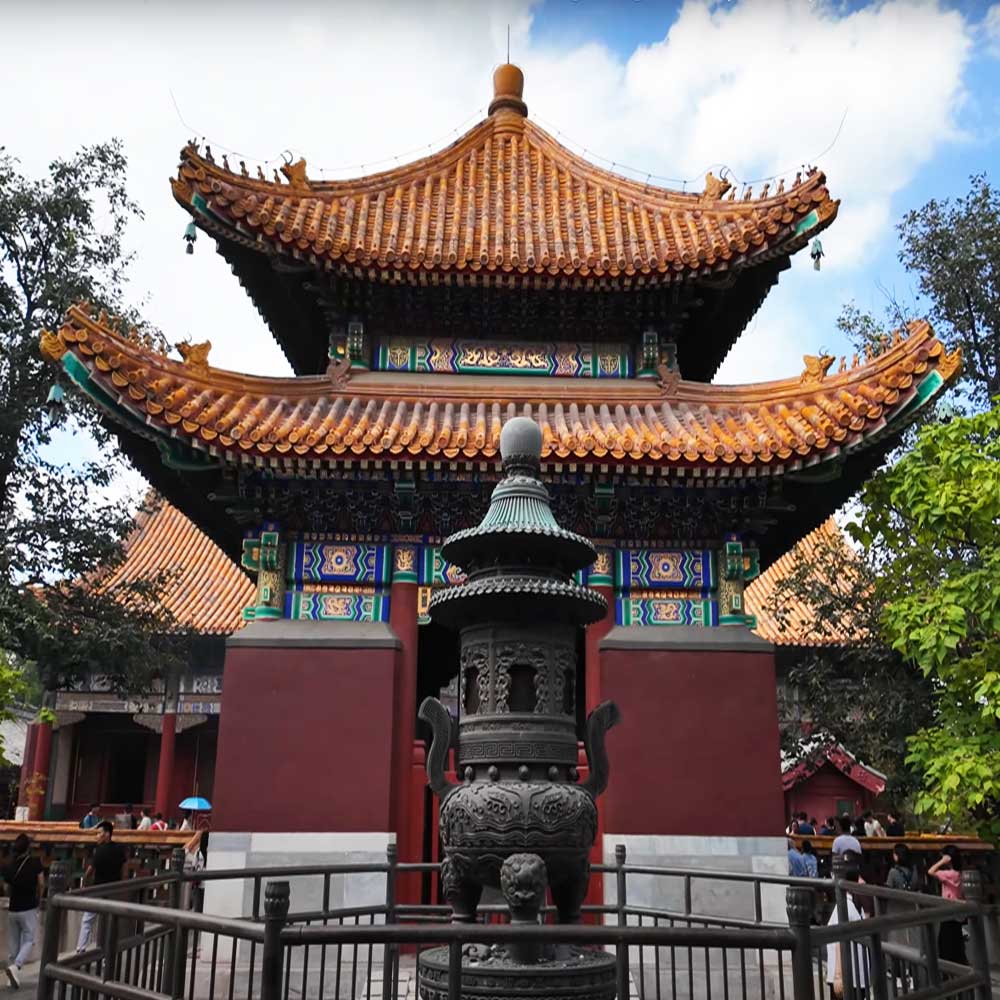 The Yonghe Temple, or Lama Temple, Hall of Harmony
and Peace, Lama Temple, Beijing, China.
The Yonghe Temple, or Lama Temple, Hall of Harmony
and Peace, Lama Temple, Beijing, China.
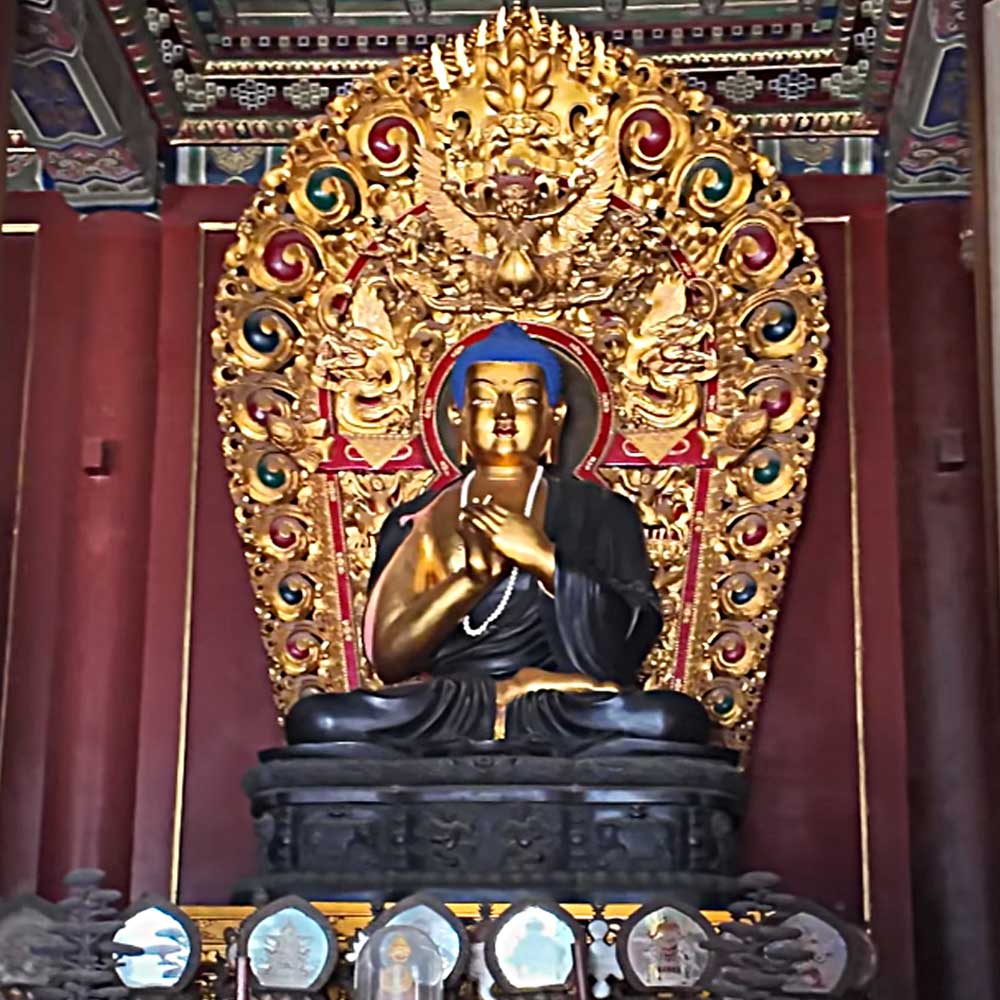 The Yonghe Temple, or Lama Temple, Statue of
Manjushri Bodhisattva enshrined in the Tanzong Hall, Beijing,
China.
The Yonghe Temple, or Lama Temple, Statue of
Manjushri Bodhisattva enshrined in the Tanzong Hall, Beijing,
China.
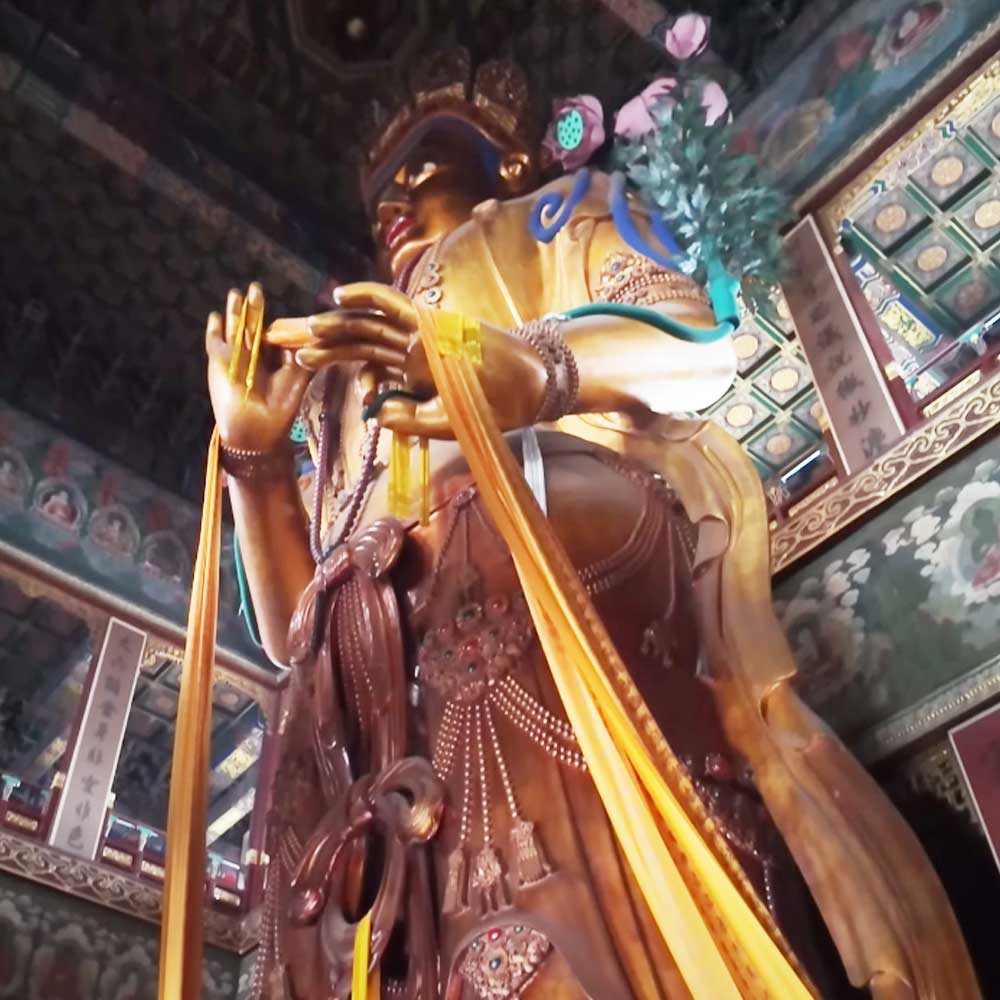 Statue of the Maitreya Buddha, white sandalwood, 18m
or 60 foot high, in main hall, Lama Temple, Sect: Tibetan
Buddhism, built in 1694, located on 12 Yonghegong Street,
Dongcheng District, Beijing, China.
Statue of the Maitreya Buddha, white sandalwood, 18m
or 60 foot high, in main hall, Lama Temple, Sect: Tibetan
Buddhism, built in 1694, located on 12 Yonghegong Street,
Dongcheng District, Beijing, China.
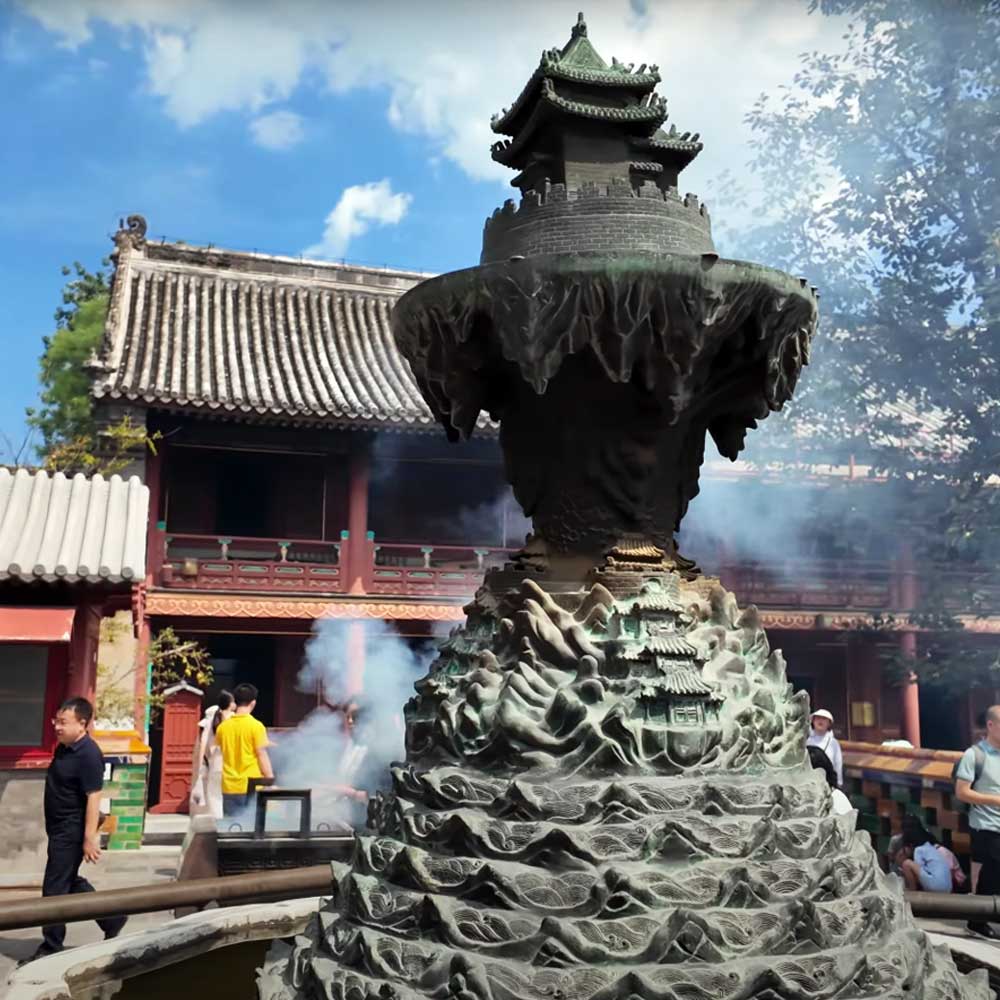 The Hall of Harmony and Peace (雍和宮), Lama
Temple, fountain and incense burner, Sect: Tibetan
Buddhism, built in 1694, located on 12 Yonghegong Street,
Dongcheng District, Beijing, China
The Hall of Harmony and Peace (雍和宮), Lama
Temple, fountain and incense burner, Sect: Tibetan
Buddhism, built in 1694, located on 12 Yonghegong Street,
Dongcheng District, Beijing, China
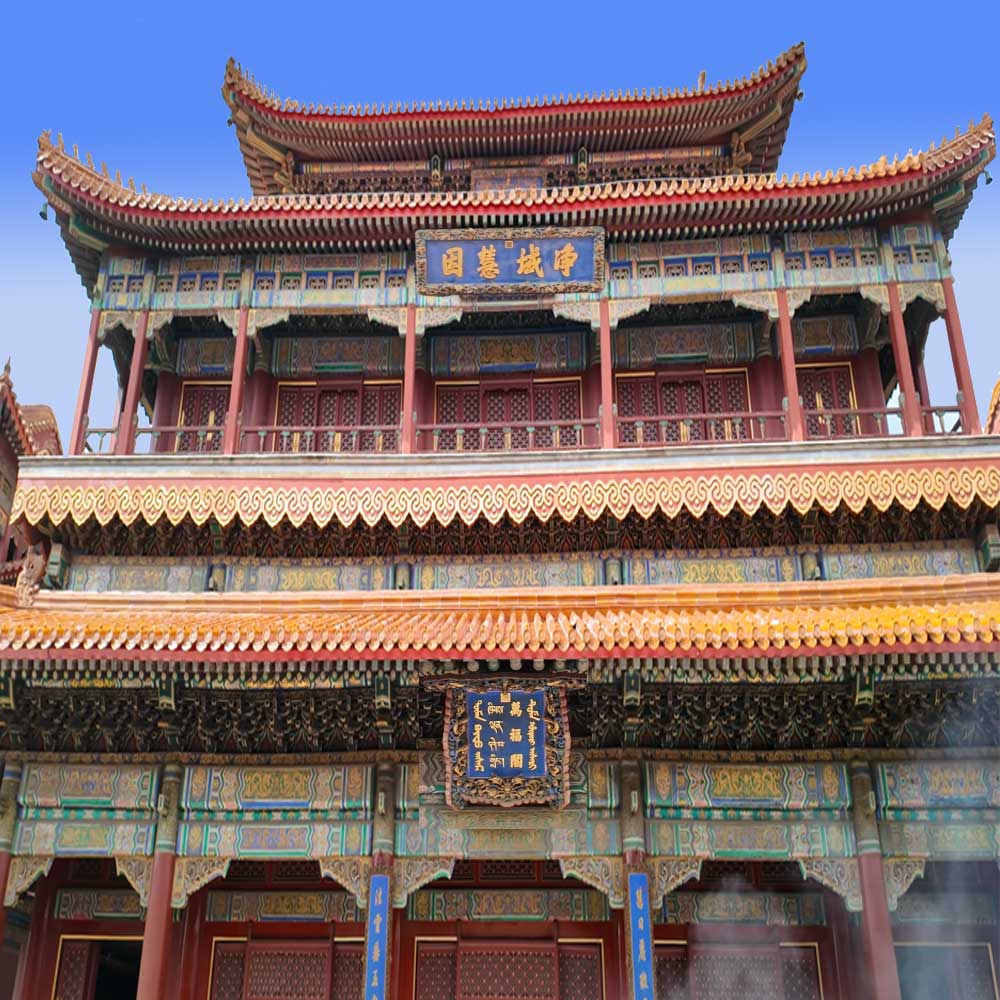 The Pavilion of Ten Thousand Happinesses, Lama
Temple, Sect: Tibetan Buddhism, built in 1694, located on 12
Yonghegong Street, Dongcheng District, Beijing, China
The Pavilion of Ten Thousand Happinesses, Lama
Temple, Sect: Tibetan Buddhism, built in 1694, located on 12
Yonghegong Street, Dongcheng District, Beijing, China
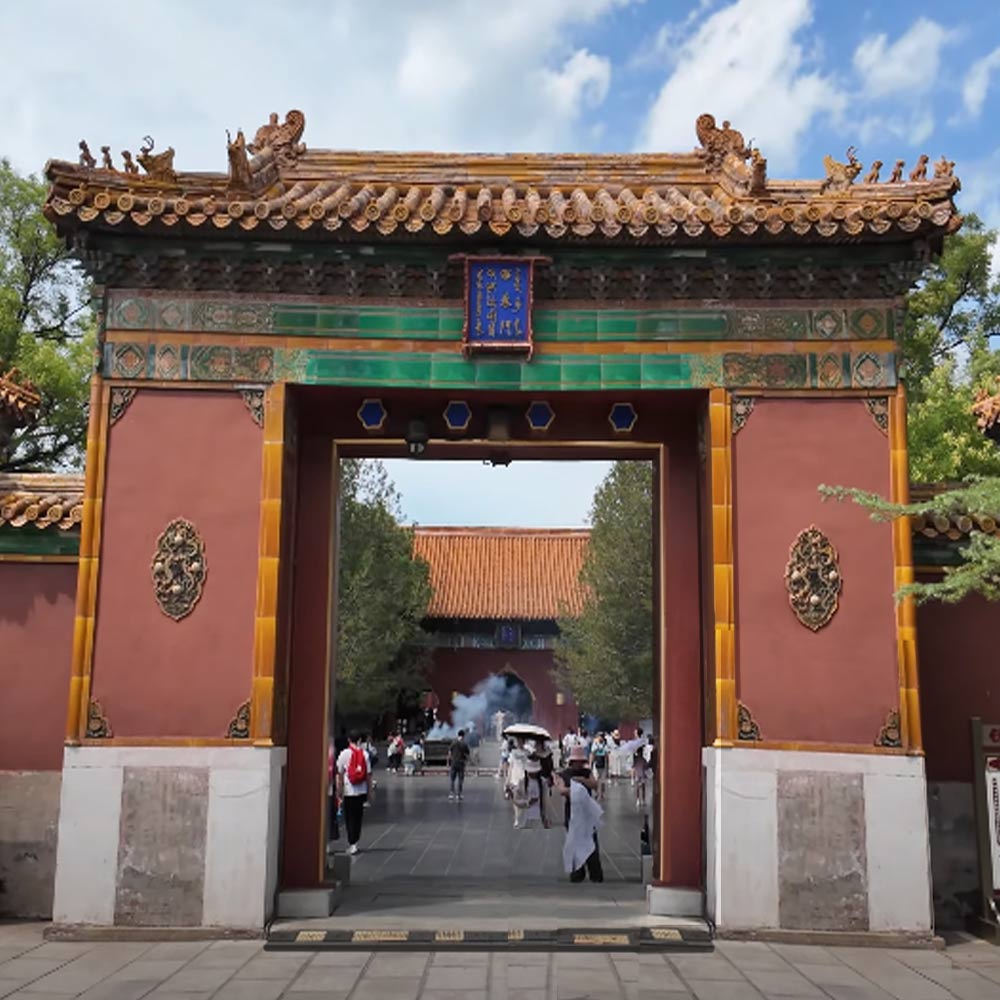 Entrance thru Zhaotai Gate, to the Hall of Harmony
and Peace, Lama Temple, Sect: Tibetan Buddhism, built in 1694,
located on 12 Yonghegong Street, Dongcheng District, Beijing,
China.
Entrance thru Zhaotai Gate, to the Hall of Harmony
and Peace, Lama Temple, Sect: Tibetan Buddhism, built in 1694,
located on 12 Yonghegong Street, Dongcheng District, Beijing,
China.
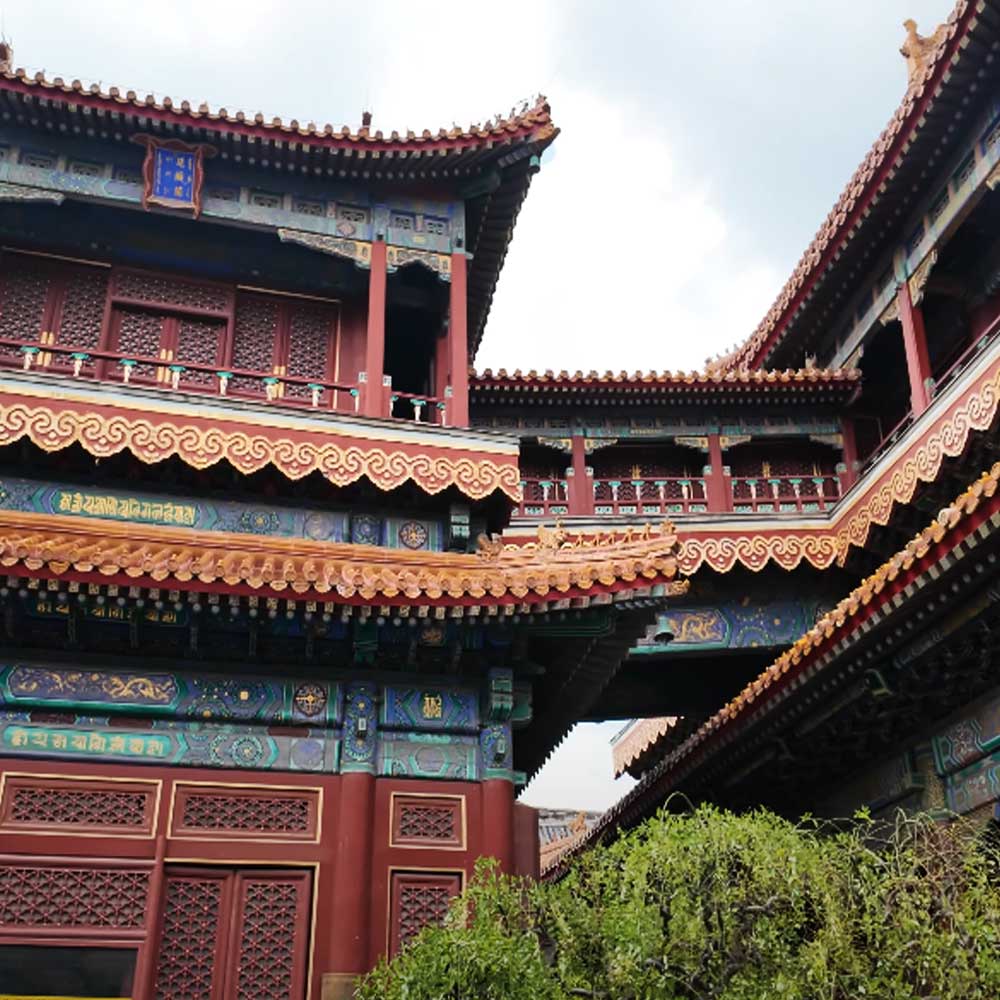 Lama Temple, The main building and its many halls
and walk way connections, Sect: Tibetan Buddhism, built in 1694,
located on 12 Yonghegong Street, Dongcheng District, Beijing,
China.
Lama Temple, The main building and its many halls
and walk way connections, Sect: Tibetan Buddhism, built in 1694,
located on 12 Yonghegong Street, Dongcheng District, Beijing,
China.
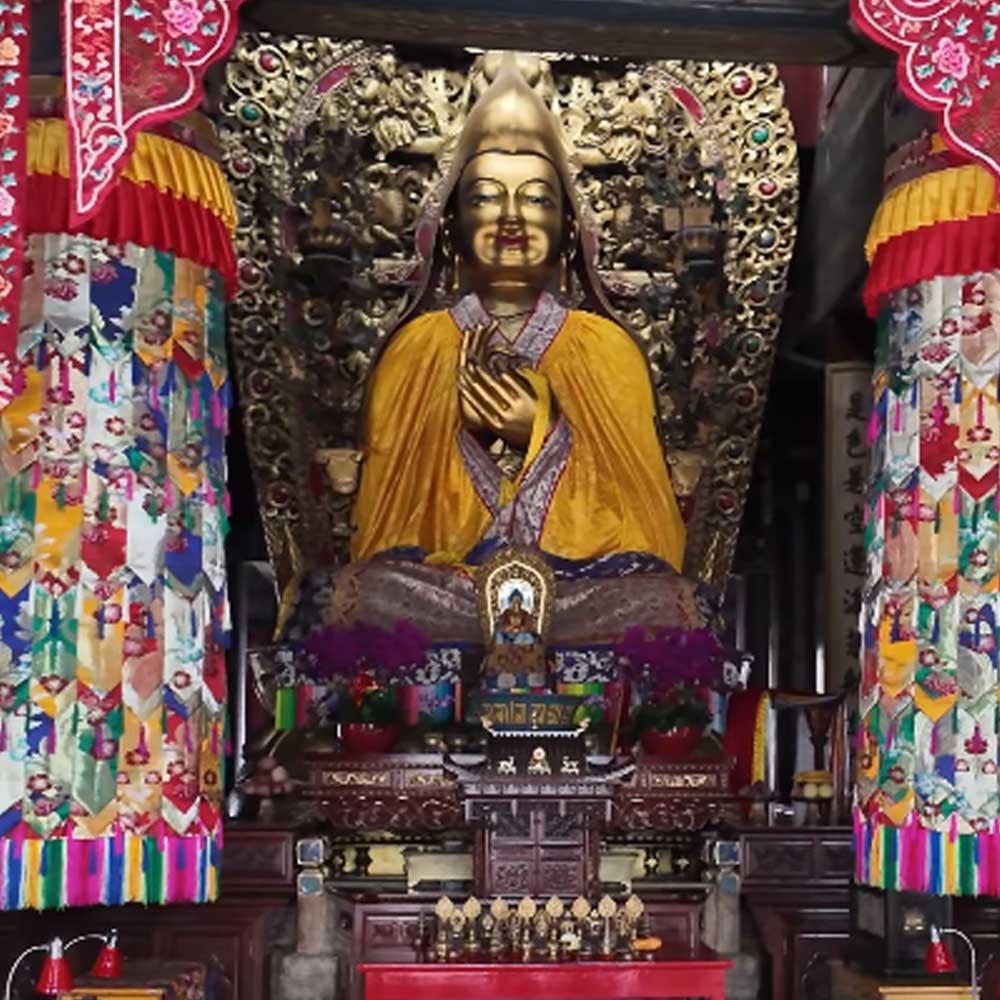 The Shrine of Tsongkhapa, 1357–1419, was an
influential Tibetan Buddhist monk, philosopher and tantric yogi,
Lama Temple, Sect: Tibetan Buddhism, built in 1694, located on
12 Yonghegong Street, Dongcheng District, Beijing, China.
The Shrine of Tsongkhapa, 1357–1419, was an
influential Tibetan Buddhist monk, philosopher and tantric yogi,
Lama Temple, Sect: Tibetan Buddhism, built in 1694, located on
12 Yonghegong Street, Dongcheng District, Beijing, China.
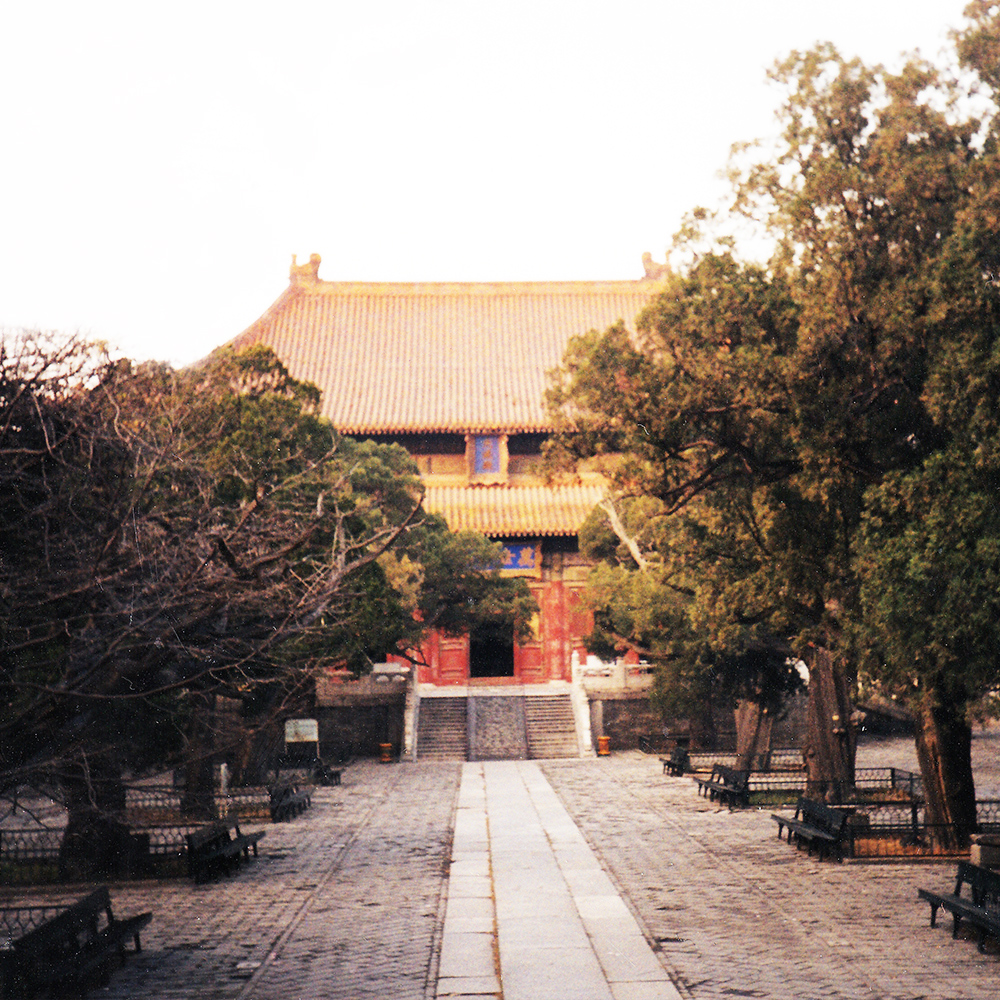 The Temple of Confucius in Beijing is the place where
people paid homage to Confucius during the Yuan Dynasty
(1271-1368), the temple now houses the Beijing Capital Museum,
built 1302, Beijing, China.
The Temple of Confucius in Beijing is the place where
people paid homage to Confucius during the Yuan Dynasty
(1271-1368), the temple now houses the Beijing Capital Museum,
built 1302, Beijing, China.
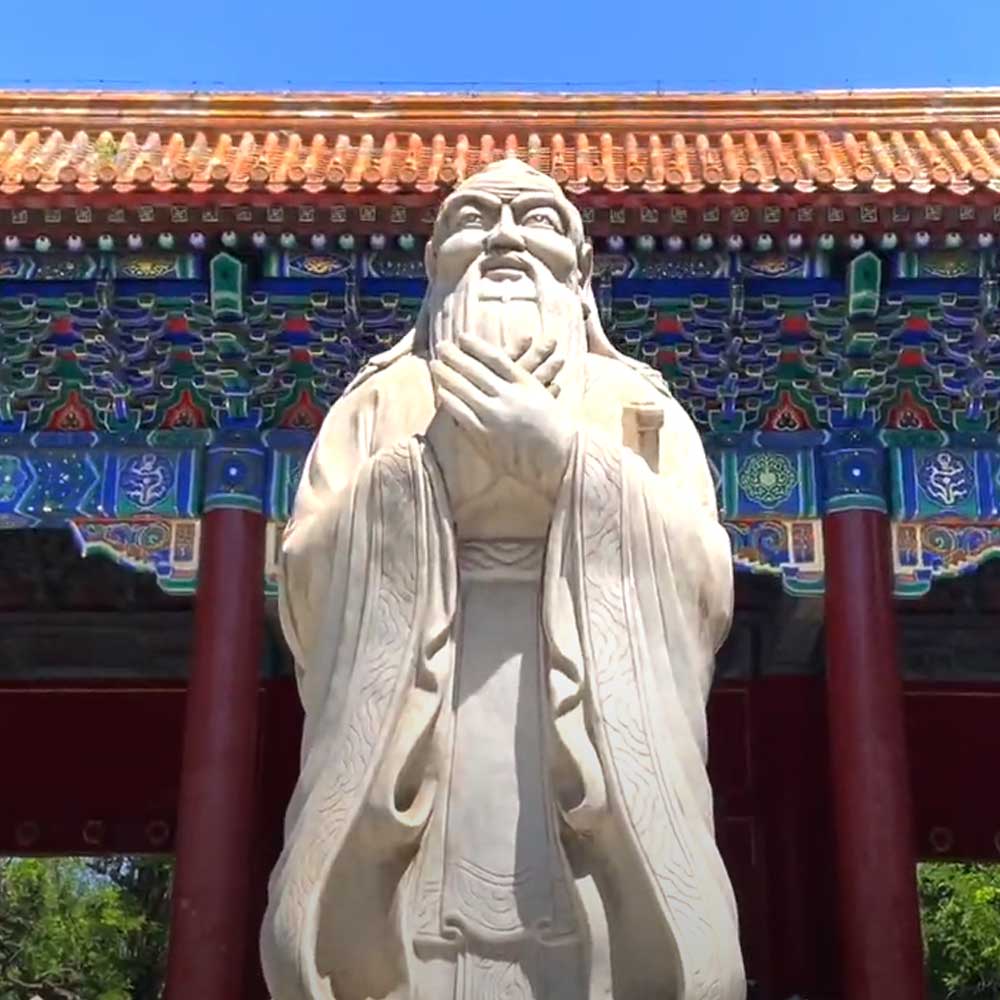 Confucius Statue at the Confucius Temple, carved
marble, 1369, Beijing, China.
Confucius Statue at the Confucius Temple, carved
marble, 1369, Beijing, China.
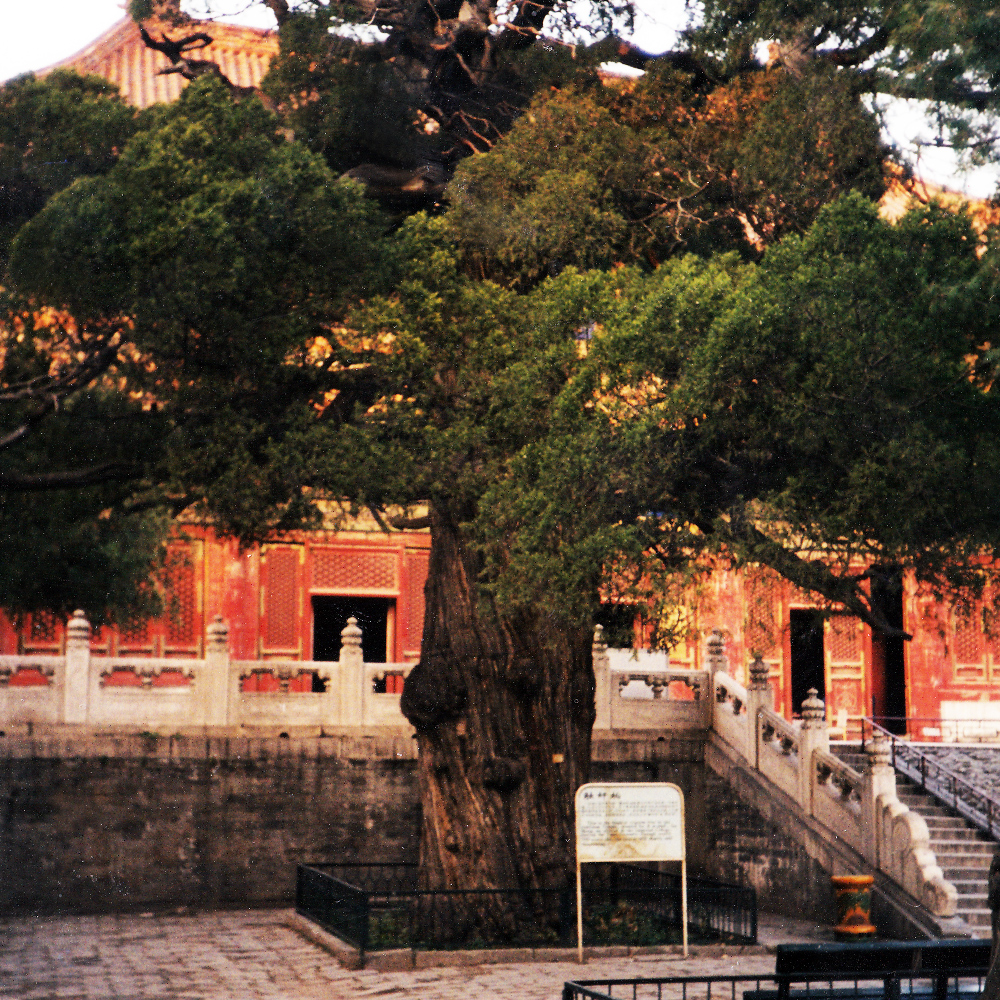 700 YEAR OLD CYPRESS, Chujian Bai (Touch of Evil
Cypress) Temple of Confucius, at Guozijian Street, Beijing,
China.
700 YEAR OLD CYPRESS, Chujian Bai (Touch of Evil
Cypress) Temple of Confucius, at Guozijian Street, Beijing,
China.
GREAT WALL OF CHINA
The Great Wall of China is a series of
stone and earthen fortifications in northern China, built
originally to protect the northern borders of the Chinese Empire
against intrusions by various nomadic groups. Several walls have
been built since the 5th century BC that are referred to
collectively as the Great Wall, which has been rebuilt and
maintained from the 5th century BC through the 16th century. The
Great Wall is reputed as one of the seven construction wonders
in the world not only for its long history, but its massive
construction size, and its unique architectural style as well. A
great army of manpower, composed of soldiers, prisoners, and
local people, built the wall. I visited 3 different sections of
The Great Wall: Badaling, Simatai, and the Han Dynasty of Qin
Shi Huang from 3rd century BC. in the Gobi Desert.
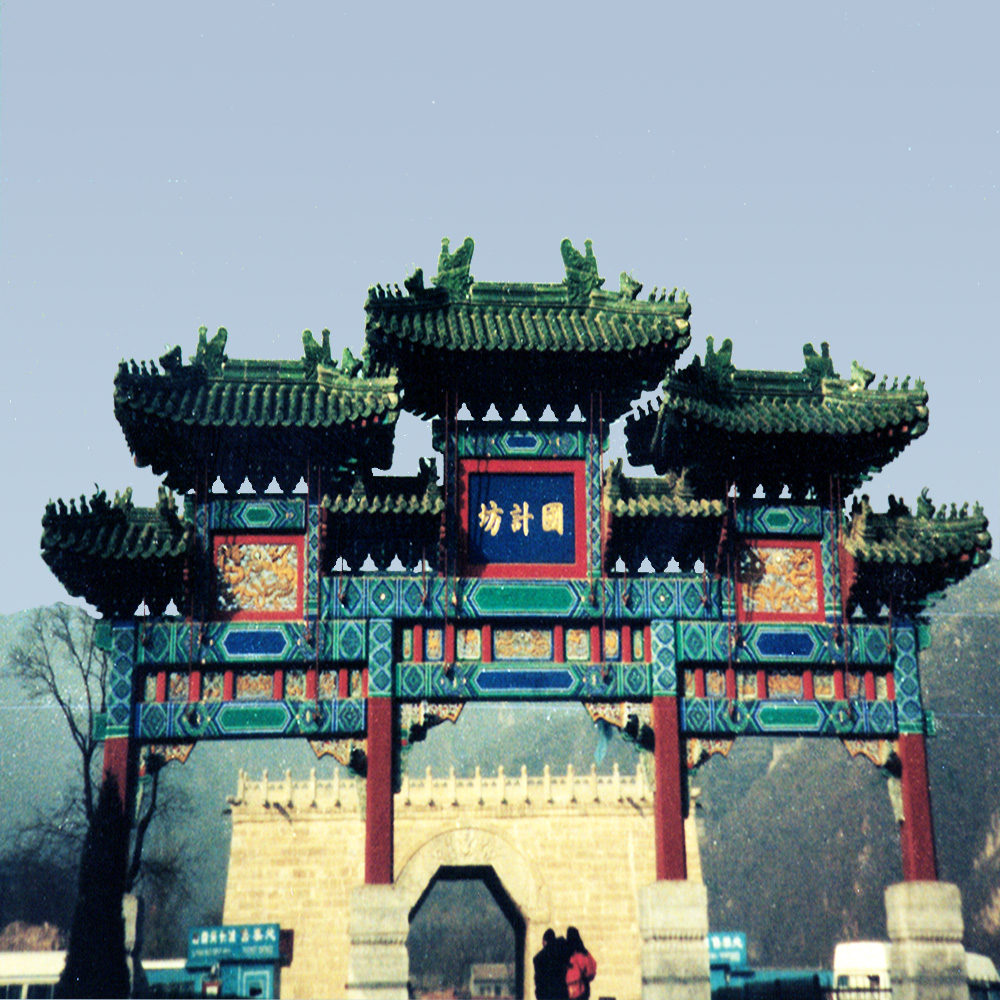 1.) The Badaling Great Wall Entrance, 43 miles from
Beijing is the favorite of the Chinese and tourist, Beijing,
China
1.) The Badaling Great Wall Entrance, 43 miles from
Beijing is the favorite of the Chinese and tourist, Beijing,
China
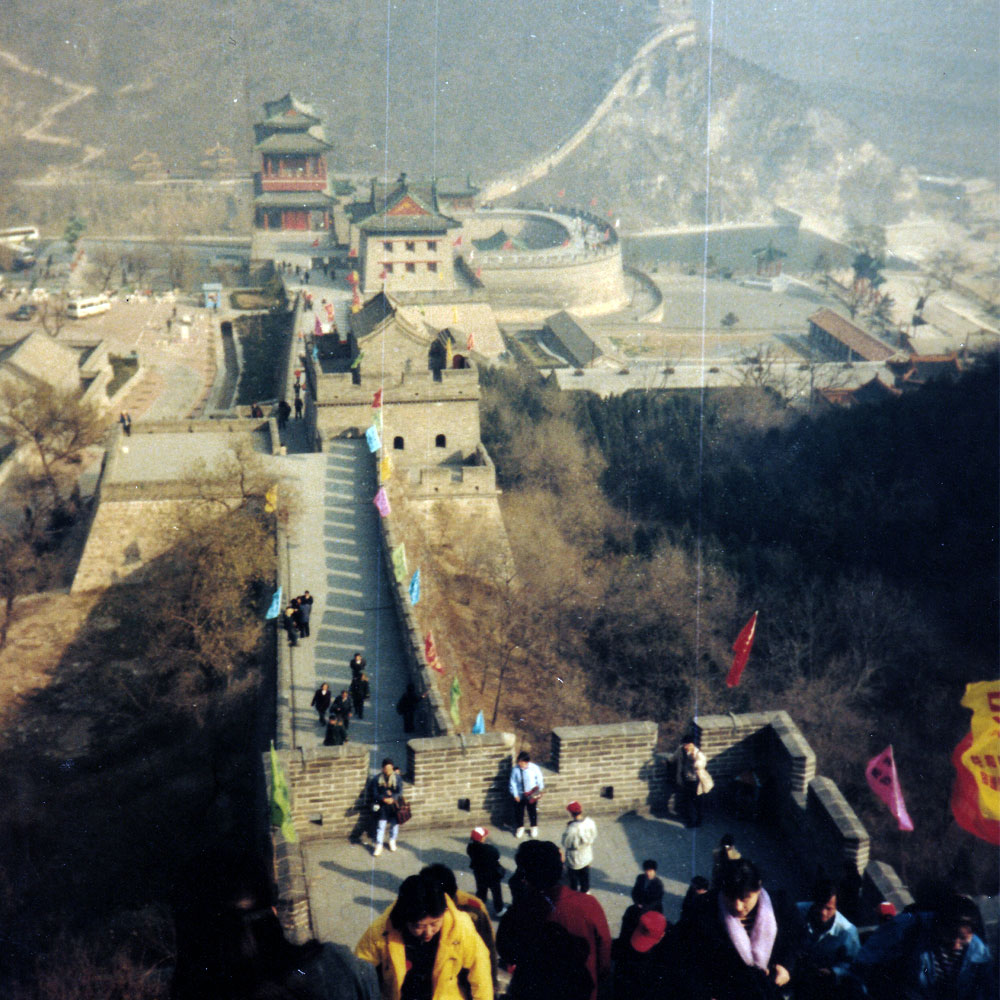 2.) Built and reinforced during the Ming Dynasty
1368-1644, Badaling is the best maintained section of The Great
Wall, Beijing, China
2.) Built and reinforced during the Ming Dynasty
1368-1644, Badaling is the best maintained section of The Great
Wall, Beijing, China
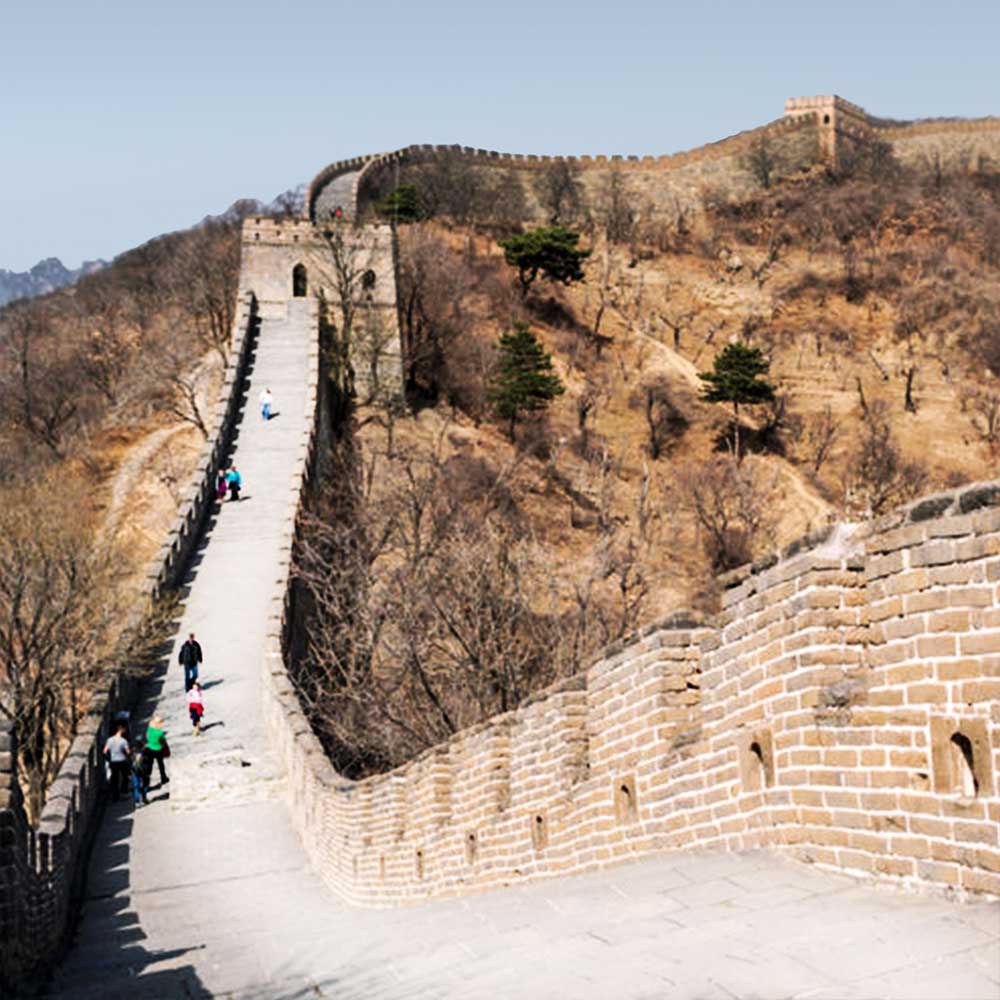 3.) There are 43 towers on the Badaling section of
the Great Wall, Beijing, China
3.) There are 43 towers on the Badaling section of
the Great Wall, Beijing, China
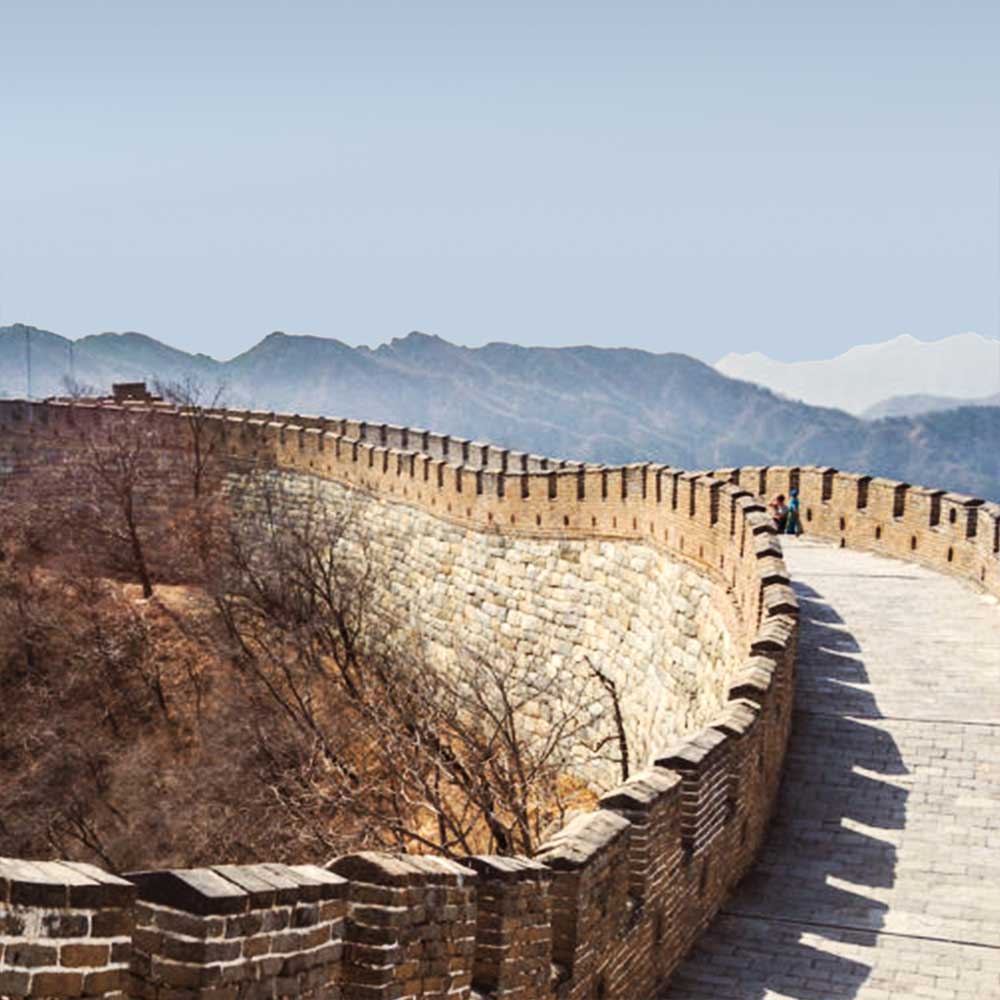 4.) The Wall winds up and down the mountain ridges
with incredible scenic views, Beijing, China
4.) The Wall winds up and down the mountain ridges
with incredible scenic views, Beijing, China
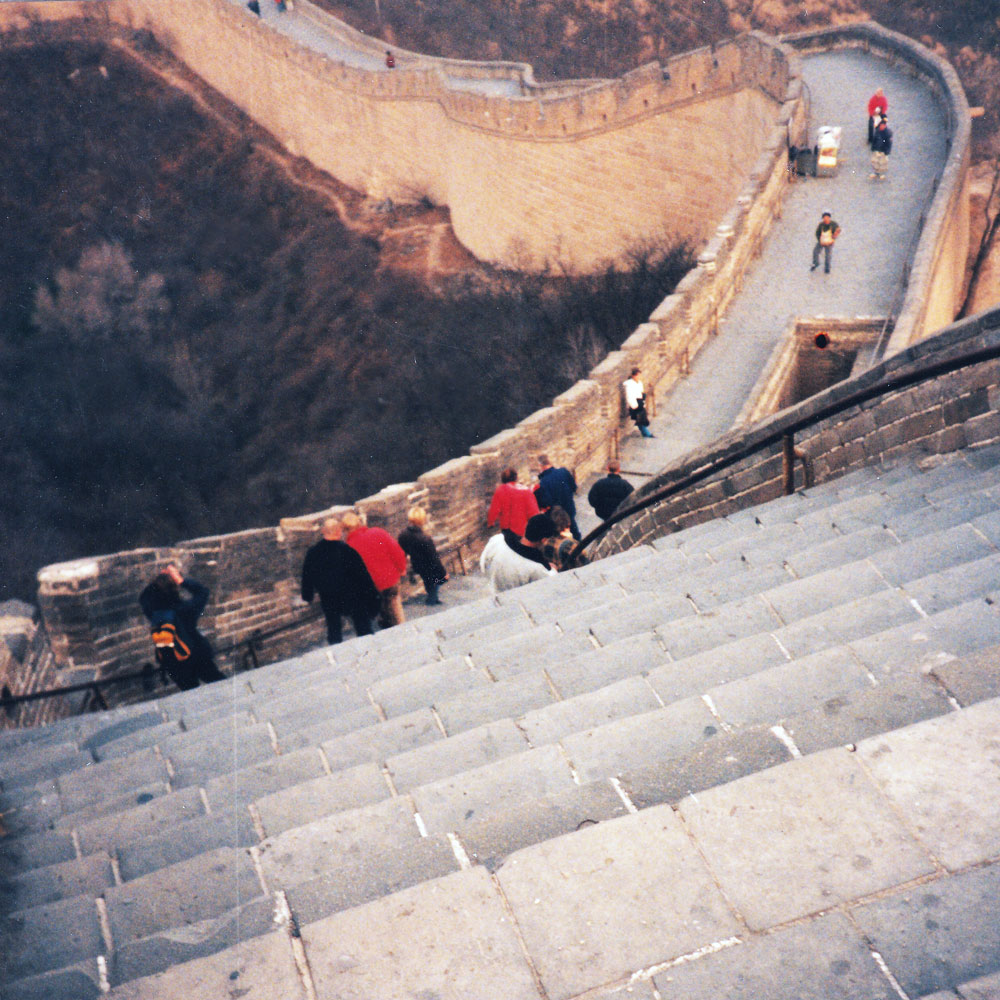 5.) Badaling Great Wall was built in the Ming Dynasty
(1505) to occupy a commanding and strategic position for
protecting Beijing and the Juyongguan Pass, Beijing, China
5.) Badaling Great Wall was built in the Ming Dynasty
(1505) to occupy a commanding and strategic position for
protecting Beijing and the Juyongguan Pass, Beijing, China
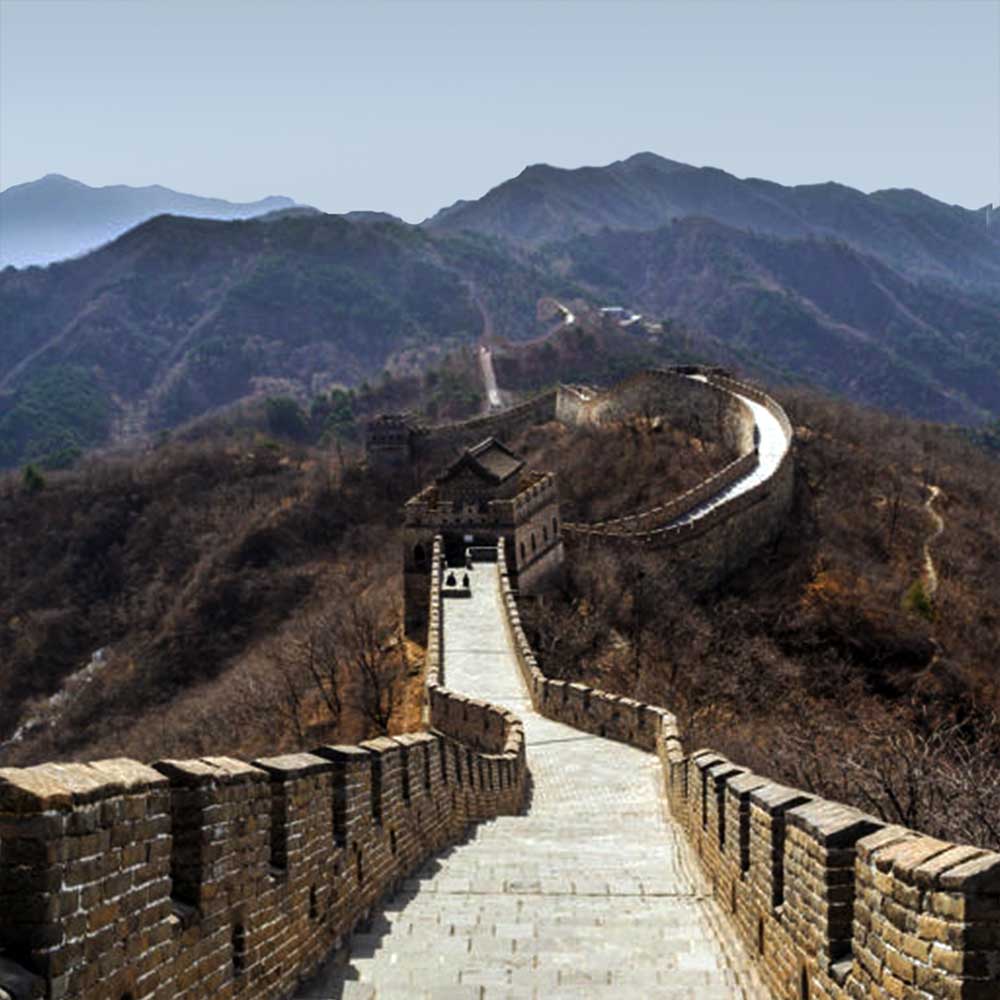 6.) The highest point of Badaling is Beibalou at
1,015 meters, (3,330 ft) and the view is magnificent, Beijing,
China
6.) The highest point of Badaling is Beibalou at
1,015 meters, (3,330 ft) and the view is magnificent, Beijing,
China
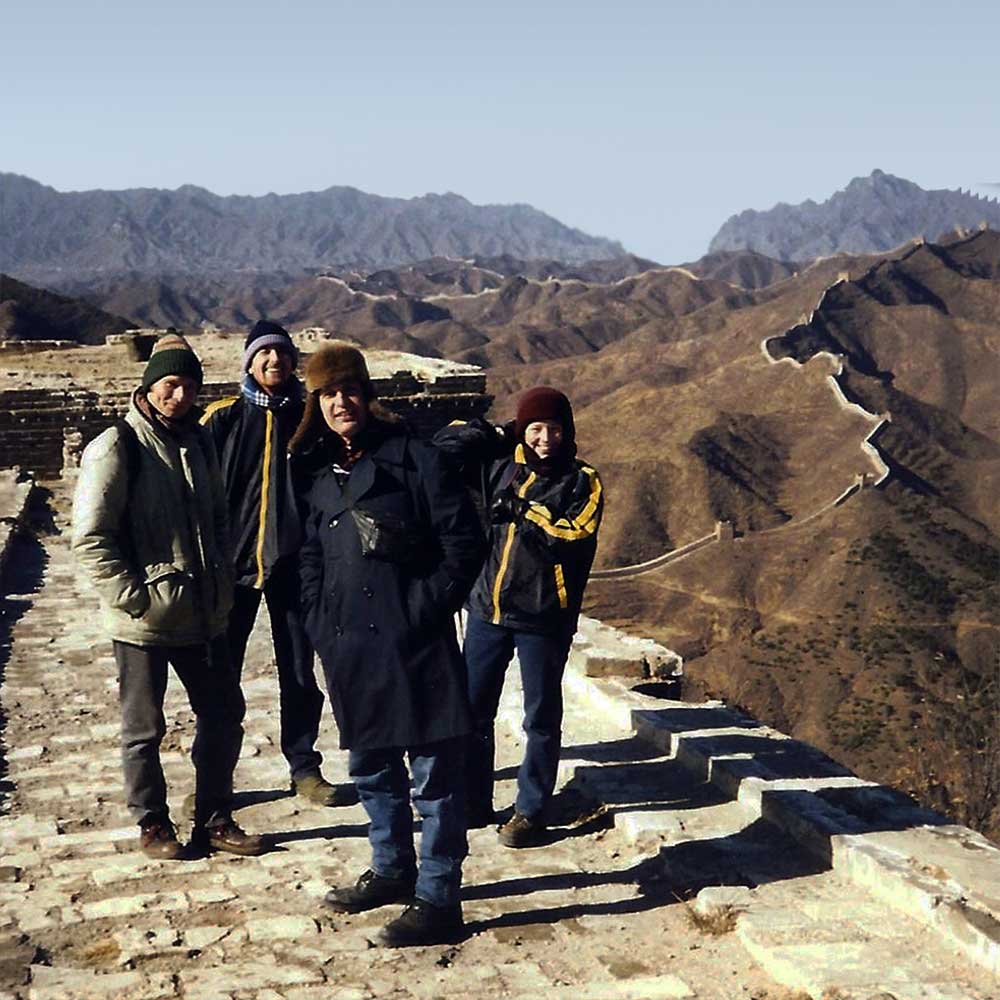 7.) I and other traveling tourist at the Simatai
Great Wall, a section located 120 km or 75 miles north-east of
Beijing, in Miyun County, built during the Qi Dynasty (550–577
AD), Miyun, Beijing, China
7.) I and other traveling tourist at the Simatai
Great Wall, a section located 120 km or 75 miles north-east of
Beijing, in Miyun County, built during the Qi Dynasty (550–577
AD), Miyun, Beijing, China
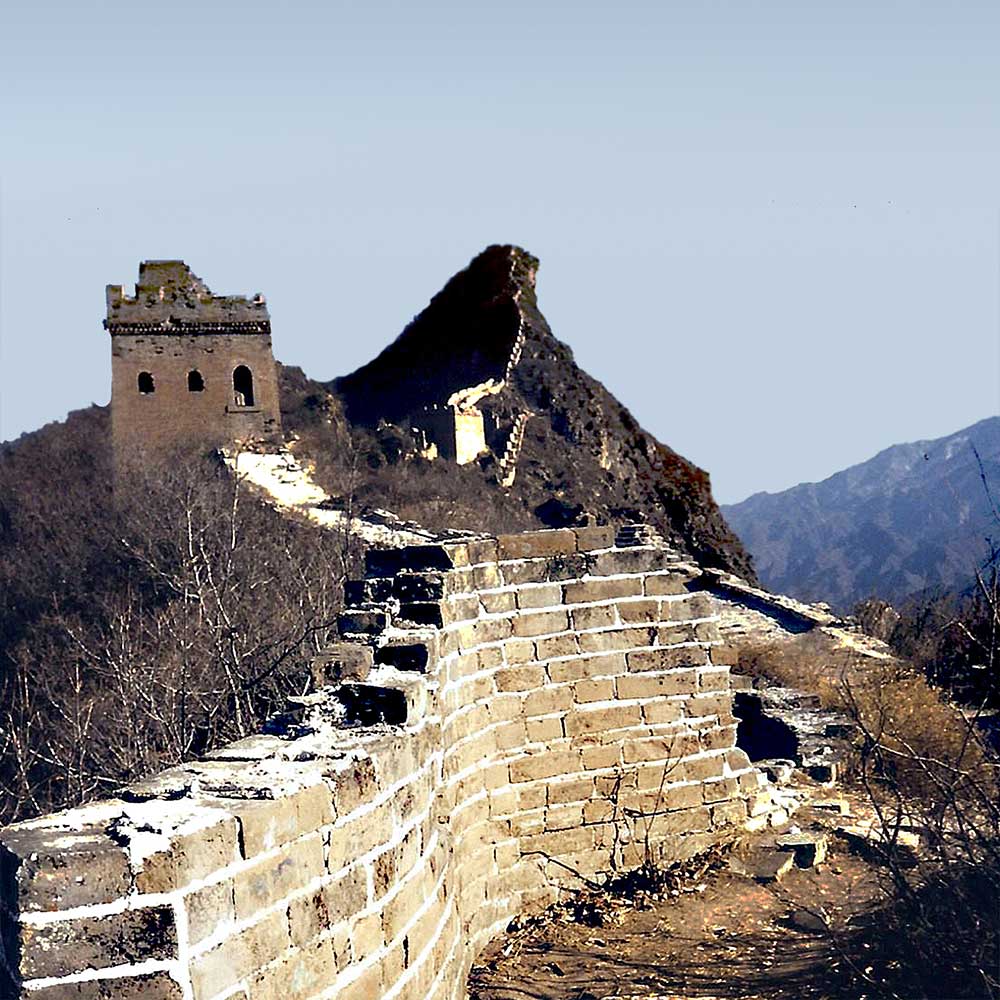 8.) The Simatai Great Wall, continues to wind along
the rolling hills for enless miles, not as well maintained as
Badaling but worth the visit, Miyun, Beijing, China
8.) The Simatai Great Wall, continues to wind along
the rolling hills for enless miles, not as well maintained as
Badaling but worth the visit, Miyun, Beijing, China
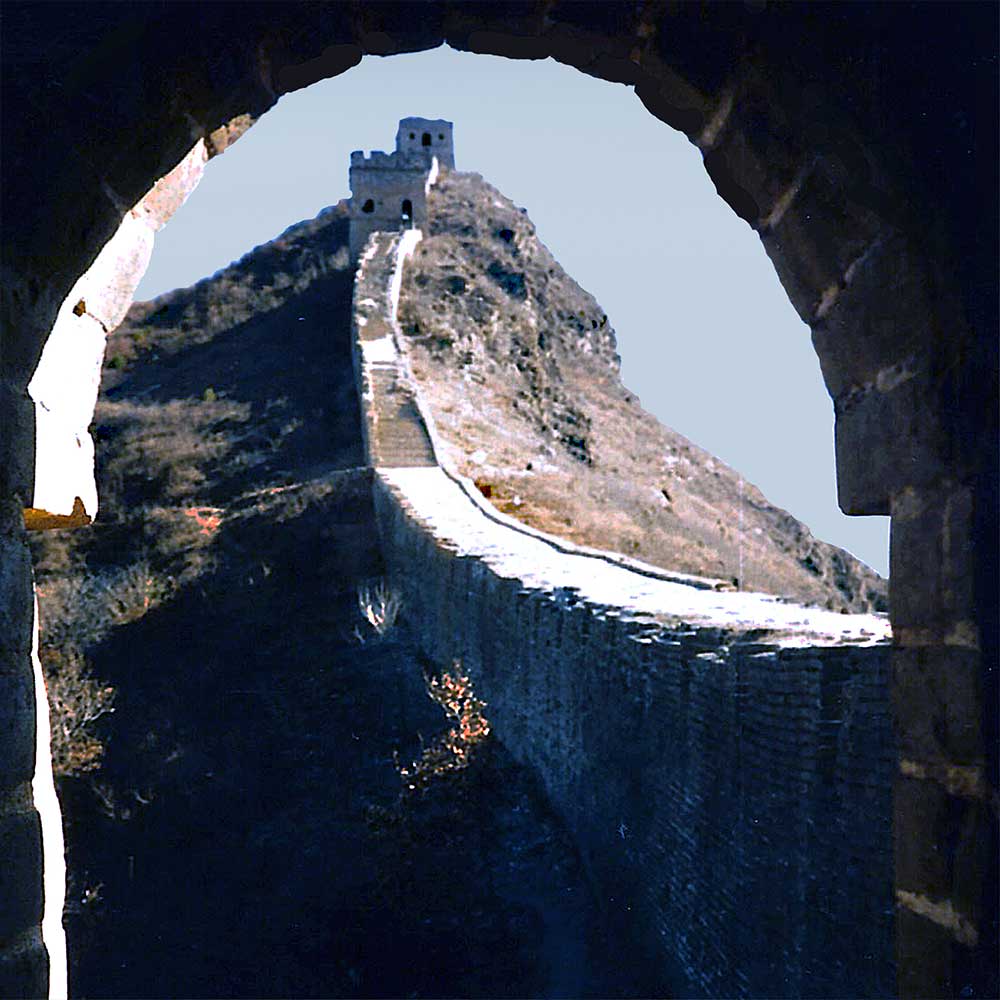 9.) The Simatai Great Wall, has 17 watchtowers
hanging precariously onto the Yan Mountains known for their
steepness, Miyun, Beijing, China
9.) The Simatai Great Wall, has 17 watchtowers
hanging precariously onto the Yan Mountains known for their
steepness, Miyun, Beijing, China
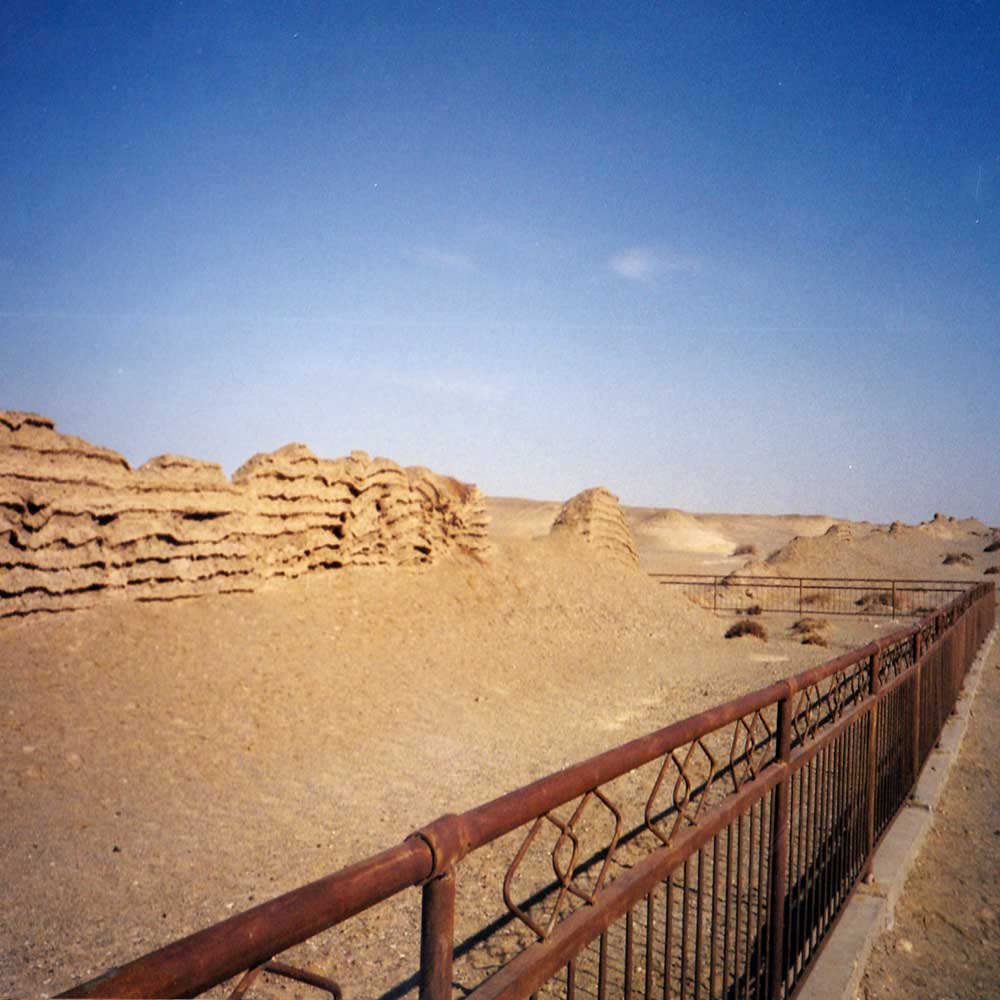 10.) Ruins of the original Han Dynasty Great Wall in
the Gobi Desert, 2nd Century BC, Dunhuang, China
10.) Ruins of the original Han Dynasty Great Wall in
the Gobi Desert, 2nd Century BC, Dunhuang, China
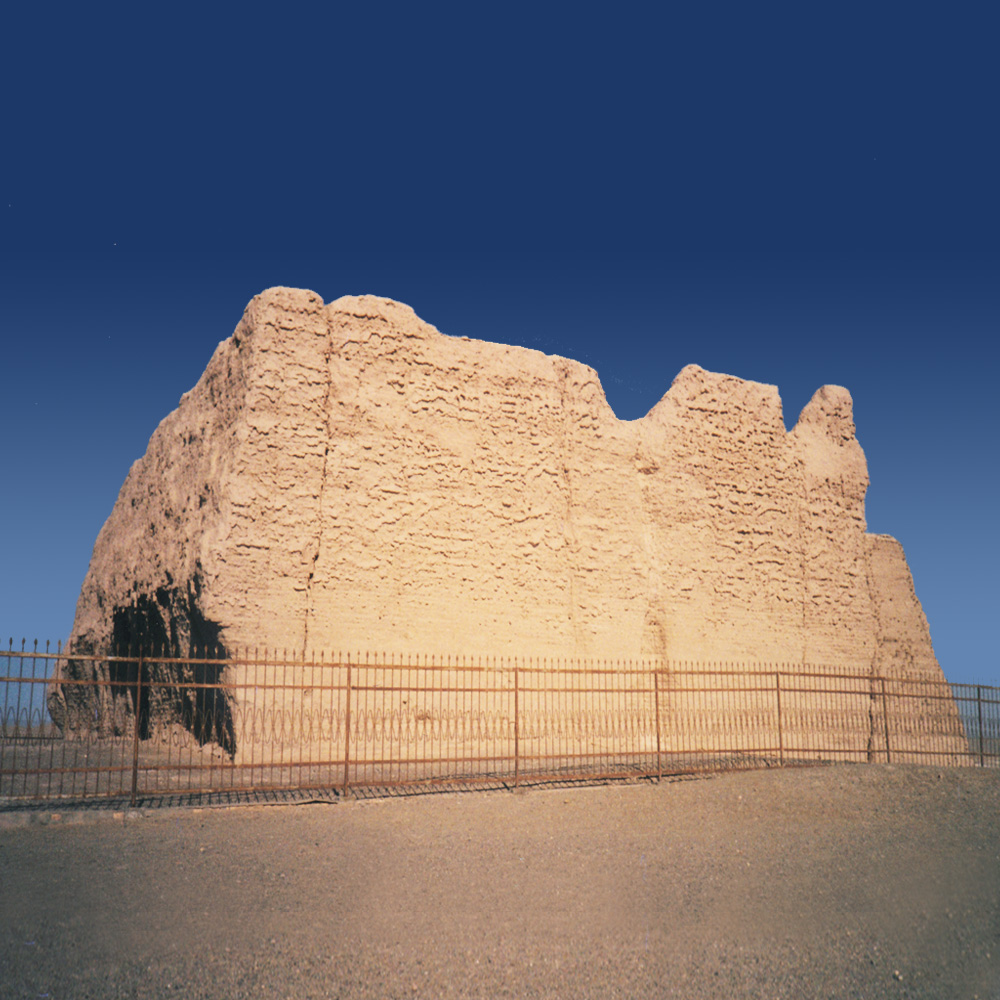 11.) Ruins of the watchtower at Yumen Pass, the Great
Wall, built by Emperor Wudi, around 121 BC, Han dynasty, in the
Gobi Desert, Dunhuang, China
11.) Ruins of the watchtower at Yumen Pass, the Great
Wall, built by Emperor Wudi, around 121 BC, Han dynasty, in the
Gobi Desert, Dunhuang, China
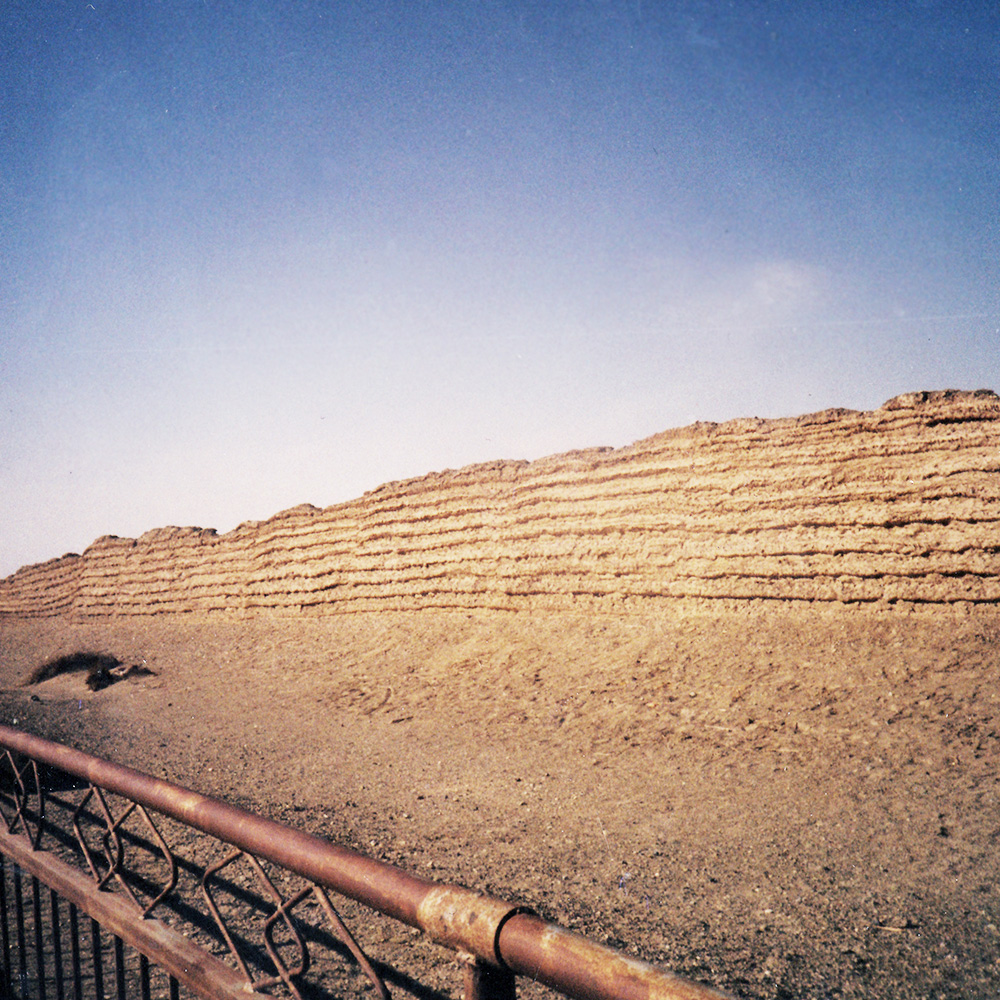 12.) Ruins of the original Han Dynasty Great Wall in
the Gobi Desert, 2nd Century BC, Dunhuang, China
12.) Ruins of the original Han Dynasty Great Wall in
the Gobi Desert, 2nd Century BC, Dunhuang, China
DUNHUANG CHINA
Dunhuang is a city in China’s northwestern
Gansu Province, on the edge of the Gobi Desert. Once a frontier
garrison on the Silk Road, it’s known today for the Mogao Caves,
a complex of 492 grottoes adorned with Buddhist statuary and
frescoes. Carved into the cliffs above the Dachuan River, the
caves were created between the 4th and the 14th centuries.
 The Gobi, is one of the world's great deserts, and a
camel ride is a must. Join group tours, with camel drivers and
ride across Echoing Singing-Sands Mountain after your visit to
the Mogao Caves, Dunhuang, China
The Gobi, is one of the world's great deserts, and a
camel ride is a must. Join group tours, with camel drivers and
ride across Echoing Singing-Sands Mountain after your visit to
the Mogao Caves, Dunhuang, China
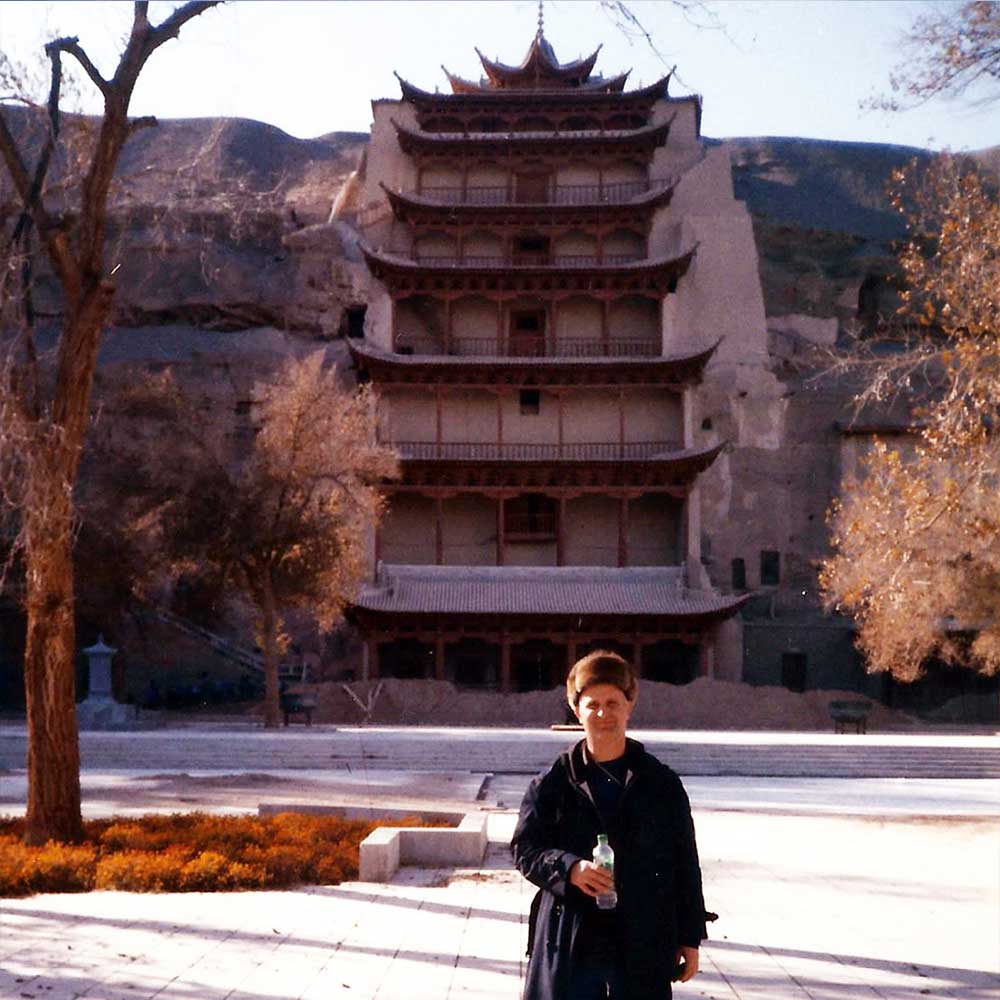 Mogao Caves Entrance to the 492 cells and cave
sanctuaries situated on a strategic point along the Silk Route
at the crossroads of trade as well as religious, cultural and
intellectual influences, Dunhuang, China
Mogao Caves Entrance to the 492 cells and cave
sanctuaries situated on a strategic point along the Silk Route
at the crossroads of trade as well as religious, cultural and
intellectual influences, Dunhuang, China
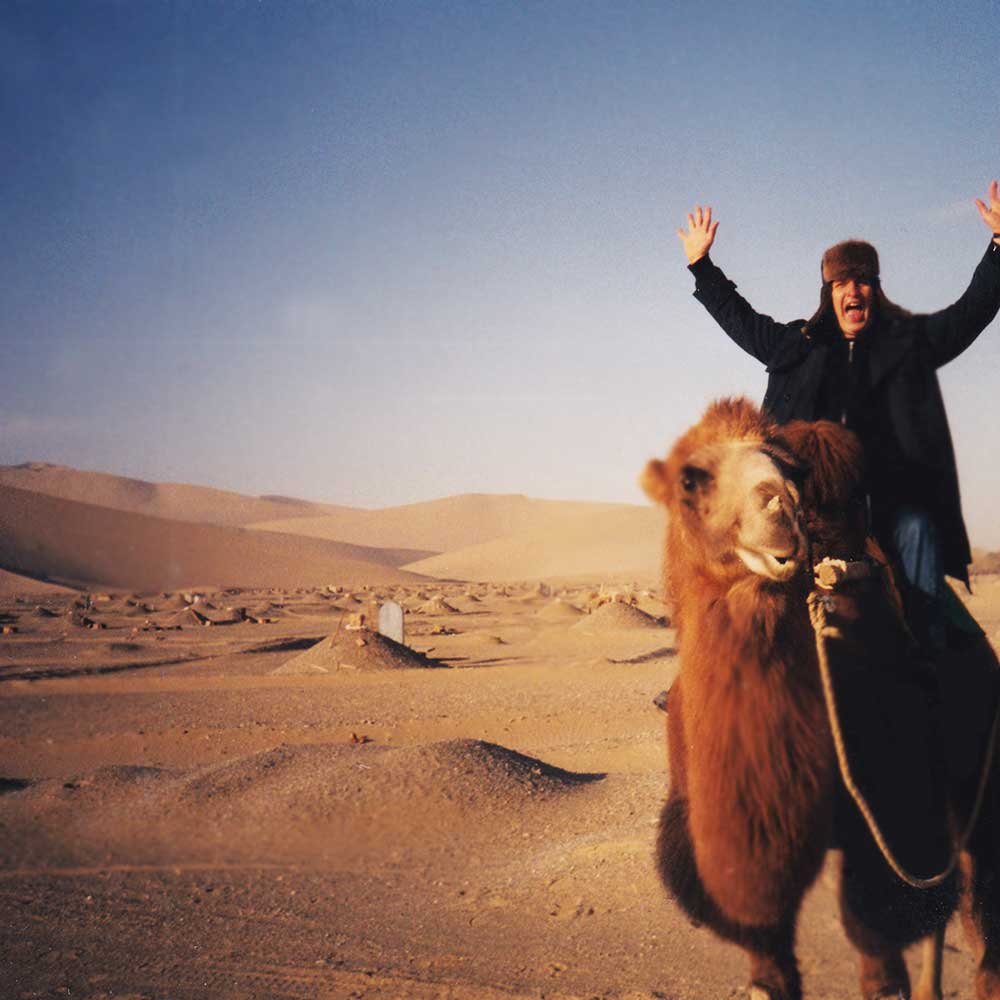 Riding camels through the Dunhuang Buddhist Cemetery
on the way to visit the Mogao caves, Dunhuang, China
Riding camels through the Dunhuang Buddhist Cemetery
on the way to visit the Mogao caves, Dunhuang, China
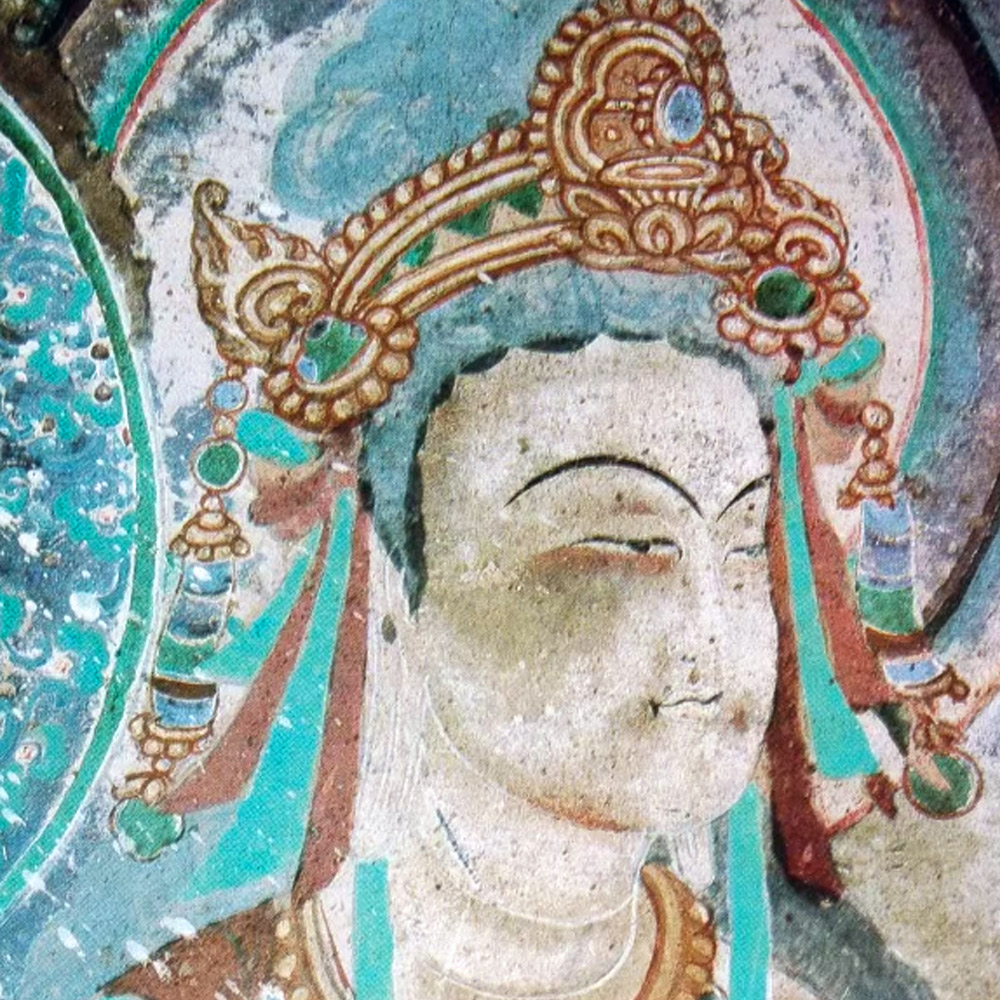 A Bodhisattva part of a fresco, Tang Dynasty, in cave
45 of Mogao Caves, Dunhuang, China
A Bodhisattva part of a fresco, Tang Dynasty, in cave
45 of Mogao Caves, Dunhuang, China
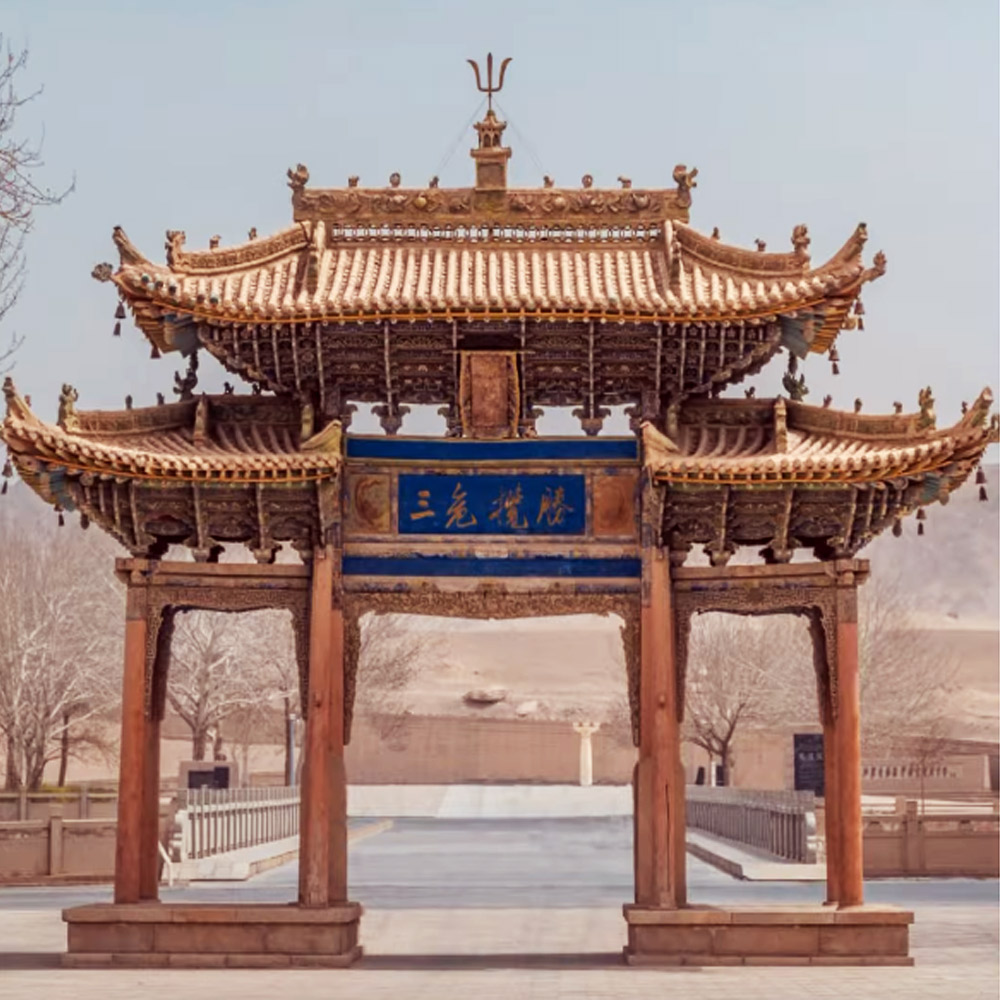 The entrance gate to the Mogao Caves, from the Tang
Dynasty (618-907 AD), Dunhuang, China
The entrance gate to the Mogao Caves, from the Tang
Dynasty (618-907 AD), Dunhuang, China
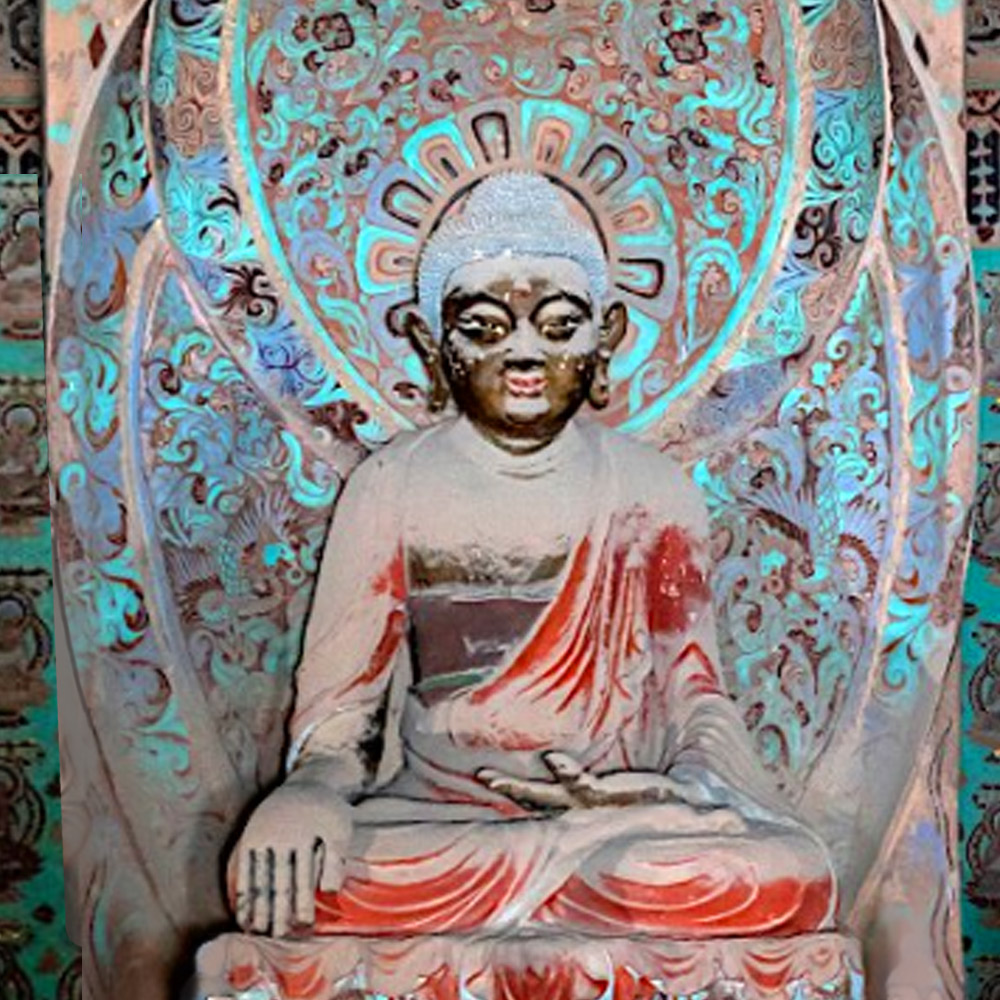 Buddha statue, Tang Dynasty, at the Mogao grottoes in
Dunhuang, China.
Buddha statue, Tang Dynasty, at the Mogao grottoes in
Dunhuang, China.
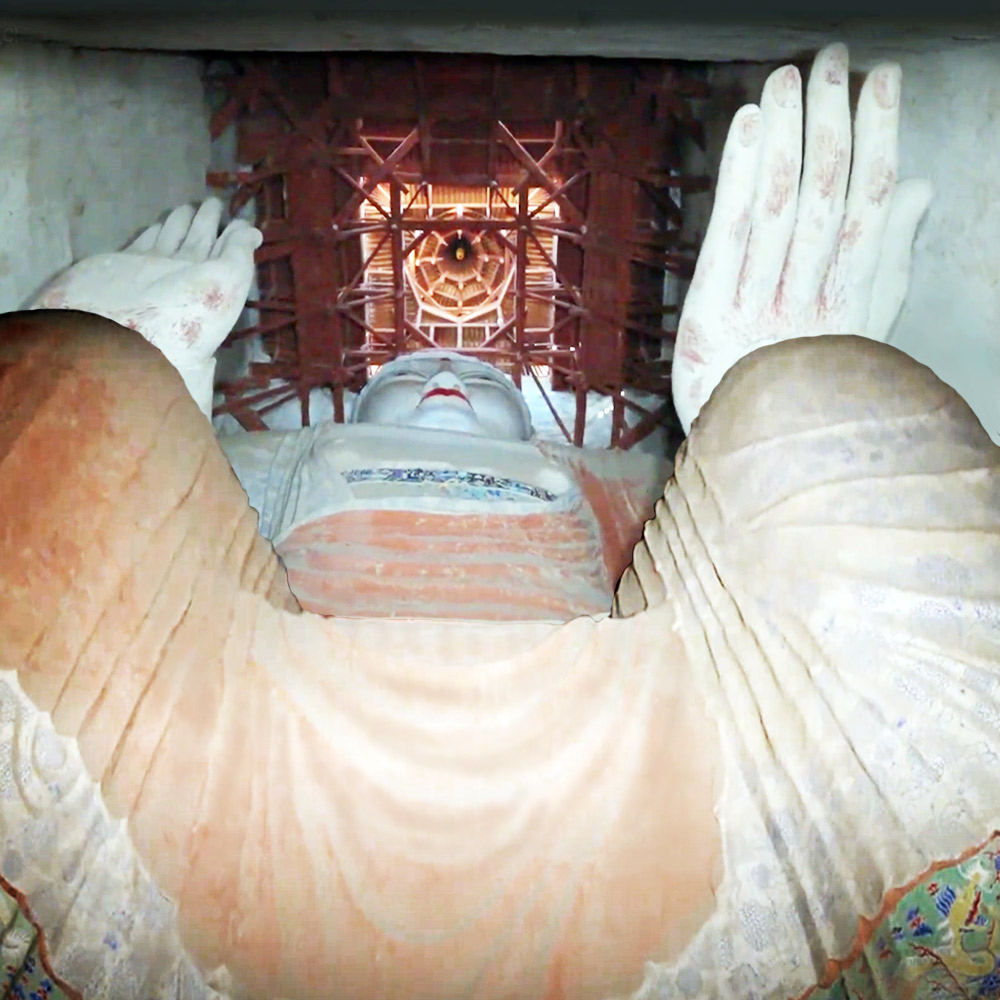 Dunhuang Mogao cave 96 is the most impressive it
reflects the prosperity and the style of the Tang Dynasty
(618-907 AD), The colossal Maitreya Buddha is 35.5 meters or 116
feet high it is the third largest Buddha in the world.
Dunhuang Mogao cave 96 is the most impressive it
reflects the prosperity and the style of the Tang Dynasty
(618-907 AD), The colossal Maitreya Buddha is 35.5 meters or 116
feet high it is the third largest Buddha in the world.
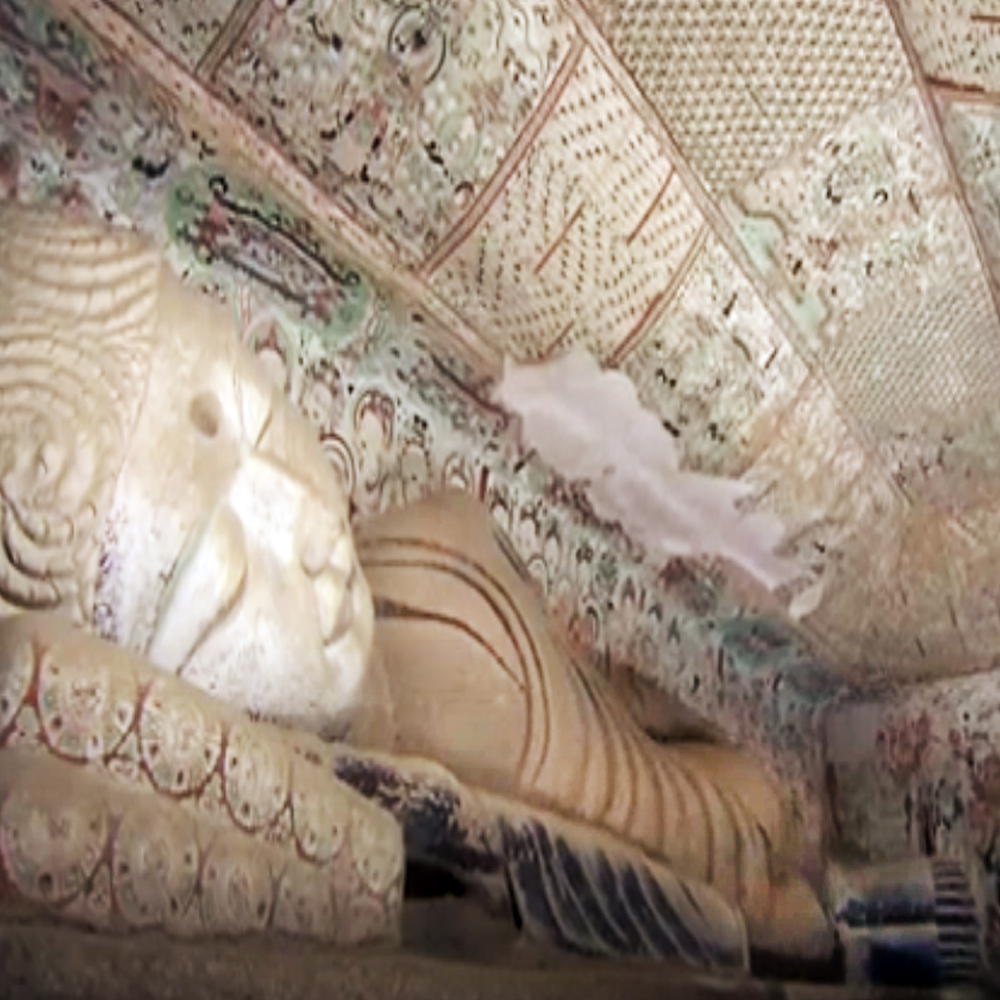 A spectacular 55-foot reclining Buddha statue focus's
on attaining Nirvana from the Tang dynasty period c. 820 AD
rests in Cave 158 of the Mogao Caves.
A spectacular 55-foot reclining Buddha statue focus's
on attaining Nirvana from the Tang dynasty period c. 820 AD
rests in Cave 158 of the Mogao Caves.
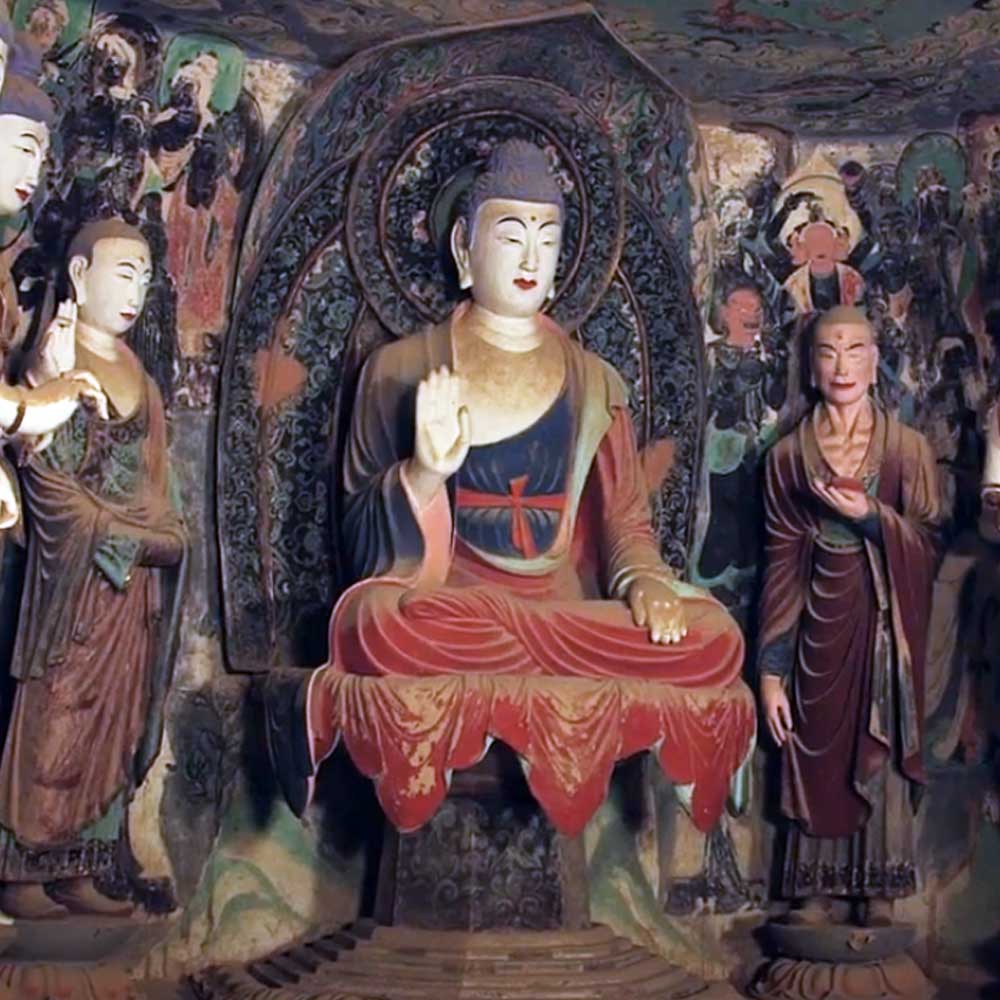 The Mogao Grottoes has one of the most important
collections of Tang dynasty (618–907 AD) buddhist sculpture in
the world and served as a religious and cultural crossroads for
the Silk Road for over 15 hundred years
The Mogao Grottoes has one of the most important
collections of Tang dynasty (618–907 AD) buddhist sculpture in
the world and served as a religious and cultural crossroads for
the Silk Road for over 15 hundred years
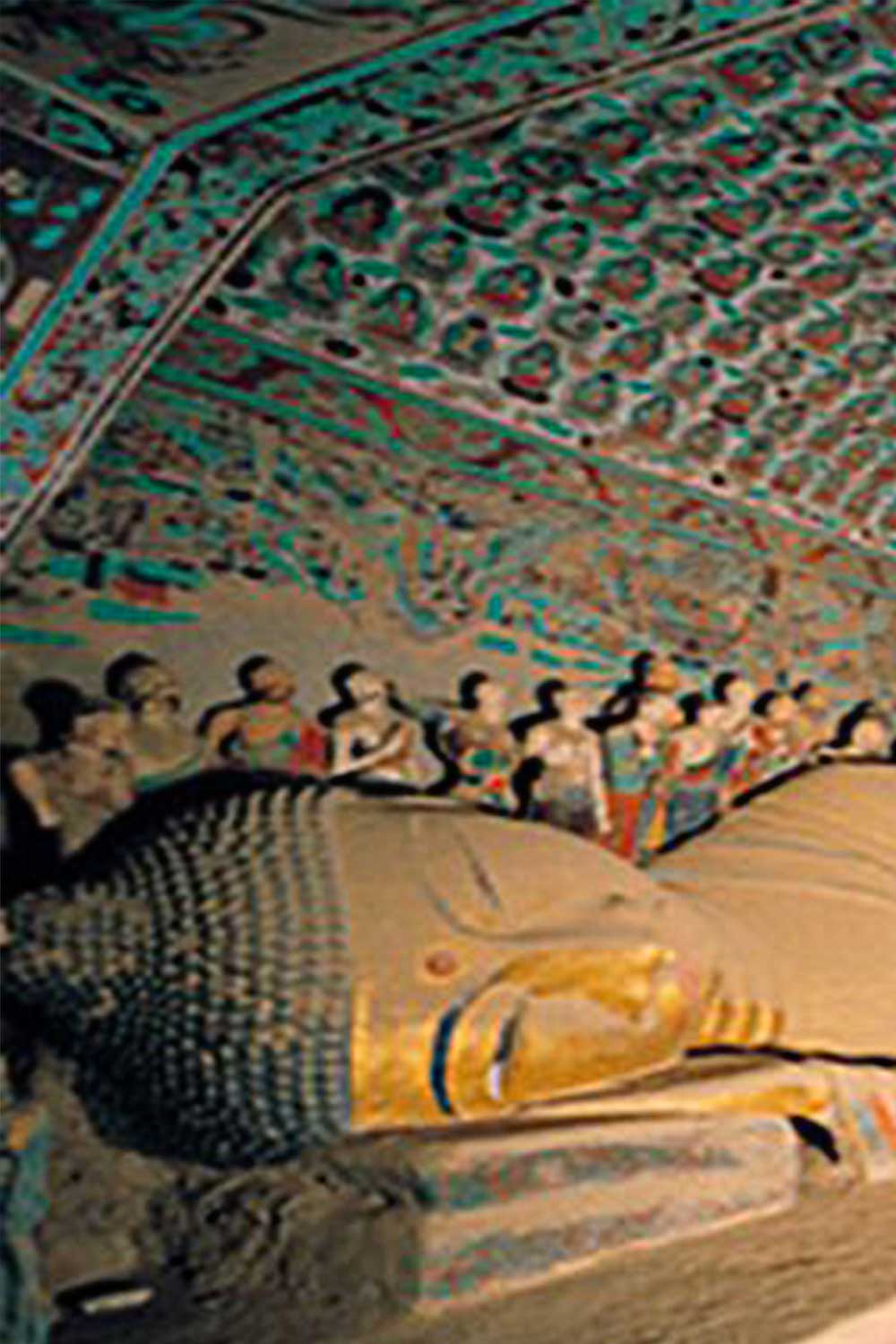 Mogao cave 148, The colossal statue of Sakyamuni
attaining Nirvana, with his head to the south, and his feet to
the north,
Mogao cave 148, The colossal statue of Sakyamuni
attaining Nirvana, with his head to the south, and his feet to
the north,
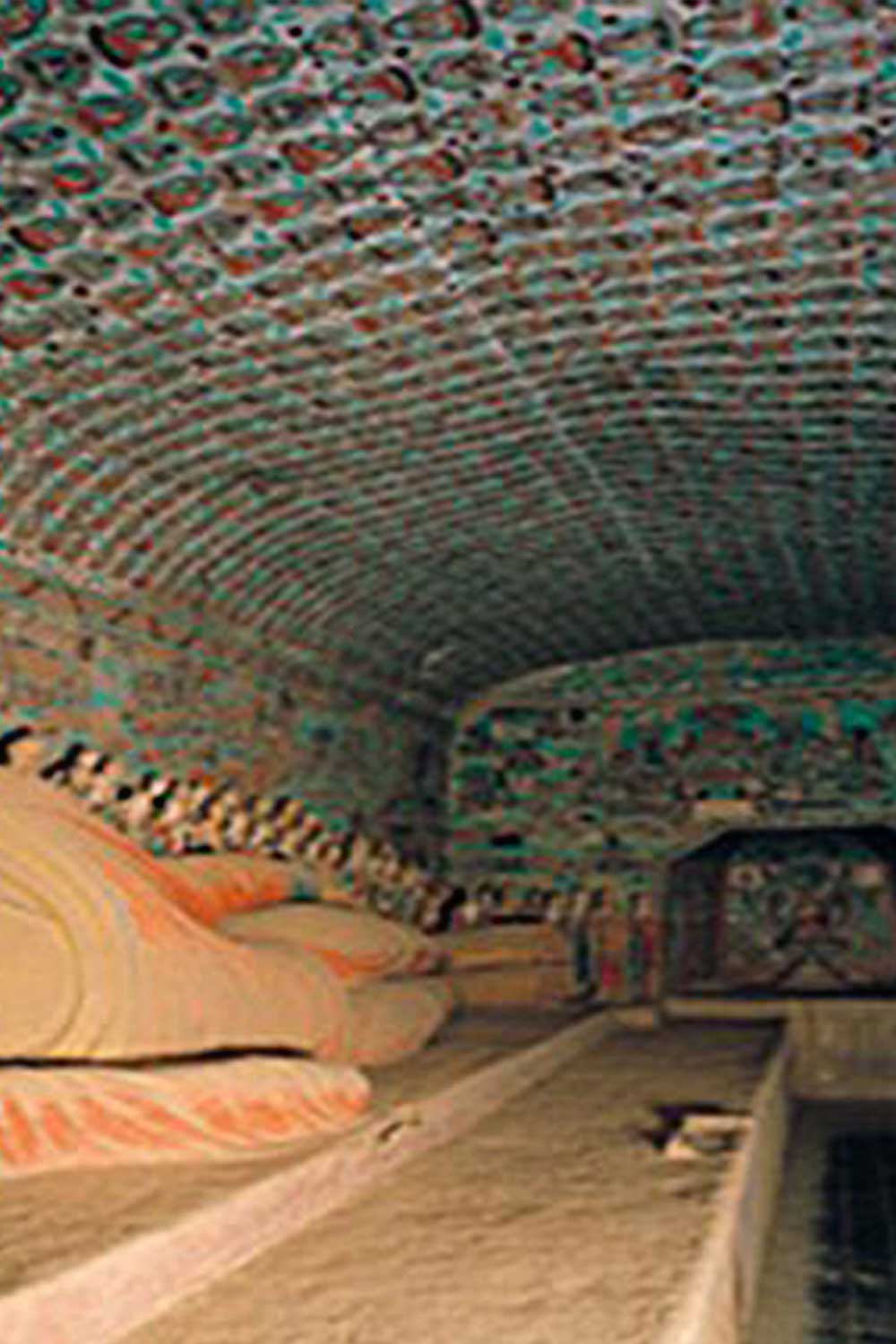 The colossal statue is a 60-foot reclining Buddha
from the Tang dynasty, (618–907 AD) Mogao Caves, Dunhuang, China
The colossal statue is a 60-foot reclining Buddha
from the Tang dynasty, (618–907 AD) Mogao Caves, Dunhuang, China
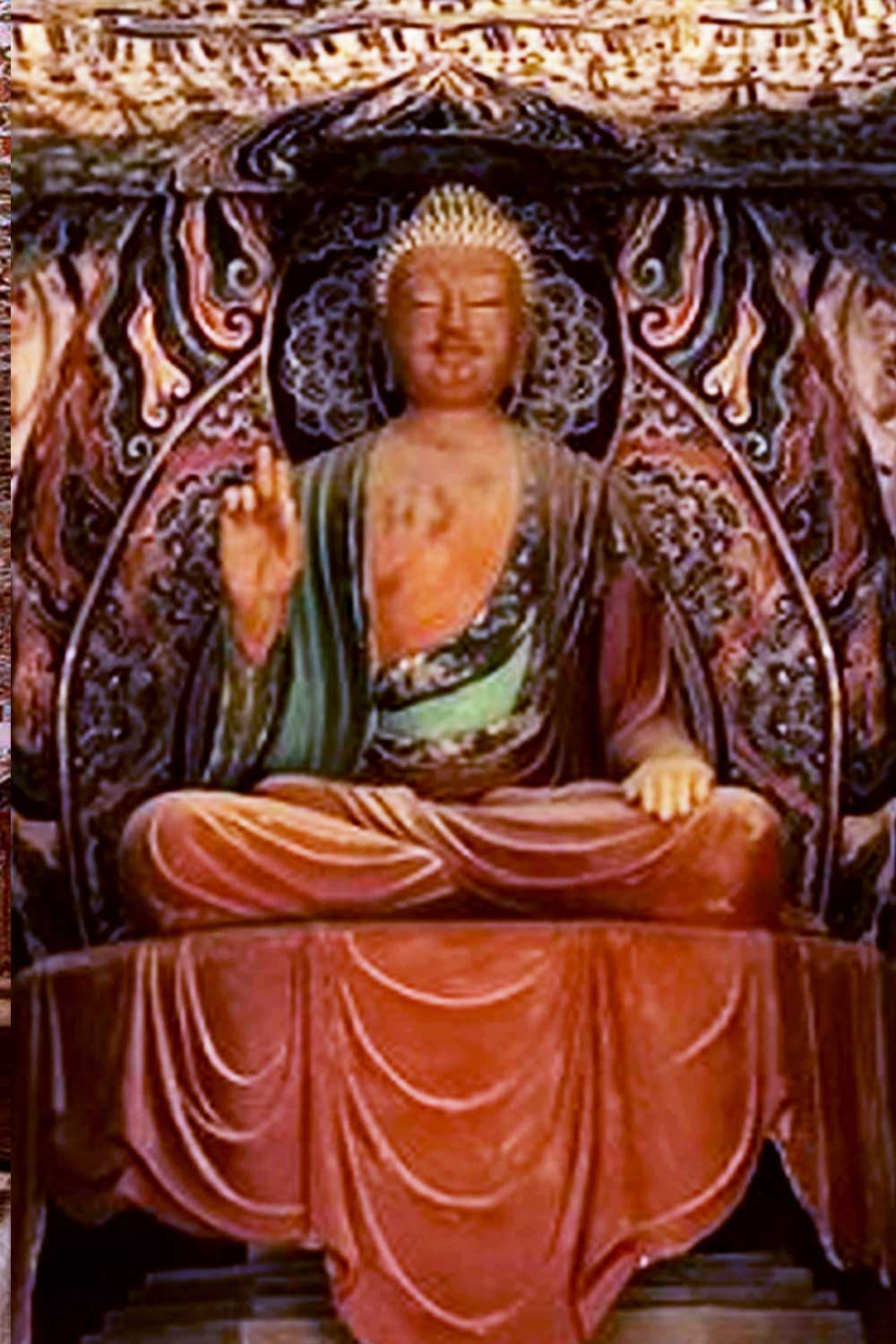 The Mogao Grottoes are recognized as a UNESCO World
Heritage Site
The Mogao Grottoes are recognized as a UNESCO World
Heritage Site
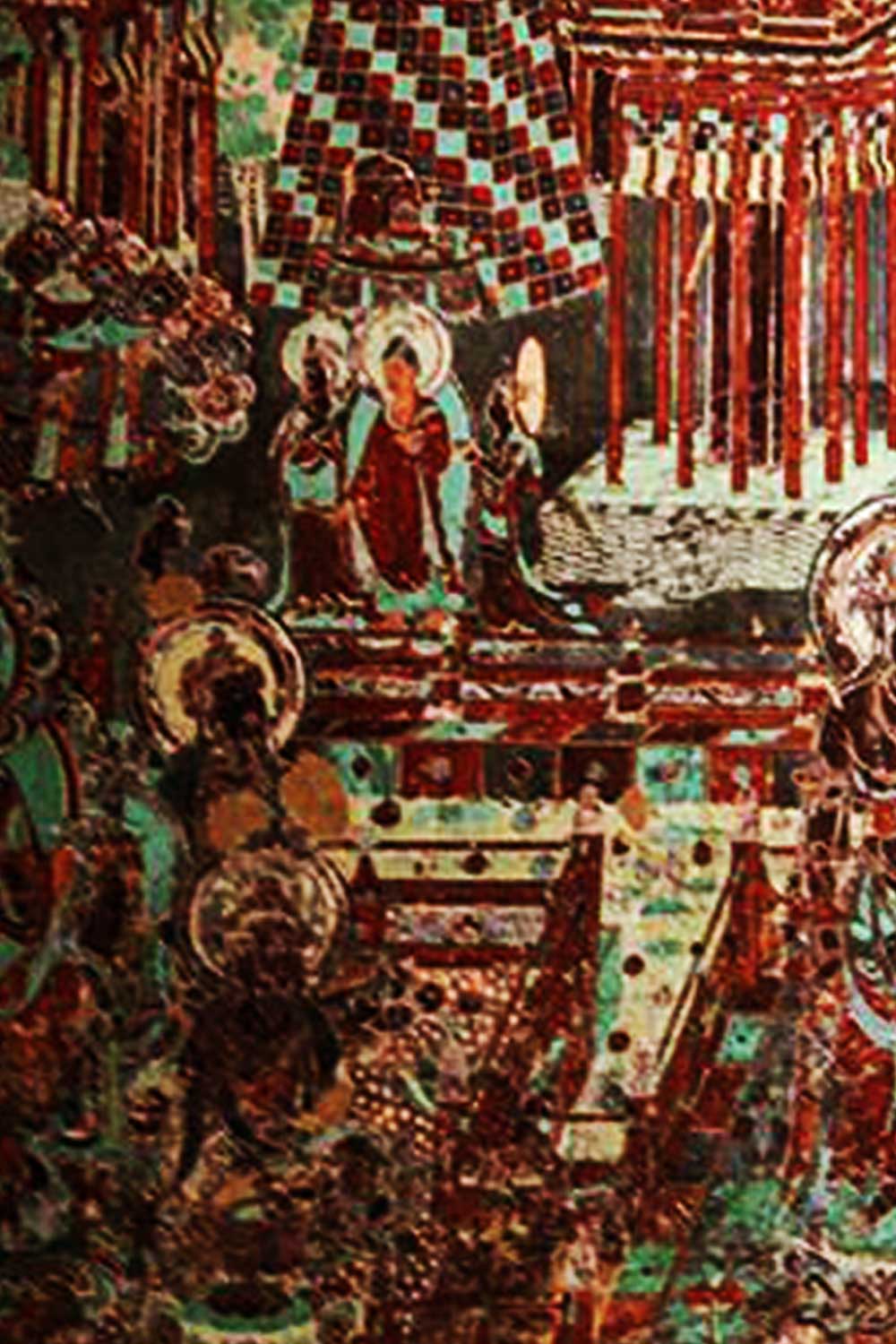 Shaping the Lotus Sutra, Buddhist Visual Culture in
Medieval China, A Buddhist mural painting,
Shaping the Lotus Sutra, Buddhist Visual Culture in
Medieval China, A Buddhist mural painting,
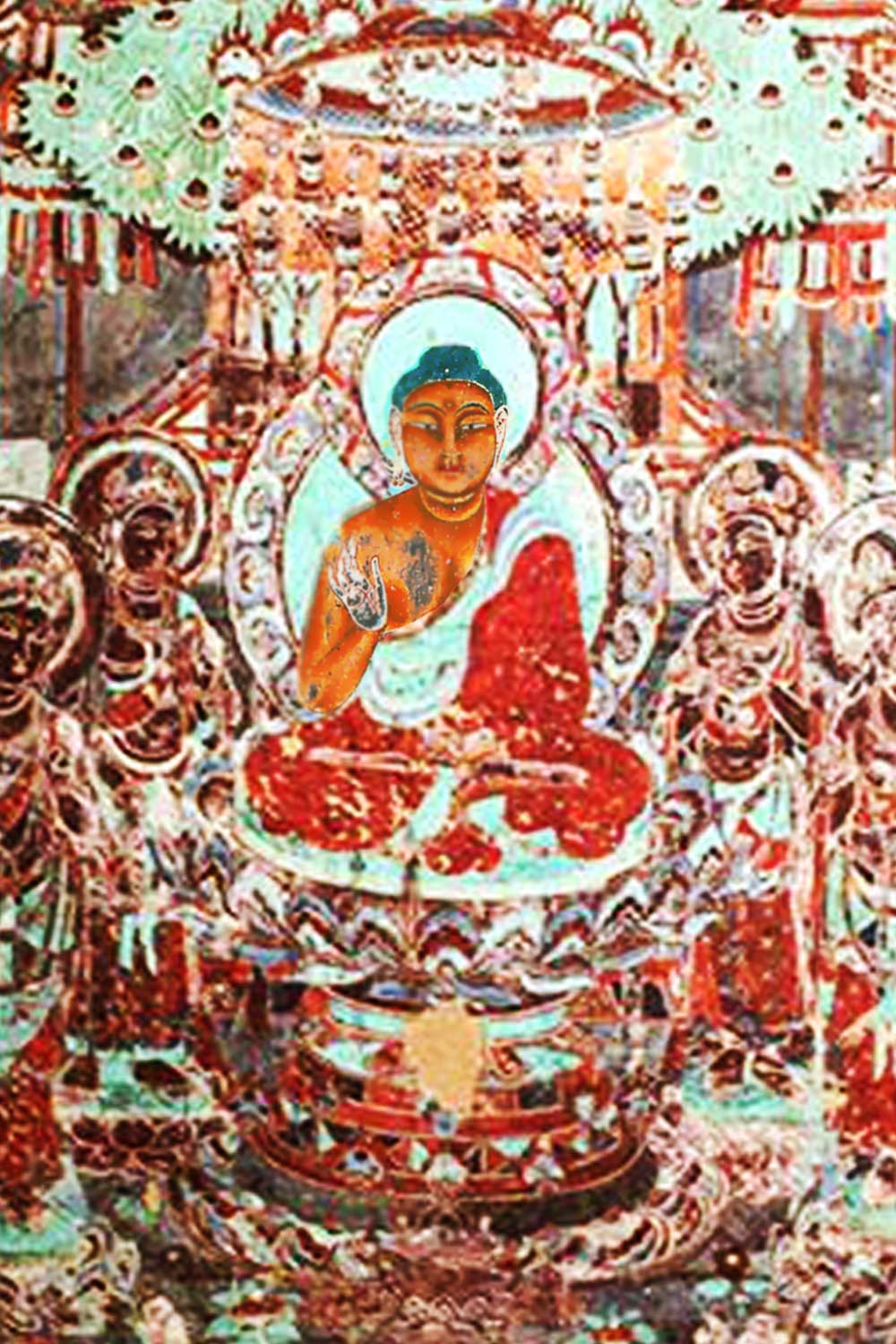 located on the south wall of Cave 217 of the Mogao
Caves in Dunhuang,
located on the south wall of Cave 217 of the Mogao
Caves in Dunhuang,
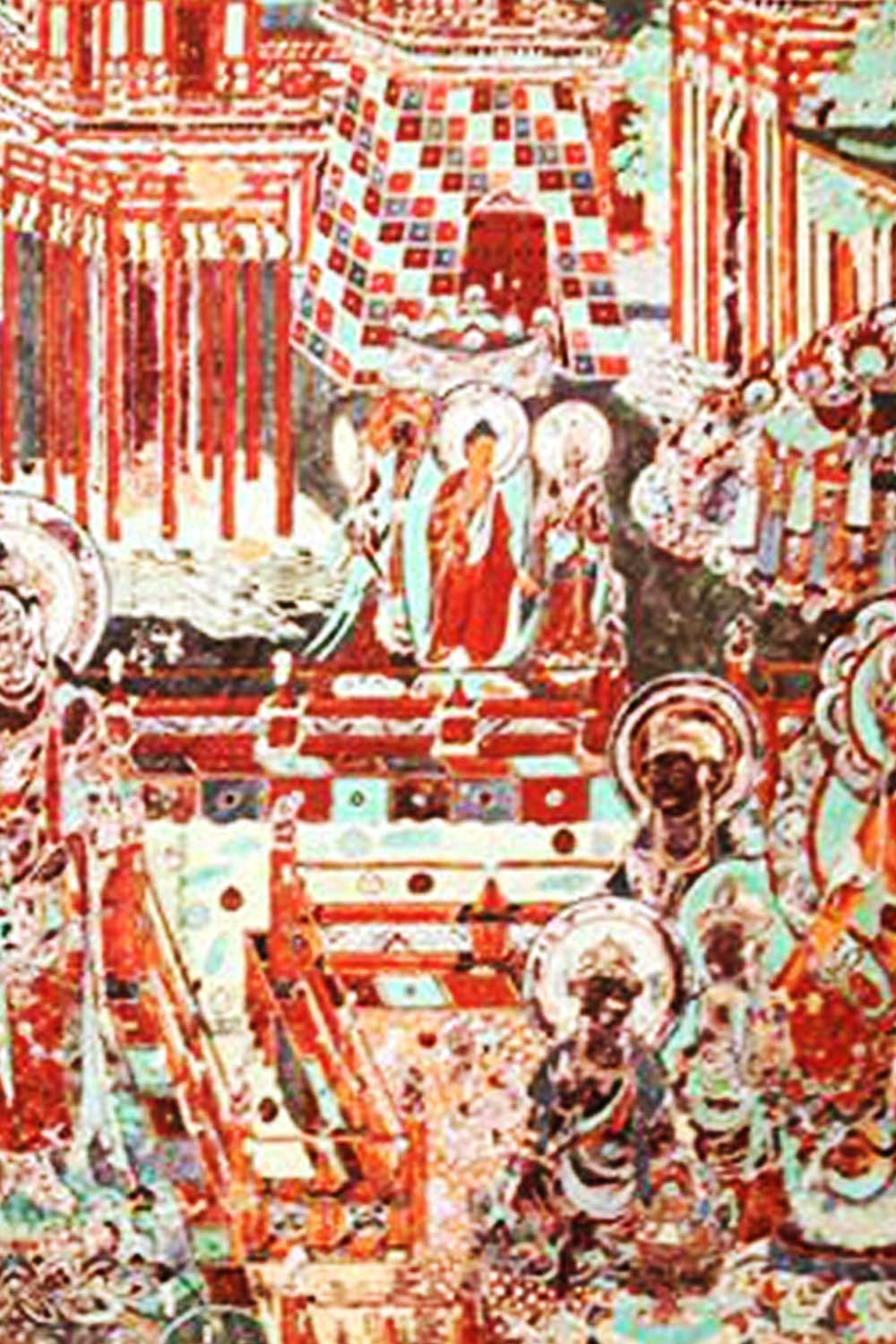 The mural is 5.3 m × 3.5 m (17 ft × 11 ft), painted
in the early Tang Dynasty, 707-710 AD, Mogao Caves, Dunhuang,
Gansu Province, China.
The mural is 5.3 m × 3.5 m (17 ft × 11 ft), painted
in the early Tang Dynasty, 707-710 AD, Mogao Caves, Dunhuang,
Gansu Province, China.
TIBET
Tibet, on the lofty Tibetan Plateau on the
northern side of the Himalayas, is an autonomous region of
China. It's nicknamed the “Roof of the World” for its towering
peaks. It shares Mt. Everest with Nepal. Its capital, Lhasa, is
the site of hilltop Potala Palace, once the Dalai Lama’s winter
home, along with the Jokhang Temple, Tibet’s spiritual heart,
revered for its golden statue of the young Buddha. The 14th
Dalai Lama currently resides in McLeod Ganj, a town in
Dharamsala, India, where he established the Tibetan
Government-in-Exile in 1960 after fleeing Tibet during the 1959
uprising.
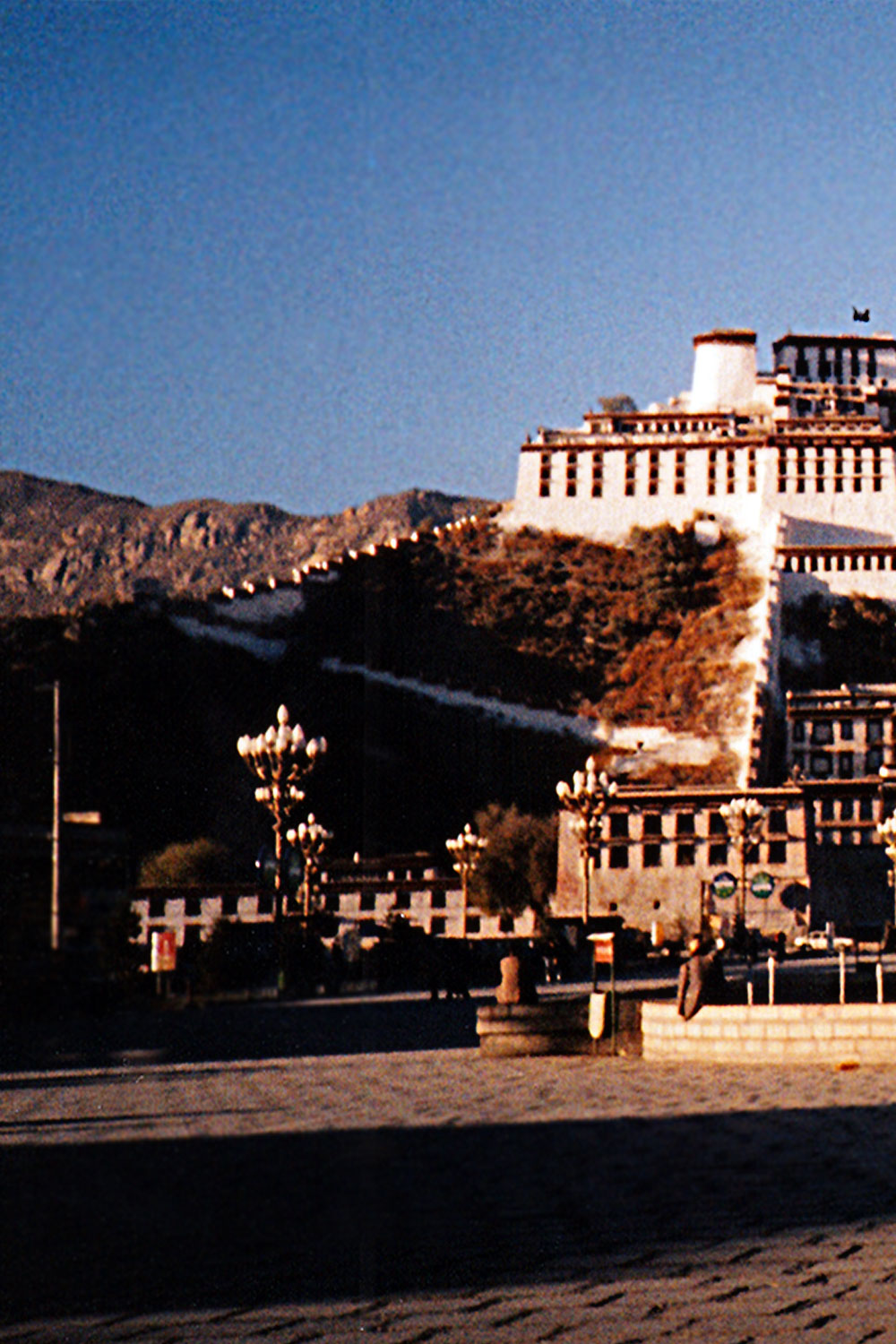 The Potala Palace in Lhasa Tibet is named after Mount
Potalaka, the mythical abode of the bodhisattva Avalokiteśvara.
The 5th Dalai Lama started its construction in 1645.
The Potala Palace in Lhasa Tibet is named after Mount
Potalaka, the mythical abode of the bodhisattva Avalokiteśvara.
The 5th Dalai Lama started its construction in 1645.
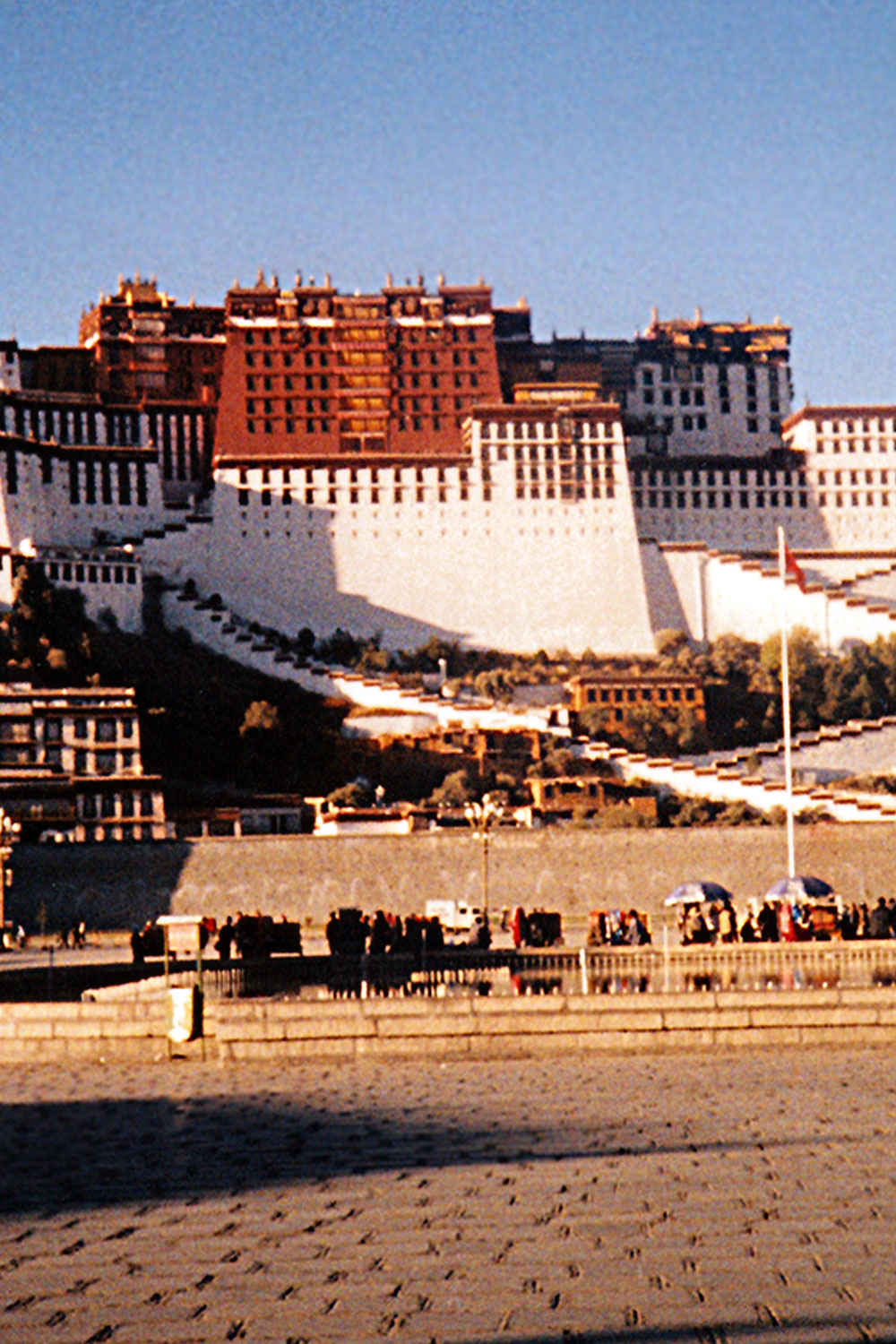 The Potala Palace is a fortress built in the style of
Dzong architecture and was home of the Dalai Lamas from 1649 to
1959, until Tibet came under the control of the Communist Party
of China in 1951.
The Potala Palace is a fortress built in the style of
Dzong architecture and was home of the Dalai Lamas from 1649 to
1959, until Tibet came under the control of the Communist Party
of China in 1951.
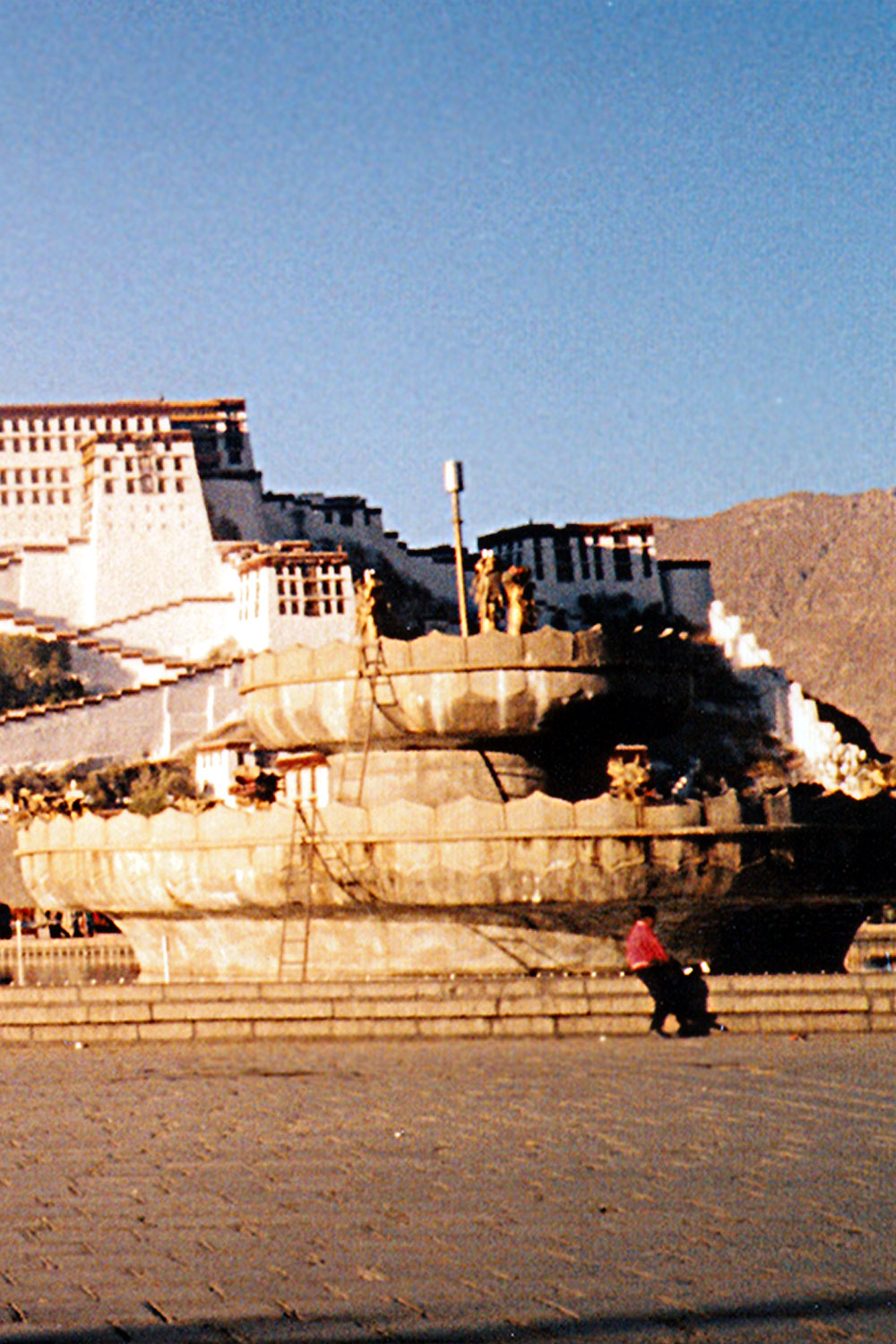 The Potala Palace is part of The People's Republic
of China and has been a museum since 1959
The Potala Palace is part of The People's Republic
of China and has been a museum since 1959
 I on the roof of the Sera Monastery built in 1419 it
is one of the "great three" Gelug university monasteries of
Tibet, located 2 km or 1.25 miles north of Lhasa and about 5 km
or 3 miles north of the Jokhang Temple.
I on the roof of the Sera Monastery built in 1419 it
is one of the "great three" Gelug university monasteries of
Tibet, located 2 km or 1.25 miles north of Lhasa and about 5 km
or 3 miles north of the Jokhang Temple.
 I and The Potala Palace a fortress built in the style
of Dzong architecture.
I and The Potala Palace a fortress built in the style
of Dzong architecture.
 White stupas in front of the Potala Palace, winter
palace of the Dalai Lama, UNESCO World Heritage Site, Lhasa,
Tibet.
White stupas in front of the Potala Palace, winter
palace of the Dalai Lama, UNESCO World Heritage Site, Lhasa,
Tibet.
 The Jokhang Temple in the heart of Lhasa is
considered the most sacred and important temple in Tibet built
in the 7th century. (I with 2 traveling frenchmen next to the
iconic rooftop statues of the Dharma wheel and two golden deers)
The Jokhang Temple in the heart of Lhasa is
considered the most sacred and important temple in Tibet built
in the 7th century. (I with 2 traveling frenchmen next to the
iconic rooftop statues of the Dharma wheel and two golden deers)
 The iconic rooftop statues of the Dharma wheel and
two golden deer on Jokhang Temple, Lhasa, Tibet, China
The iconic rooftop statues of the Dharma wheel and
two golden deer on Jokhang Temple, Lhasa, Tibet, China
 I next to, 7th century Dhvaja Golden Victory banner
with Potala Palace in the distance from rooftop of Jokhang
Temple, Lhasa, Tibet, China
I next to, 7th century Dhvaja Golden Victory banner
with Potala Palace in the distance from rooftop of Jokhang
Temple, Lhasa, Tibet, China
THE TIBETAN HOLOCAUST
Some academics have described it as a form
of Han settler colonialism. According to the Central Tibetan
Administration, the government of Tibet is in exile, China's
policy has allegedly resulted in the disappearance of Tibetan
culture; this policy has been called a "cultural genocide", it
is estimated that there was 15 million Tibetian murders by the
People's Liberation Army of the Communist Chinese, after the
1959 Tibetan uprising and the flight of the 14th Dalai Lama in
India to establish his Tibetan Government-in-Exile.
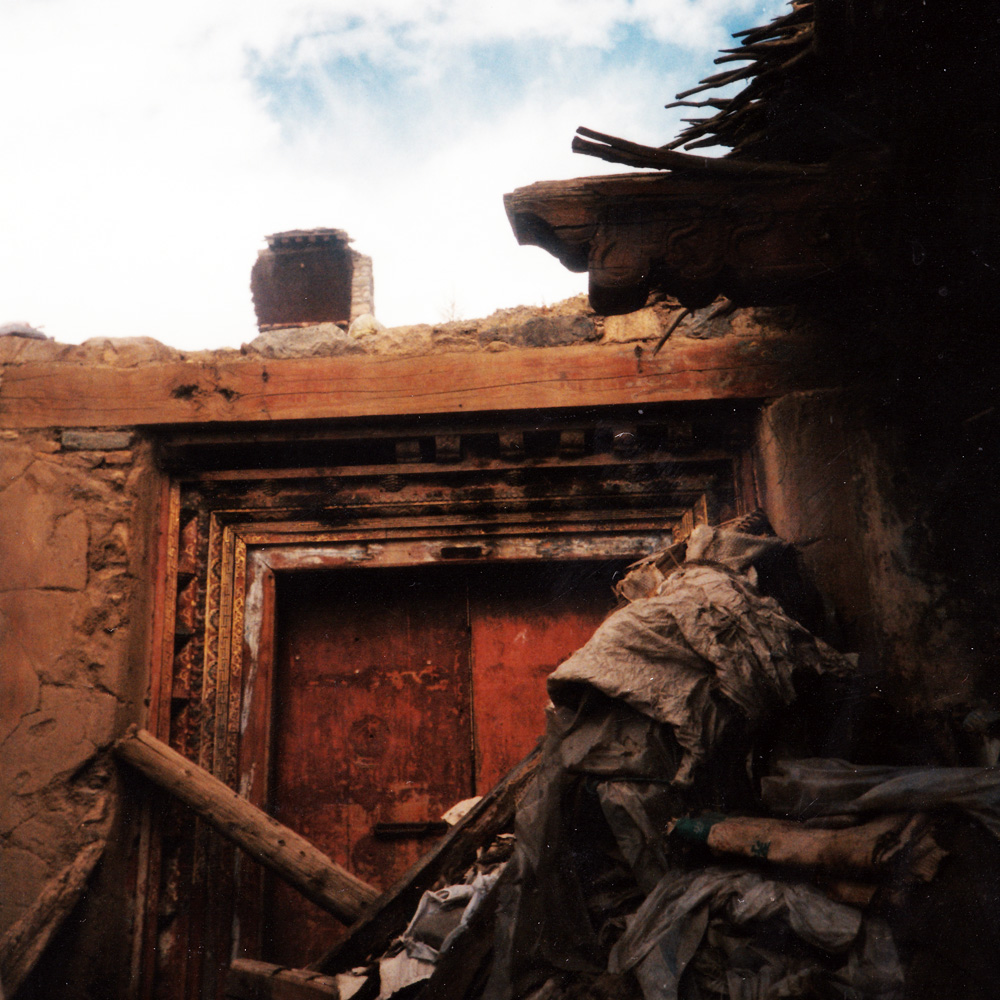 Between 1959 and 1976 all but a dozen of the
approximately 6,000 monasteries, temples and shrines in Tibet
were physically destroyed by the Chinese Cultural Revolution,
often by dynamiting the ceilings
Between 1959 and 1976 all but a dozen of the
approximately 6,000 monasteries, temples and shrines in Tibet
were physically destroyed by the Chinese Cultural Revolution,
often by dynamiting the ceilings
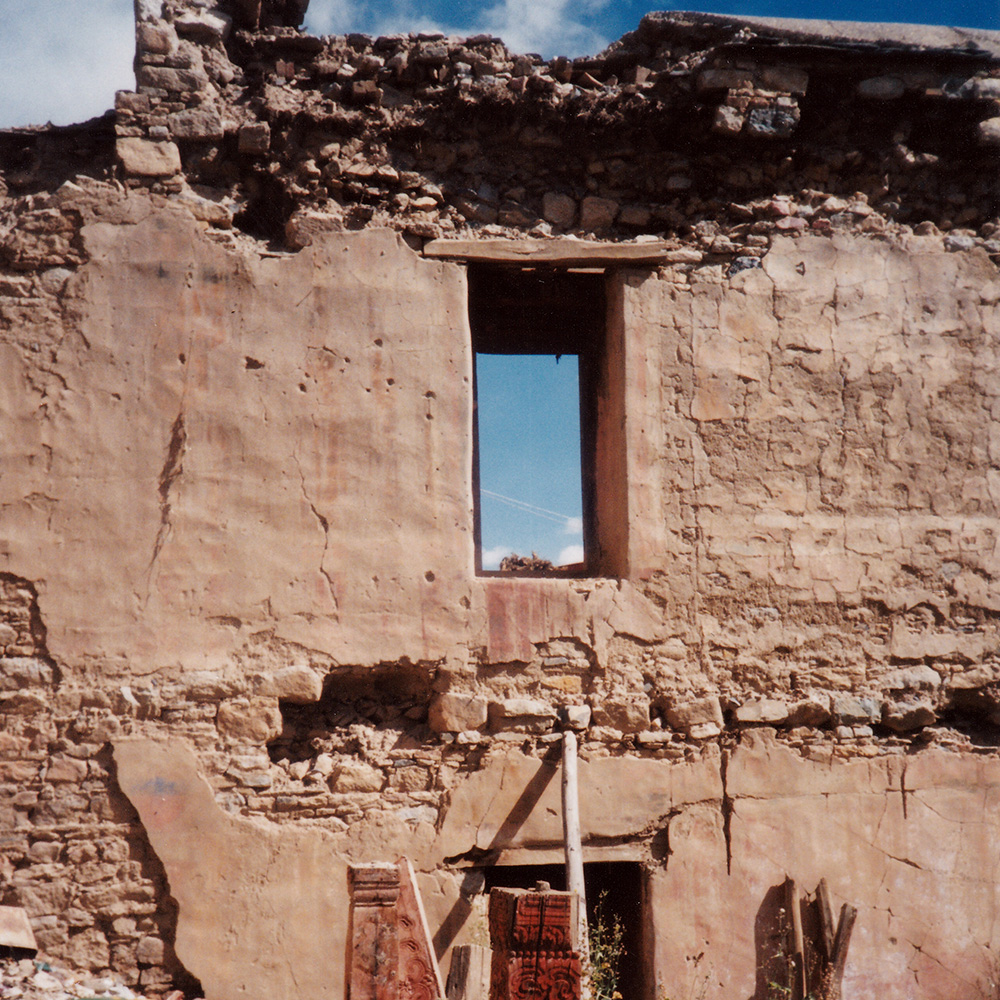 The Chinese Communist Party, was initiated by Mao and
from 1962 to 1976 during the Cultural Revolution thousands of
monks and nuns were forced to leave and "live a normal life",
those who resisted were imprisoned or killed
The Chinese Communist Party, was initiated by Mao and
from 1962 to 1976 during the Cultural Revolution thousands of
monks and nuns were forced to leave and "live a normal life",
those who resisted were imprisoned or killed
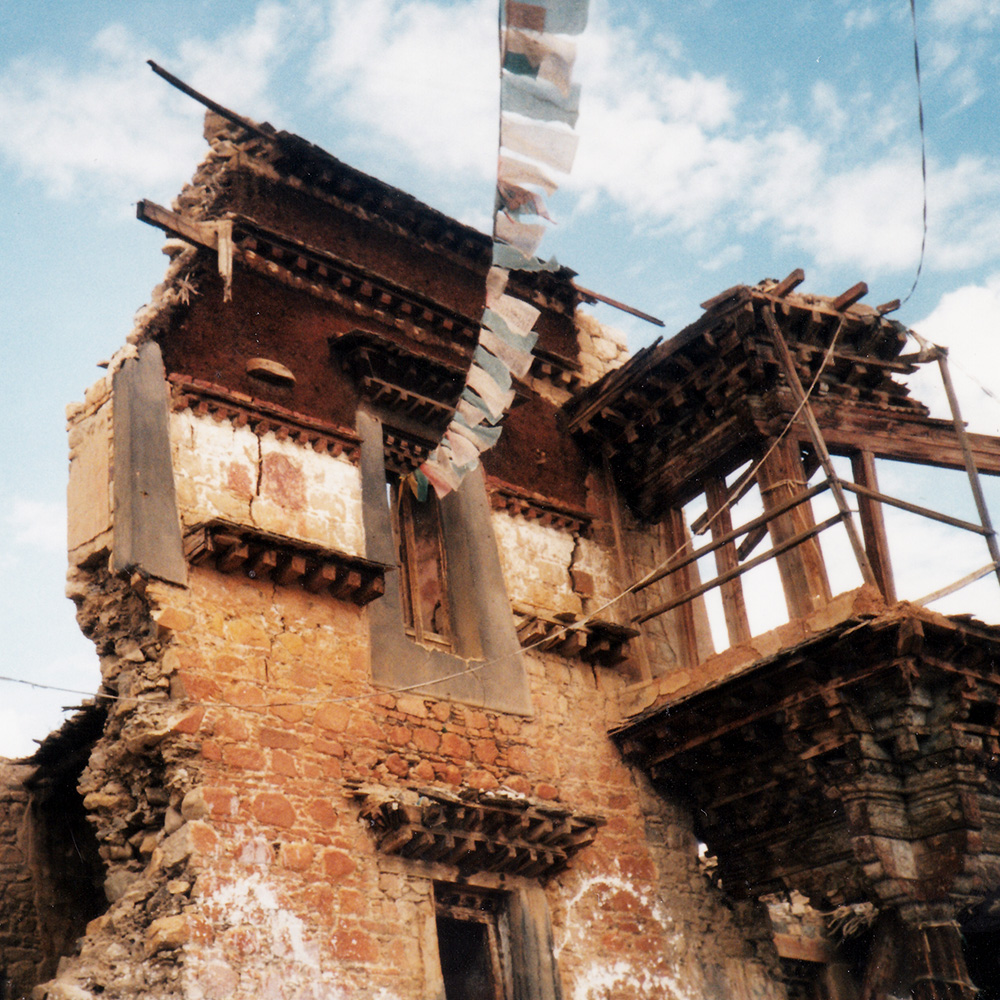 The Cultural Revolution in China during the 1960's
was characterized by violence and chaos, it is estimated that
there was 15 million Tibetian murders
The Cultural Revolution in China during the 1960's
was characterized by violence and chaos, it is estimated that
there was 15 million Tibetian murders
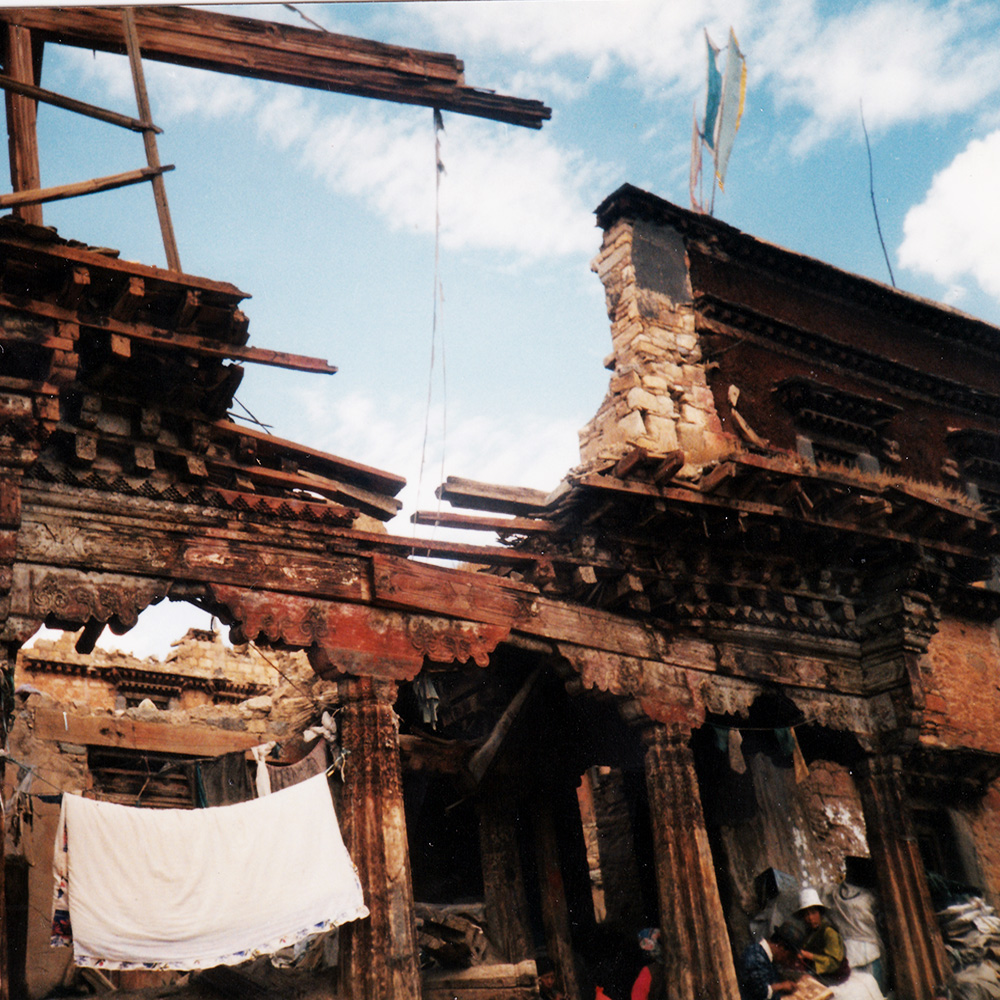 The Chinese Communist Party, continues a systematic
religious persecution of Tibetians with large-scale bombing of
monasteries, along with imprisonment, deportation, torture, and
murder of the Tibetan people
The Chinese Communist Party, continues a systematic
religious persecution of Tibetians with large-scale bombing of
monasteries, along with imprisonment, deportation, torture, and
murder of the Tibetan people
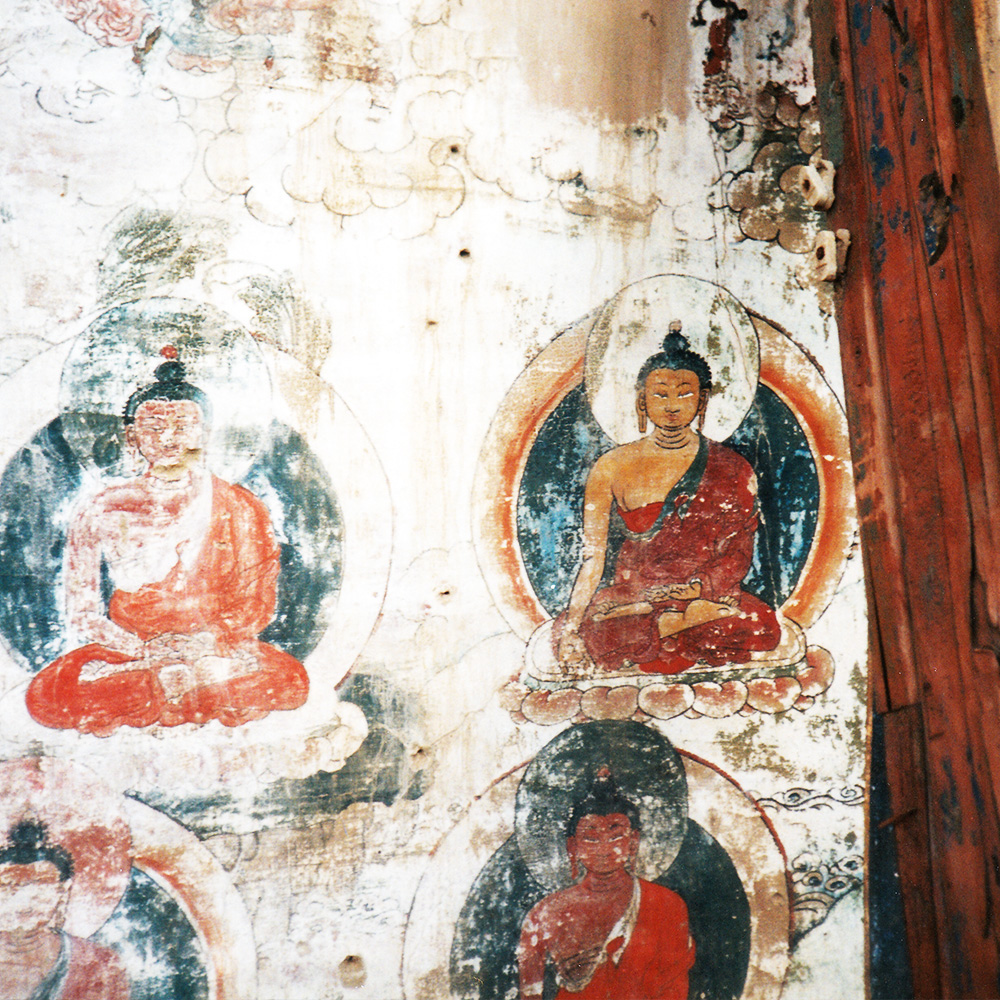 (Ruins of a 12th century Fresco painting depecting
Buddha's life) About 94% of the Chinese population is ethnically
Han. Tibetans although very small in numbers, present a threat
to the homogeneous Chinese national identity
(Ruins of a 12th century Fresco painting depecting
Buddha's life) About 94% of the Chinese population is ethnically
Han. Tibetans although very small in numbers, present a threat
to the homogeneous Chinese national identity
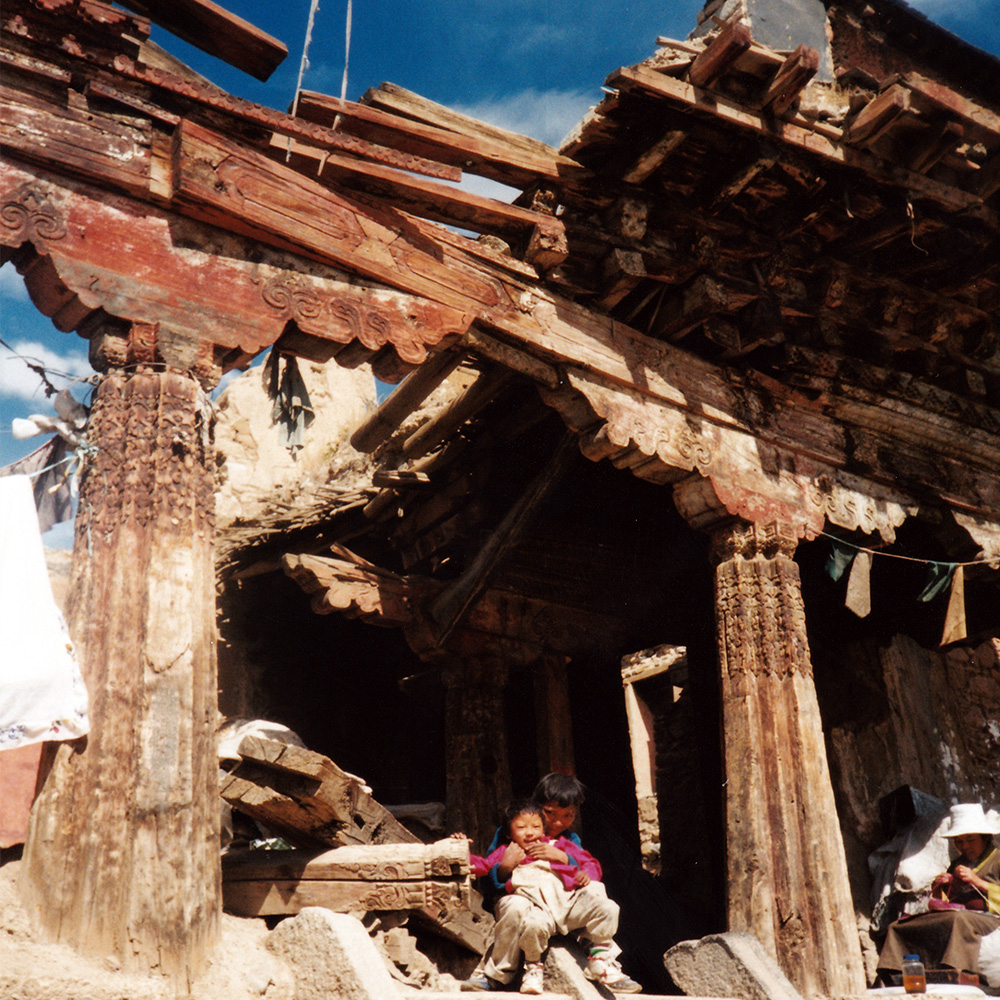 The story of Tibet is a saga of the world’s apathy
and indifference to cultural genocide of Tibetan Buddhism.
Brutal decimation of an ancient, rich, and peace-loving culture
by ruthless Red China
The story of Tibet is a saga of the world’s apathy
and indifference to cultural genocide of Tibetan Buddhism.
Brutal decimation of an ancient, rich, and peace-loving culture
by ruthless Red China
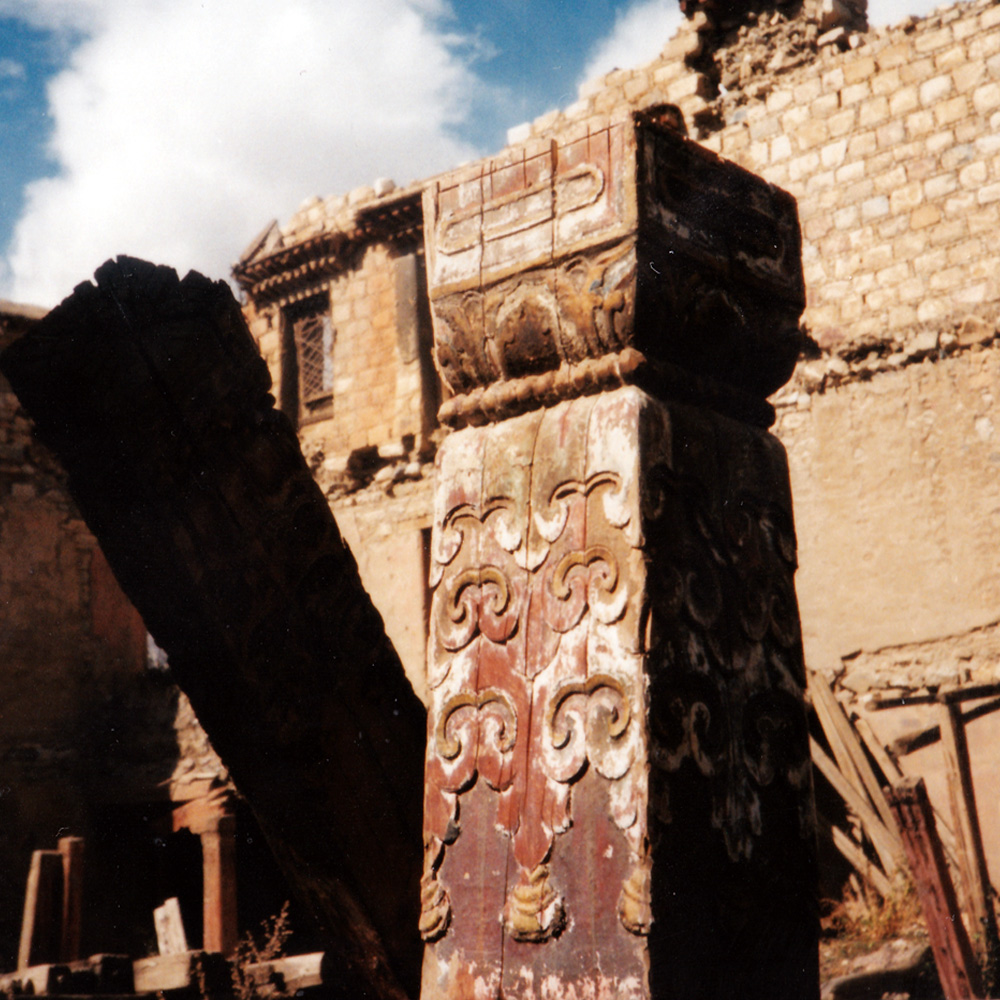 Ruins of a 12th century Tibetan Temple with only a
part of a support column left after the Chinese Communist Party
dynamited the ceilings
Ruins of a 12th century Tibetan Temple with only a
part of a support column left after the Chinese Communist Party
dynamited the ceilings
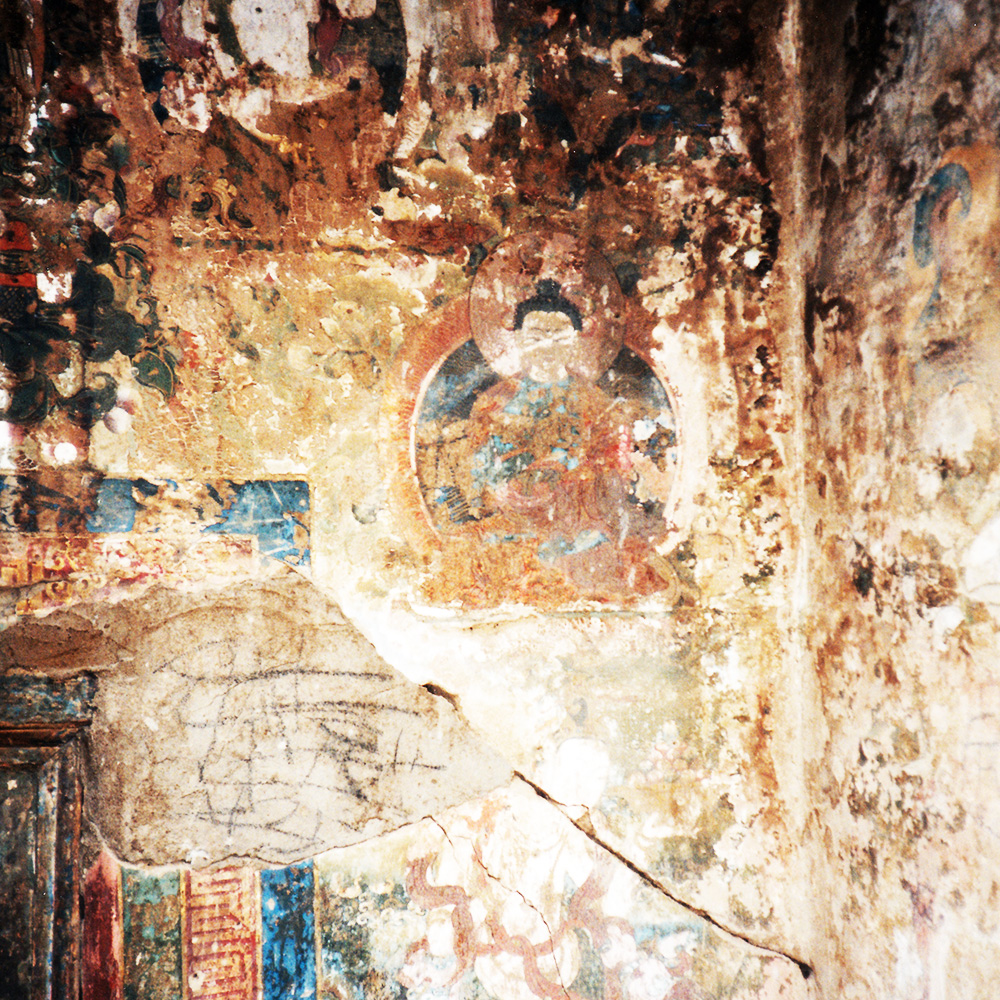 Ruins of a 12th century Fresco depecting Buddha's
teachings on a wall of a Tibetan Temple after the Chinese
Communist Party dynamited the ceilings
Ruins of a 12th century Fresco depecting Buddha's
teachings on a wall of a Tibetan Temple after the Chinese
Communist Party dynamited the ceilings
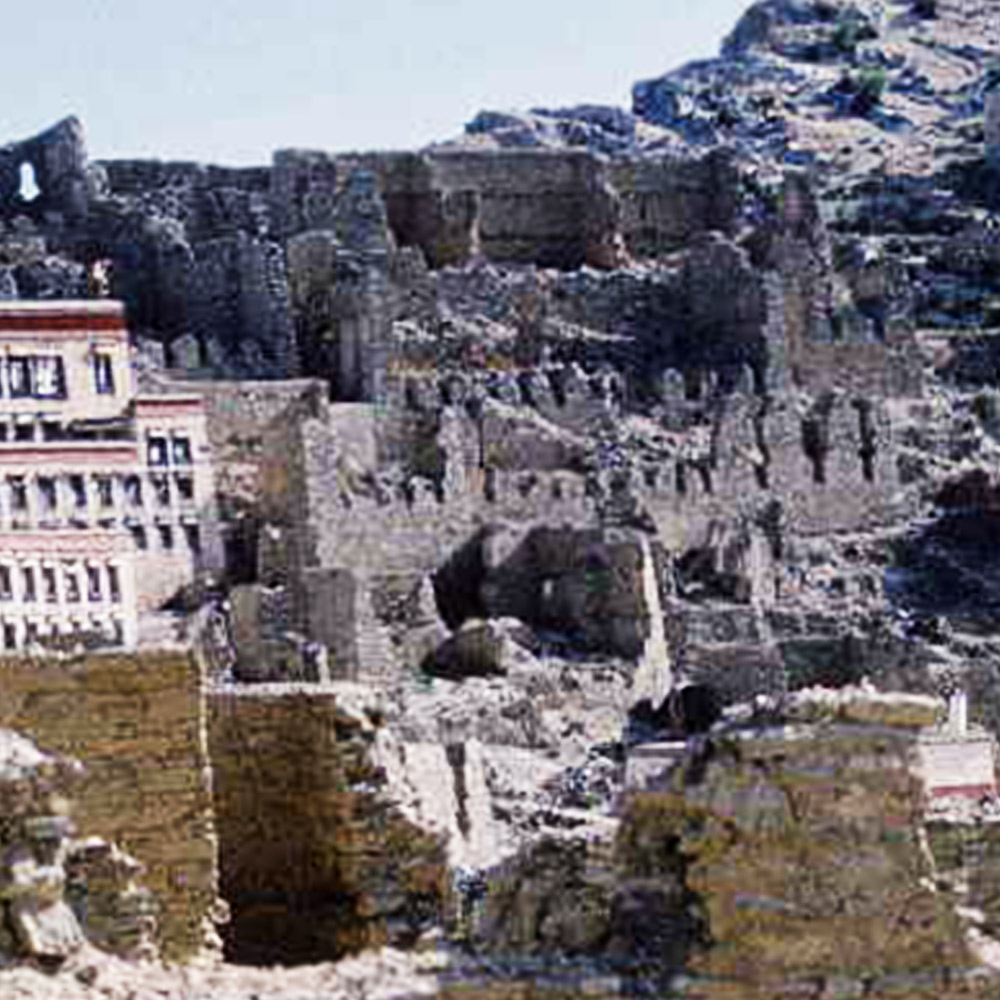 Ruins of Ganden Monastery, Tibet, founded in 1409,
The monastery was destroyed by the People's Liberation Army in
1959, but has since been partially rebuilt. Tashi0 | CC BY-SA 3.0
Ruins of Ganden Monastery, Tibet, founded in 1409,
The monastery was destroyed by the People's Liberation Army in
1959, but has since been partially rebuilt. Tashi0 | CC BY-SA 3.0
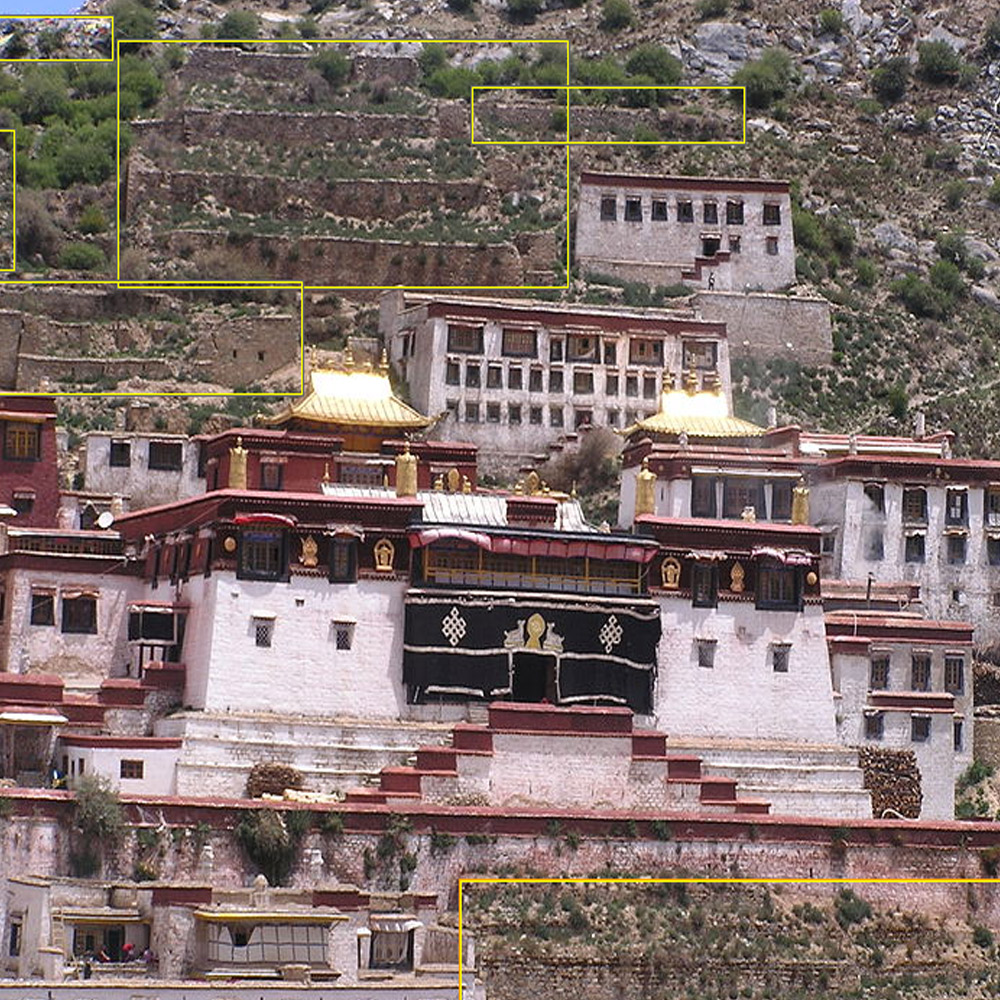 Ruins of Ganden Monastery, Tibet, The yellow boxes
have annotations that all read the same, (Destroyed monasteries
in Tibet- these ruins are from actions by the People's
Liberation Army of the Communist Chinese, after the 1959 Tibetan
uprising and the flight of the 14th Dalai Lama in India to
establish his Tibetan Government-in-Exile.) CC BY-SA 3.0
Ruins of Ganden Monastery, Tibet, The yellow boxes
have annotations that all read the same, (Destroyed monasteries
in Tibet- these ruins are from actions by the People's
Liberation Army of the Communist Chinese, after the 1959 Tibetan
uprising and the flight of the 14th Dalai Lama in India to
establish his Tibetan Government-in-Exile.) CC BY-SA 3.0
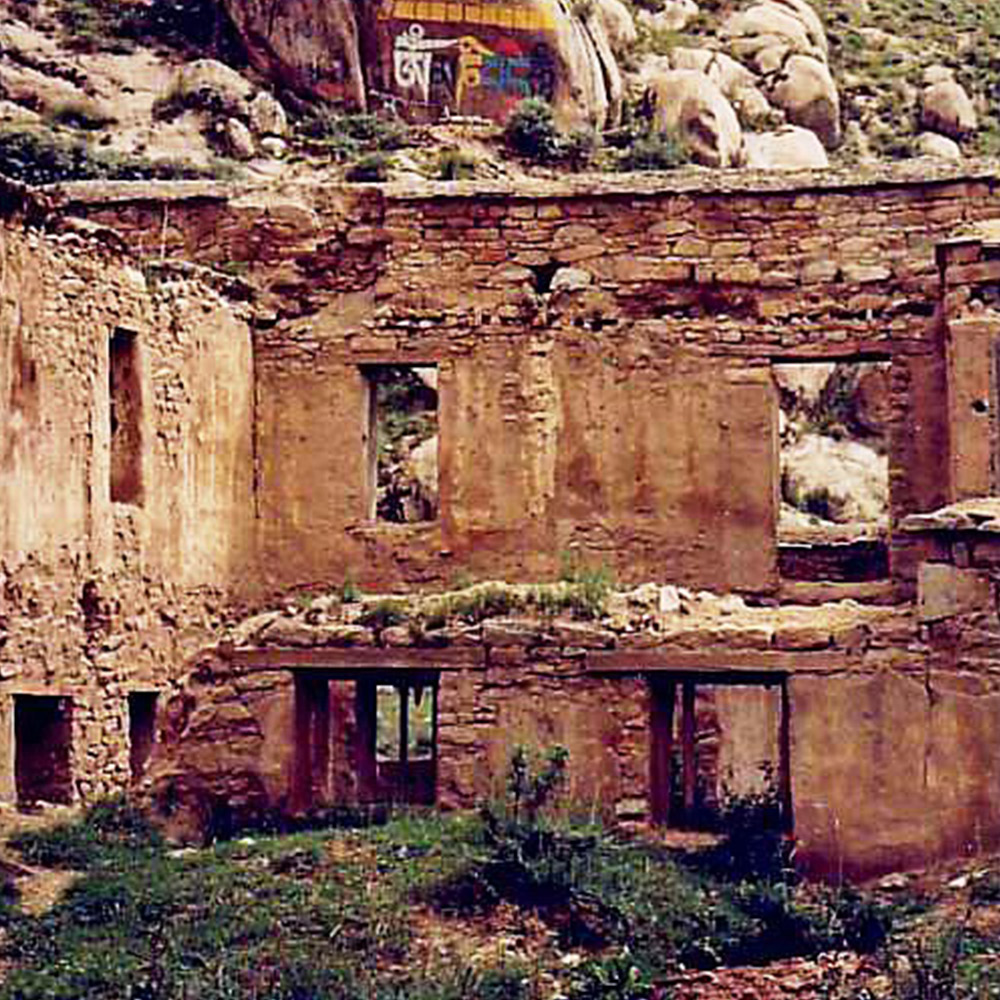 Ruins of Drepung Monastery, Lhasa, founded in 1416,
was destroyed by the People's Liberation Army in 1959. John Hill | CC BY-SA 4.0
Ruins of Drepung Monastery, Lhasa, founded in 1416,
was destroyed by the People's Liberation Army in 1959. John Hill | CC BY-SA 4.0
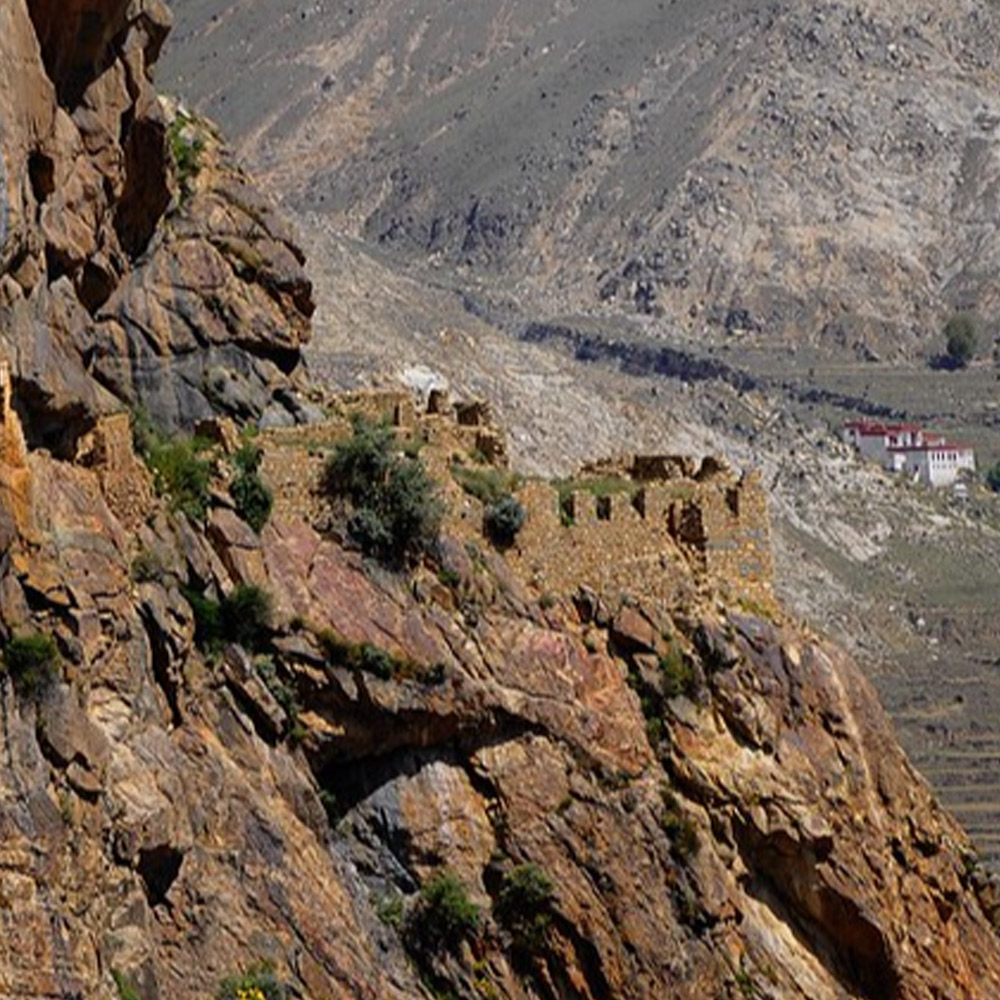 Ruins of K'eu tshang Monastery, The Temple of the
Sixteen Arhats, Tibet, destroyed by the People's Liberation Army
of the Communist Chinese in 1959, Jan Reurink | CC BY-SA 2.0
Ruins of K'eu tshang Monastery, The Temple of the
Sixteen Arhats, Tibet, destroyed by the People's Liberation Army
of the Communist Chinese in 1959, Jan Reurink | CC BY-SA 2.0
KATHMANDU NEPAL
Kathmandu, the capital of Nepal, is located
in a valley surrounded by the majestic Himalayan mountains.
Nepal has a diverse geography, including fertile
plains, subalpine forested hills, and eight of the world's
ten tallest mountains, including Mount Everest, which
shares the border with China. At the heart of the old city, you
will find Durbar Square, one of the three Durbar Squares in the
Kathmandu Valley, designated as a UNESCO World Heritage site.
Many of the city's historic sites were damaged or destroyed in
the 2015 earthquake, and efforts are underway to rebuild the
palaces and temples of all three Durbar Squares.
Pagoda architecture is a prominent feature of Nepali temples. It
features multiple levels or roof tiers, each with a broader base
and gradually narrowing tops. Intricately carved wooden struts
(tundals) support the roofs. This architectural style reflects a
blend of Buddhist and Hindu traditions. Notable historical
examples include the Nyatapol Temple and the Kumbheshwar Temple.
These sites are awe-inspiring during Indra Jatra, a religious
festival celebrated for its vibrant masked dances.
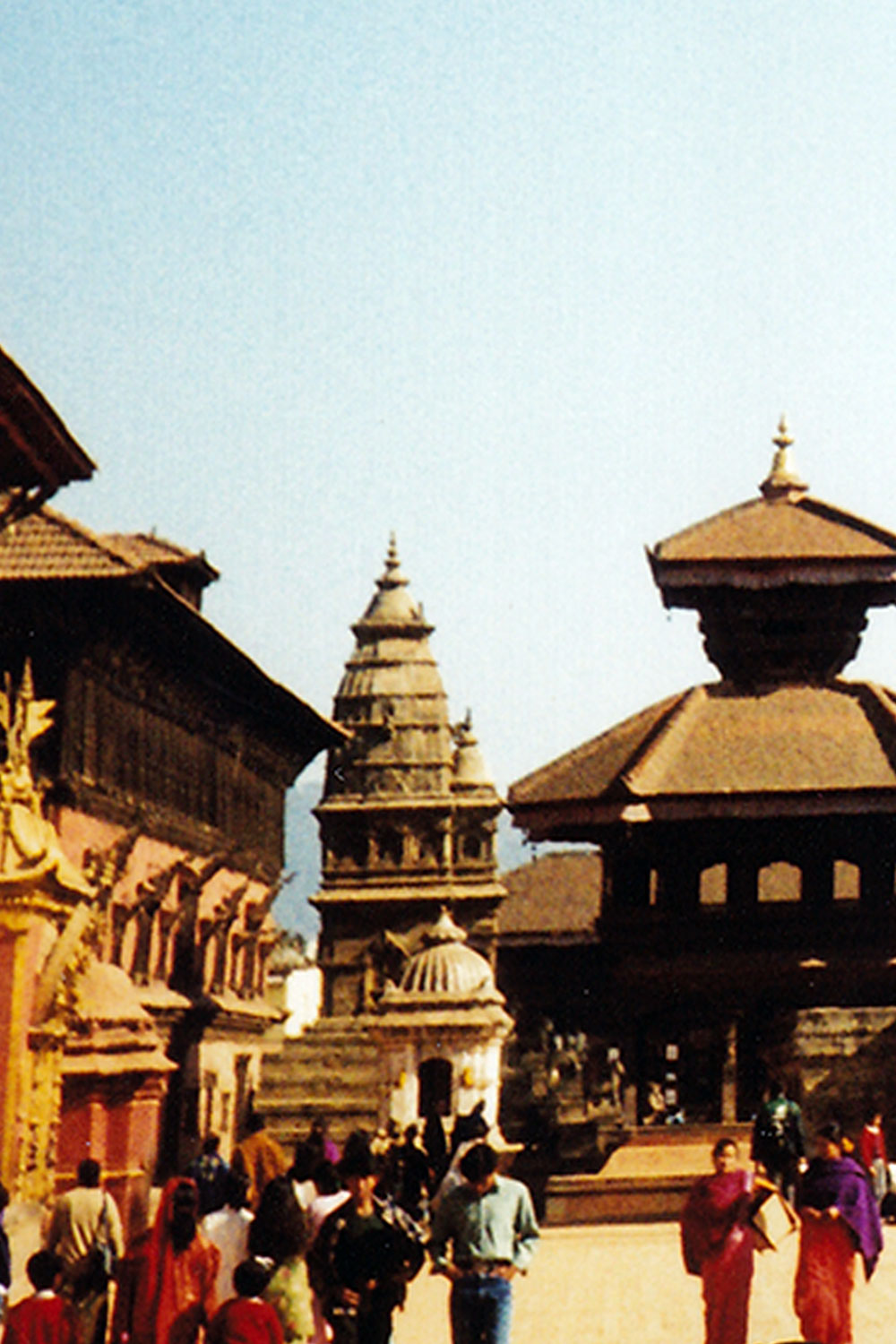 1.) Bhaktapur Durbar Square (Nepali: भक्तपुर दरबार
क्षेत्र) is a former royal palace complex located in Bhaktapur,
Nepal.
1.) Bhaktapur Durbar Square (Nepali: भक्तपुर दरबार
क्षेत्र) is a former royal palace complex located in Bhaktapur,
Nepal.
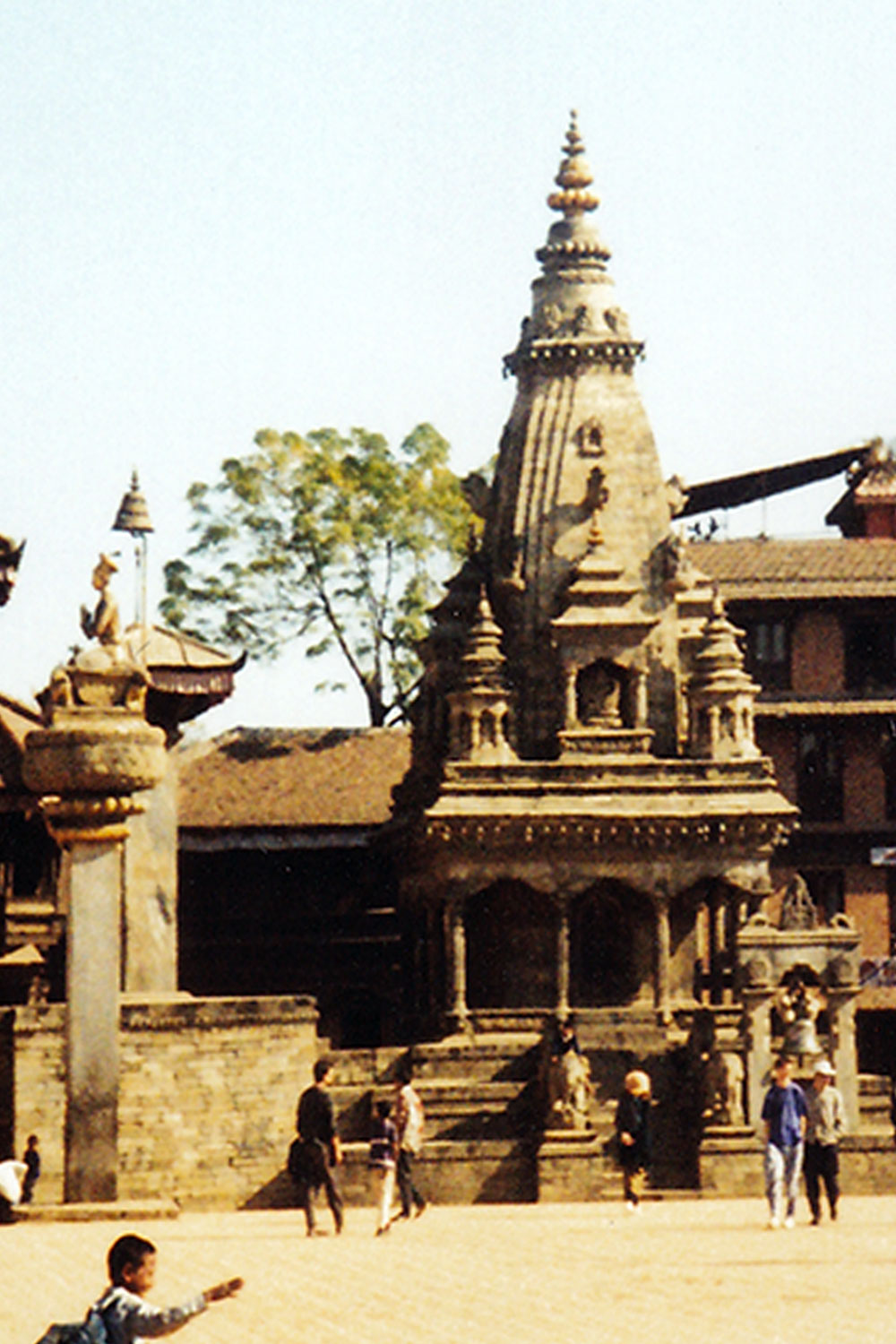 2.) It housed the Malla kings of Nepal from 14th to
15th century and the kings of the Kingdom of Bhaktapur from 15th
to late 18th century until the kingdom was conquered in 1769.
2.) It housed the Malla kings of Nepal from 14th to
15th century and the kings of the Kingdom of Bhaktapur from 15th
to late 18th century until the kingdom was conquered in 1769.
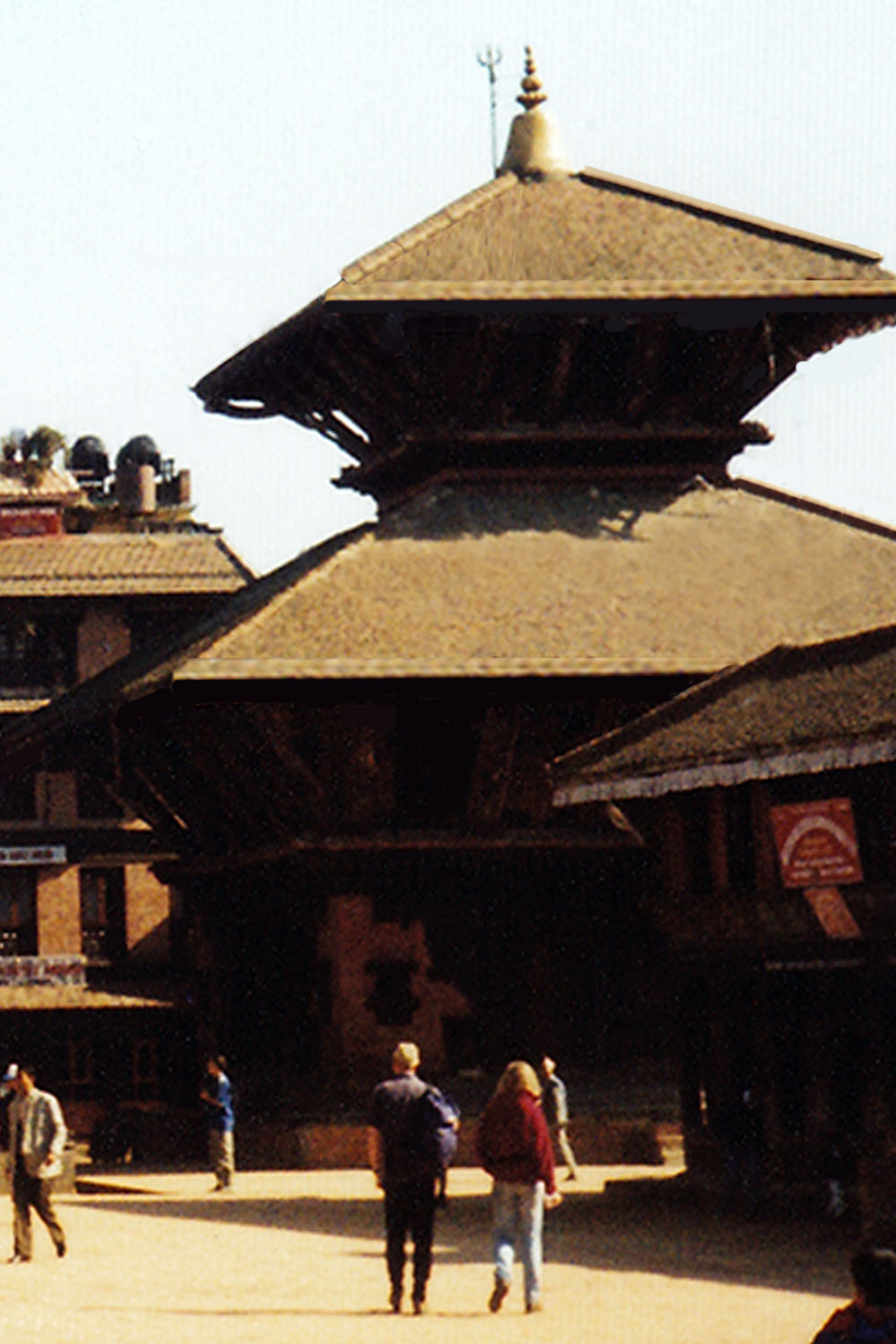 3.) The Durbar Square can also be found in
Kathmandu and Patan as well. The one in Bhaktapur is the biggest
and the grandest among the three
3.) The Durbar Square can also be found in
Kathmandu and Patan as well. The one in Bhaktapur is the biggest
and the grandest among the three
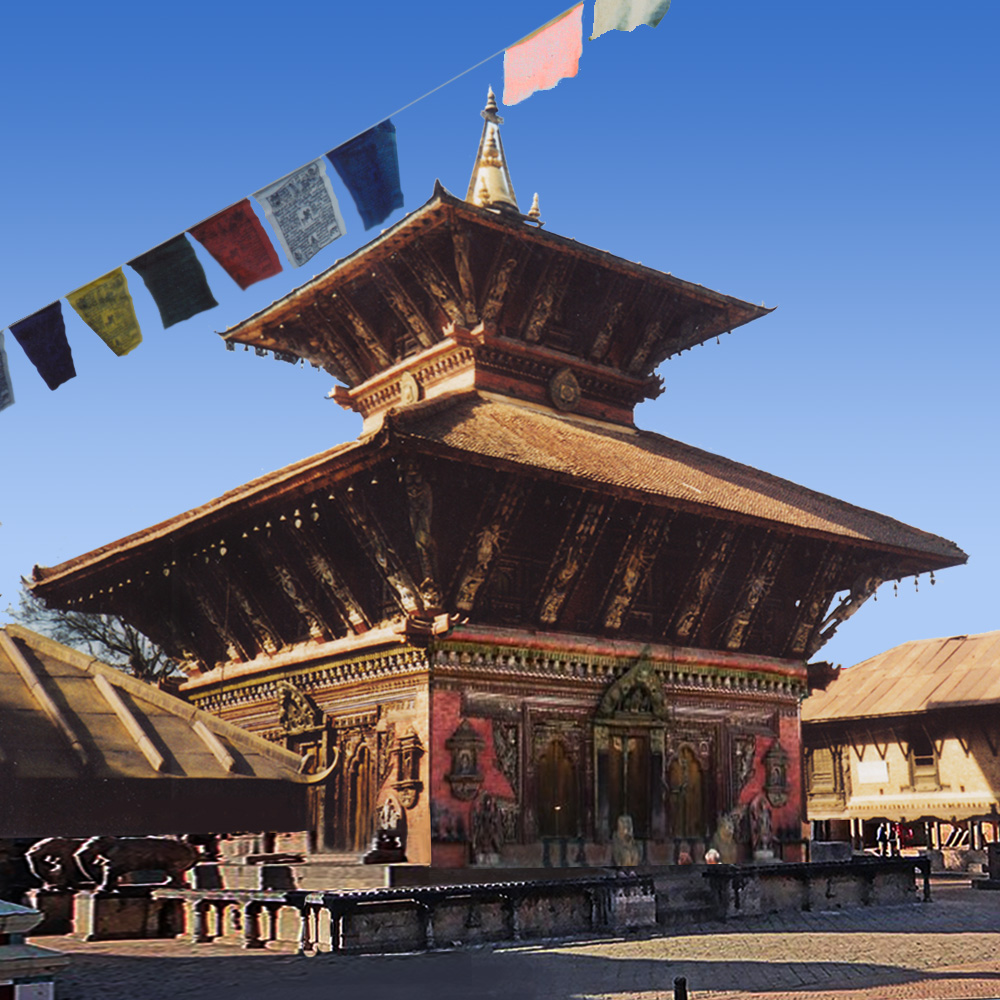 Changu Narayan Temple, considered the first pagoda
of Nepal dated 464 AD, became known as the valley's trademark
for the multiple-roofed pagoda.
Changu Narayan Temple, considered the first pagoda
of Nepal dated 464 AD, became known as the valley's trademark
for the multiple-roofed pagoda.
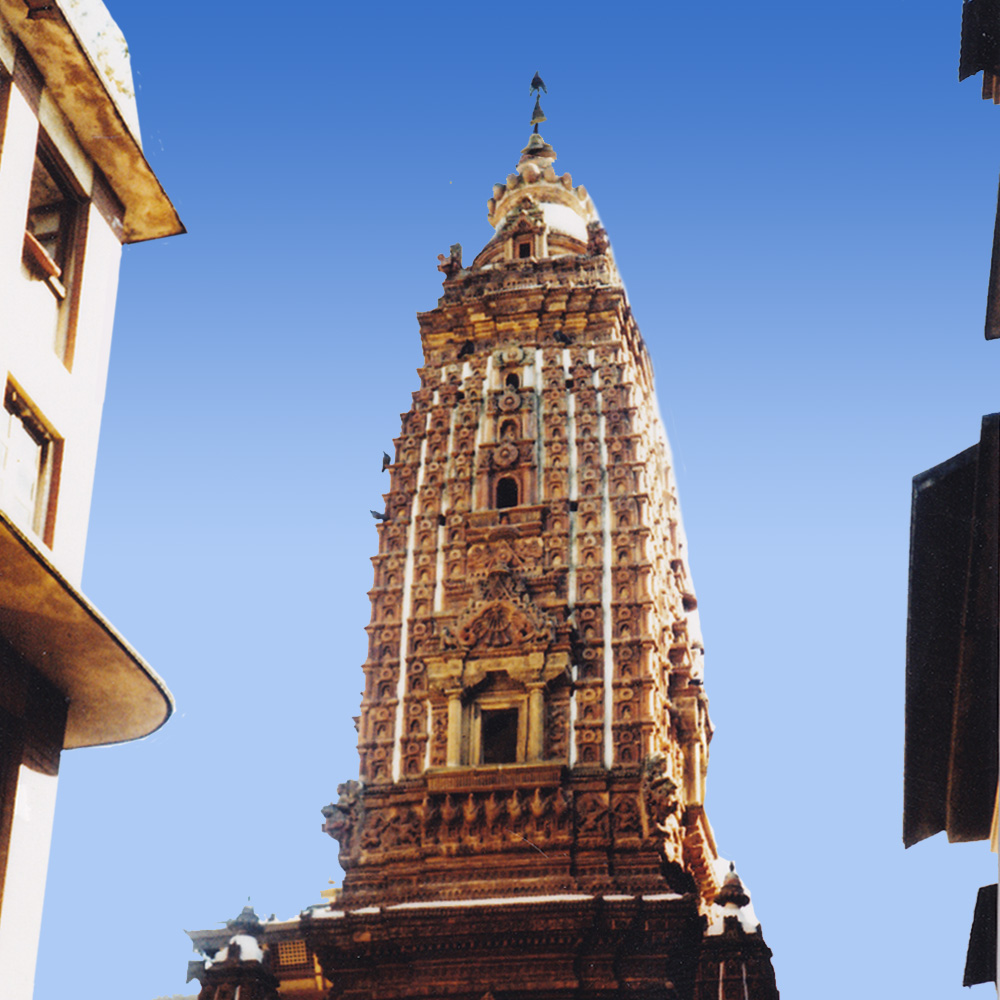 Siddhi Laxmi Temple (17th century) in Durbar
Square, Bhaktapur, Nepal
Siddhi Laxmi Temple (17th century) in Durbar
Square, Bhaktapur, Nepal
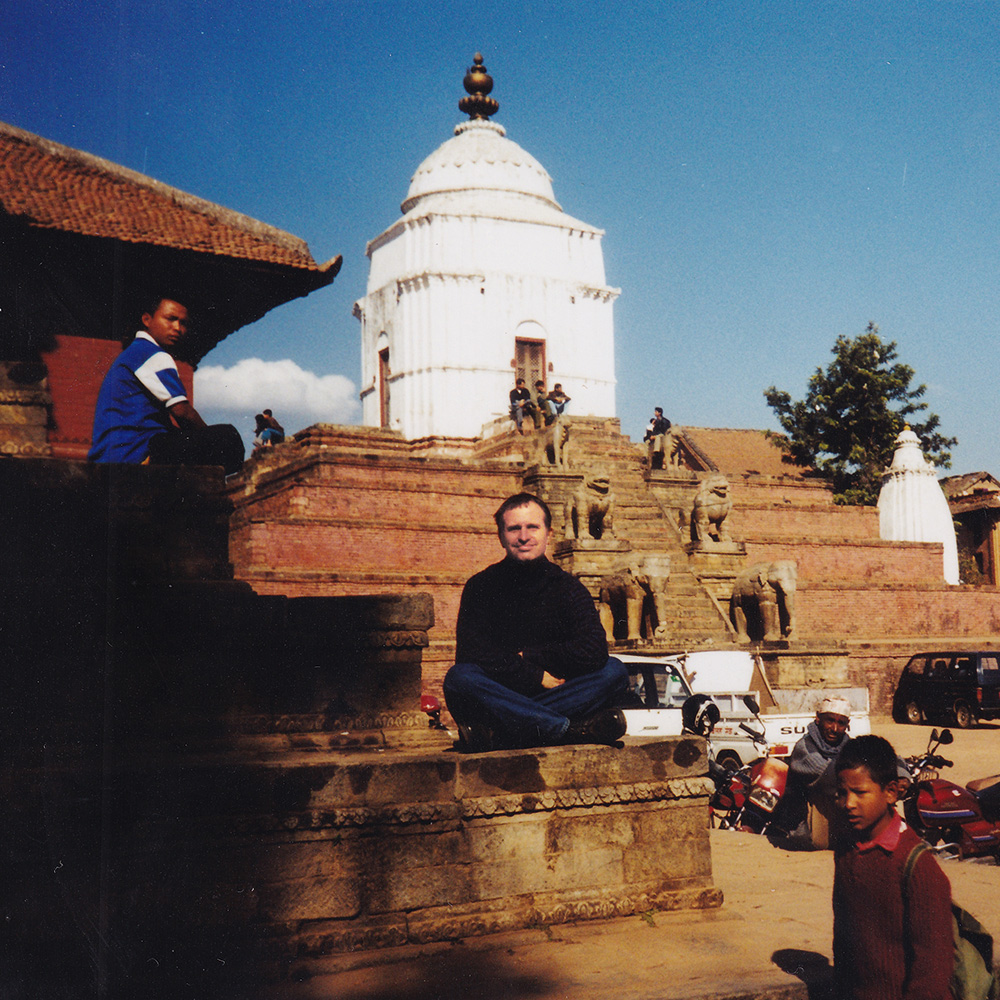 Fasidega Temple of Shiva in Durbar Square, made of
terracotta, Bhaktapur, Nepal.
Fasidega Temple of Shiva in Durbar Square, made of
terracotta, Bhaktapur, Nepal.
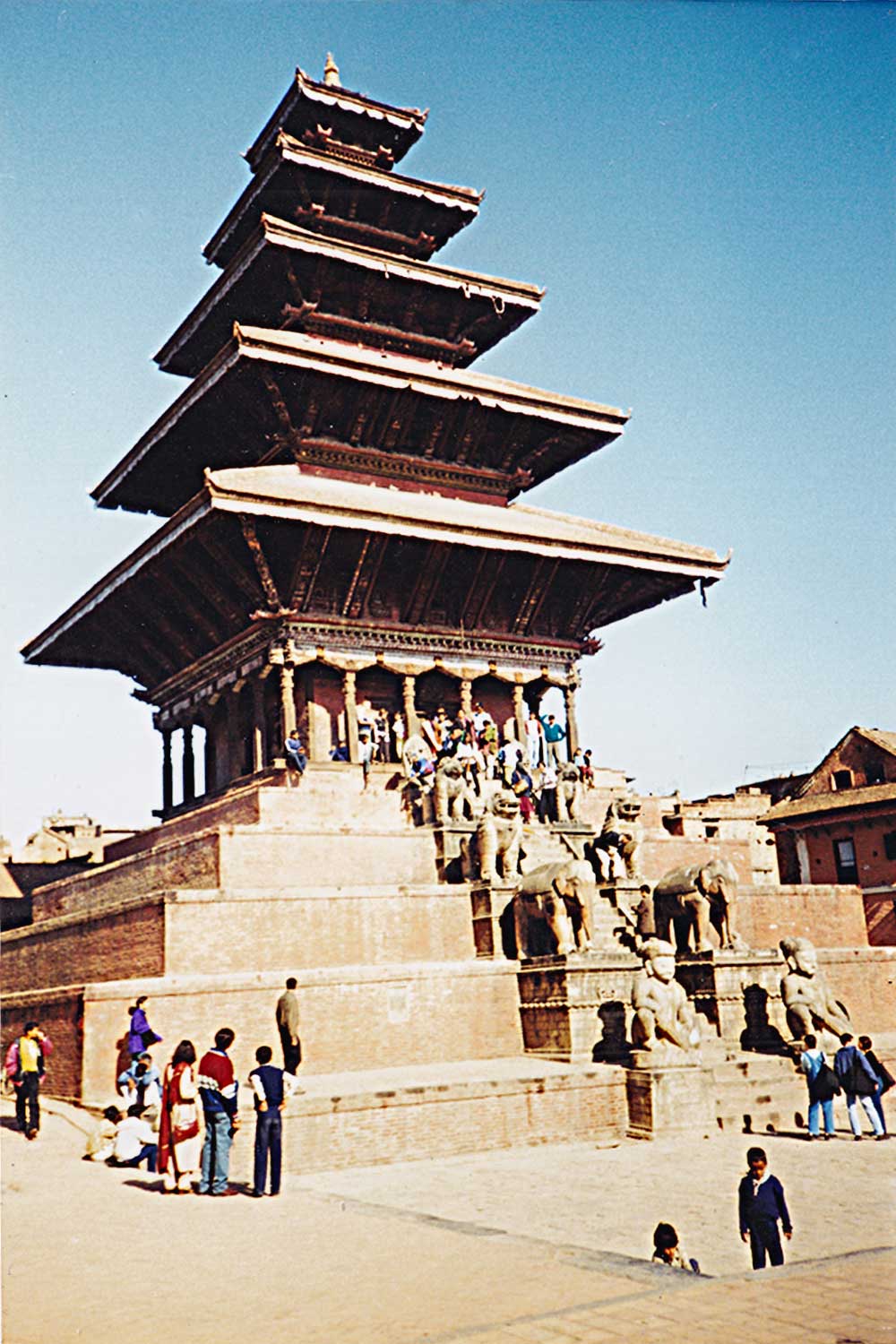 Nyatapola Temple, 5-story pagoda, located in
Bhaktapur, Nepal, erected in 1702 by Nepali King Bhupatindra
Malla, it is the Temple of Siddha Laxmi, the Hindu Goddess of
Prosperity.
Nyatapola Temple, 5-story pagoda, located in
Bhaktapur, Nepal, erected in 1702 by Nepali King Bhupatindra
Malla, it is the Temple of Siddha Laxmi, the Hindu Goddess of
Prosperity.
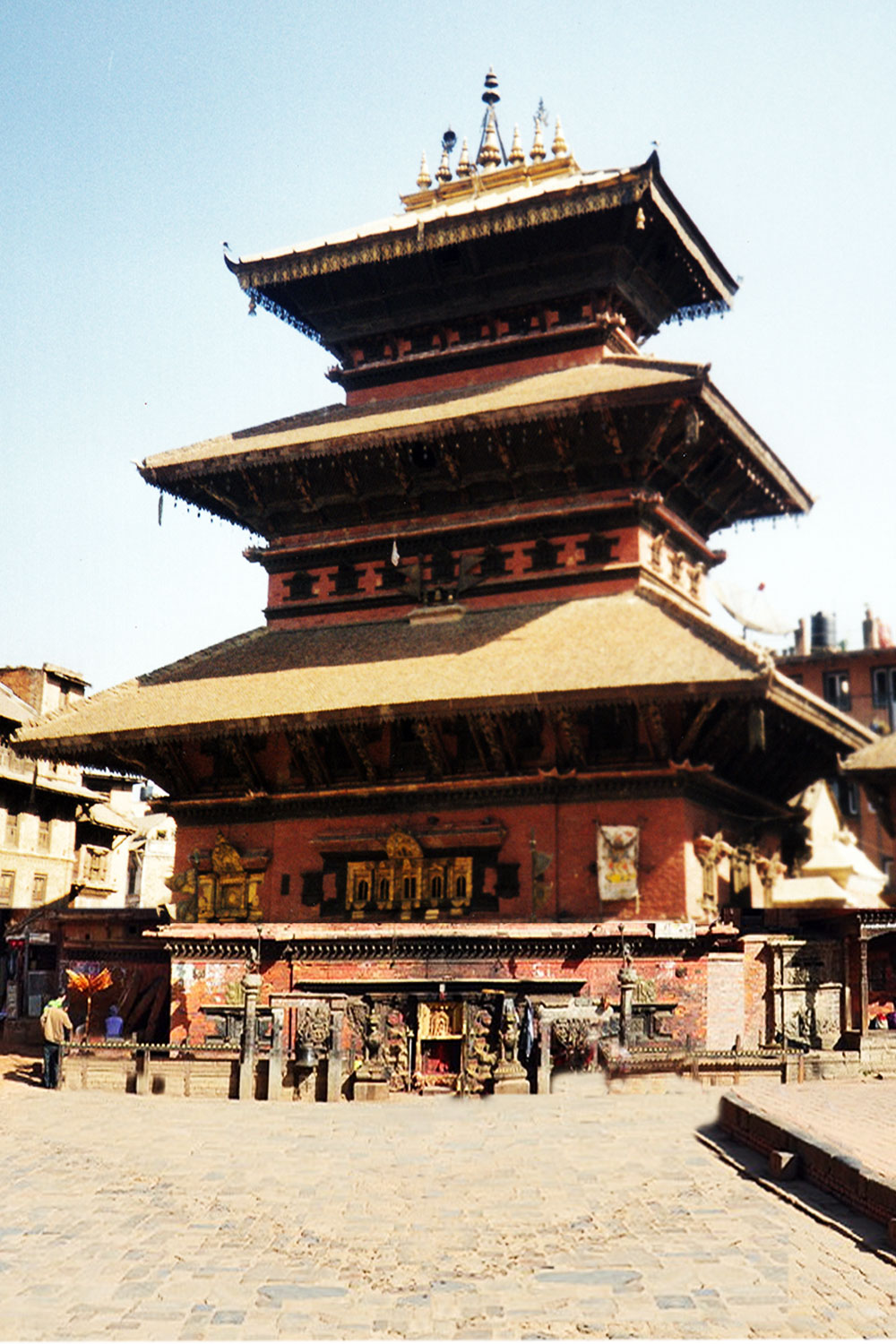 Bhairavnath 5-story Pagoda Temple in Bhaktapur
Durbar Square, is dedicated to Lord Shiva, built by King
Jagjjyoti Malla in 1614
Bhairavnath 5-story Pagoda Temple in Bhaktapur
Durbar Square, is dedicated to Lord Shiva, built by King
Jagjjyoti Malla in 1614
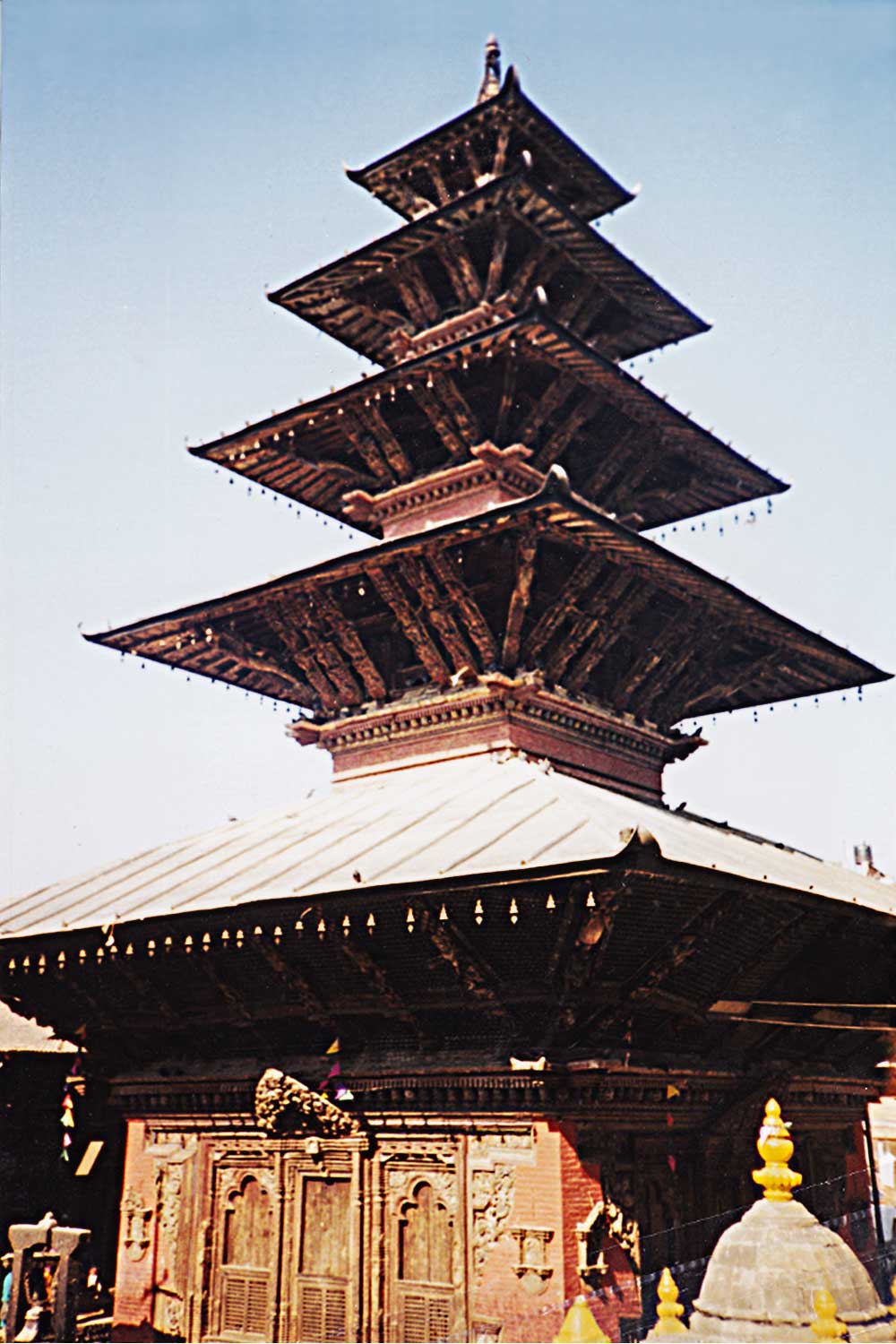 Kumbheshwar Pagoda Temple (Mahadev), is one of the
oldest Hindu temples in Nepal, part of Patan Durbar Square,
built in 1392 by King Jayasthiti Malla
Kumbheshwar Pagoda Temple (Mahadev), is one of the
oldest Hindu temples in Nepal, part of Patan Durbar Square,
built in 1392 by King Jayasthiti Malla
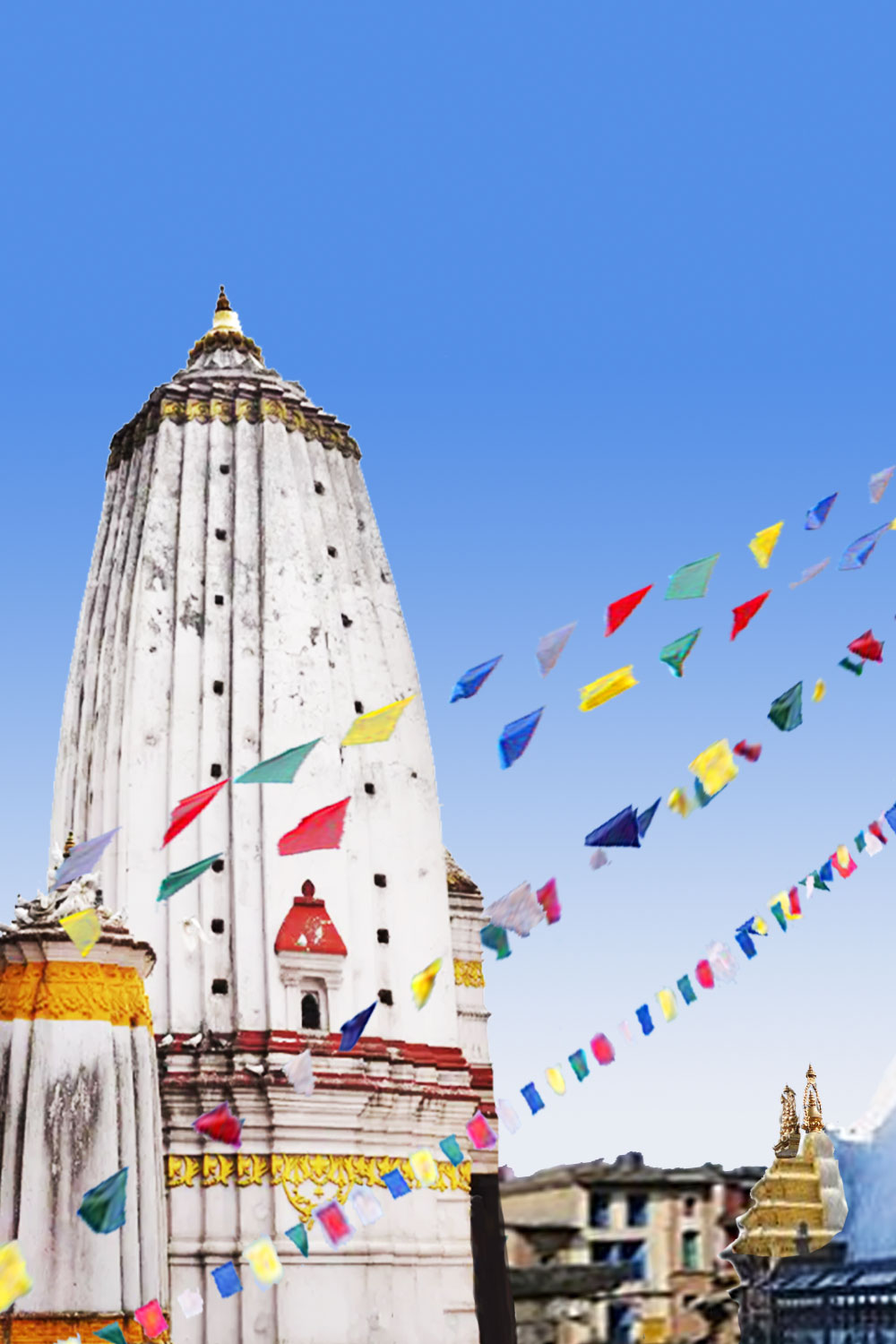 1.) Swayambhunath (means 'Sublime Trees') is
commonly referred to as “monkey temple” due to the abundance of
monkeys that live in the many varieties of trees found on the
hill
1.) Swayambhunath (means 'Sublime Trees') is
commonly referred to as “monkey temple” due to the abundance of
monkeys that live in the many varieties of trees found on the
hill
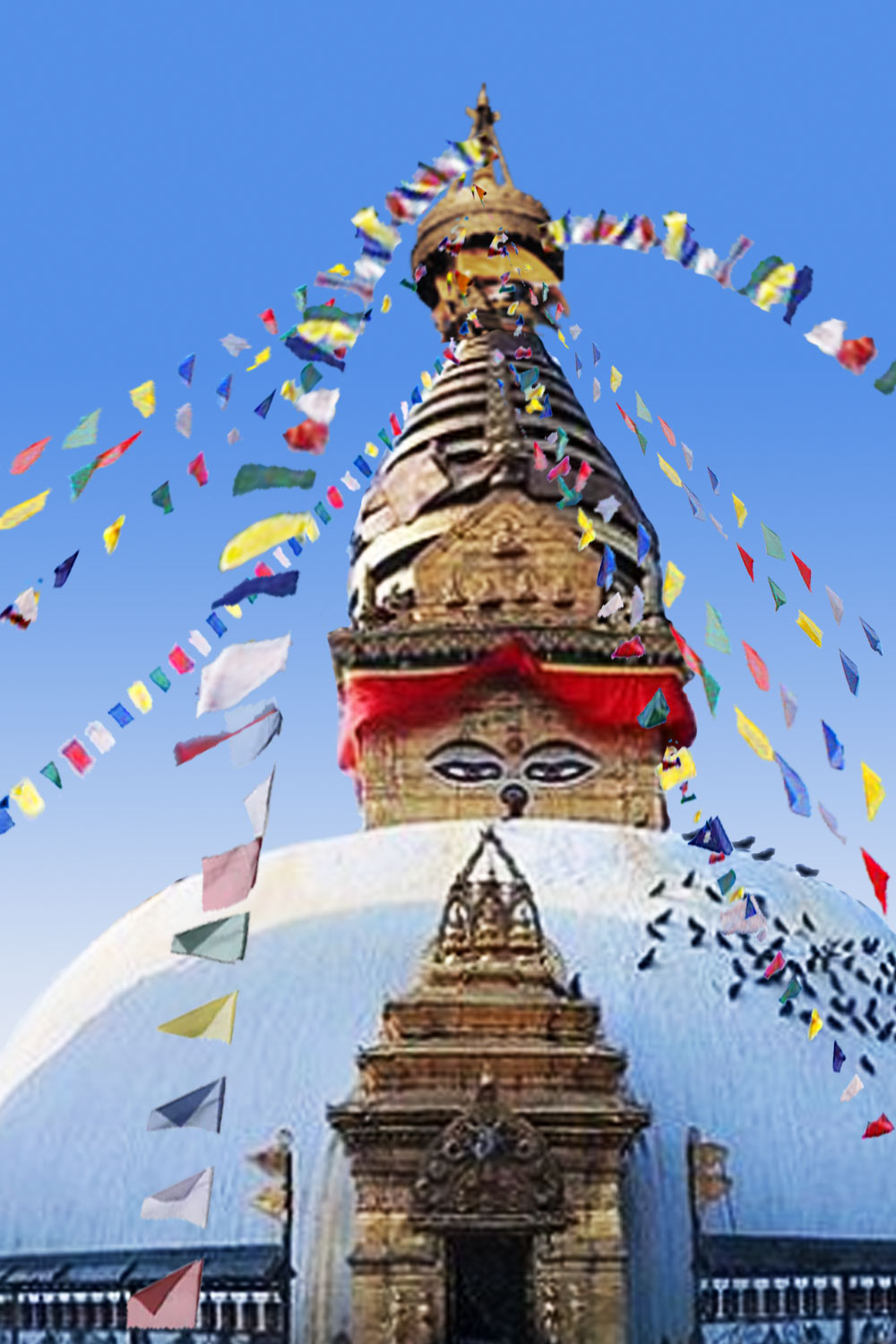 2.) Swayambhunath Stupa in Kathmandu, founded in
464 CE, is an temple complex atop a steep hill with a whopping
365 steps, the white on round dome base represents the earth and
the pair of eyes on the stupa mound represent wisdom and
compassion of the Buddha
2.) Swayambhunath Stupa in Kathmandu, founded in
464 CE, is an temple complex atop a steep hill with a whopping
365 steps, the white on round dome base represents the earth and
the pair of eyes on the stupa mound represent wisdom and
compassion of the Buddha
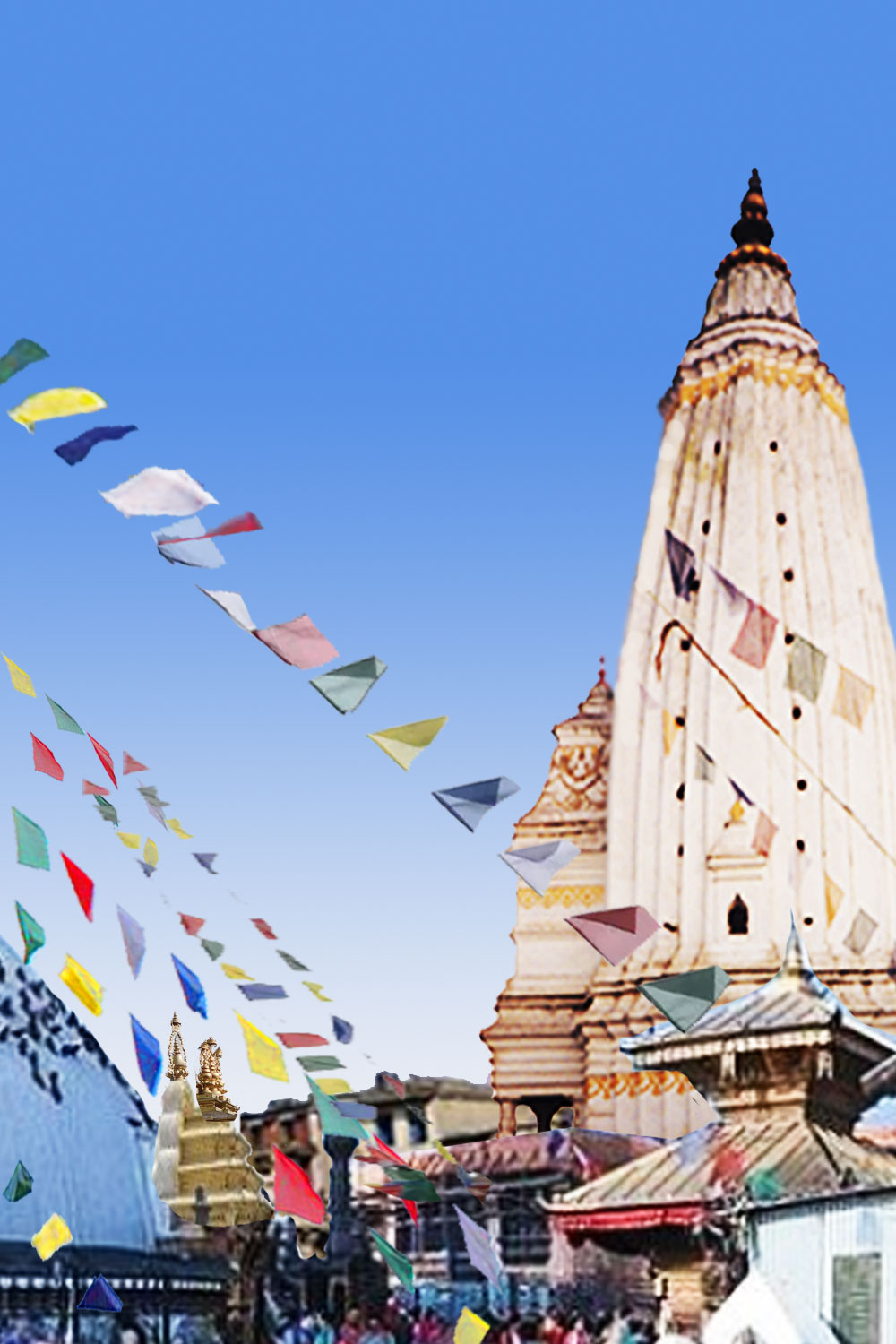 3.) The white tall spire temples on opposite sides
of the Stupa, Anantapur (left no.1) and Pratapur, (here no.3)
were erected by king Pratap Malla in 1646, both were damaged by
the 2015 Nepal earthquake, both have been completely restored
3.) The white tall spire temples on opposite sides
of the Stupa, Anantapur (left no.1) and Pratapur, (here no.3)
were erected by king Pratap Malla in 1646, both were damaged by
the 2015 Nepal earthquake, both have been completely restored
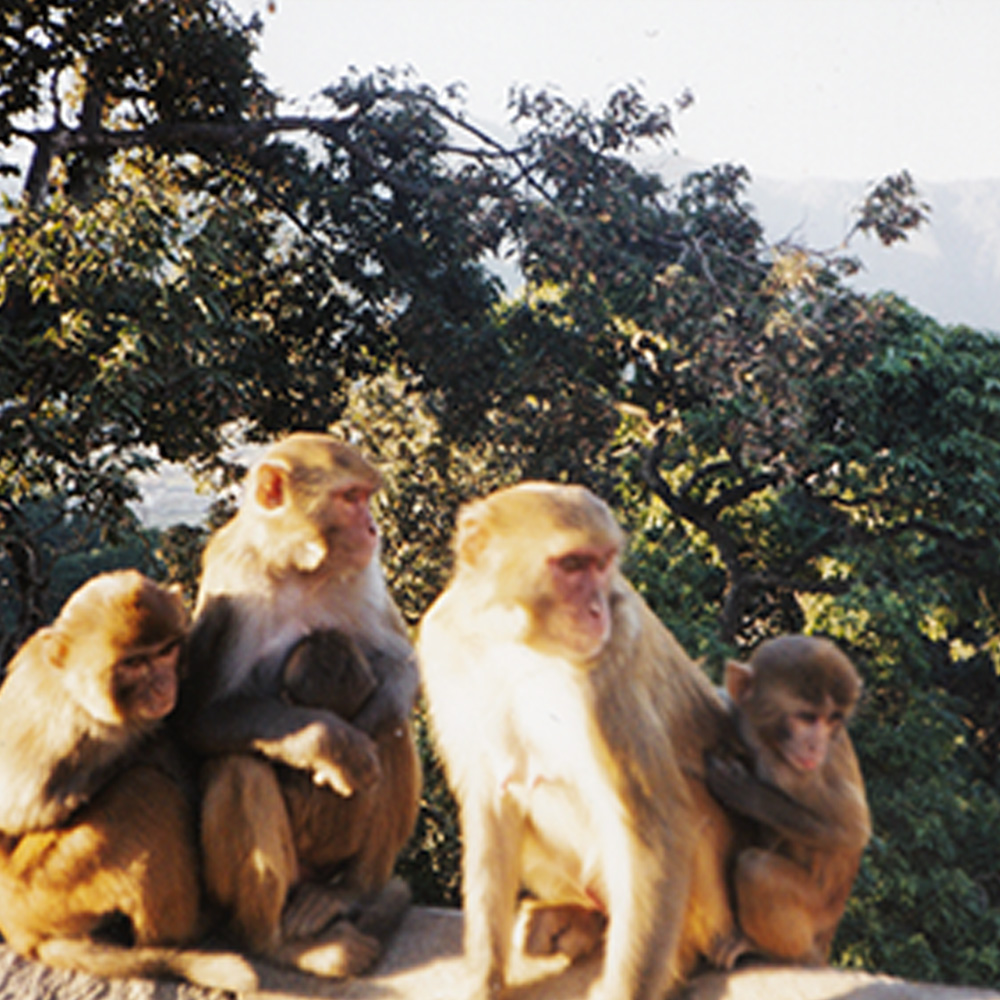 4.) The Swayambhunath Temple monkeys are Arunachal
macaque (Macaca munzala) is native to Eastern Himalayas of
Bhutan, Nepal, China and India
4.) The Swayambhunath Temple monkeys are Arunachal
macaque (Macaca munzala) is native to Eastern Himalayas of
Bhutan, Nepal, China and India
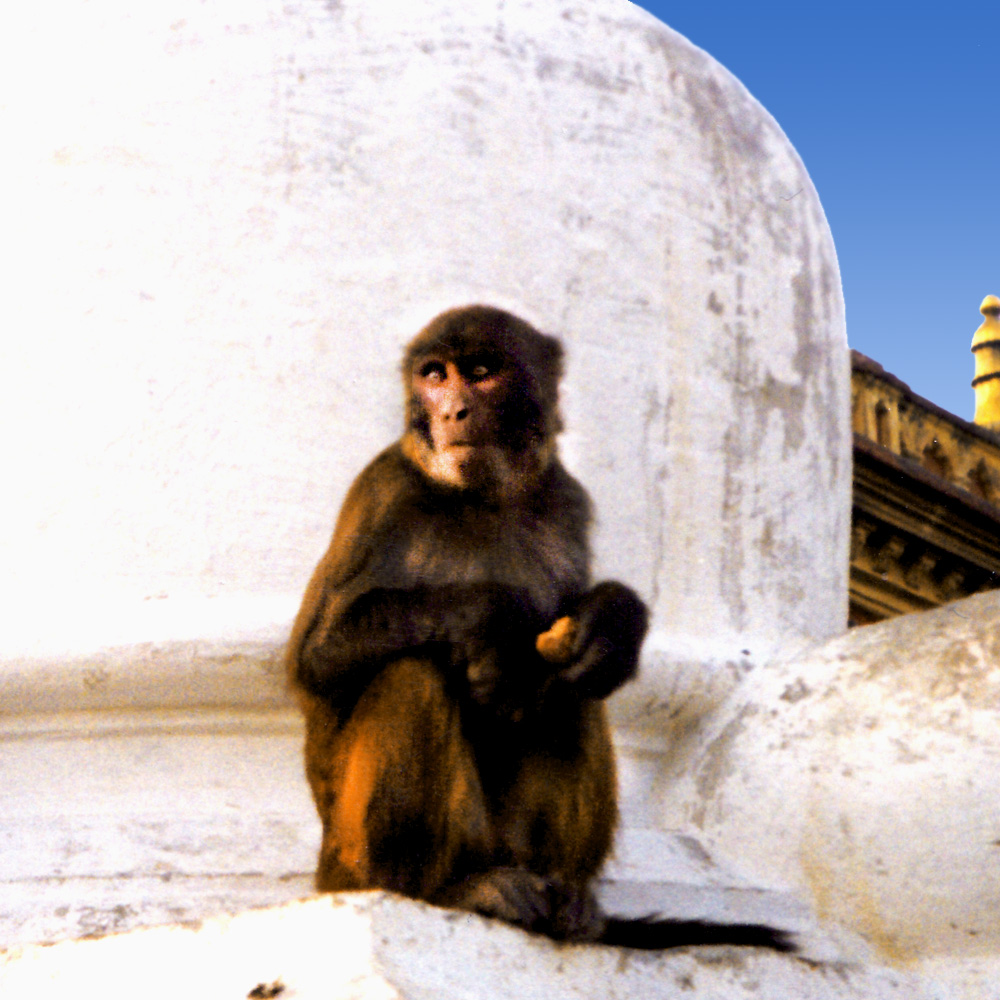 5.) The Arunachal macaque is a relatively large
brown primate with a short tail. They live at high altitudes
above 2000 m (6,500 ft) to 3500 m (11,500 ft) above sea level,
making it one of the highest-dwelling primates
5.) The Arunachal macaque is a relatively large
brown primate with a short tail. They live at high altitudes
above 2000 m (6,500 ft) to 3500 m (11,500 ft) above sea level,
making it one of the highest-dwelling primates
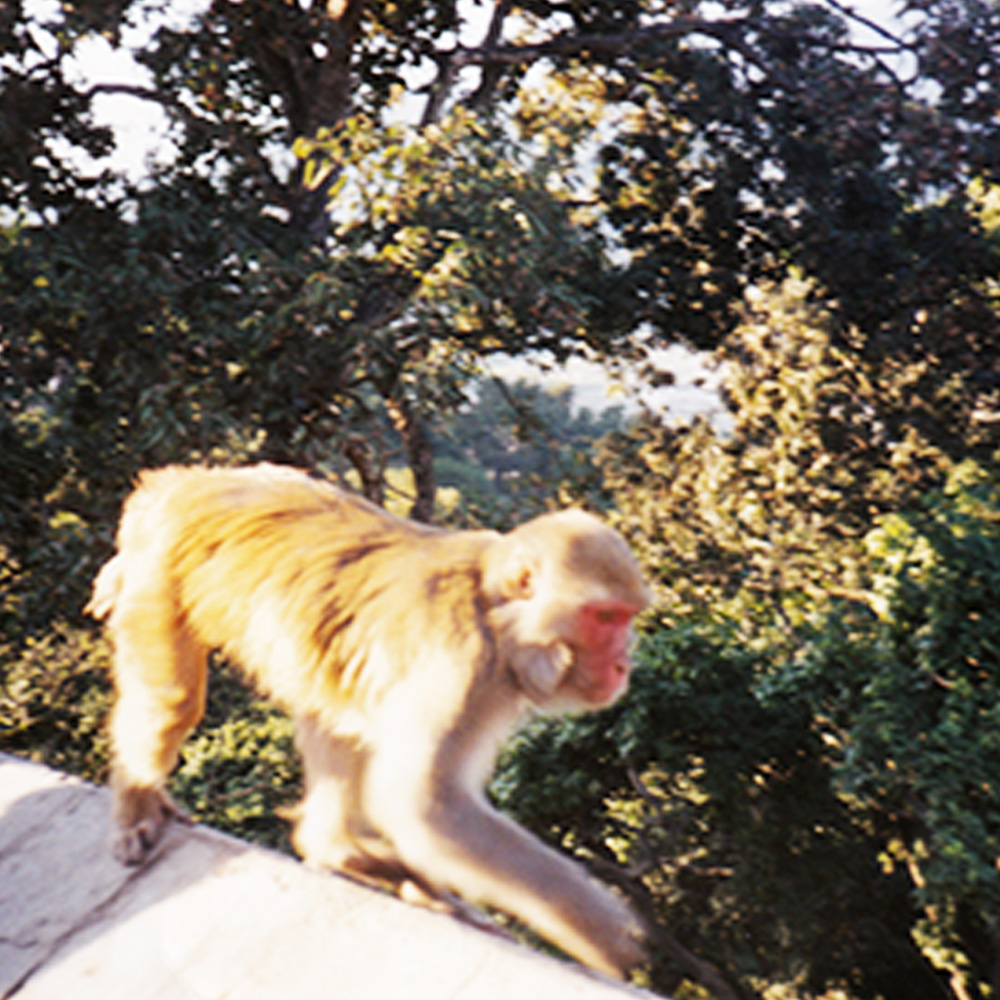 6.) The Arunachal macaque species name comes from
mun zala, literally meaning “deep forest monkey”
6.) The Arunachal macaque species name comes from
mun zala, literally meaning “deep forest monkey”
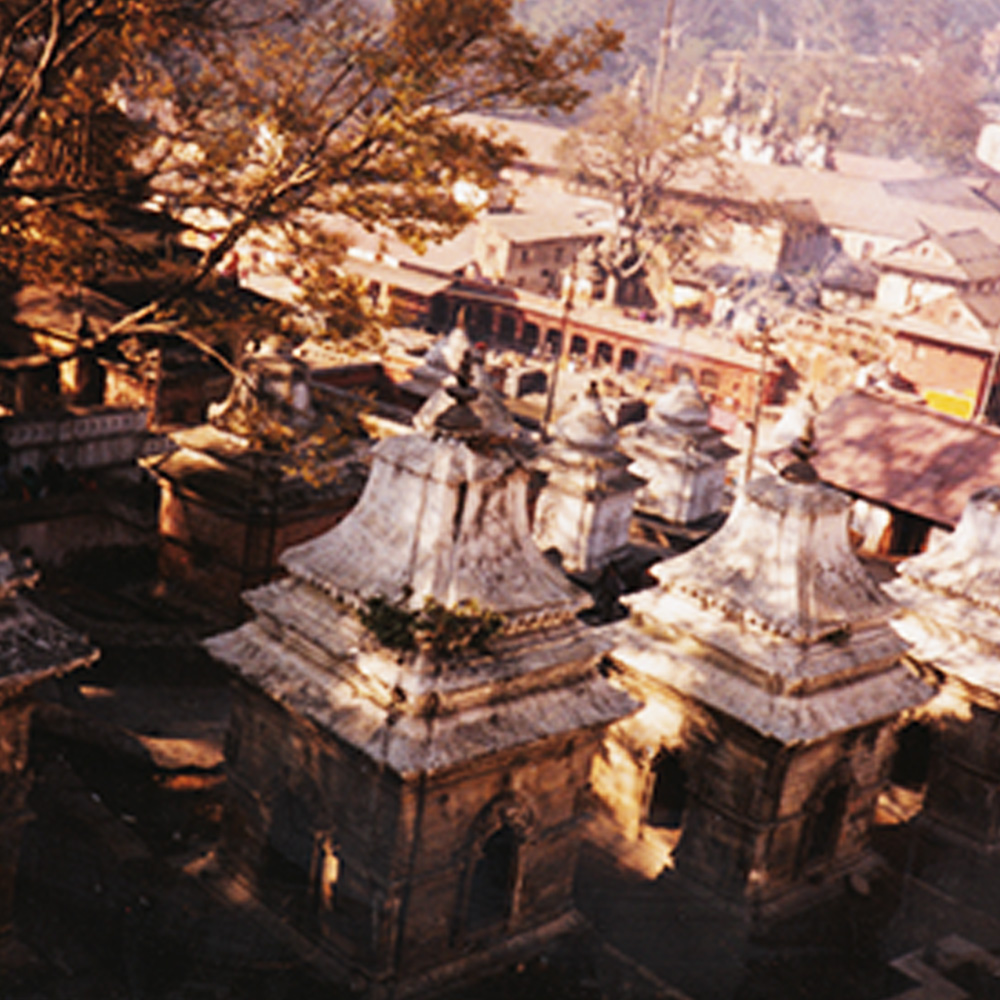 The Pashupatinath Temple, a Hindu temple dedicated
to Pashupati, a form of Shiva. It is located in Kathmandu, Nepal
near the Bagmati River.
The Pashupatinath Temple, a Hindu temple dedicated
to Pashupati, a form of Shiva. It is located in Kathmandu, Nepal
near the Bagmati River.
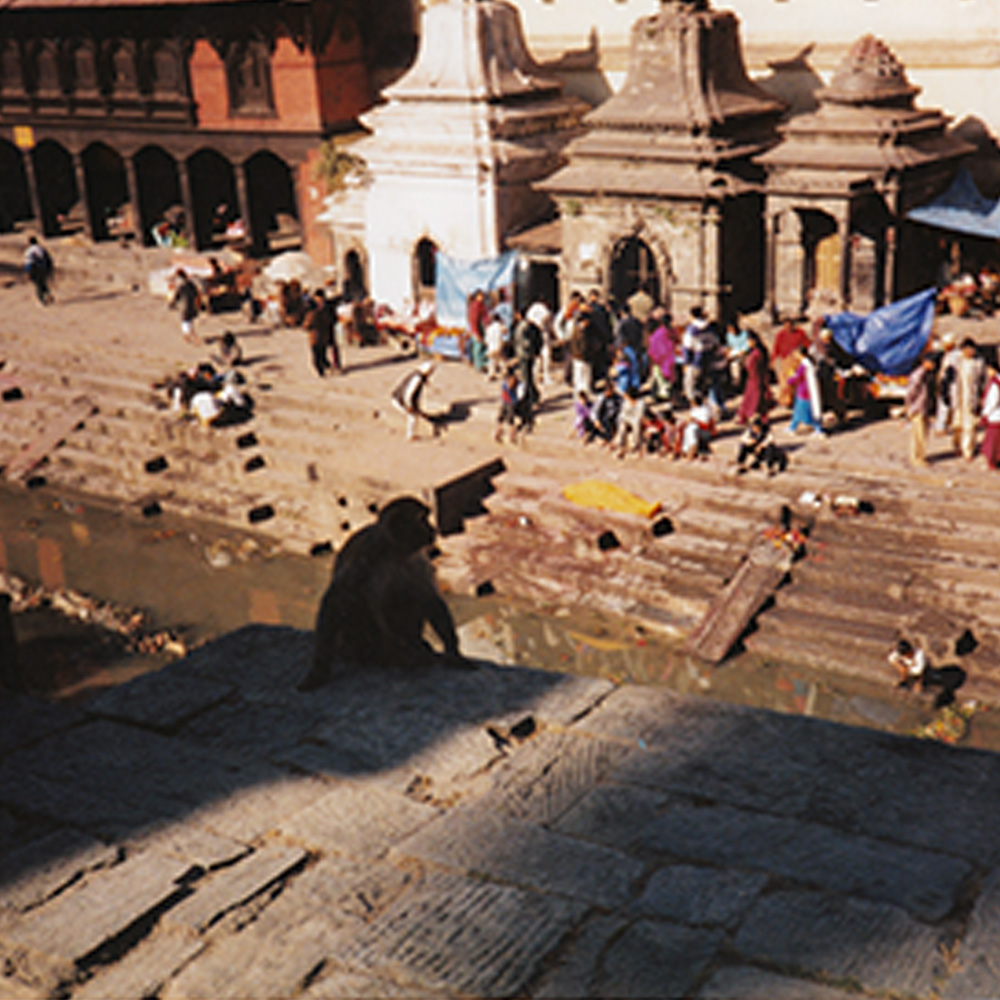 Pashupatinath, Hindu temple on the banks of the
Bagmati River, built in 1692 CE. classified as a World Heritage
Site, 1979, an "extensive Hindu temple precinct" Kathmandu,
Nepal
Pashupatinath, Hindu temple on the banks of the
Bagmati River, built in 1692 CE. classified as a World Heritage
Site, 1979, an "extensive Hindu temple precinct" Kathmandu,
Nepal
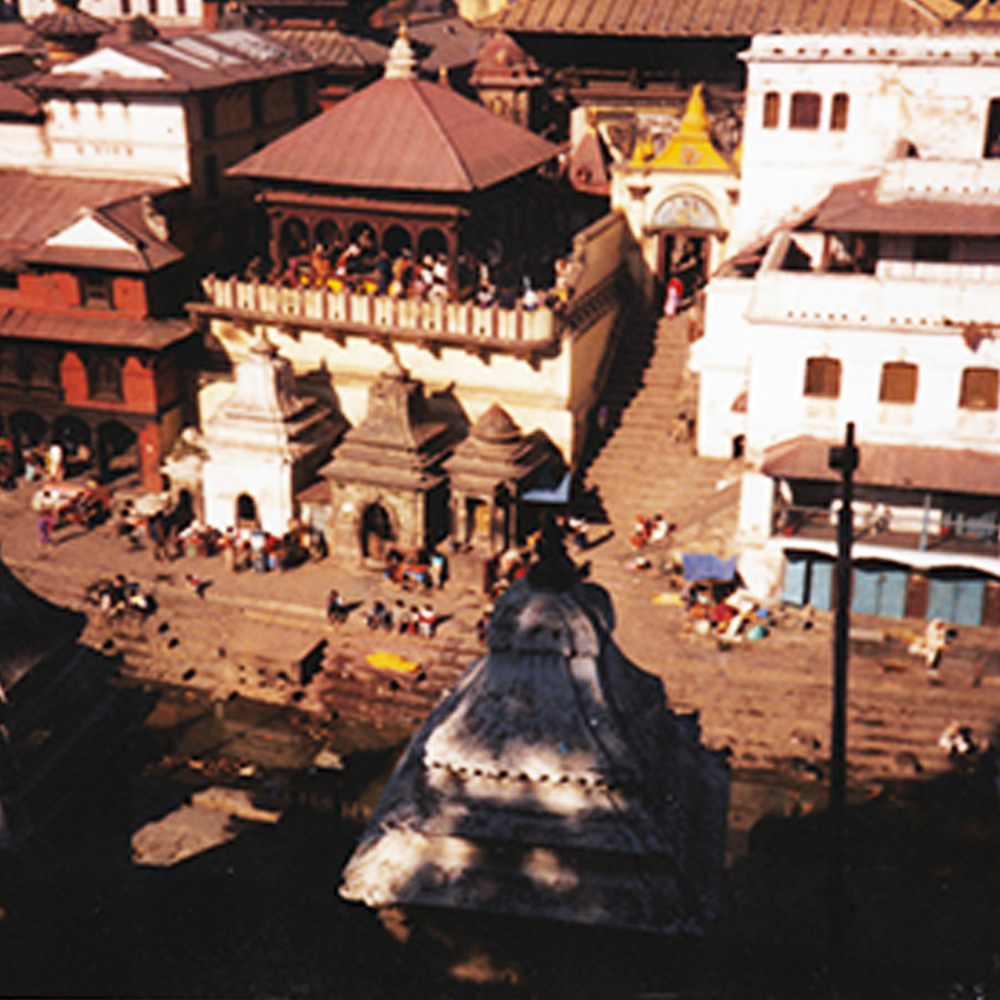 Pashupatinath Temple, has a "sprawling collection
of temples, ashrams, images and inscriptions raised over the
centuries along the banks of the sacred Bagmati river",
Pashupatinath Temple, has a "sprawling collection
of temples, ashrams, images and inscriptions raised over the
centuries along the banks of the sacred Bagmati river",
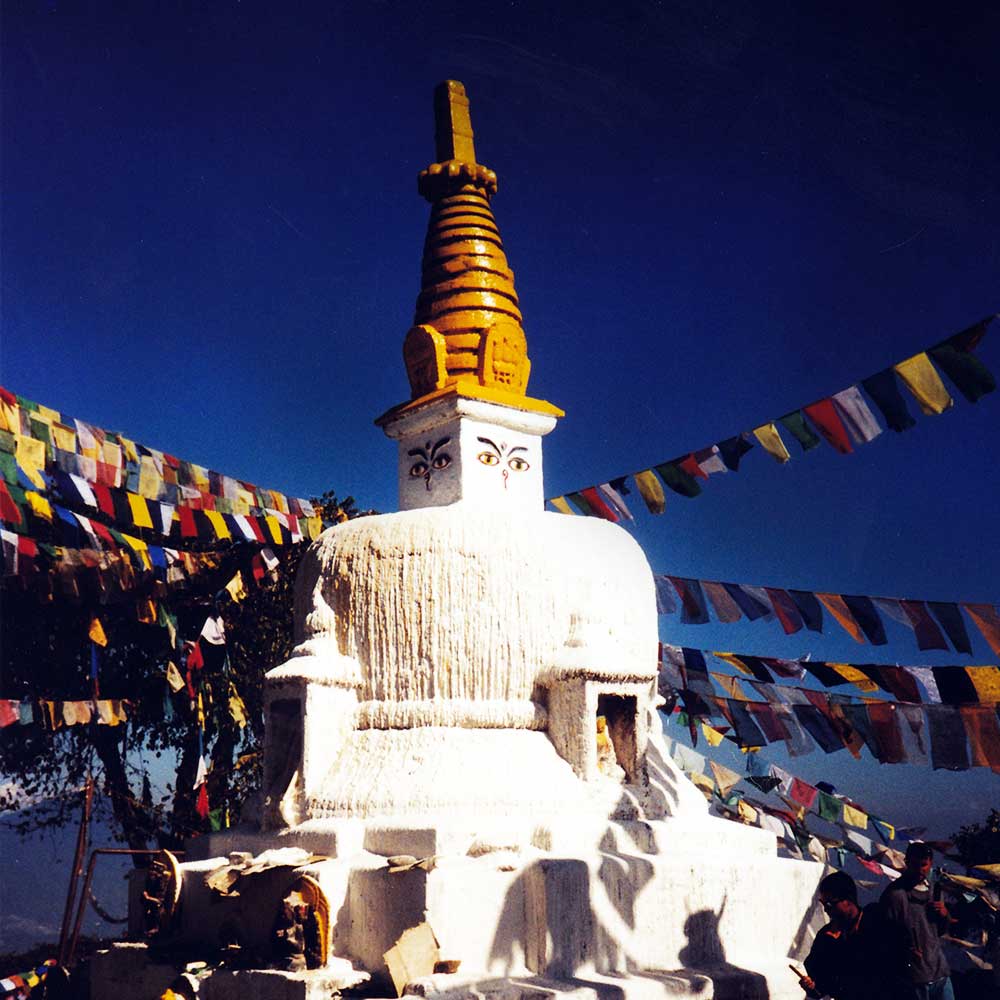 1.) Nagarjun Hill View Point Hike Tour, Nagarjun is
the nearest hill site of the Kathmandu Valley covered by thick
forest with historical as well as natural settings. Situated
north-west of Kathmandu it’s a part of Shivapuri National Park
1.) Nagarjun Hill View Point Hike Tour, Nagarjun is
the nearest hill site of the Kathmandu Valley covered by thick
forest with historical as well as natural settings. Situated
north-west of Kathmandu it’s a part of Shivapuri National Park
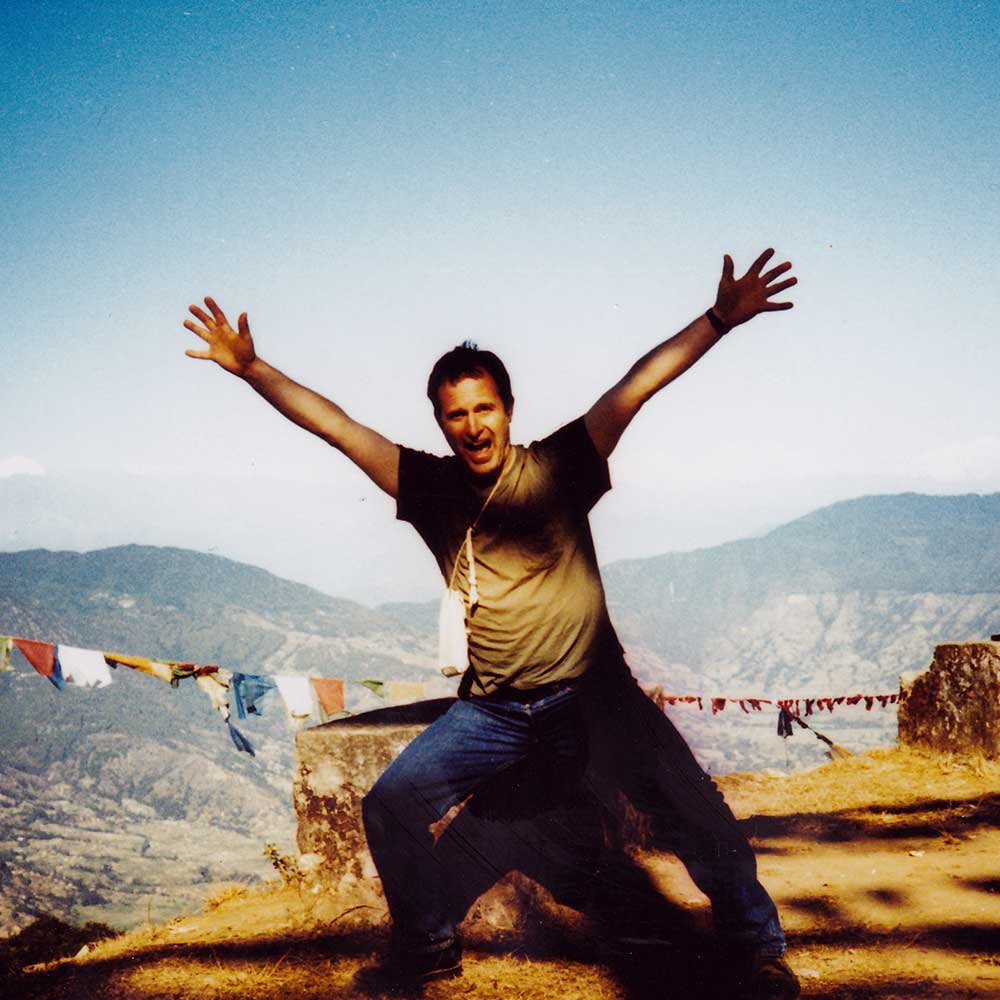 2.) It's a 2 hour or more hike up 7,000 feet to the
top of Nagarjuna hill the trail passes through Raniban (Queen of
Forest) where you find a well-known sacred Buddhist stupa.
2.) It's a 2 hour or more hike up 7,000 feet to the
top of Nagarjuna hill the trail passes through Raniban (Queen of
Forest) where you find a well-known sacred Buddhist stupa.
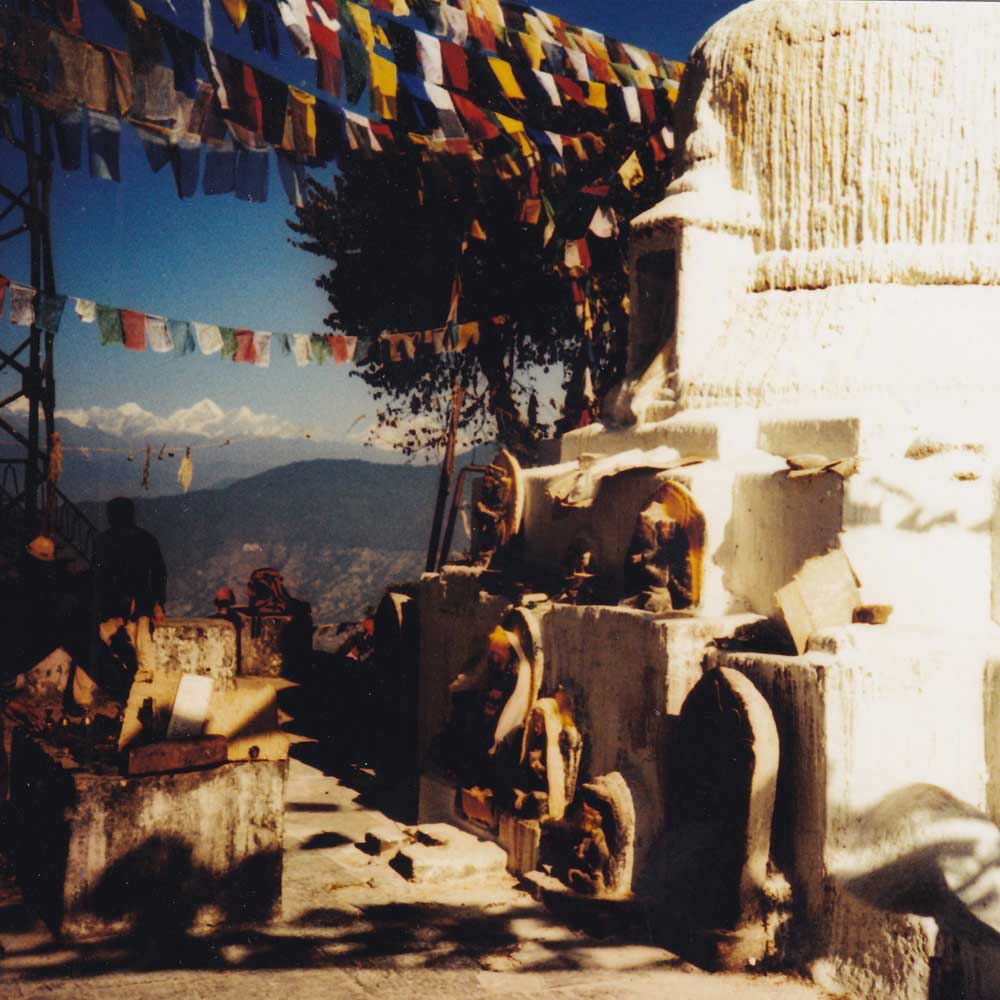 3.) Nagarjun hill's main attraction is the Jamacho
view point (2128 m) or 7,000 feet that has spectacular Himalayan
scenery and views of the Kathmandu valley
3.) Nagarjun hill's main attraction is the Jamacho
view point (2128 m) or 7,000 feet that has spectacular Himalayan
scenery and views of the Kathmandu valley
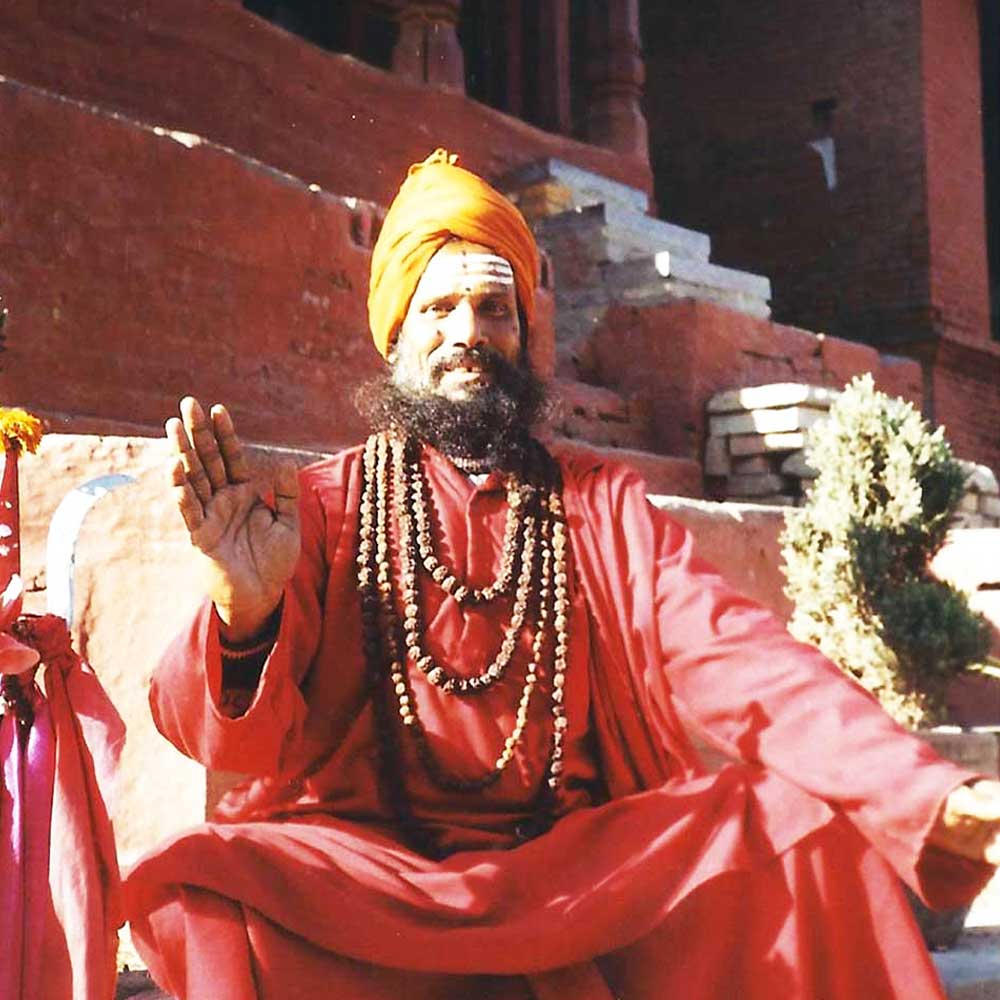 The holy men of Kathmandu known as Sadhu is solely
dedicated to achieving the fourth and final Hindu goal of life,
moksha (liberation), through meditation and contemplation of
Brahman.
The holy men of Kathmandu known as Sadhu is solely
dedicated to achieving the fourth and final Hindu goal of life,
moksha (liberation), through meditation and contemplation of
Brahman.
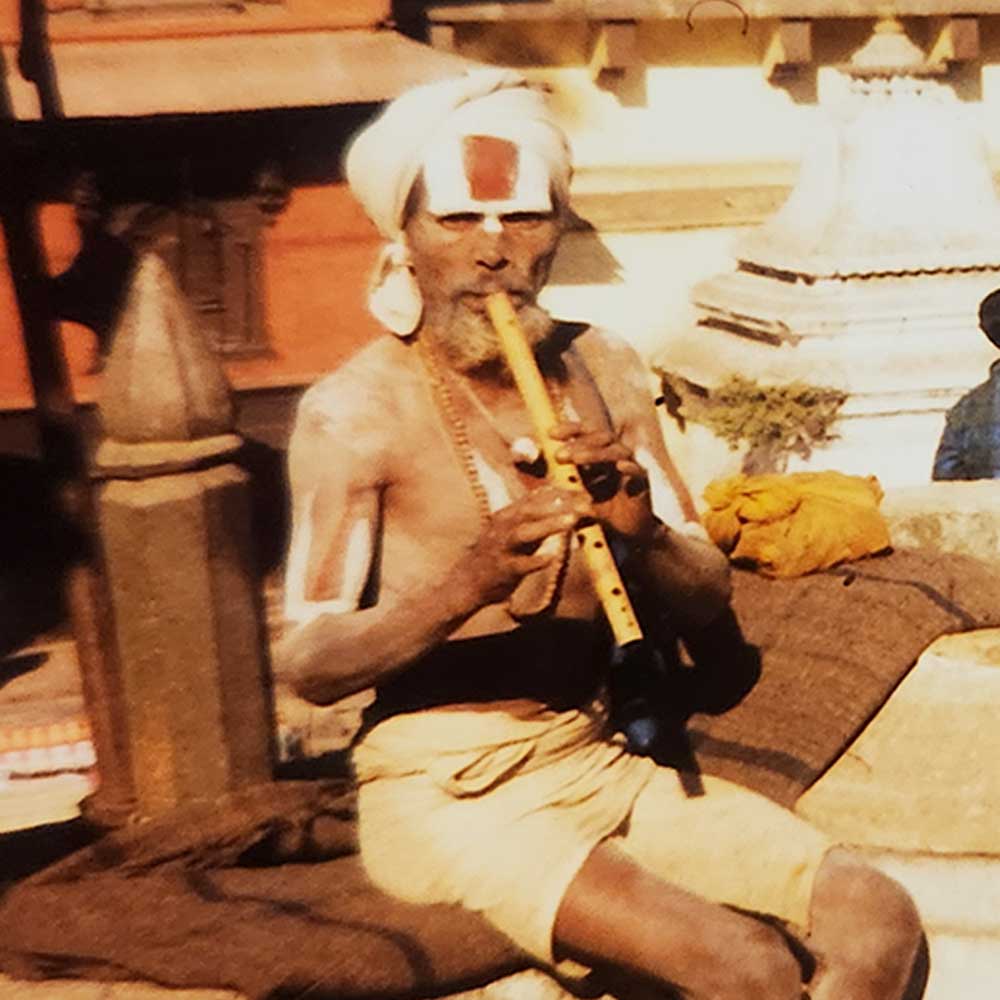 The holy men of Kathmandu (Sadhus)often wear
ochre-colored clothing, symbolizing renunciation with
traditional painted face
The holy men of Kathmandu (Sadhus)often wear
ochre-colored clothing, symbolizing renunciation with
traditional painted face
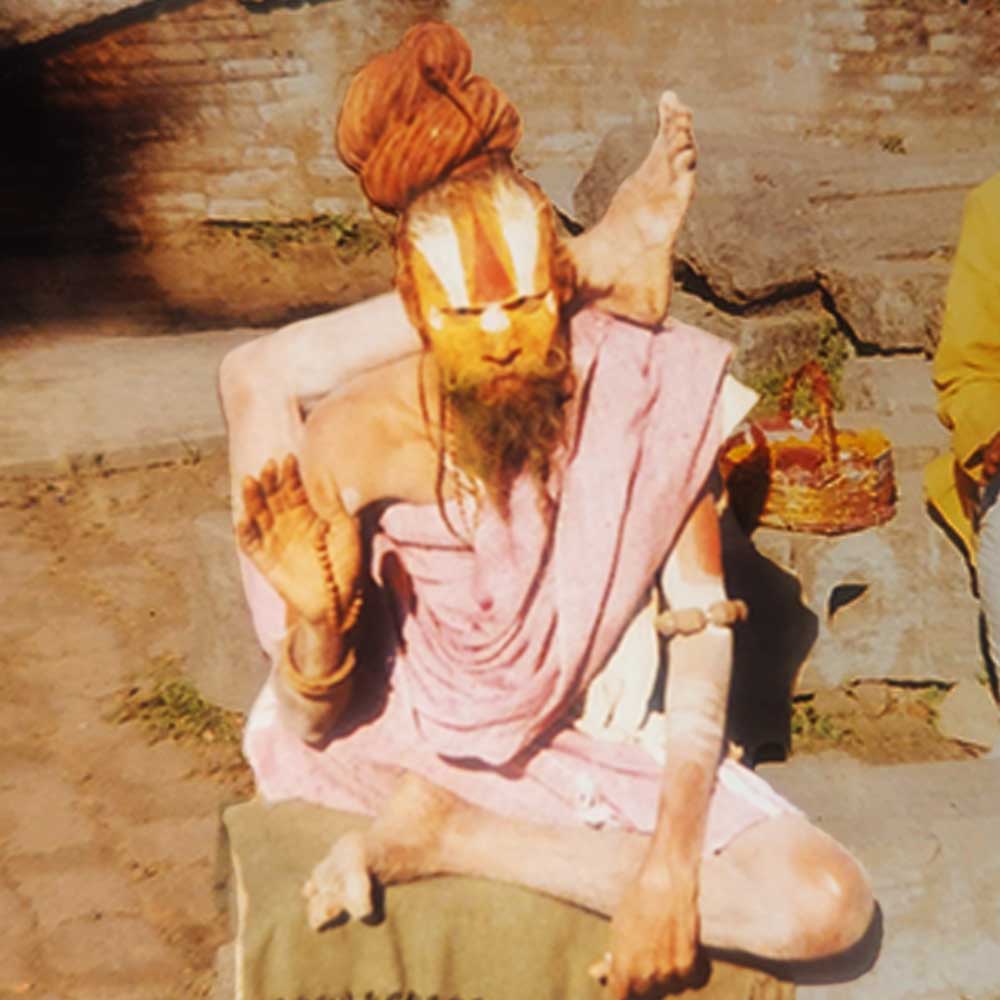 Wandering through the cities and forests the holy
men (Sadhus) have left all materialistic pleasures behind to
live a life devoted to God
Wandering through the cities and forests the holy
men (Sadhus) have left all materialistic pleasures behind to
live a life devoted to God





























































































